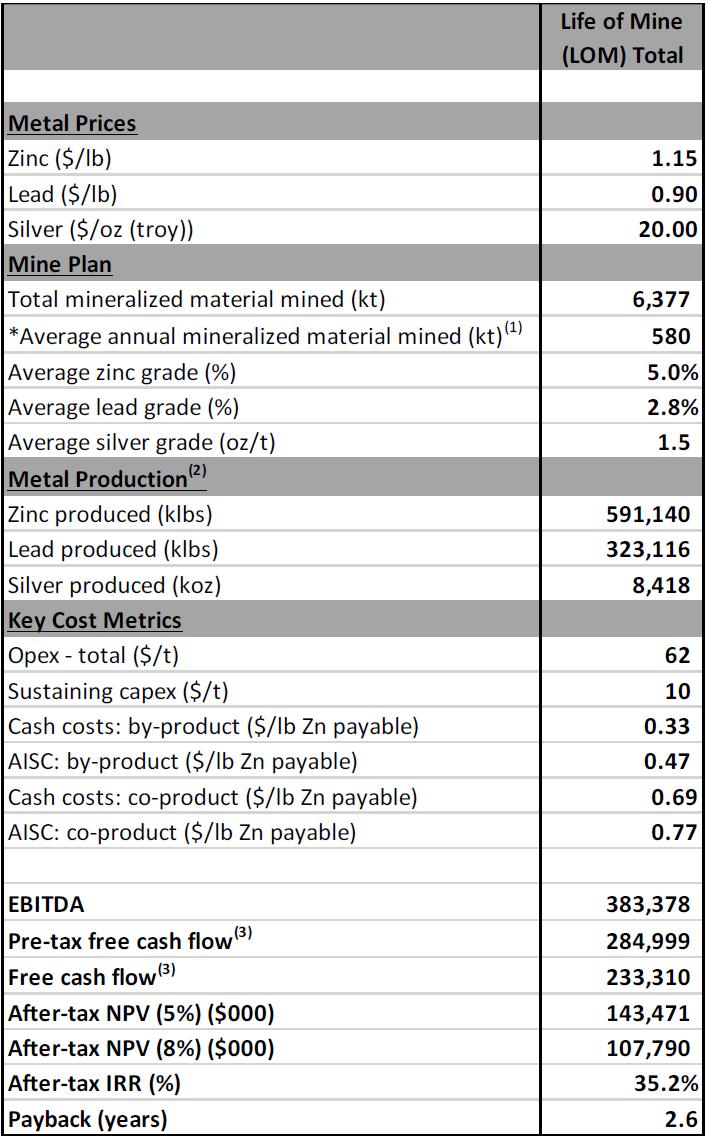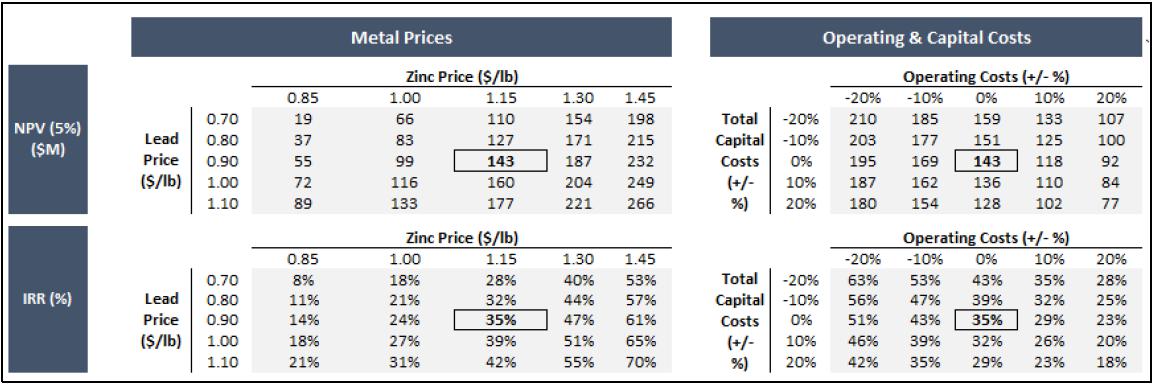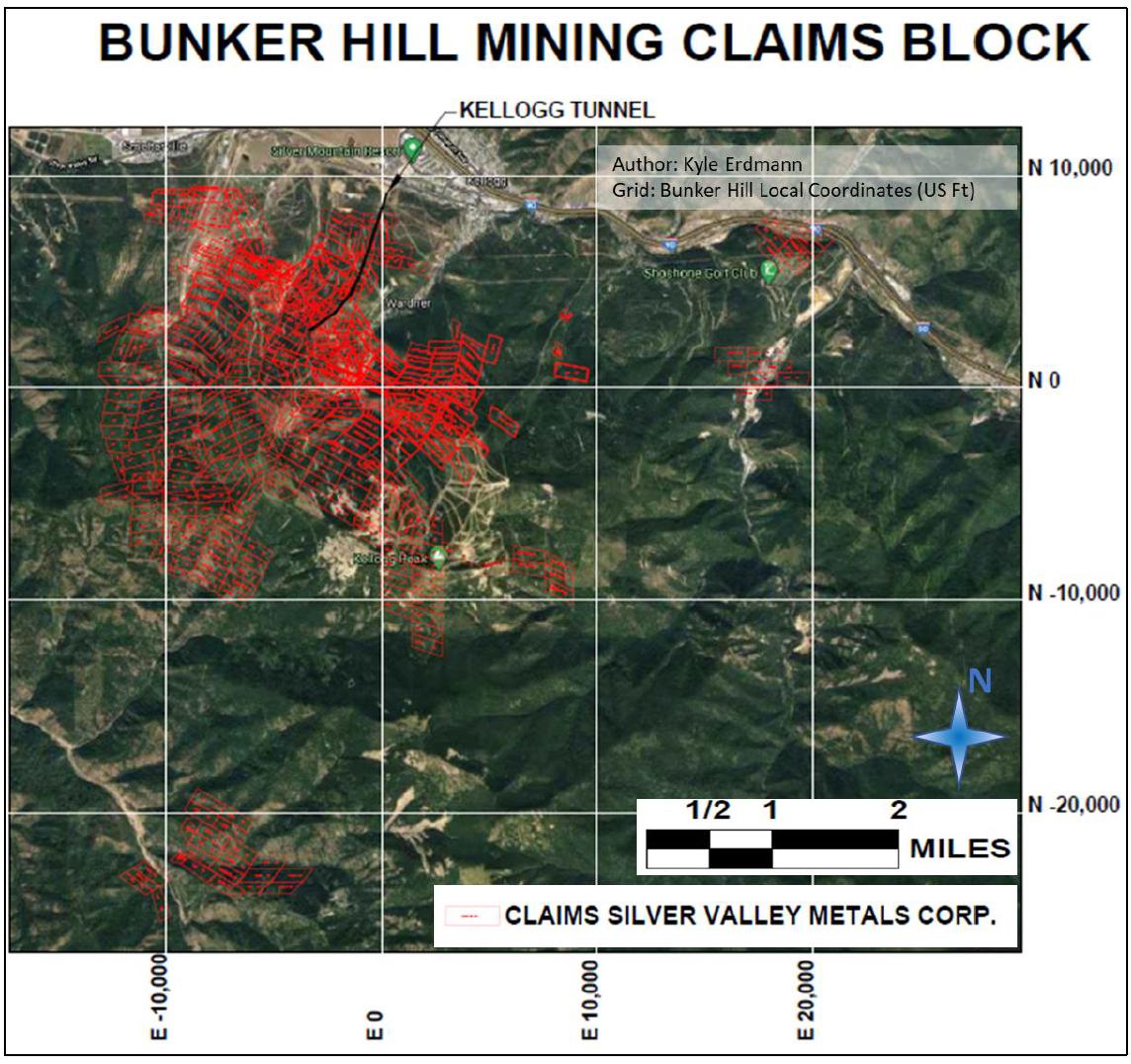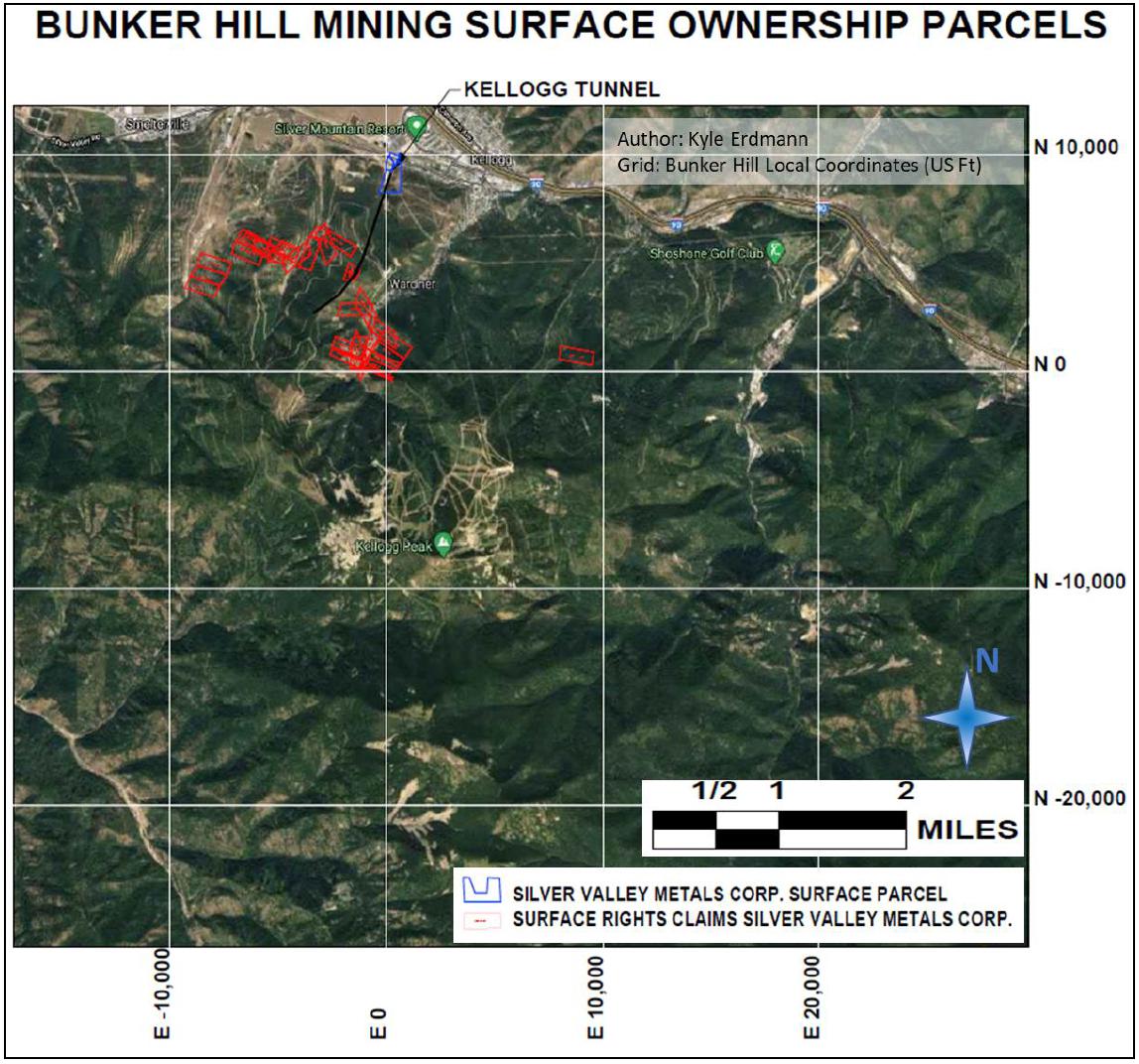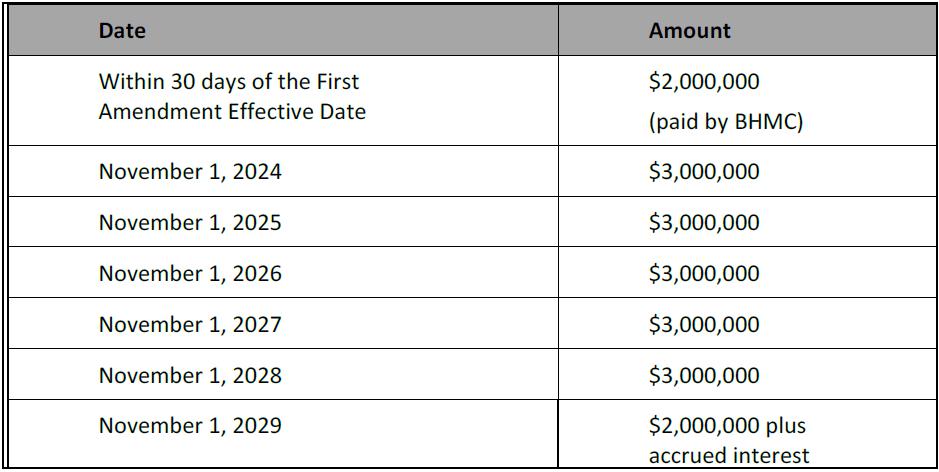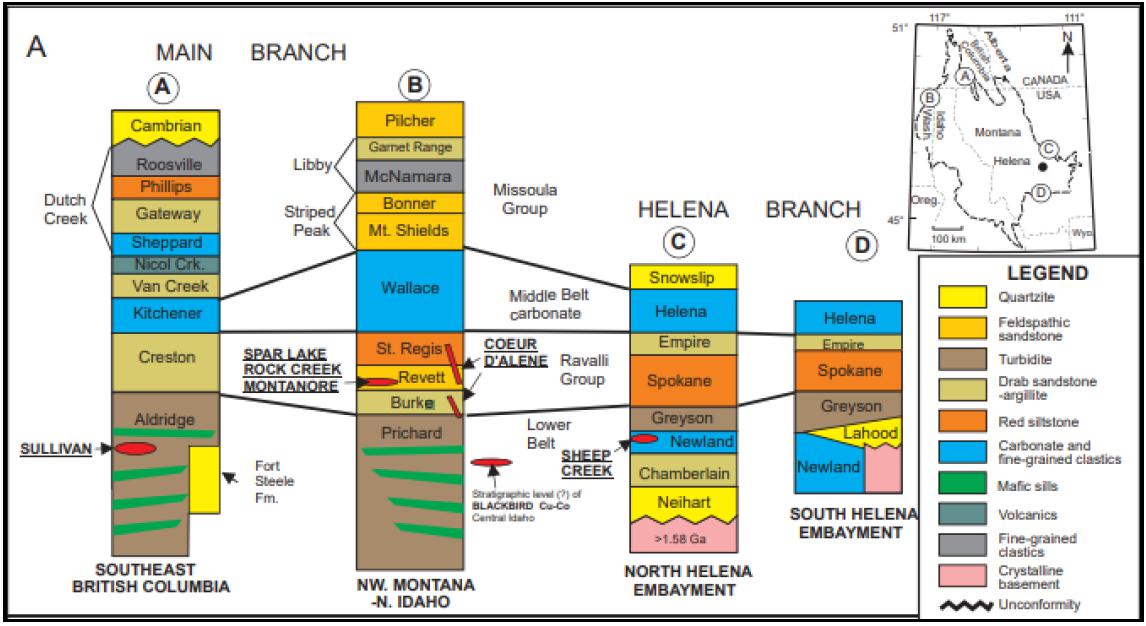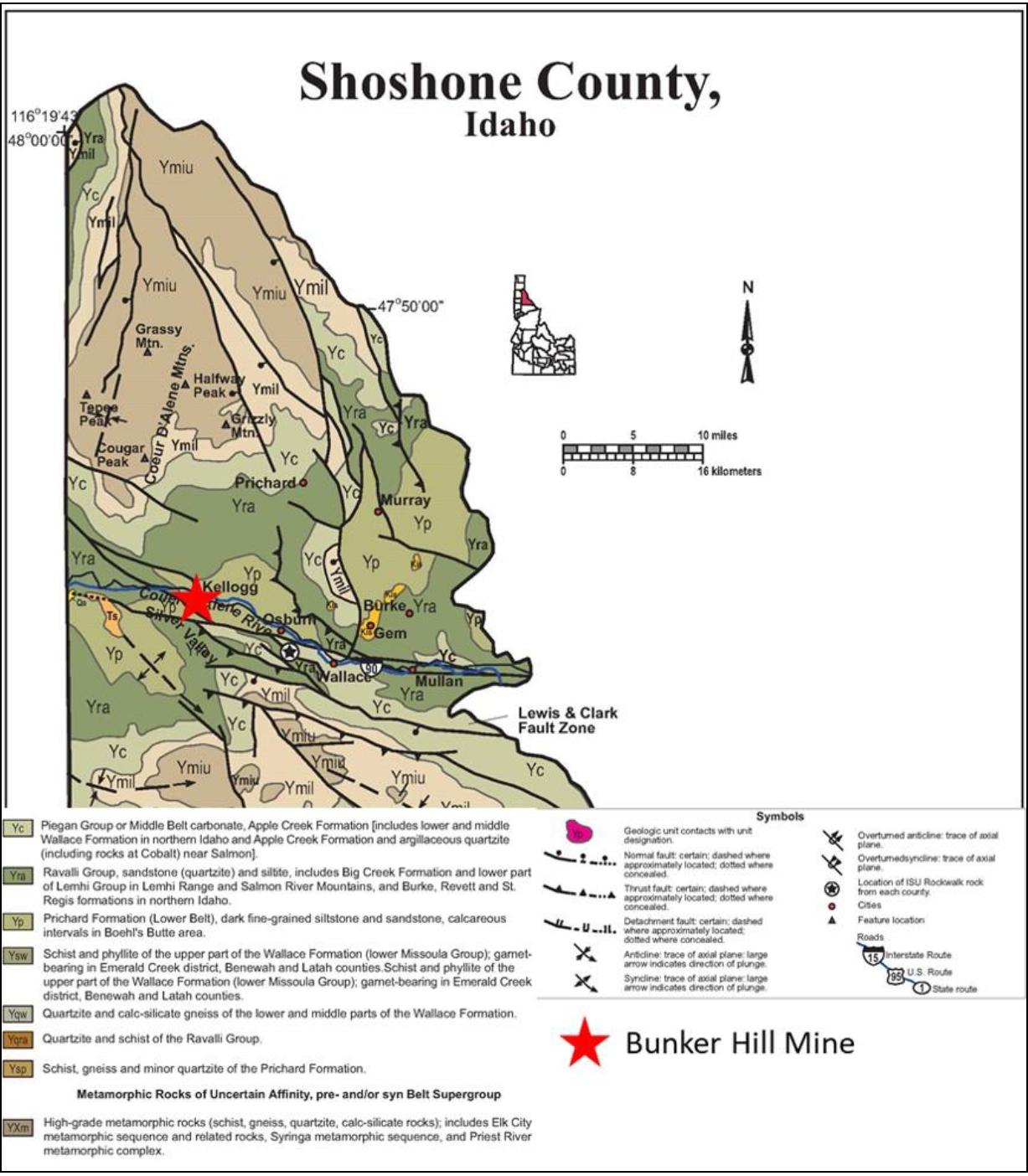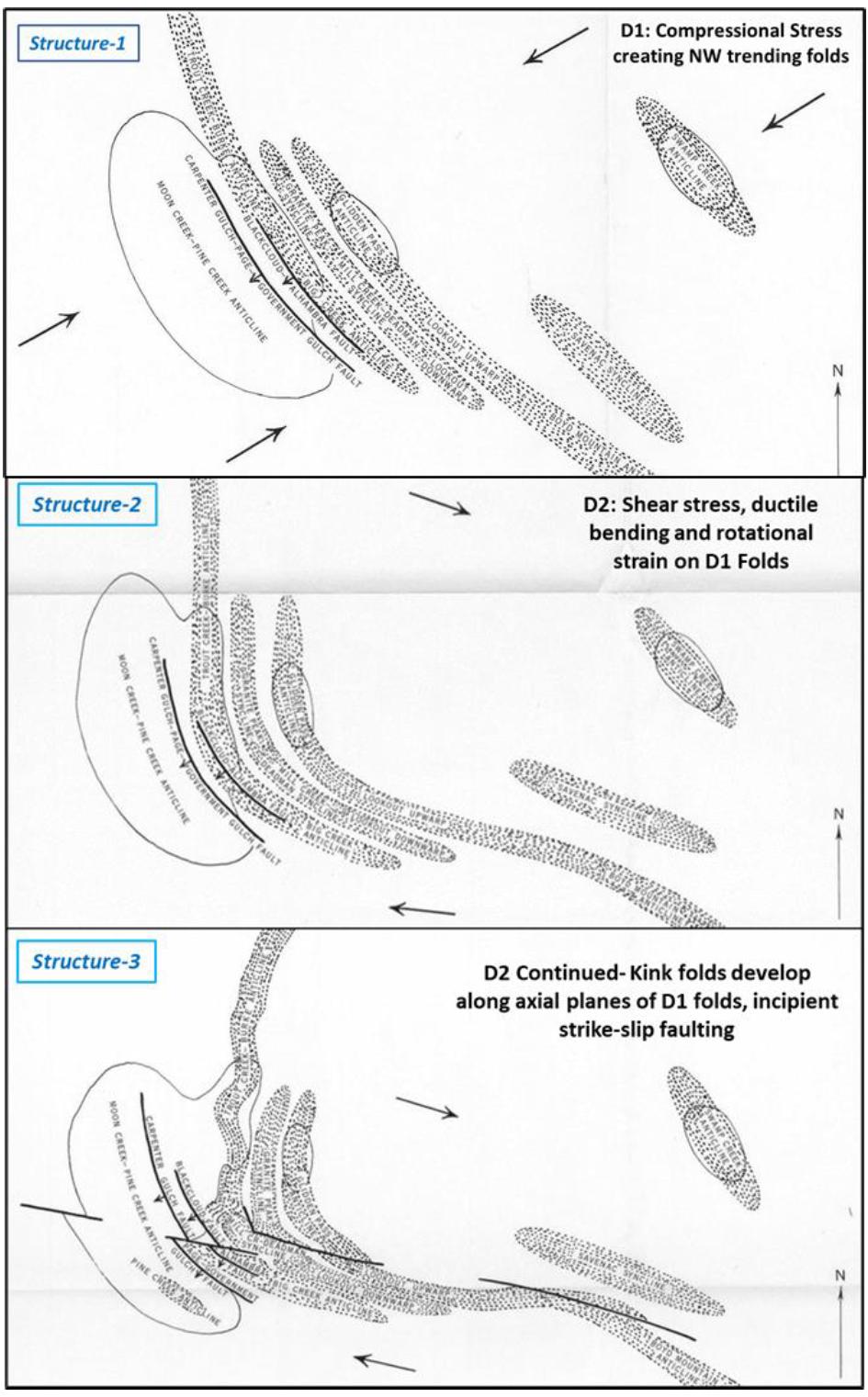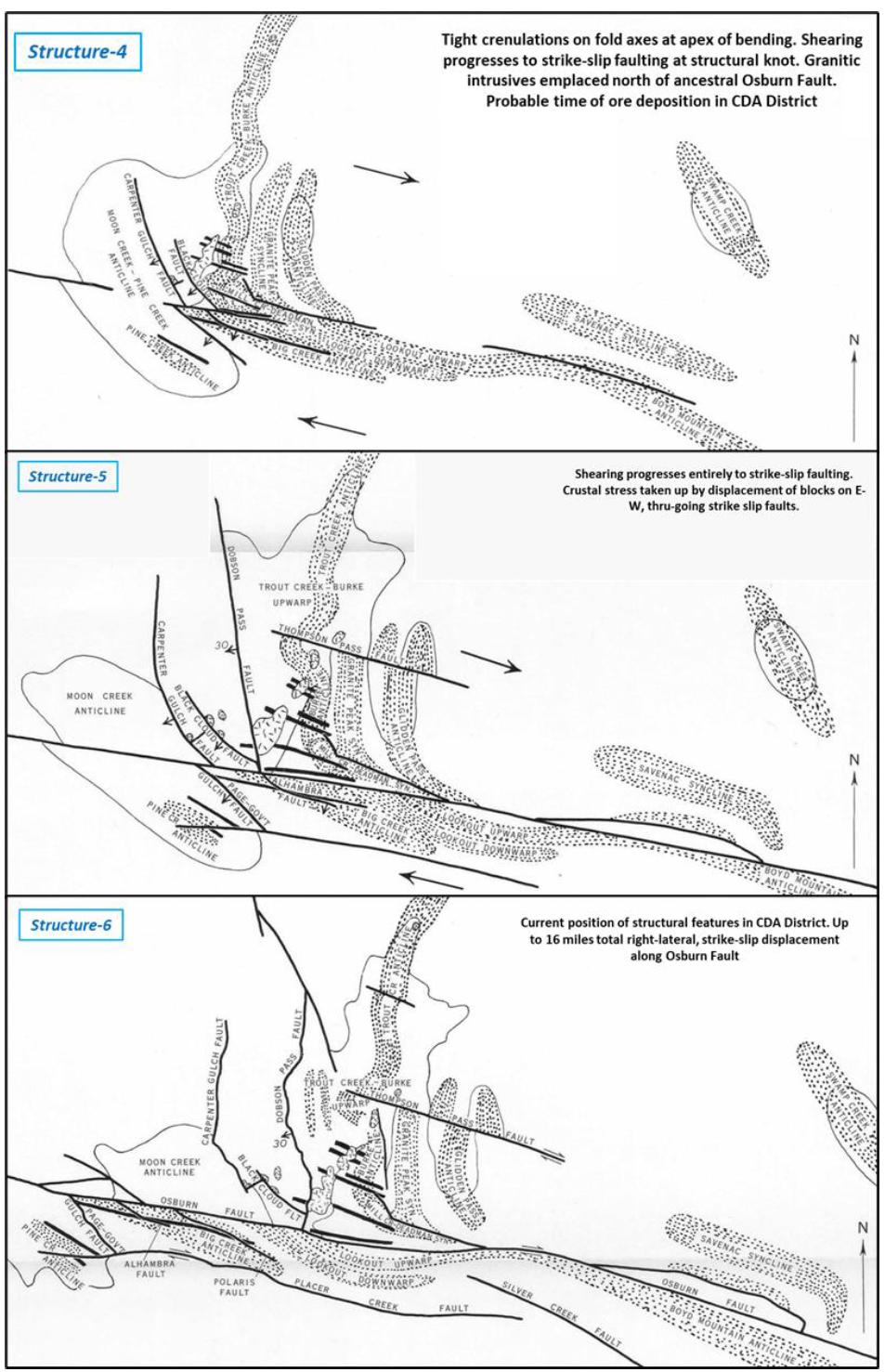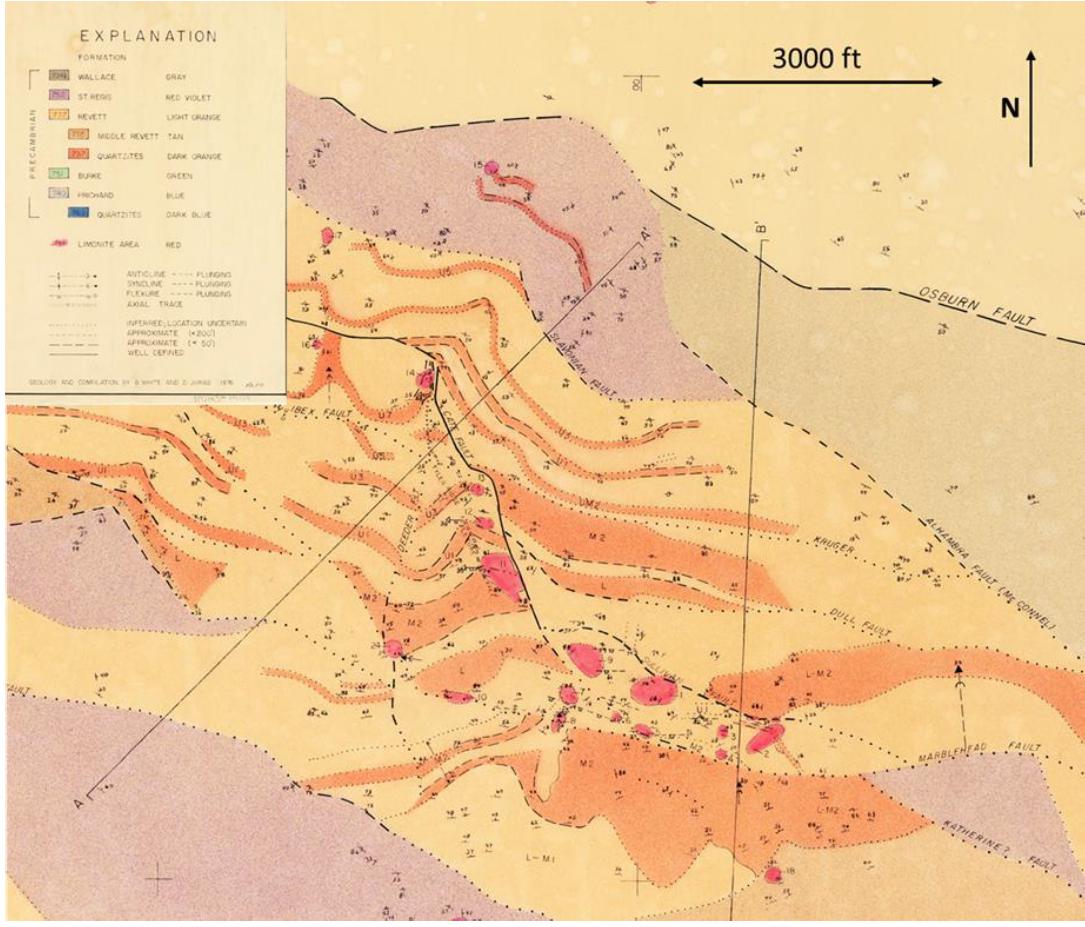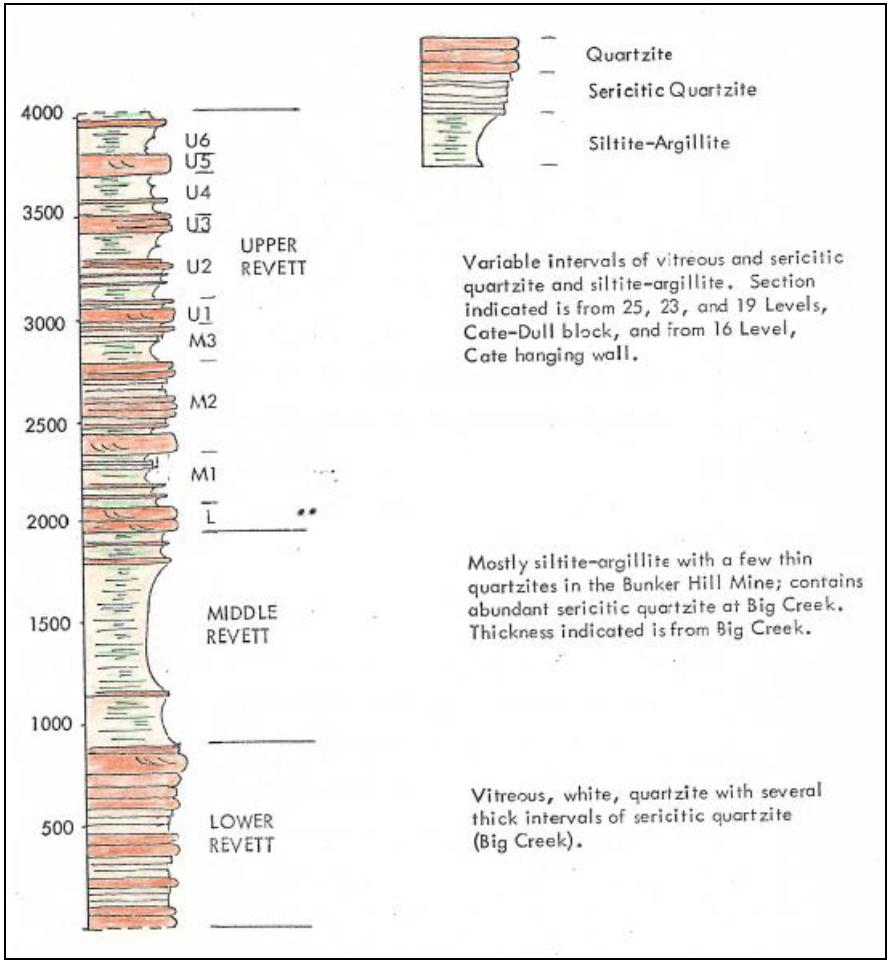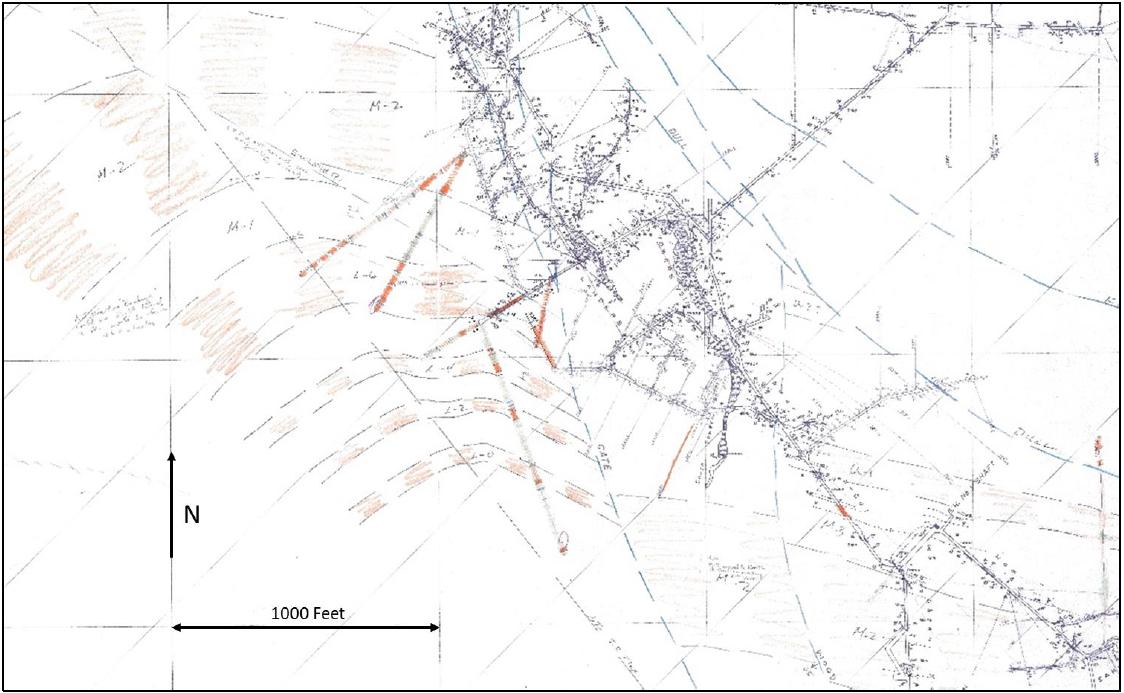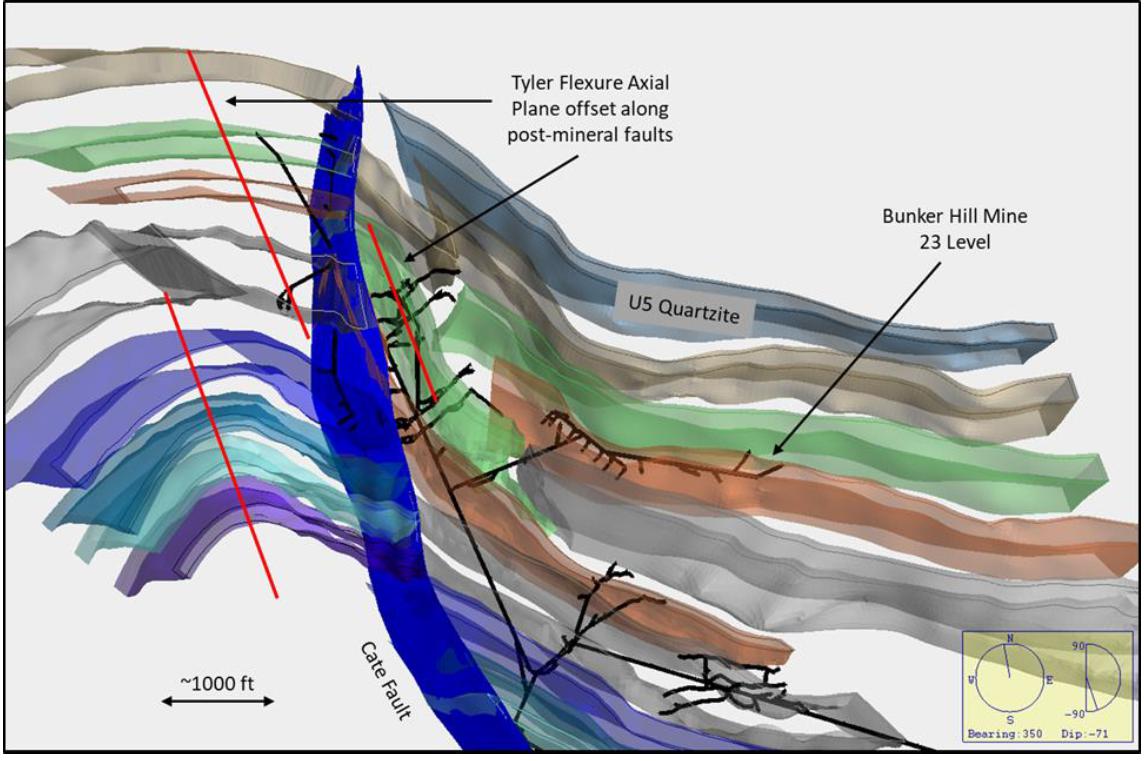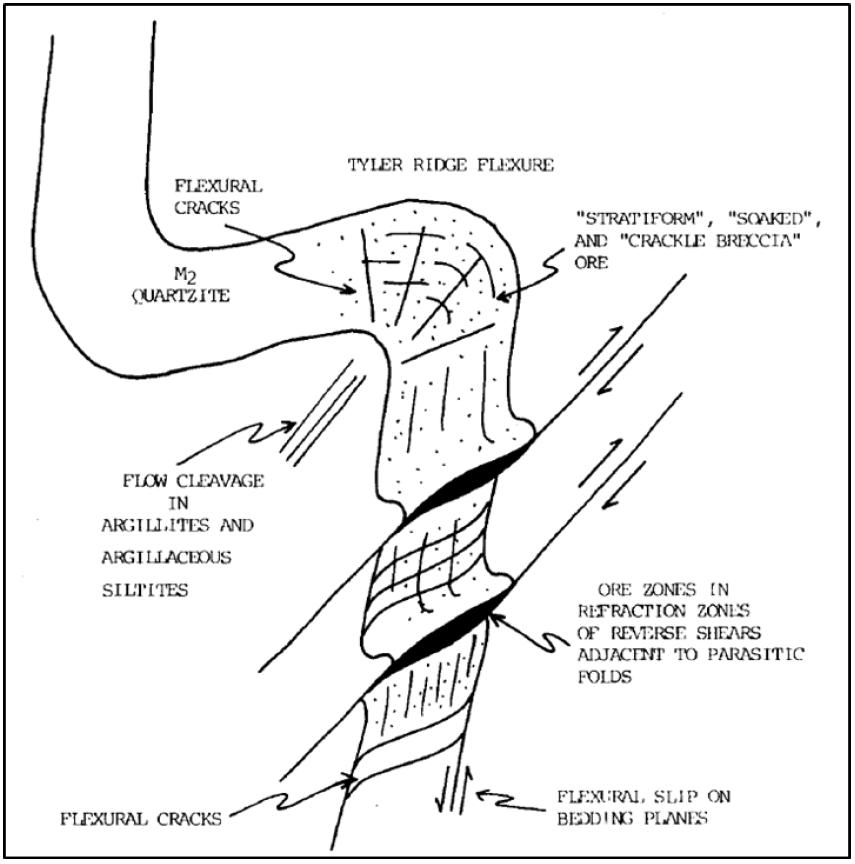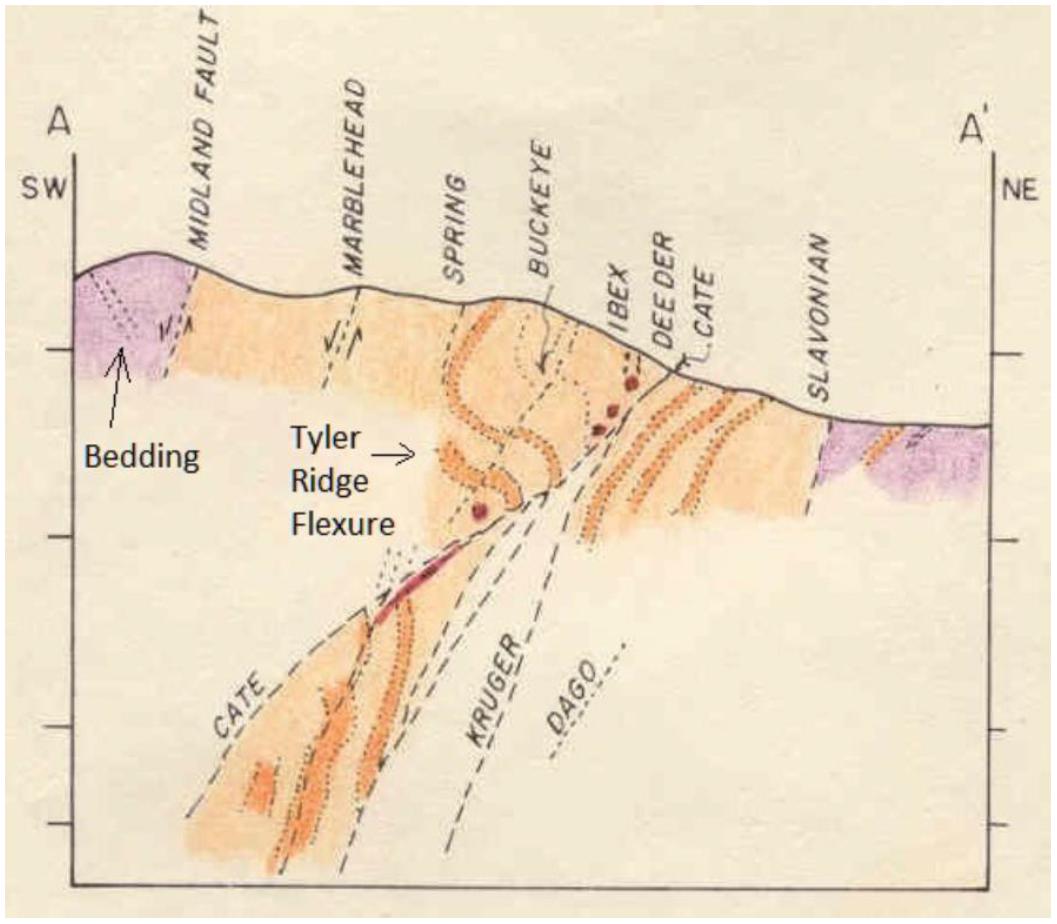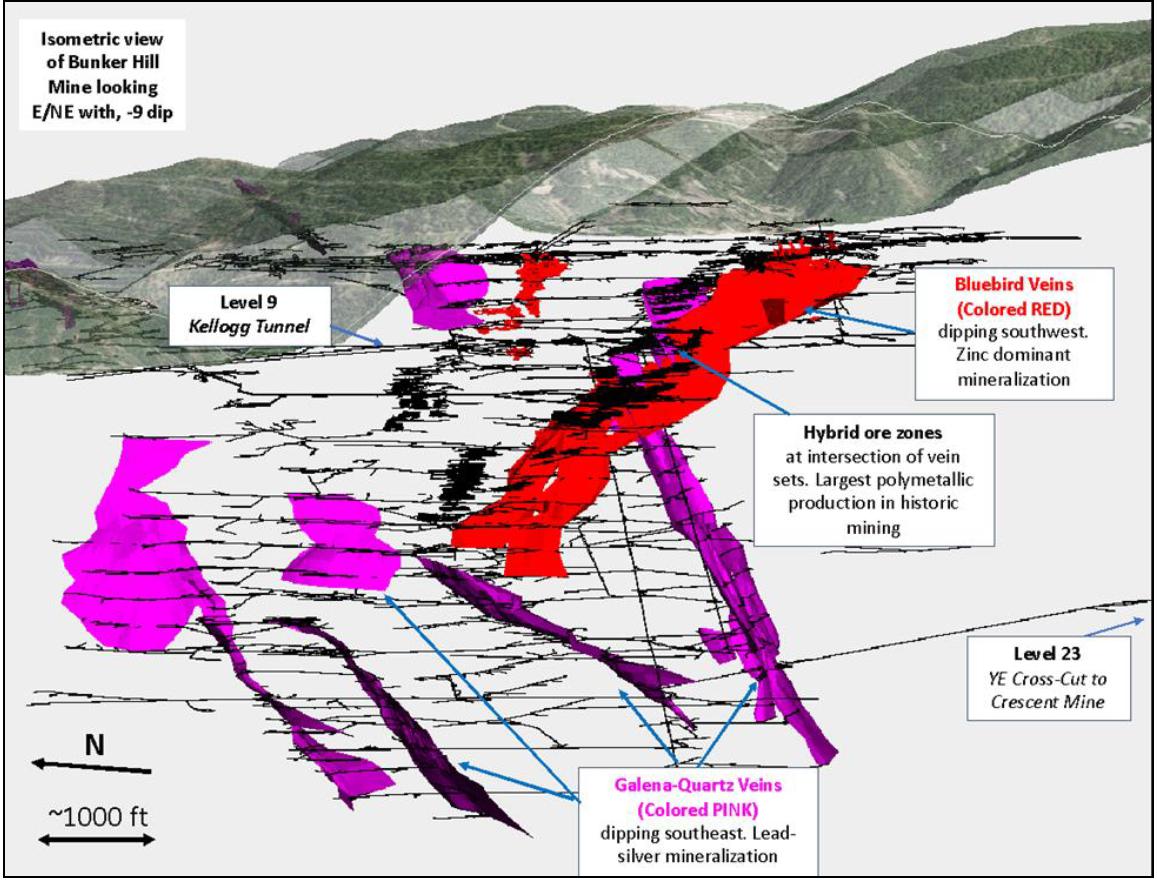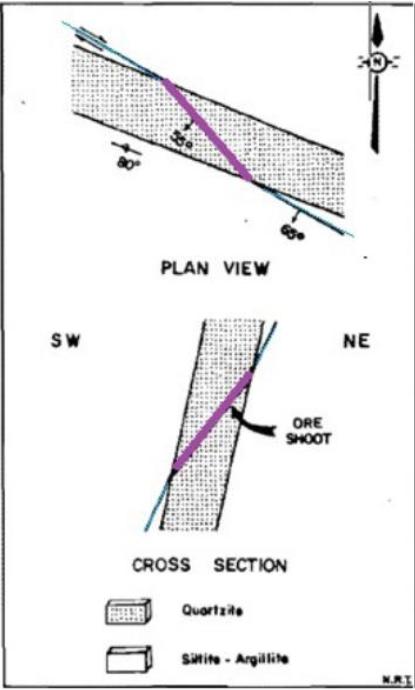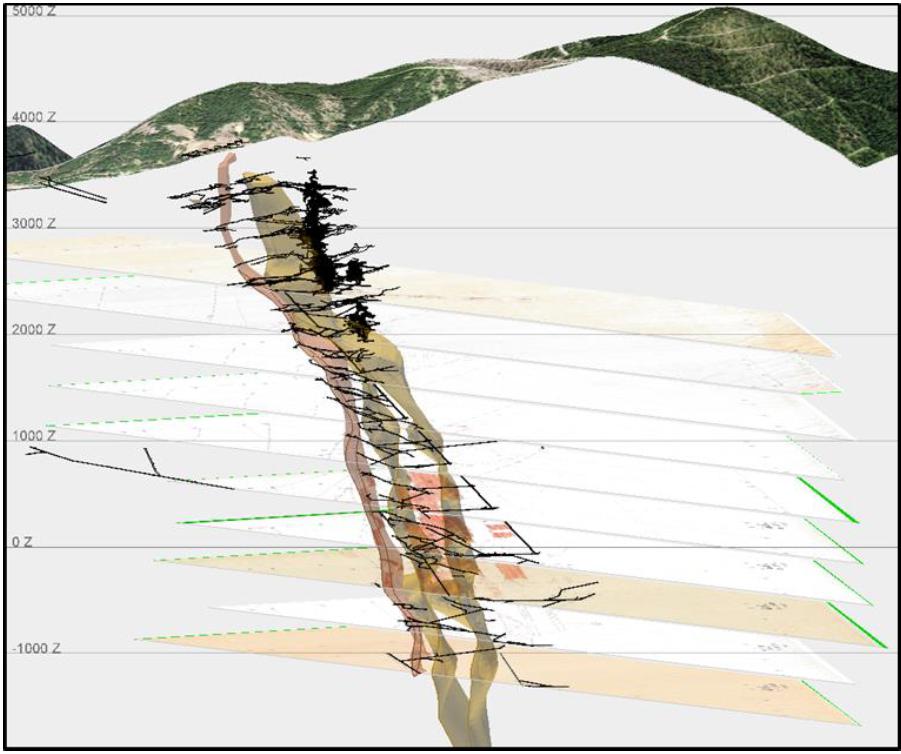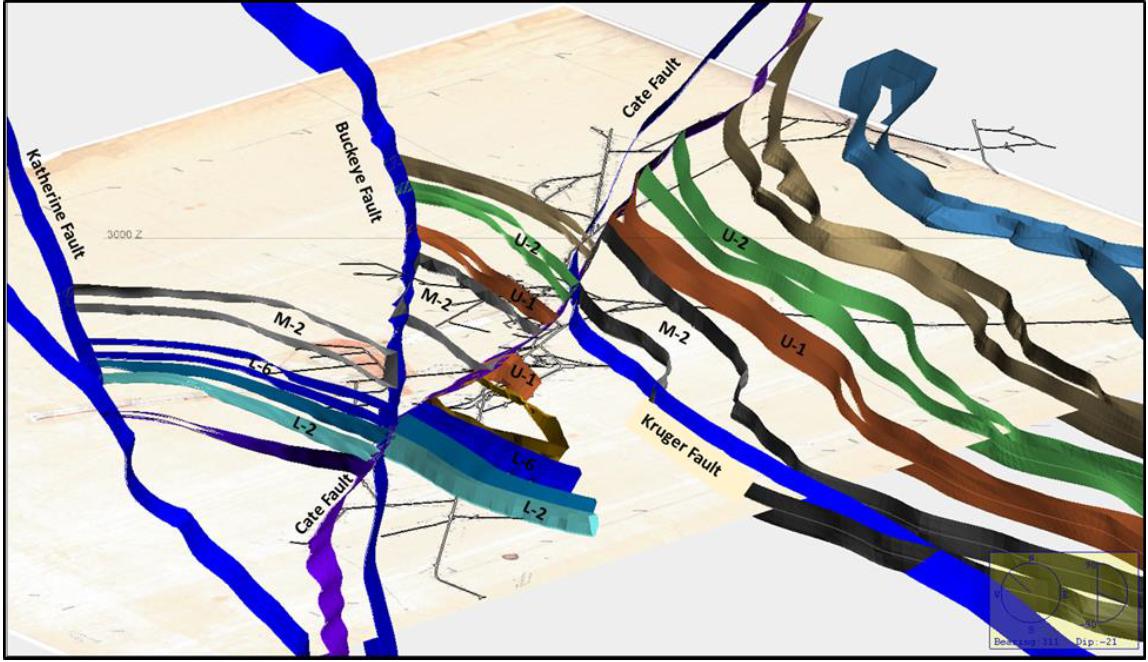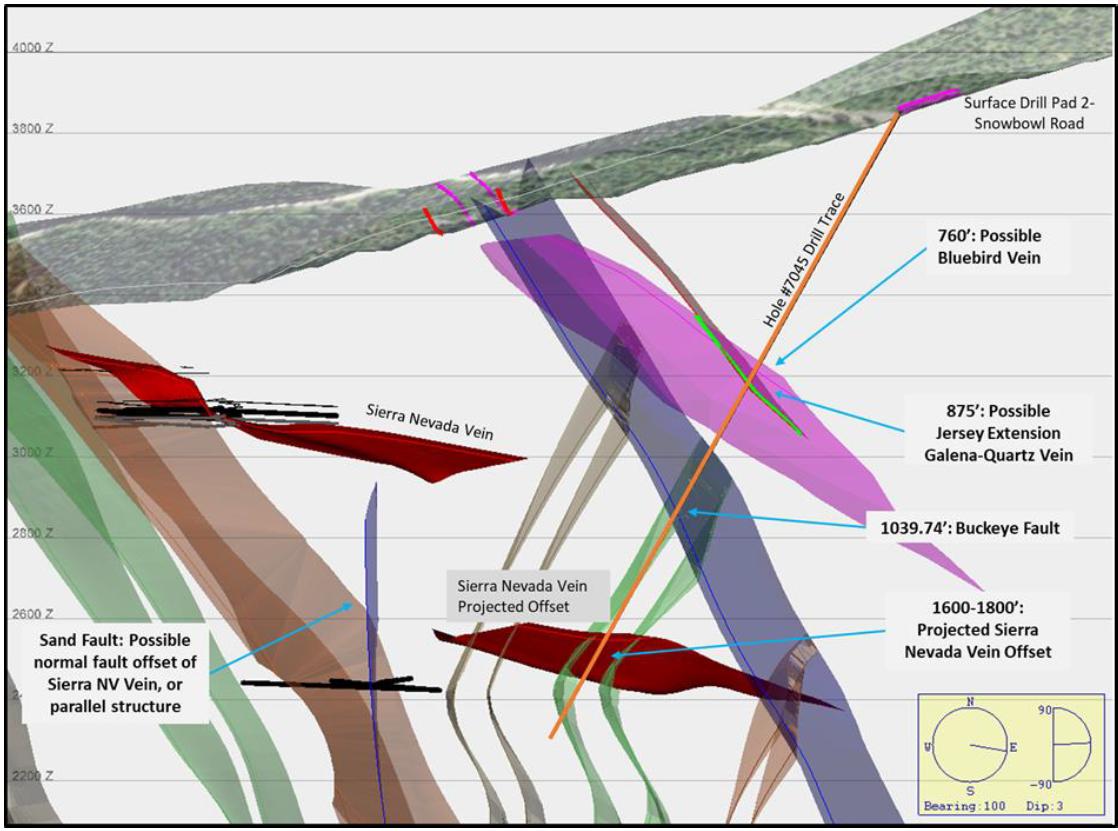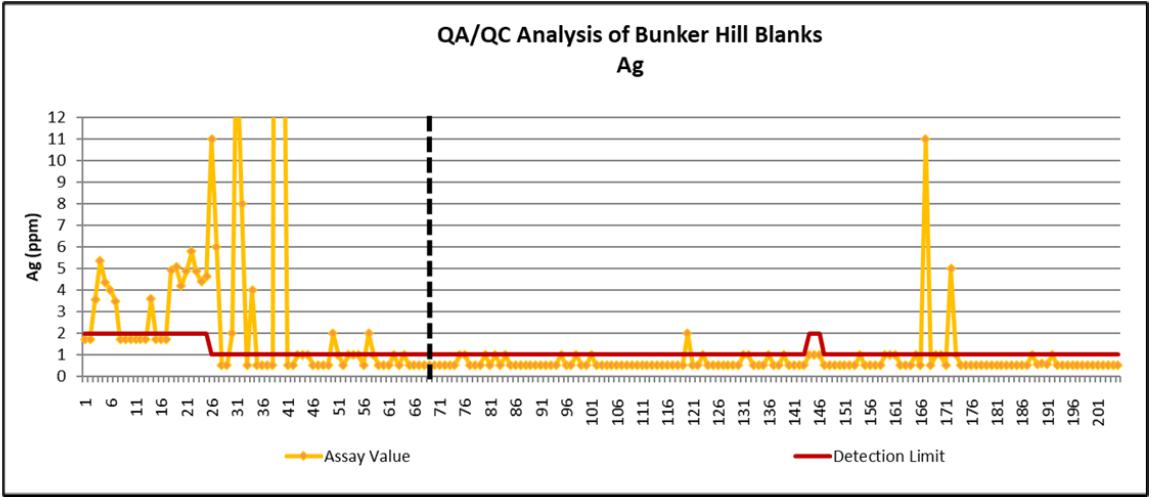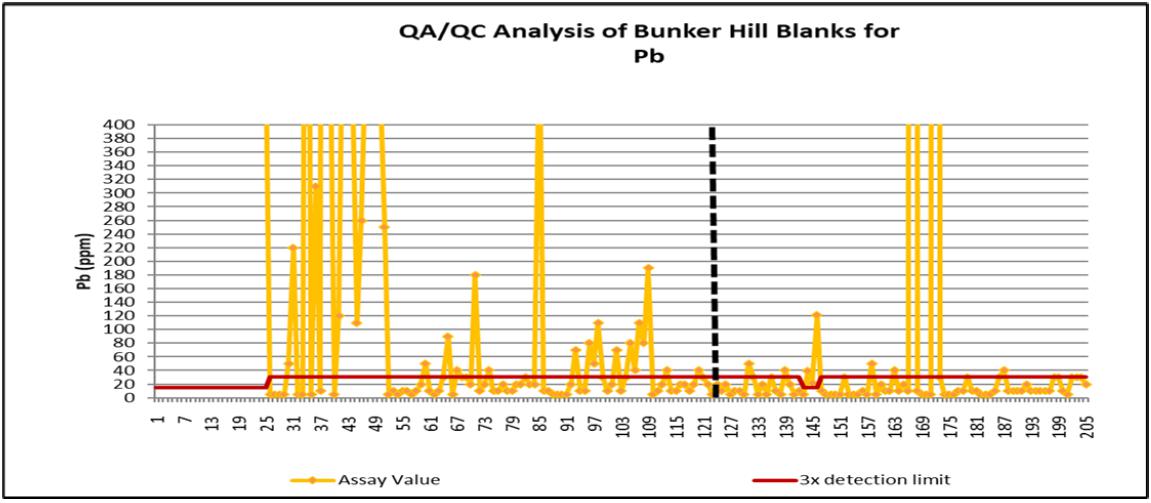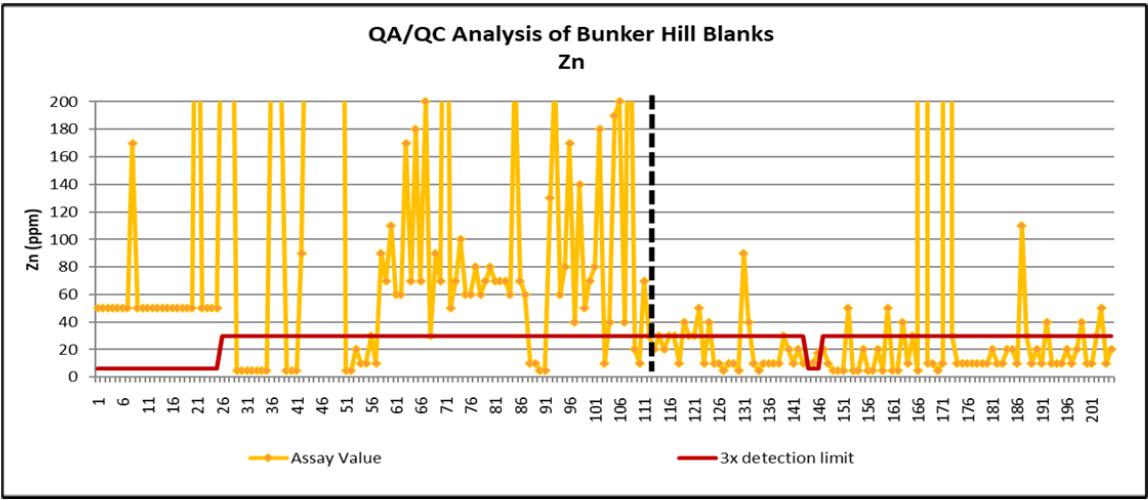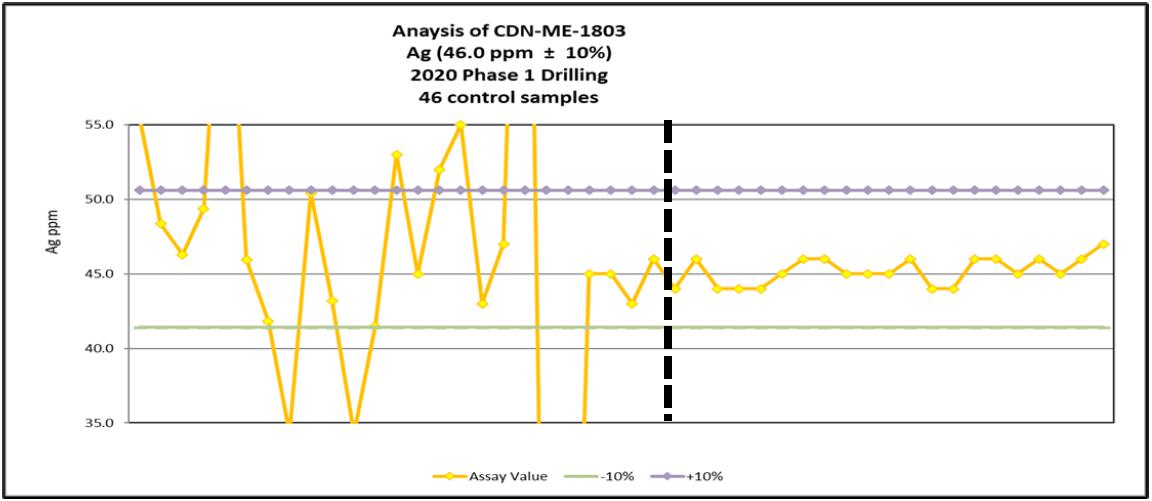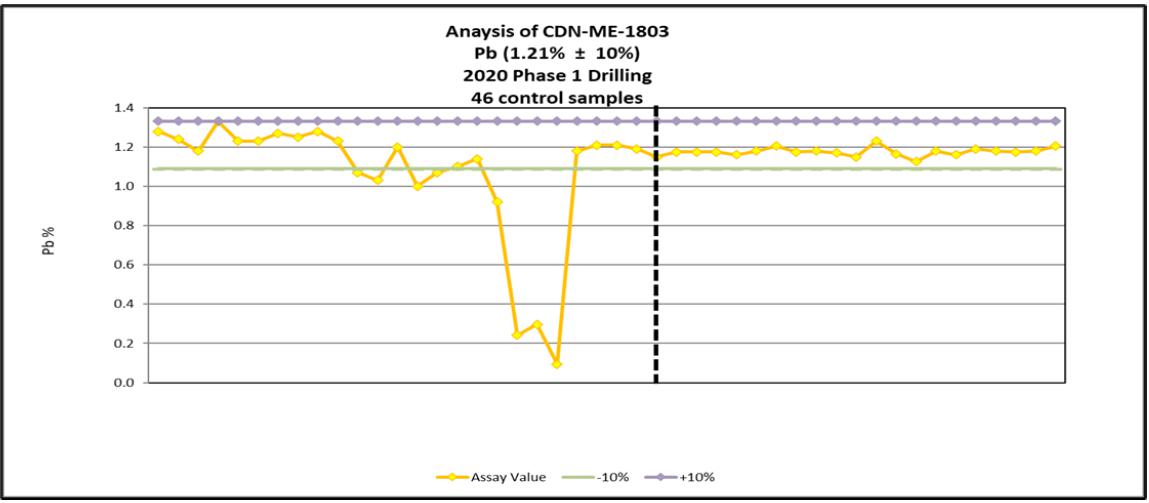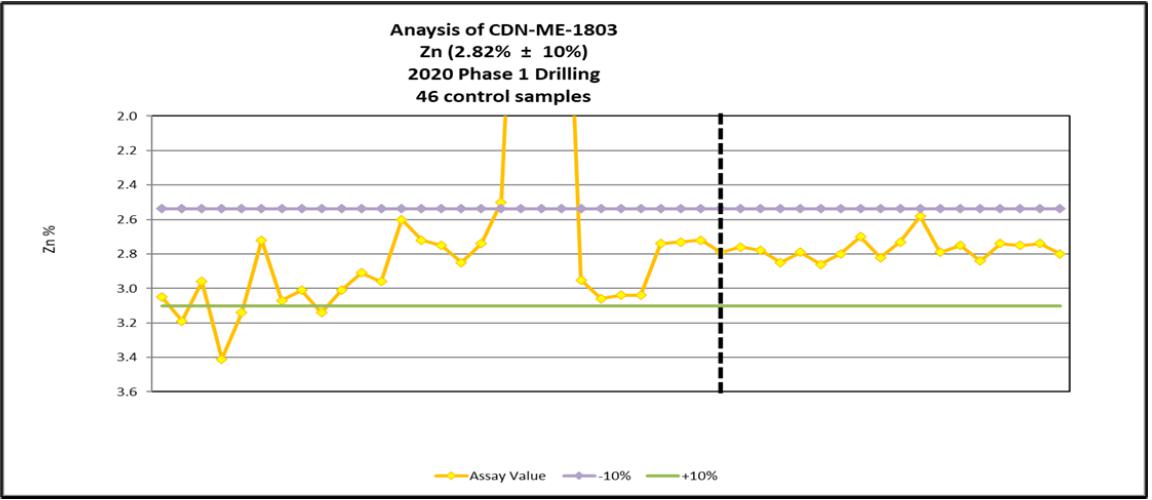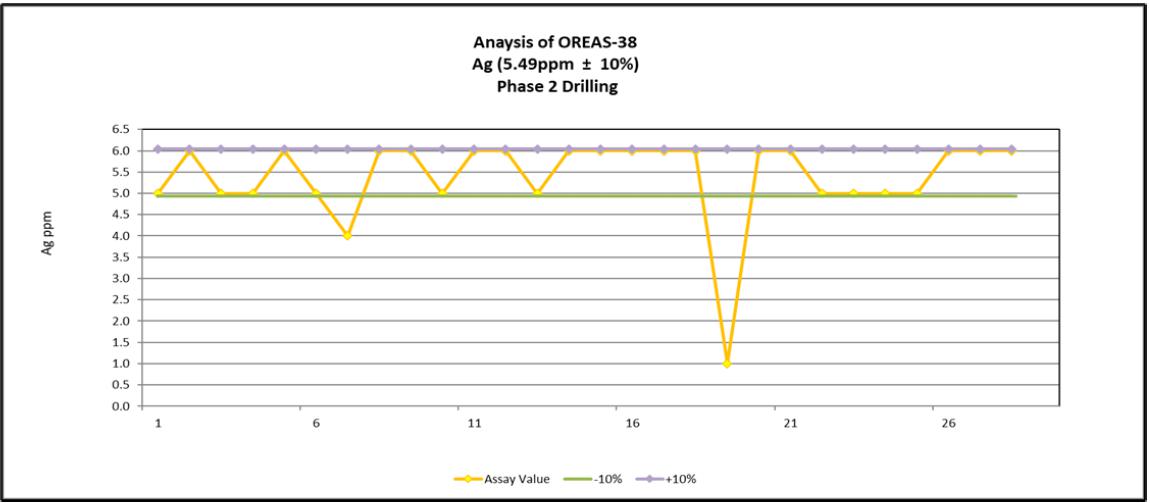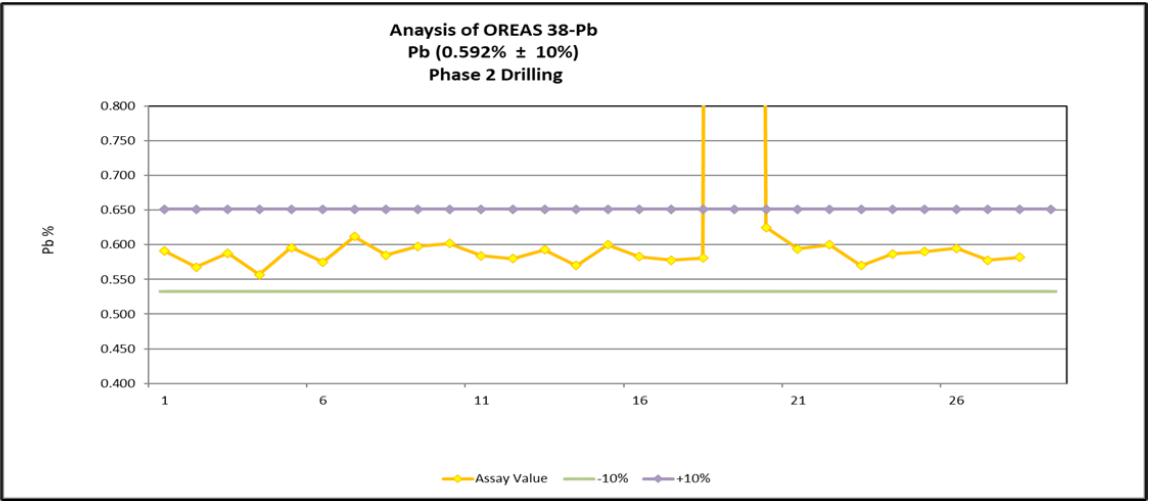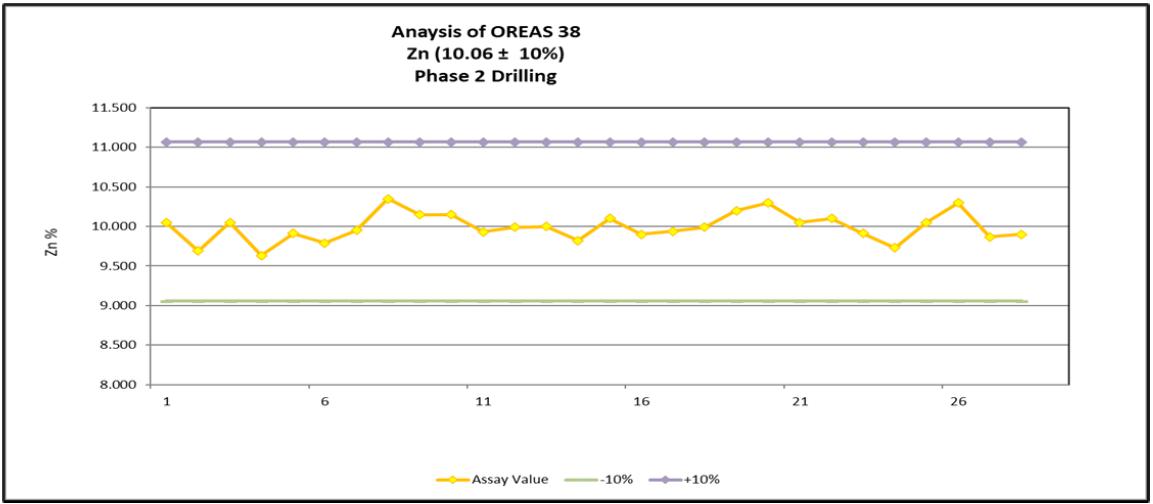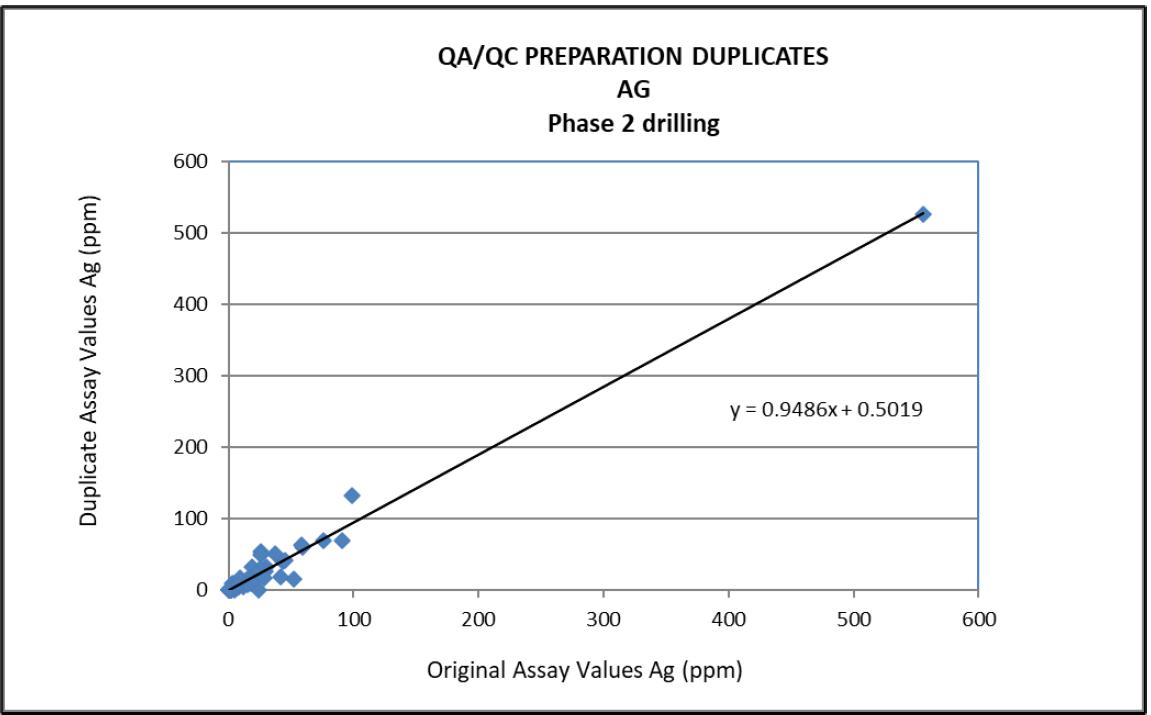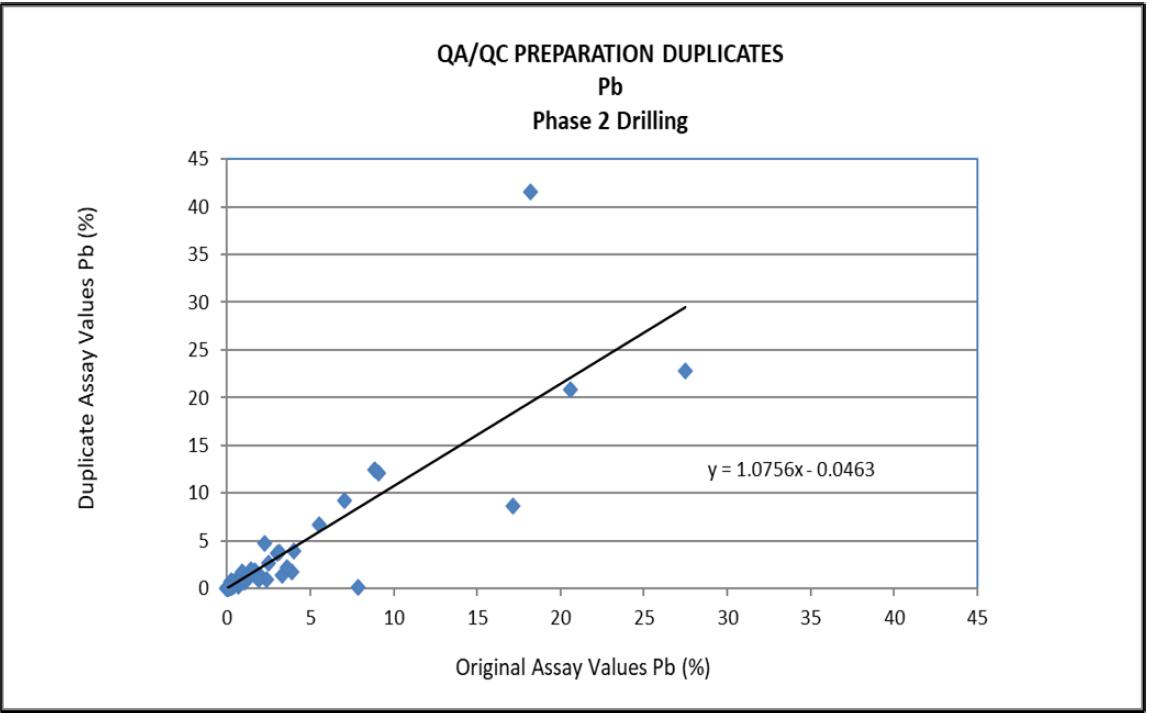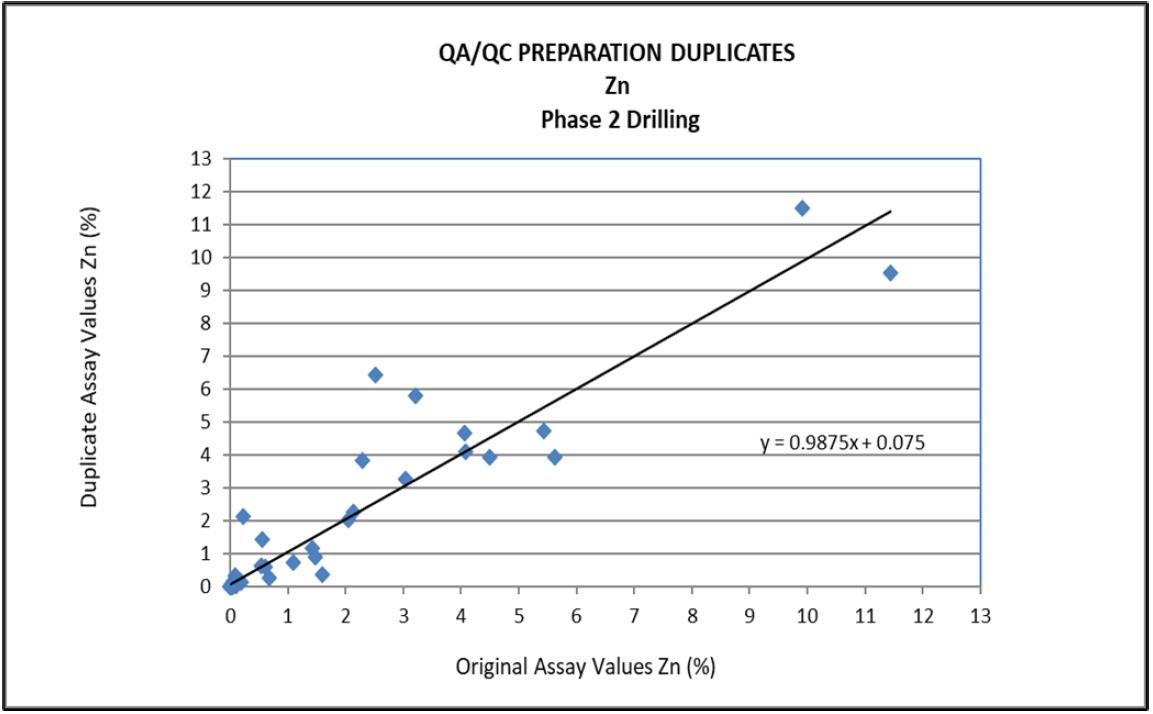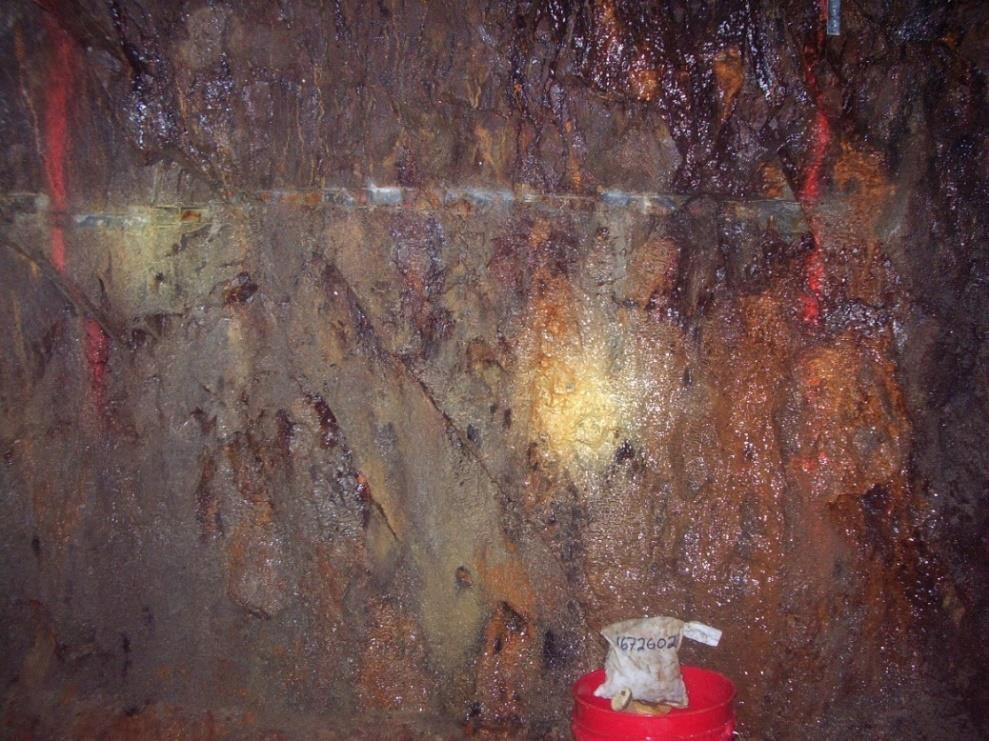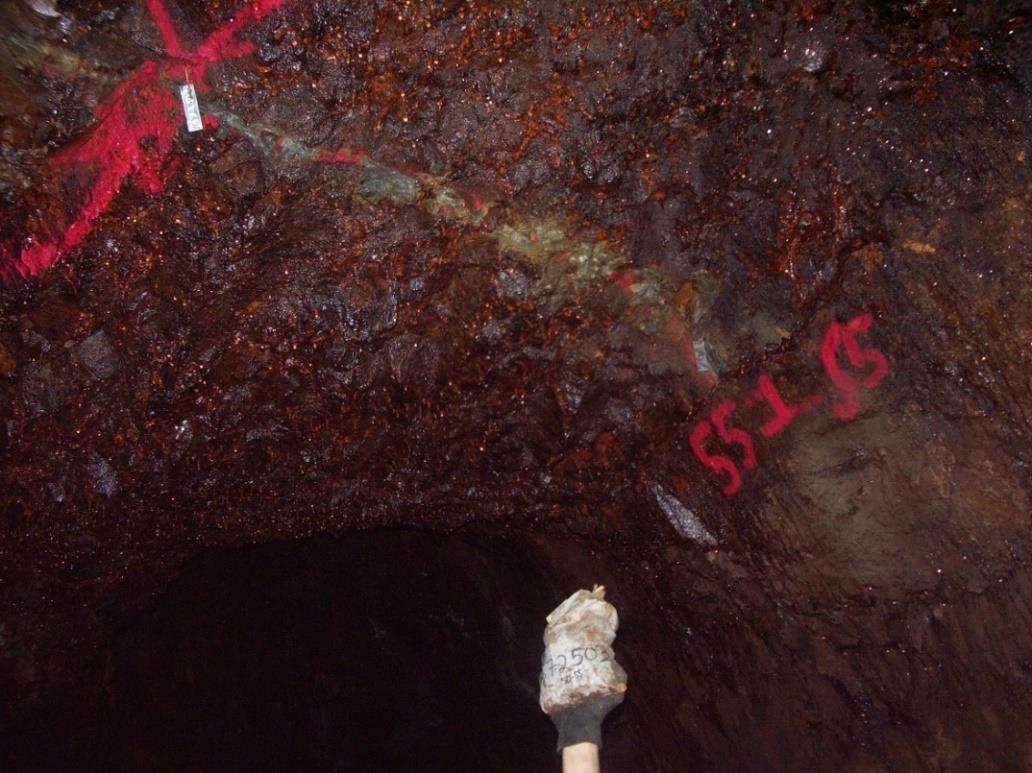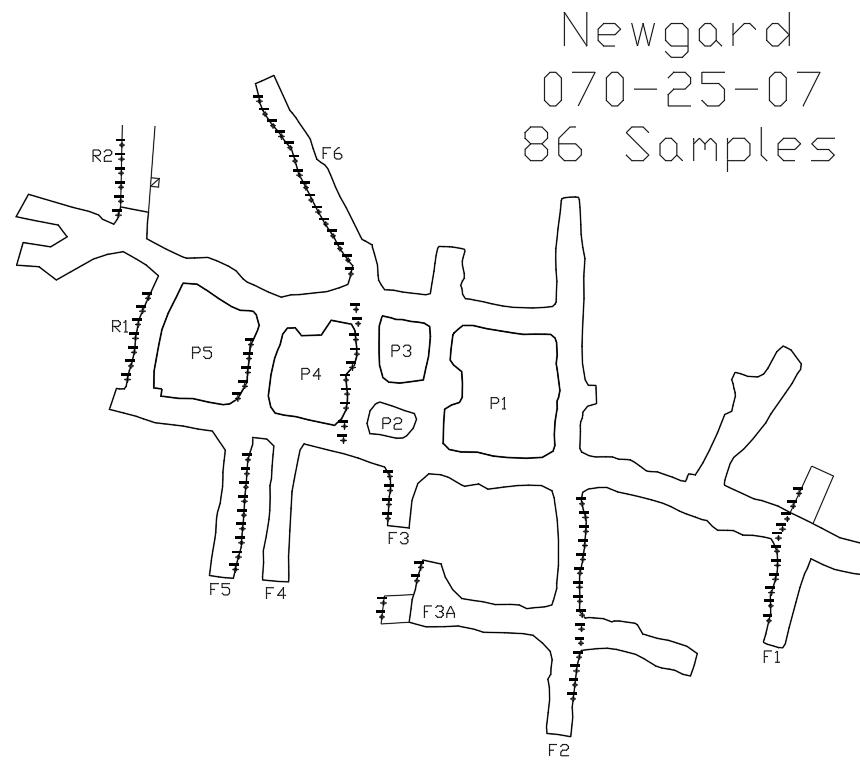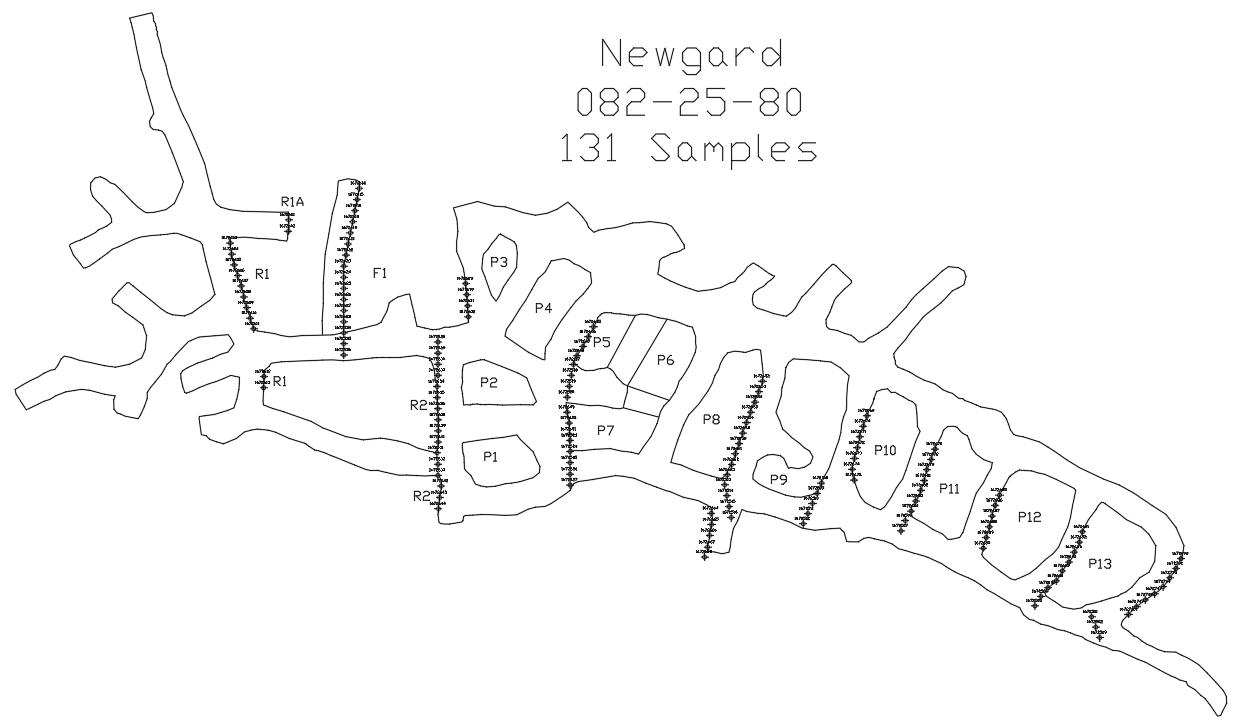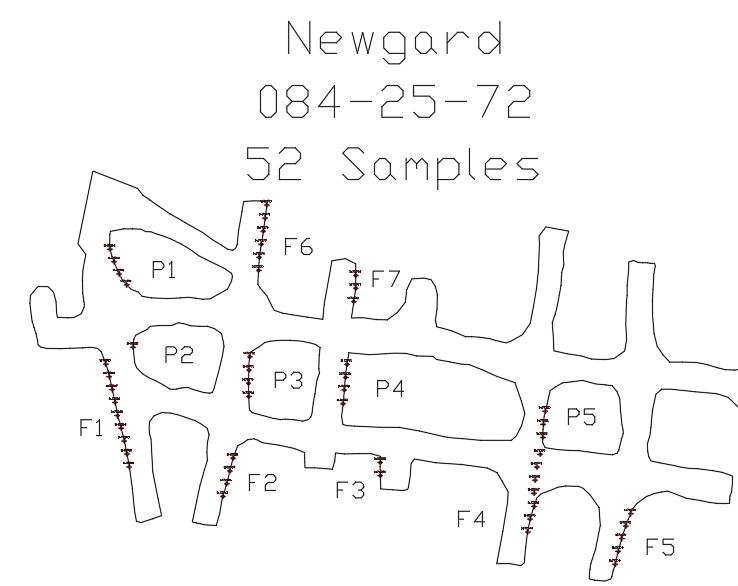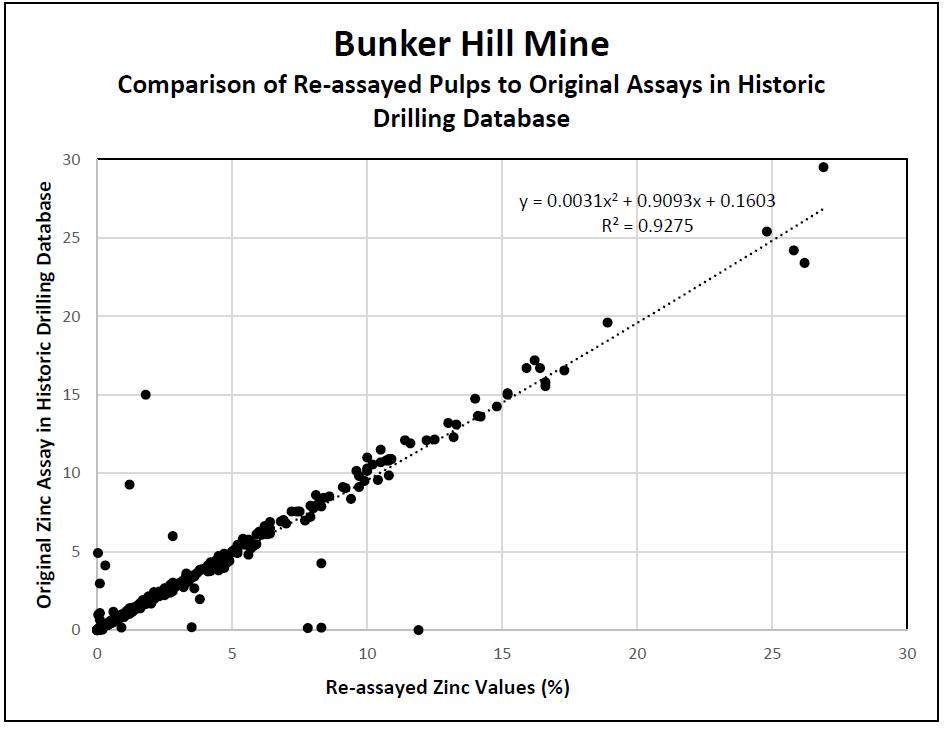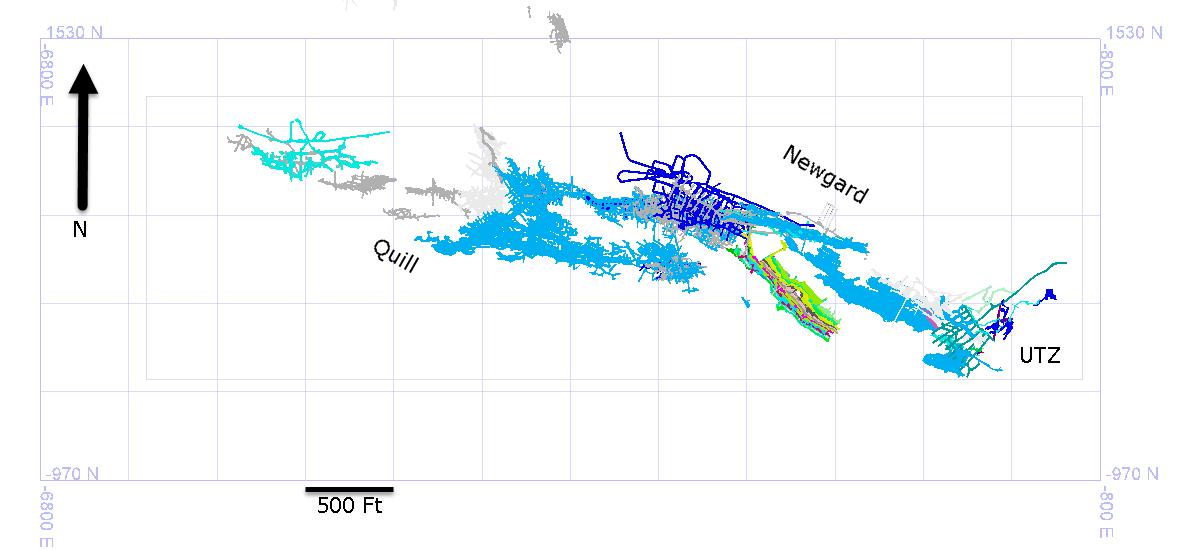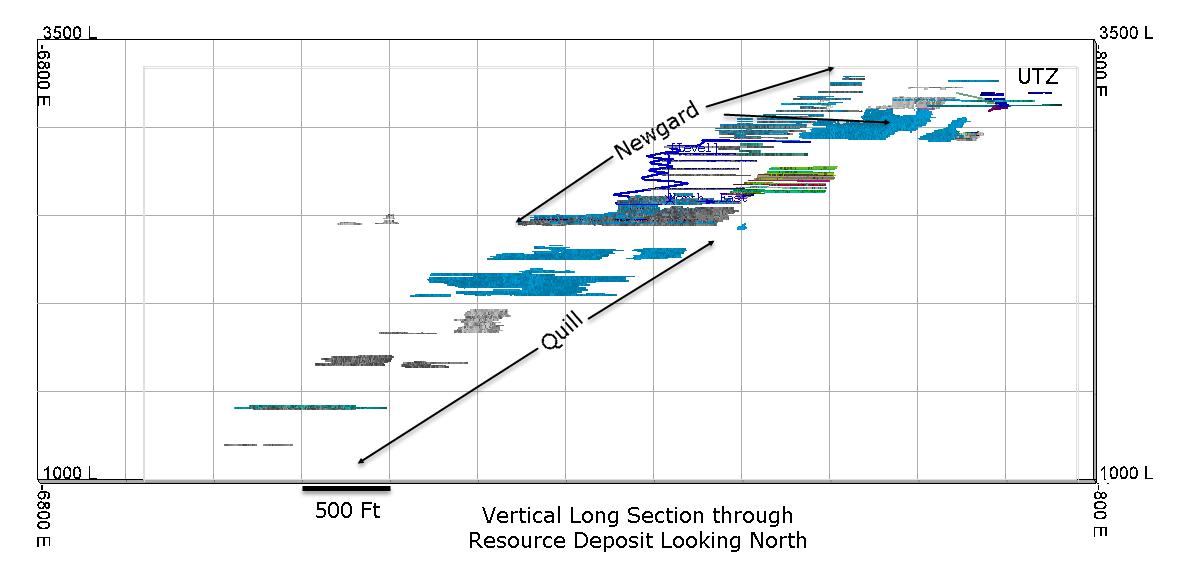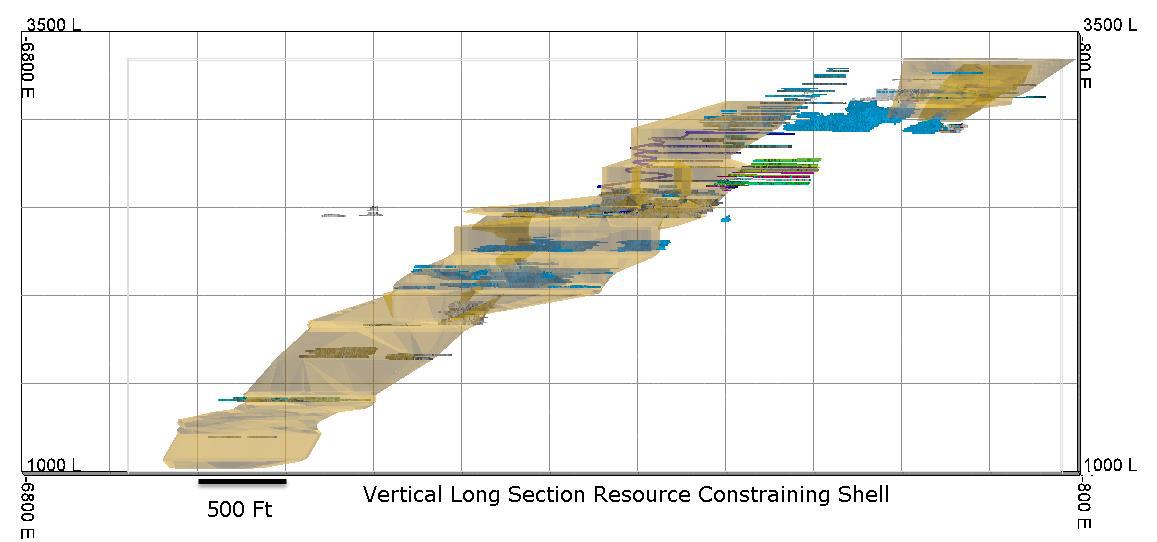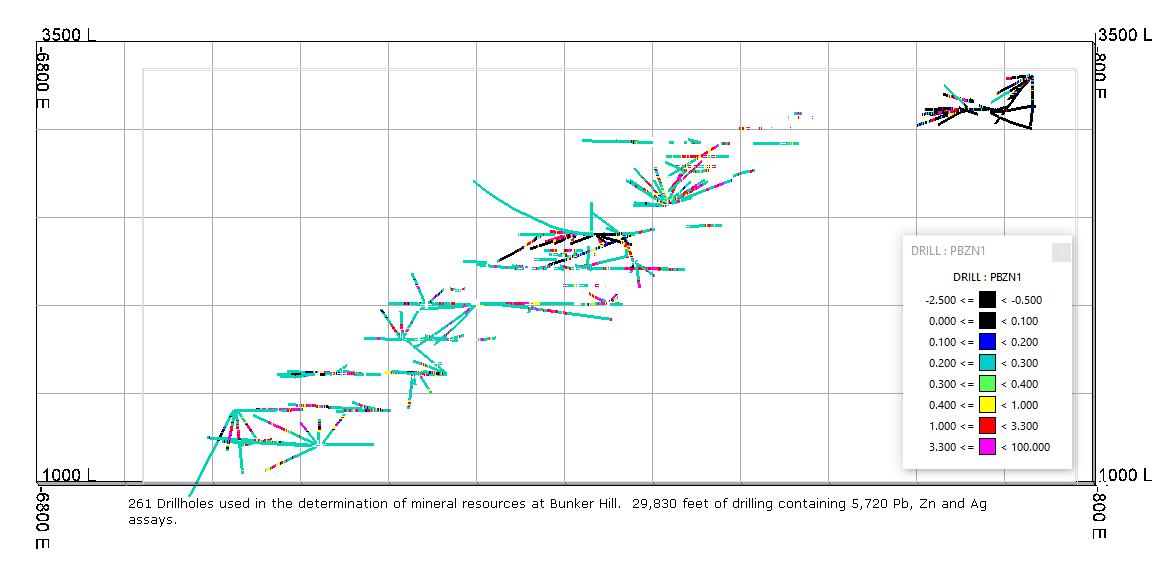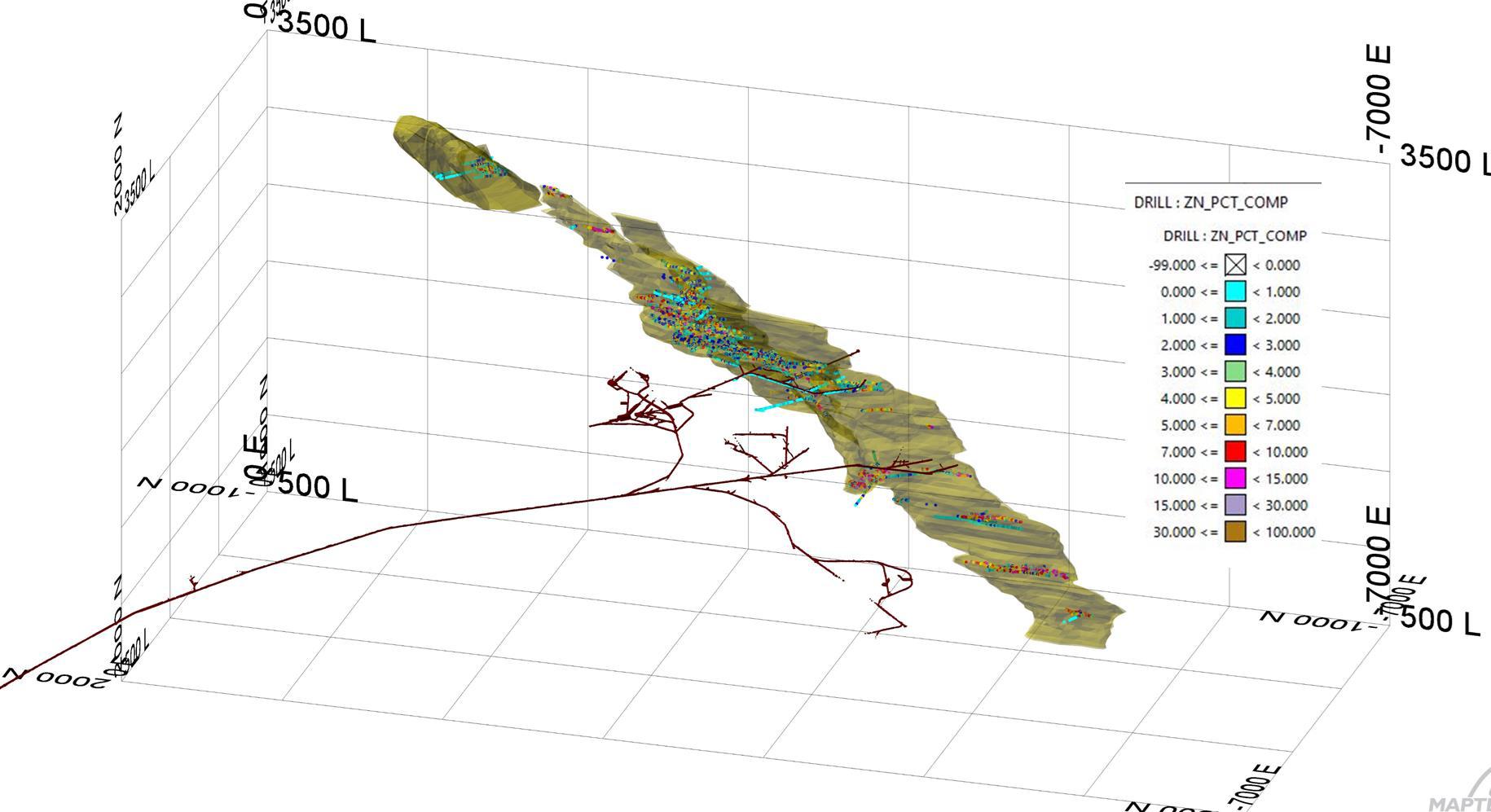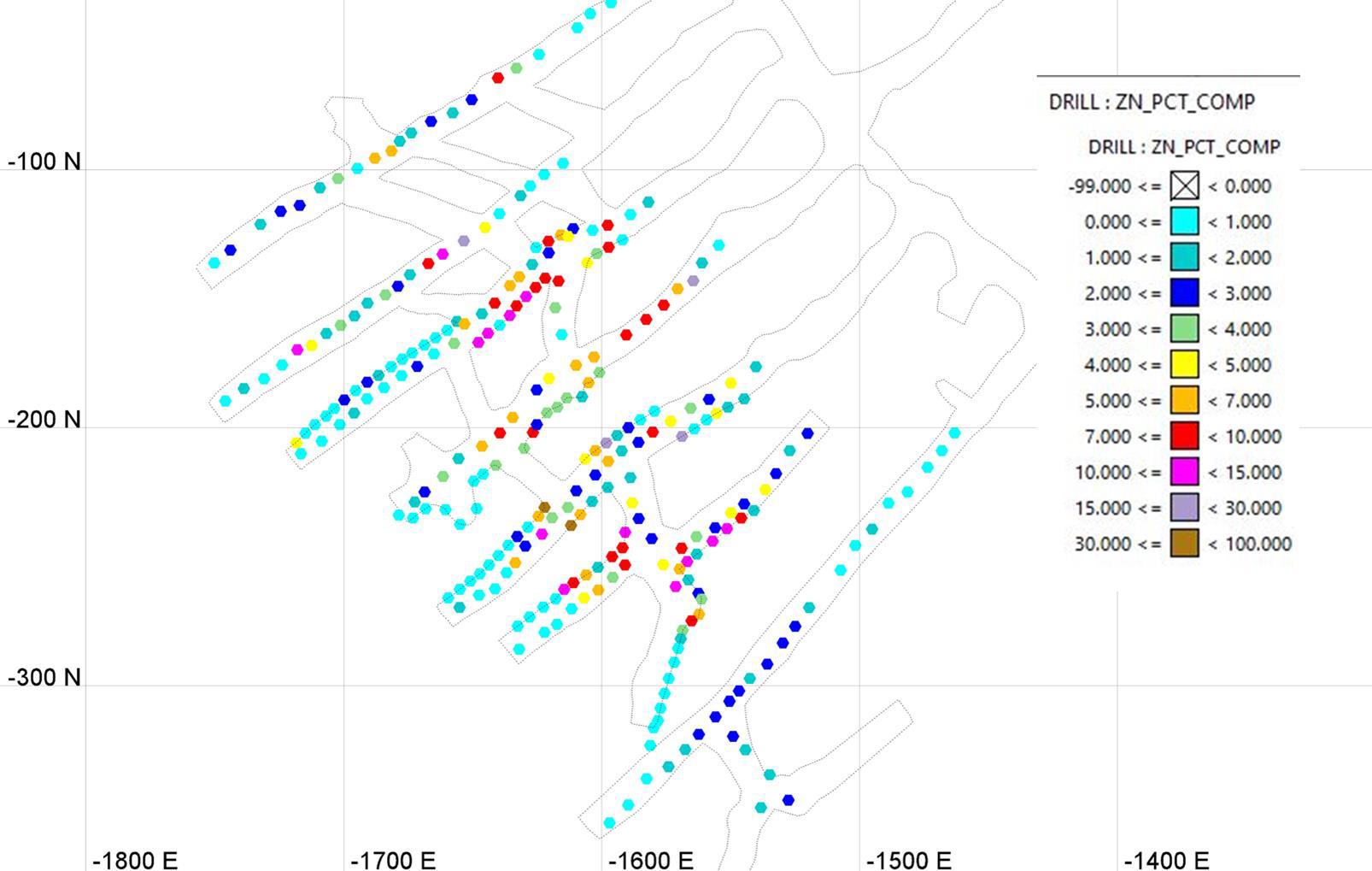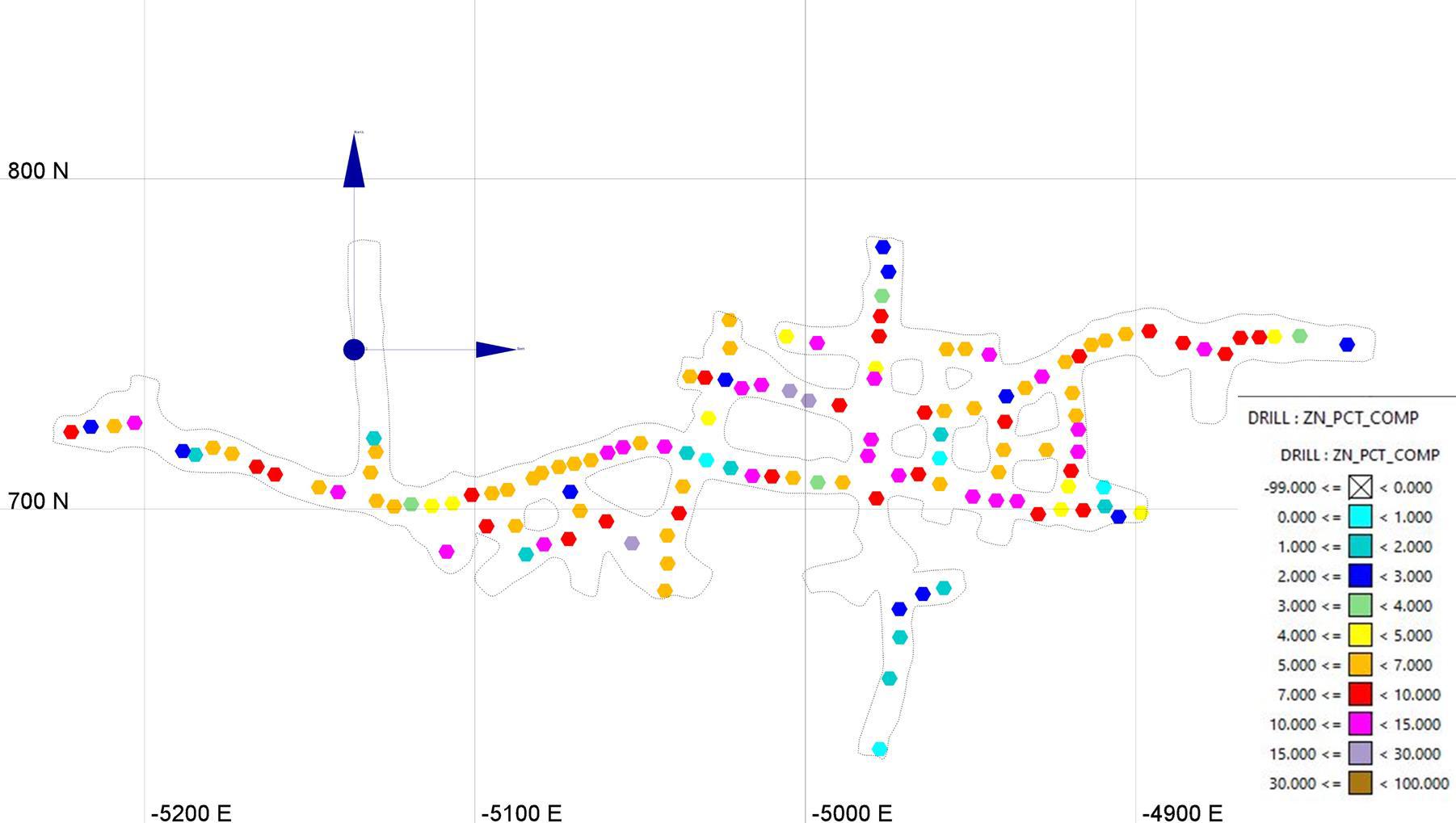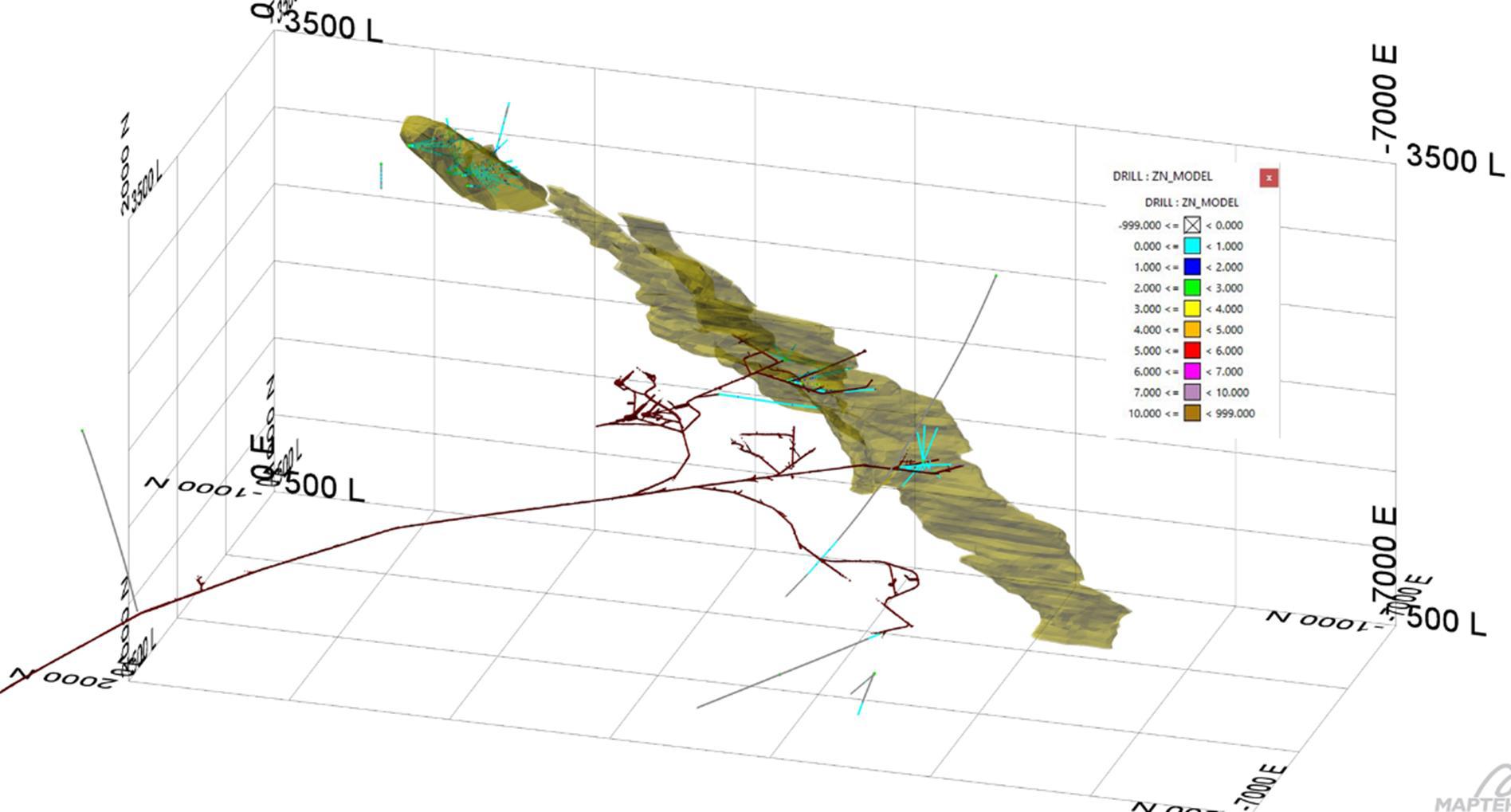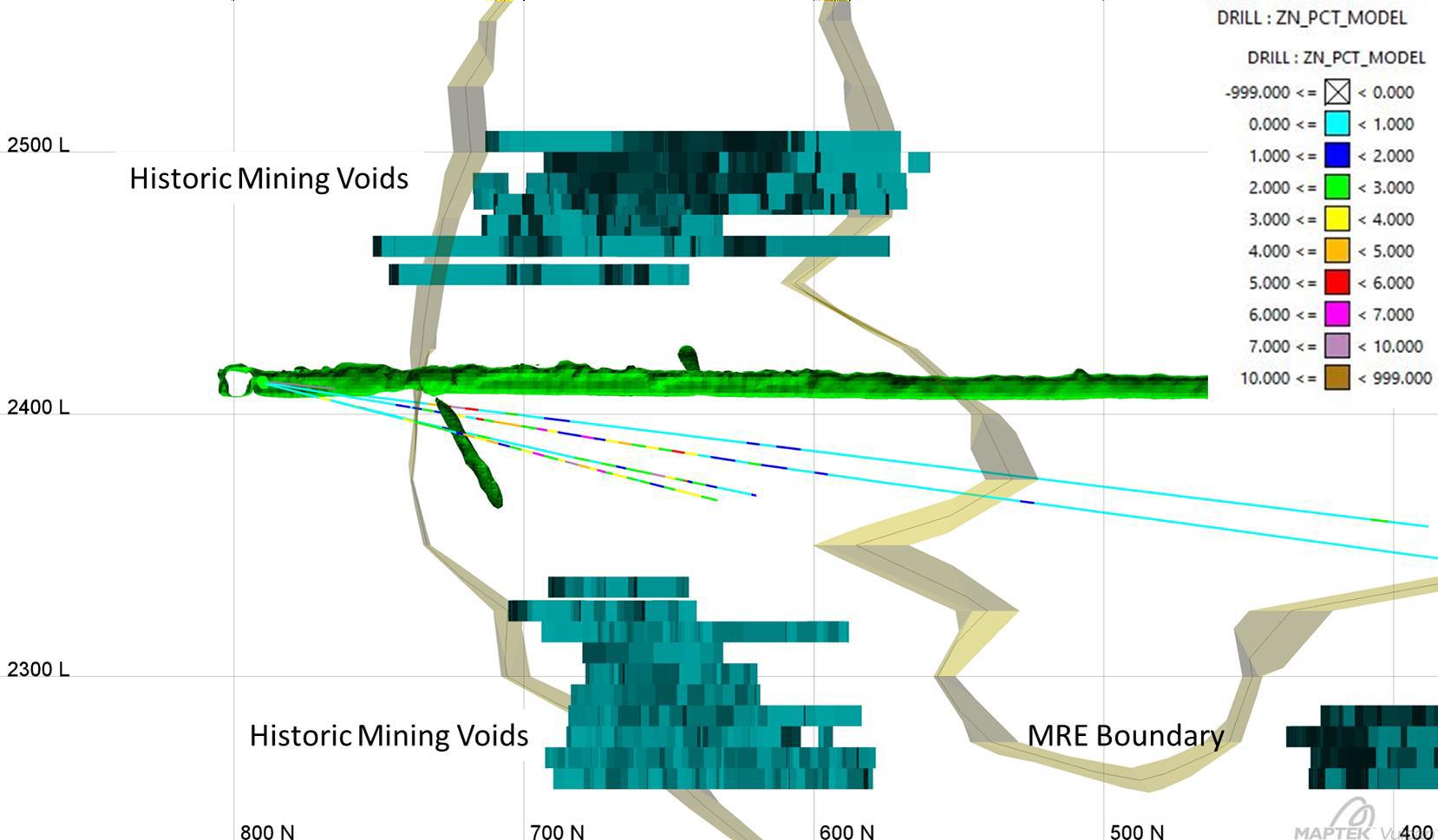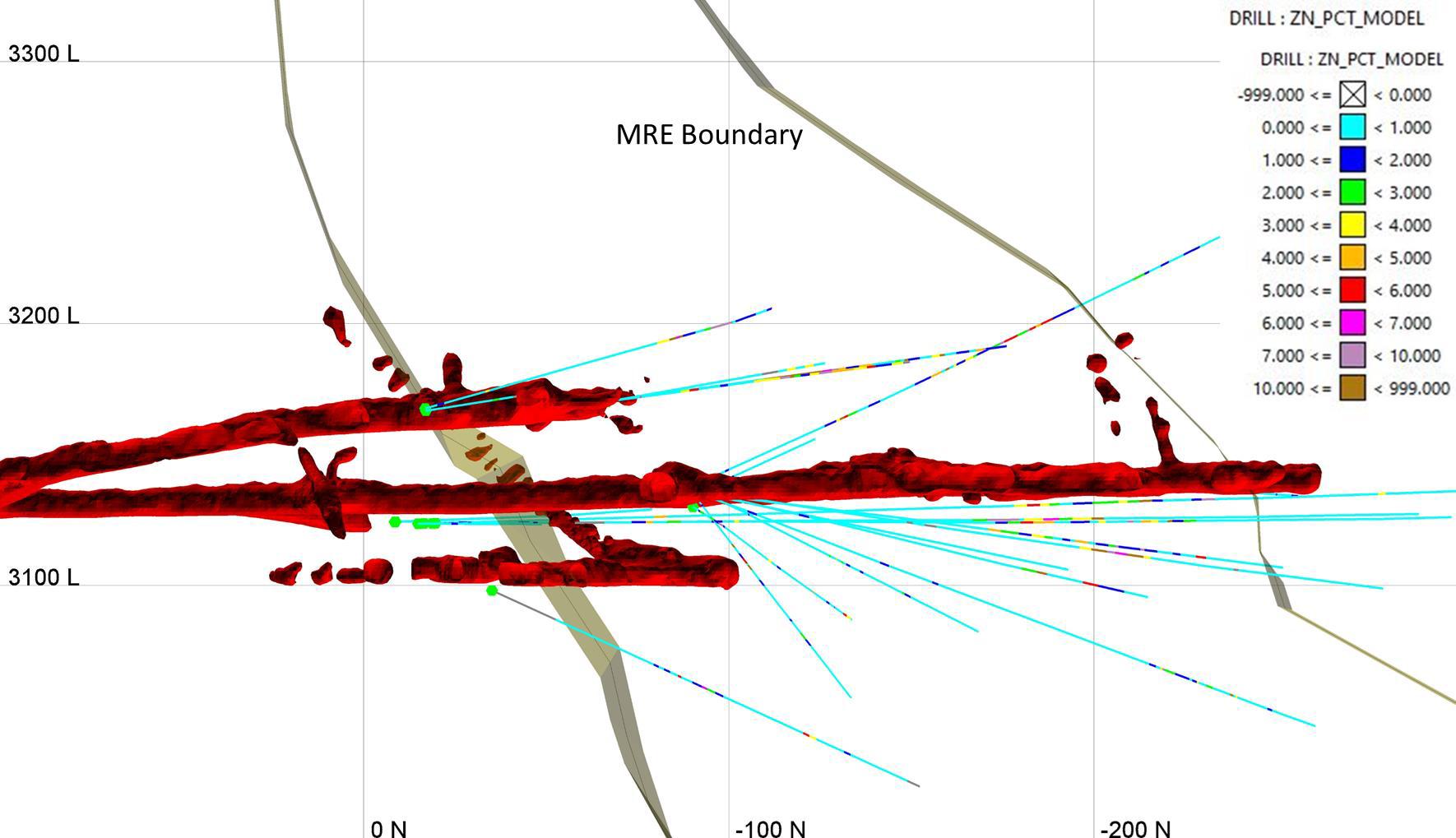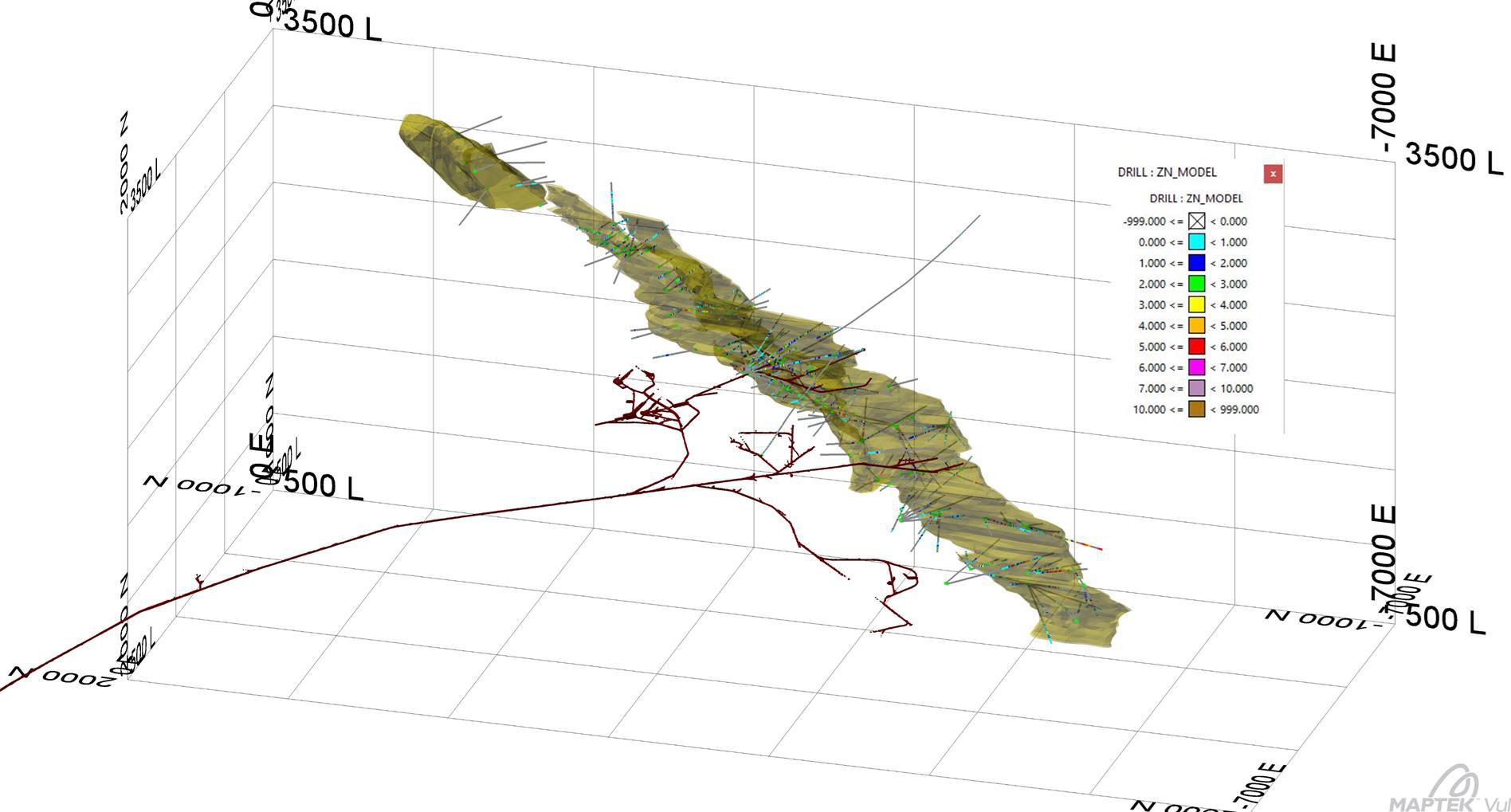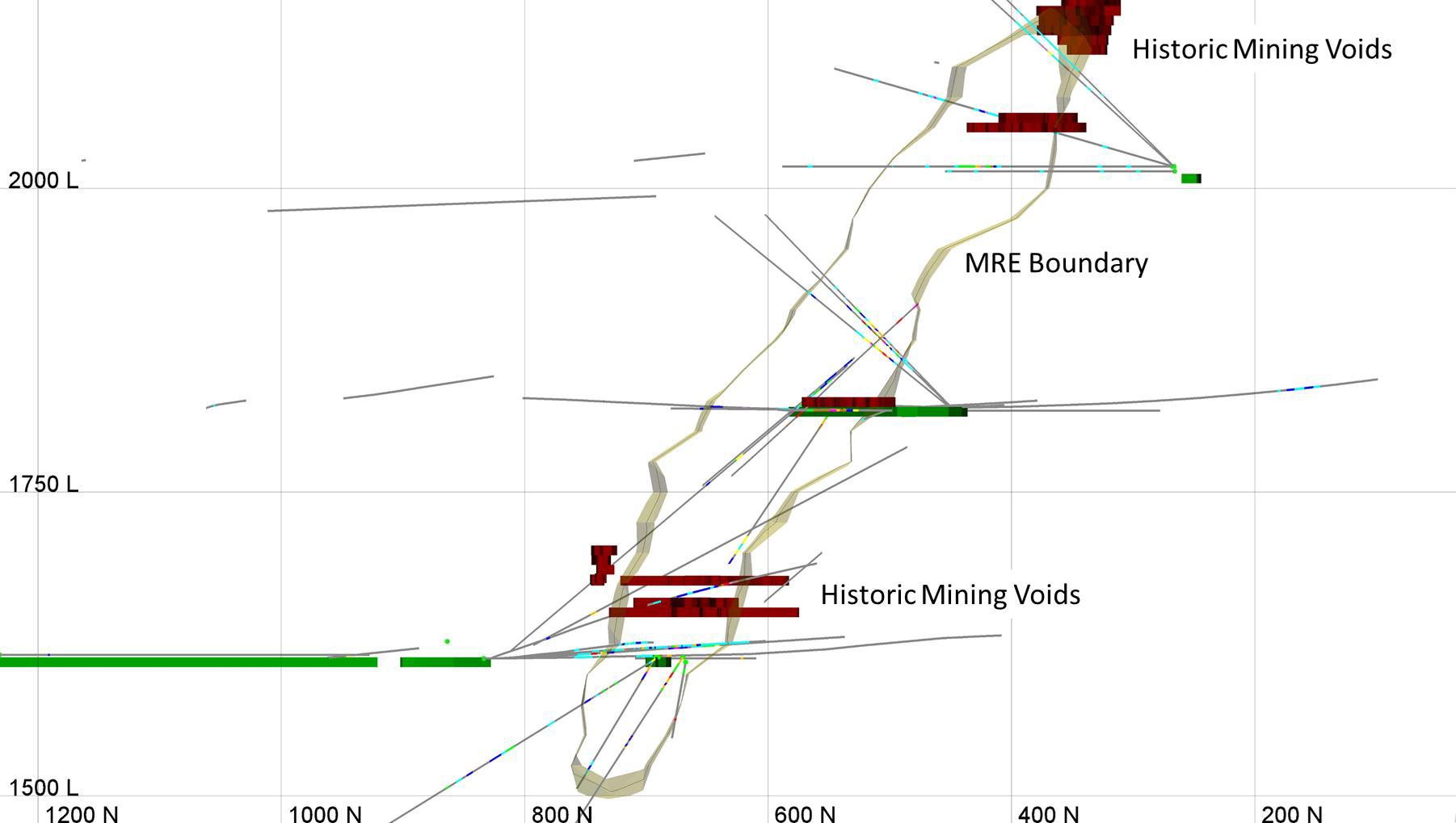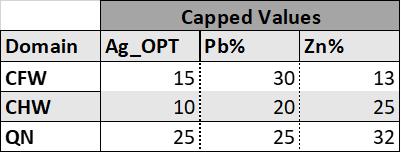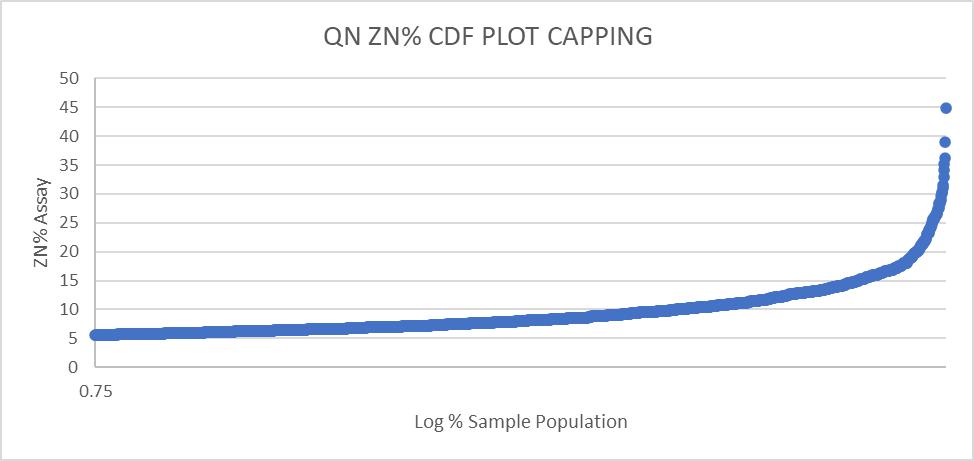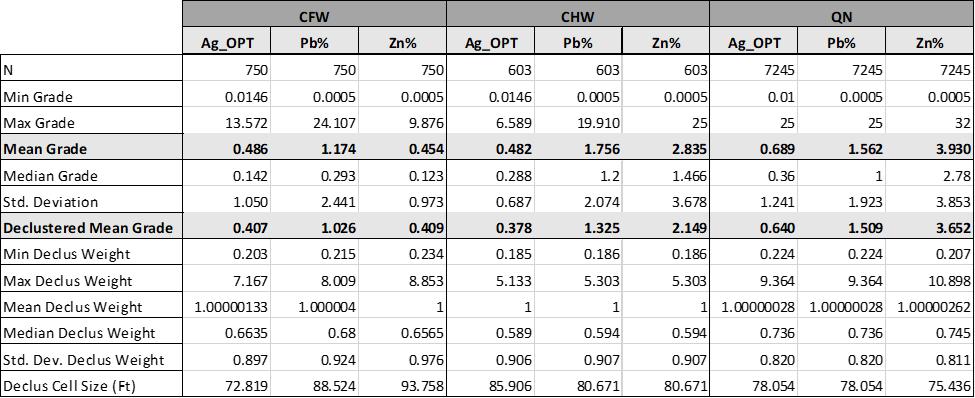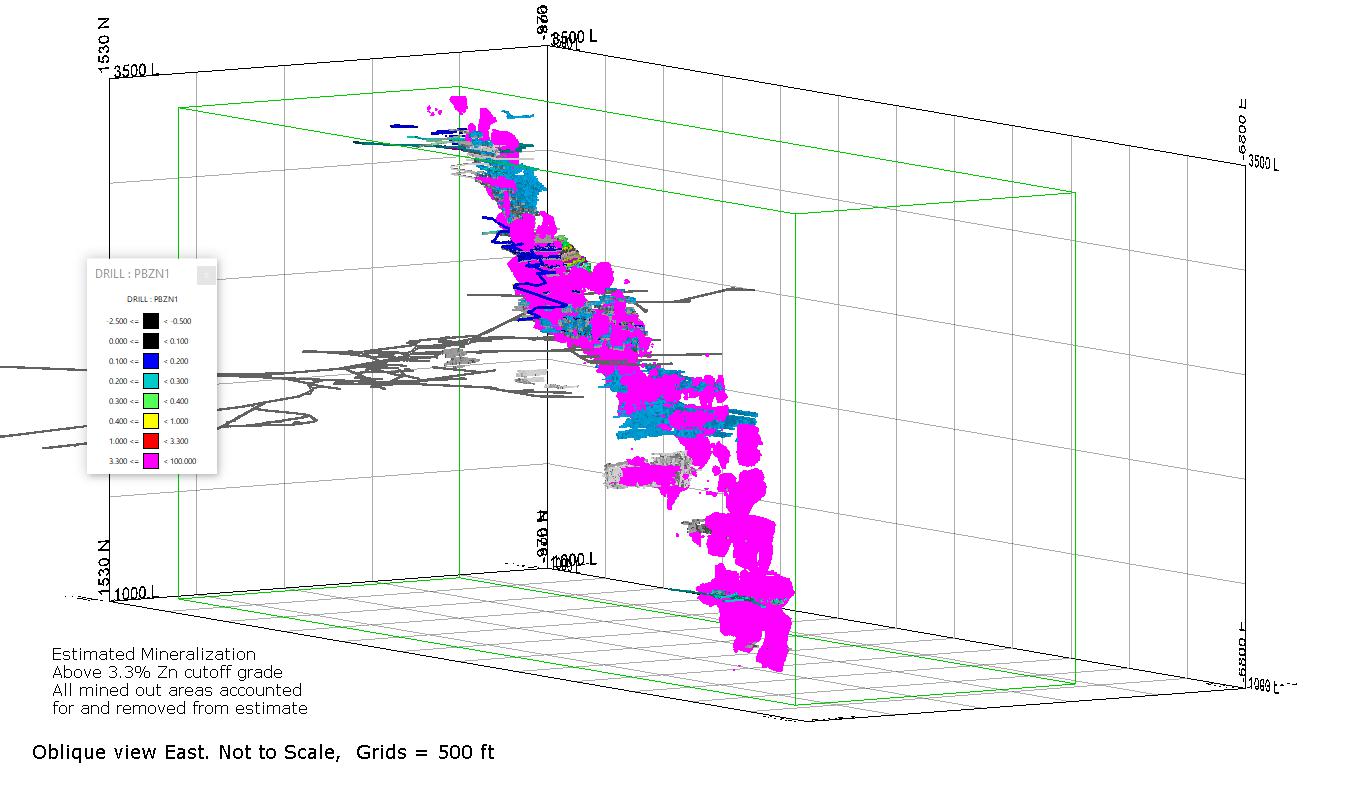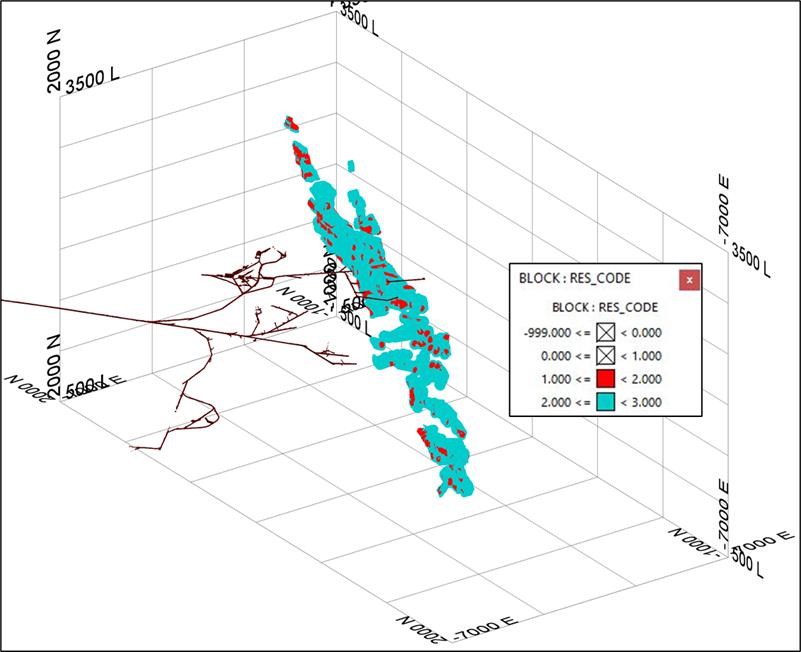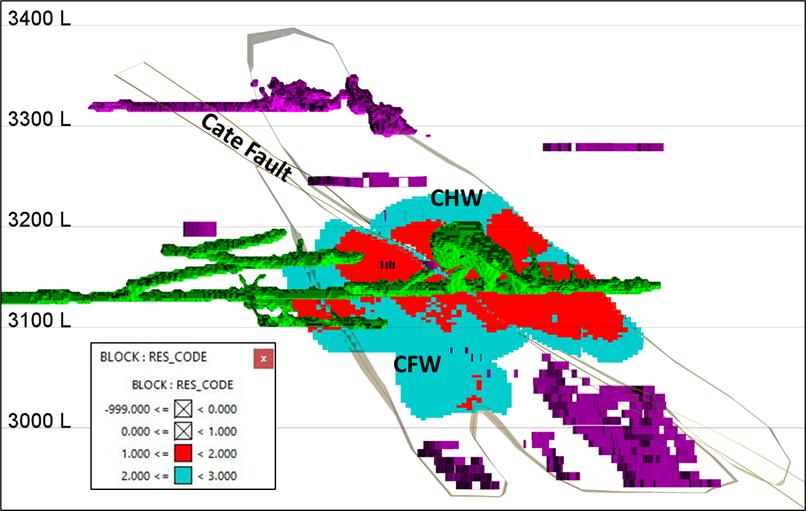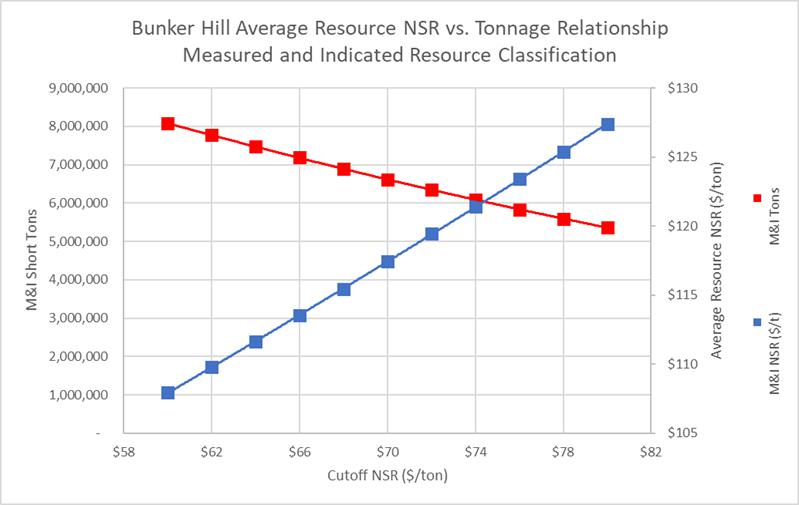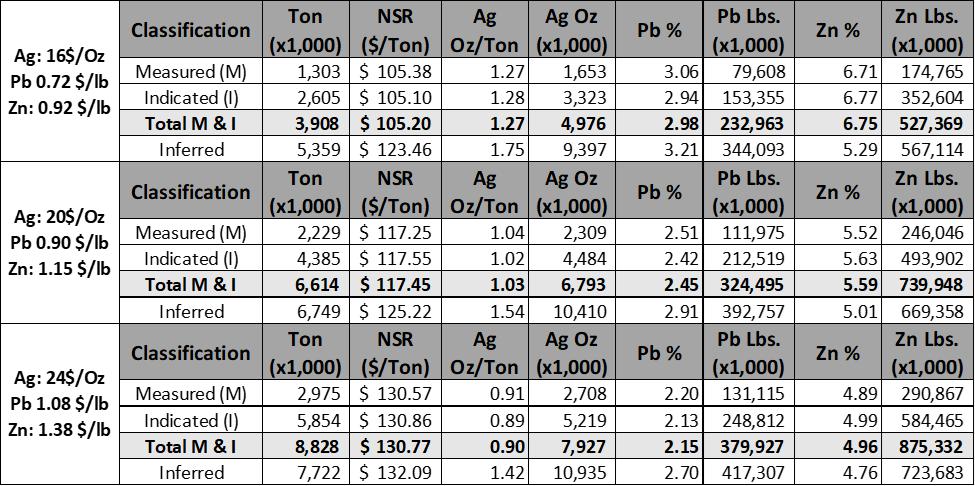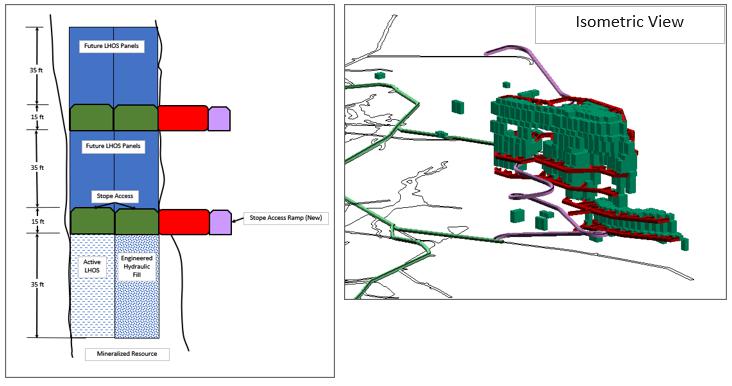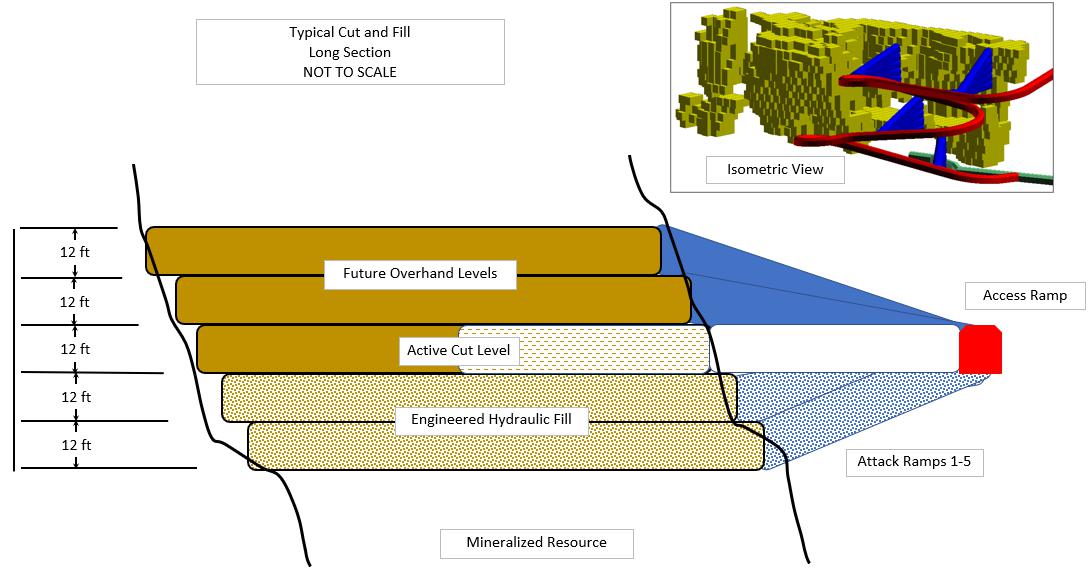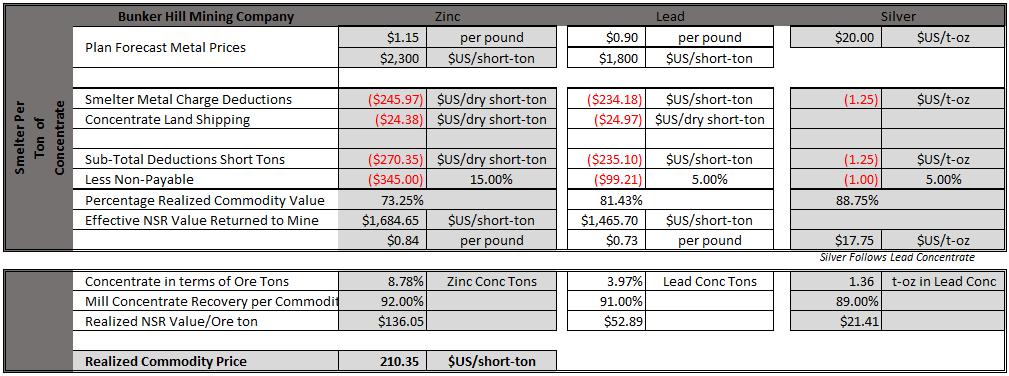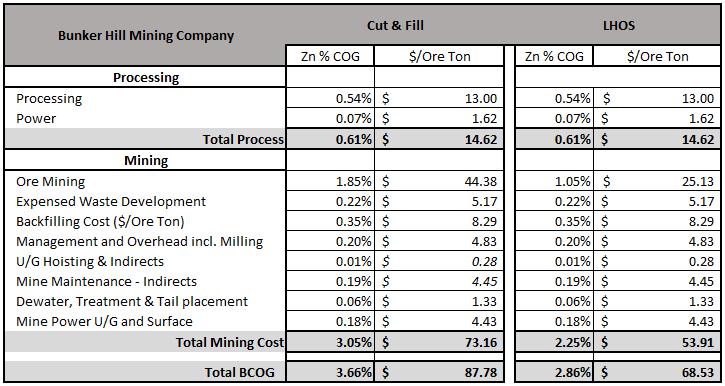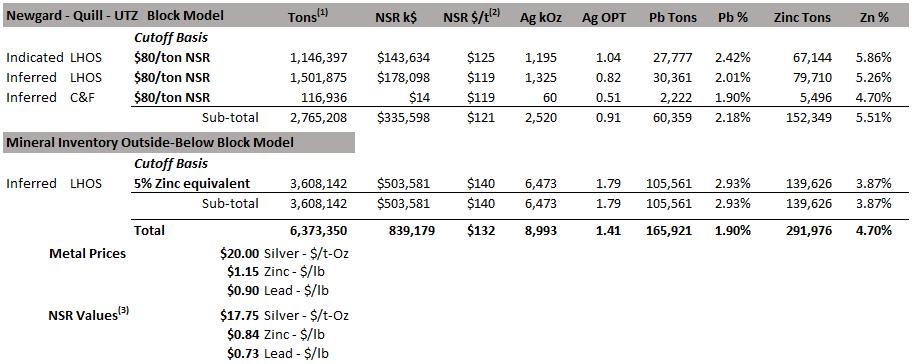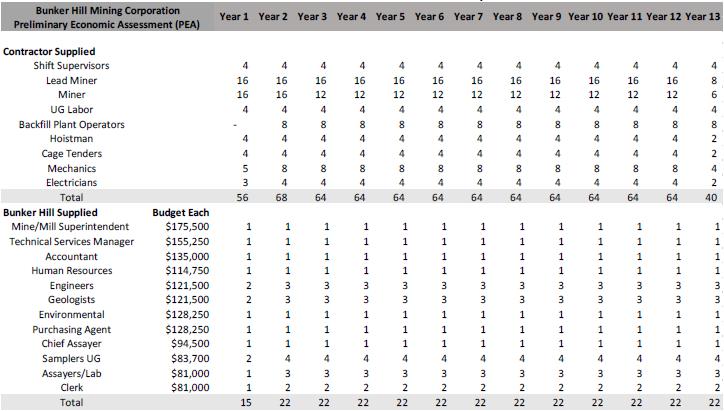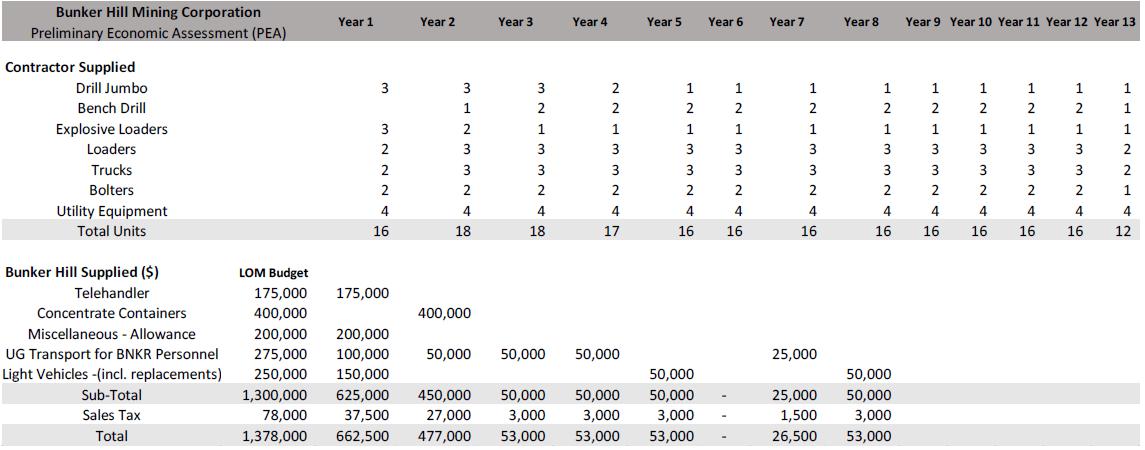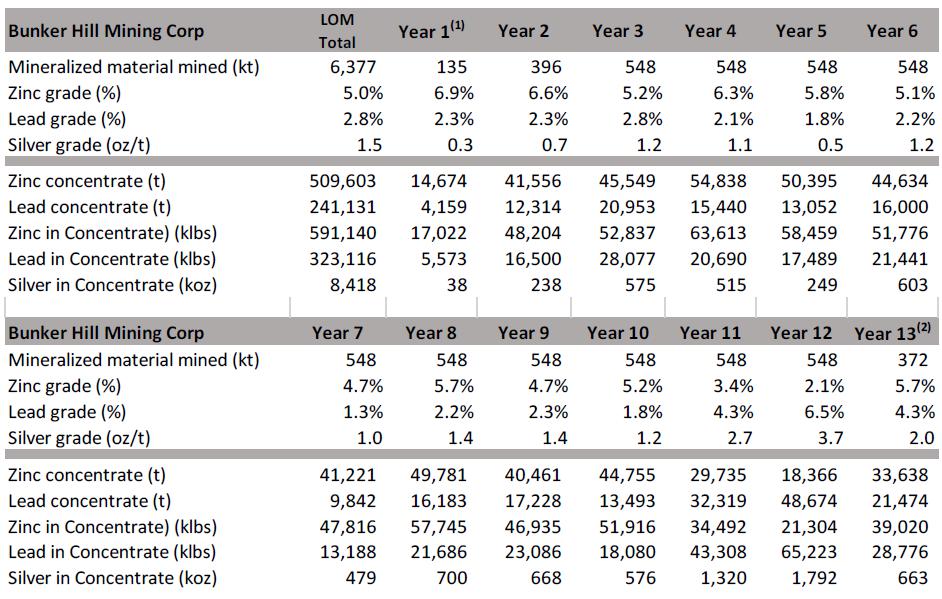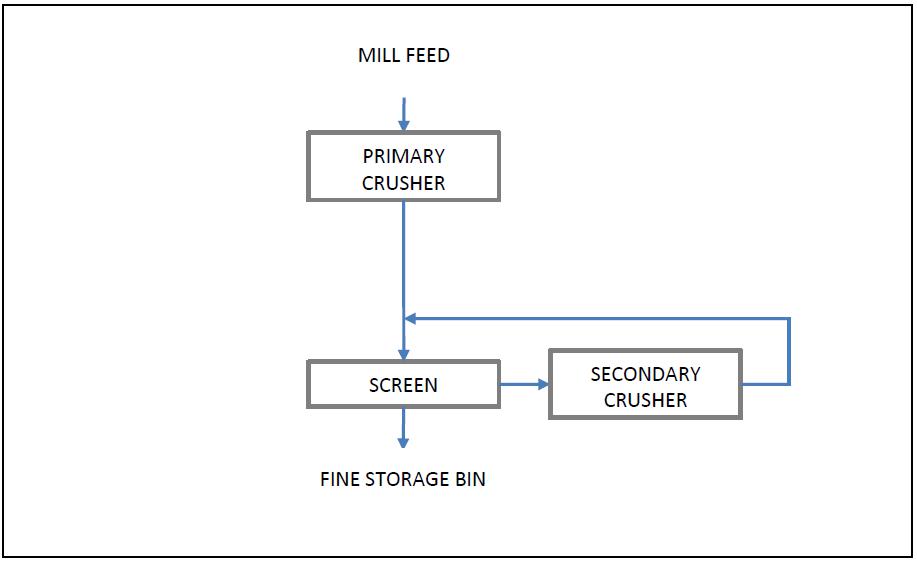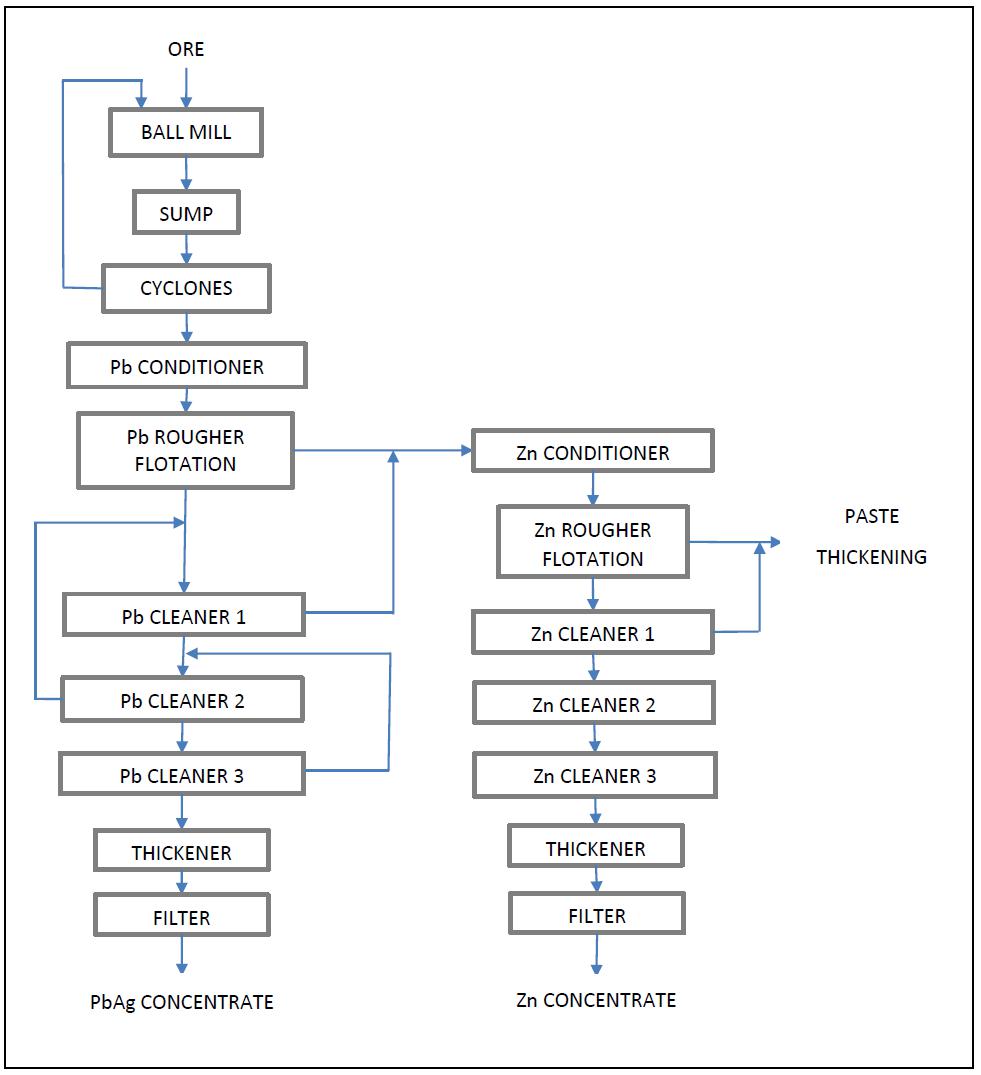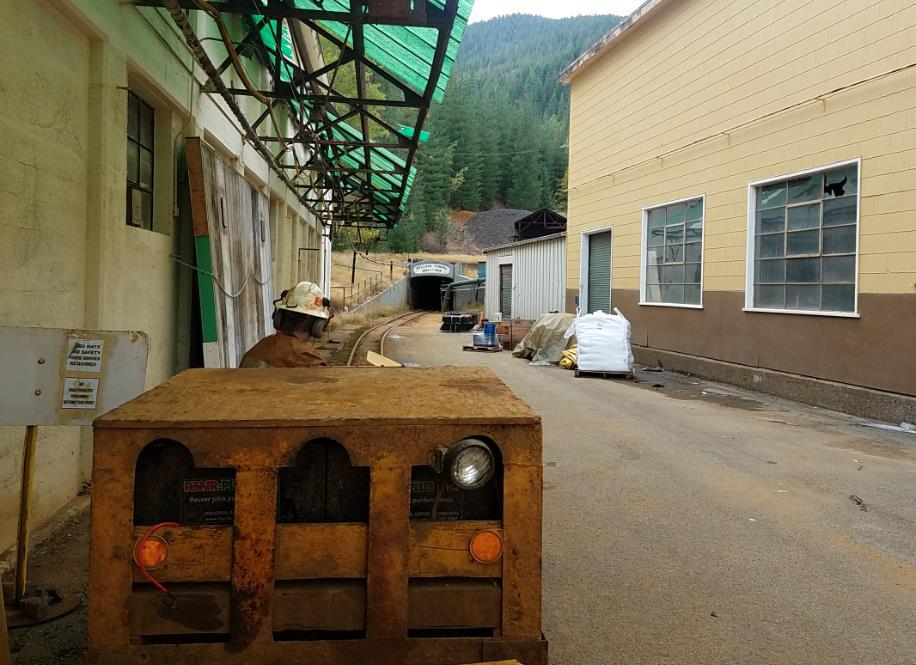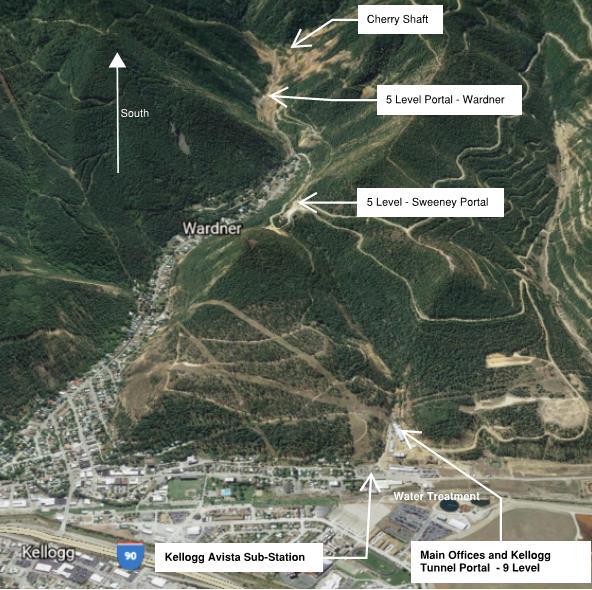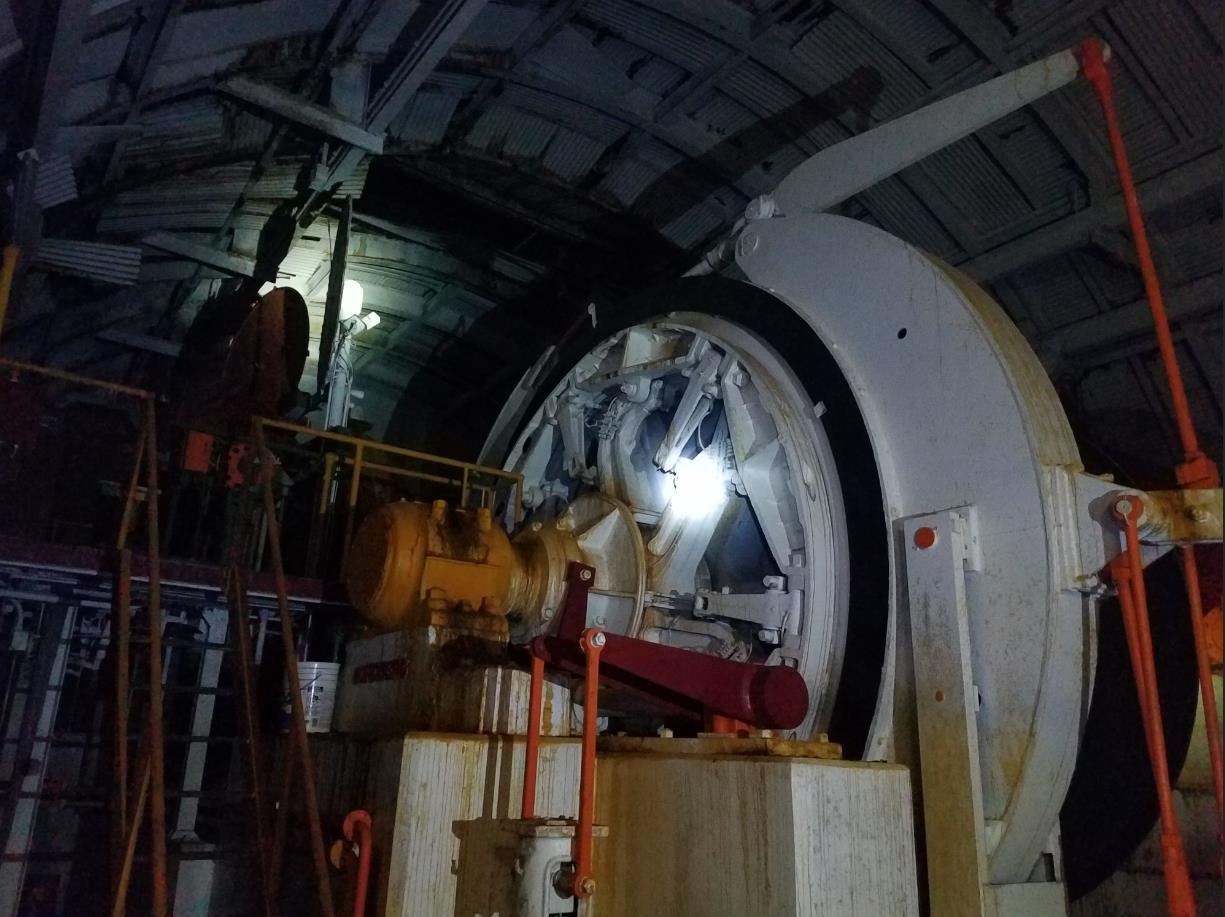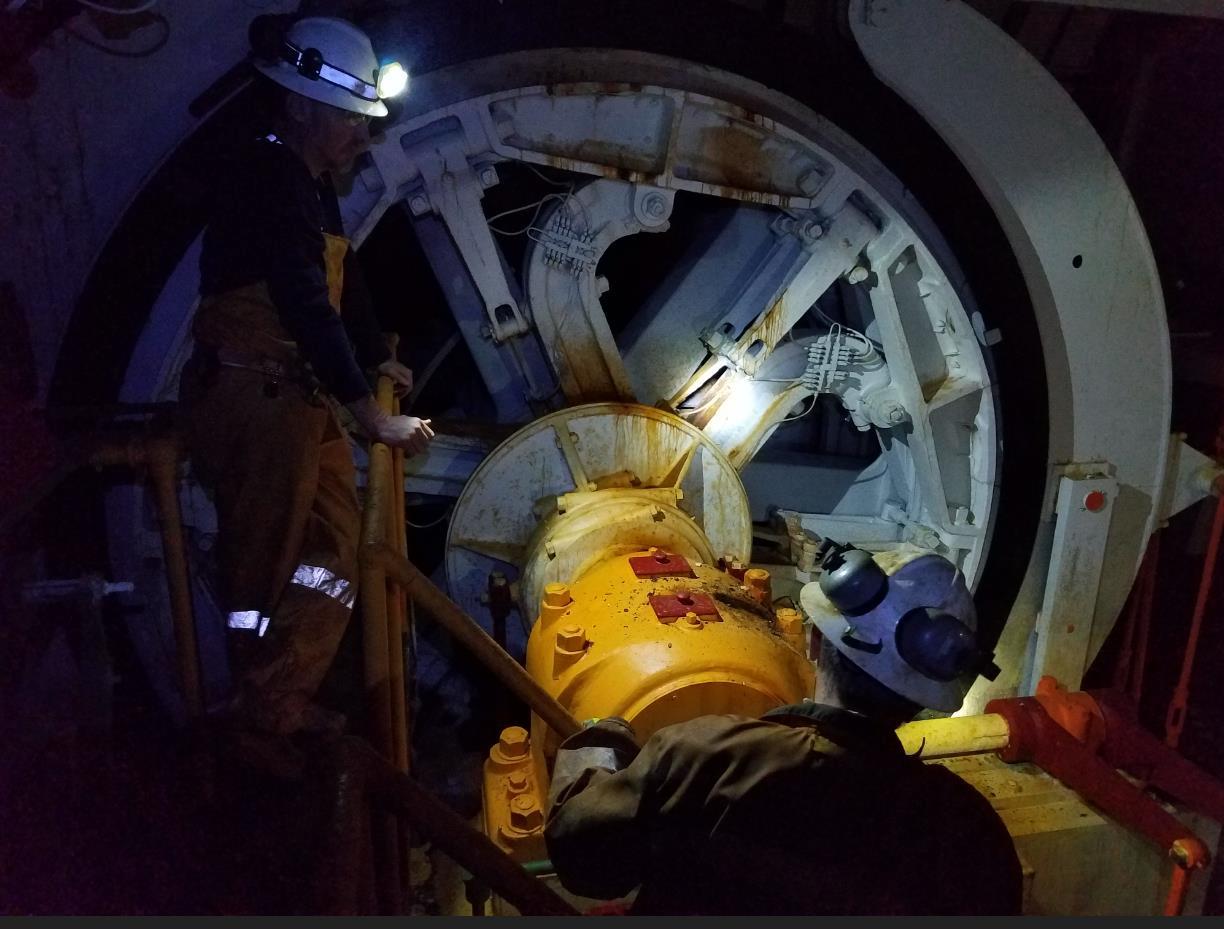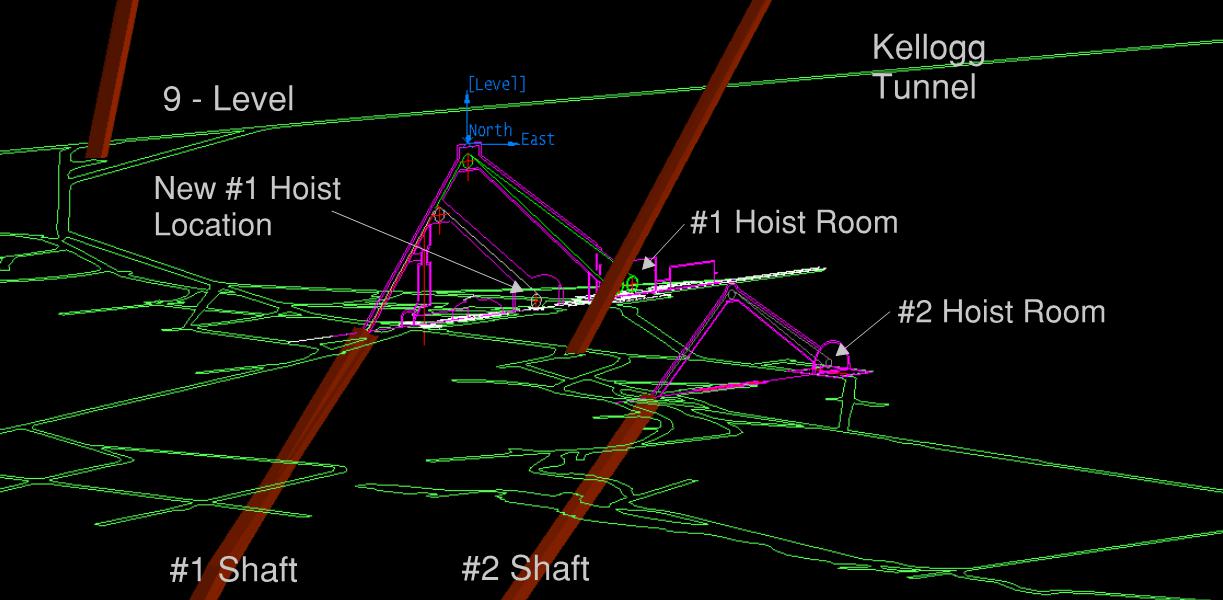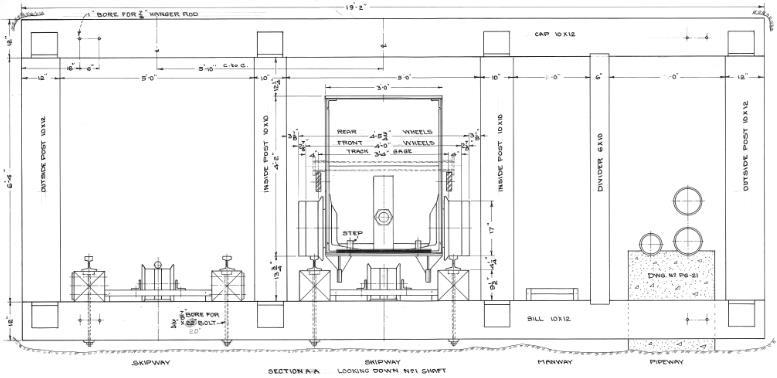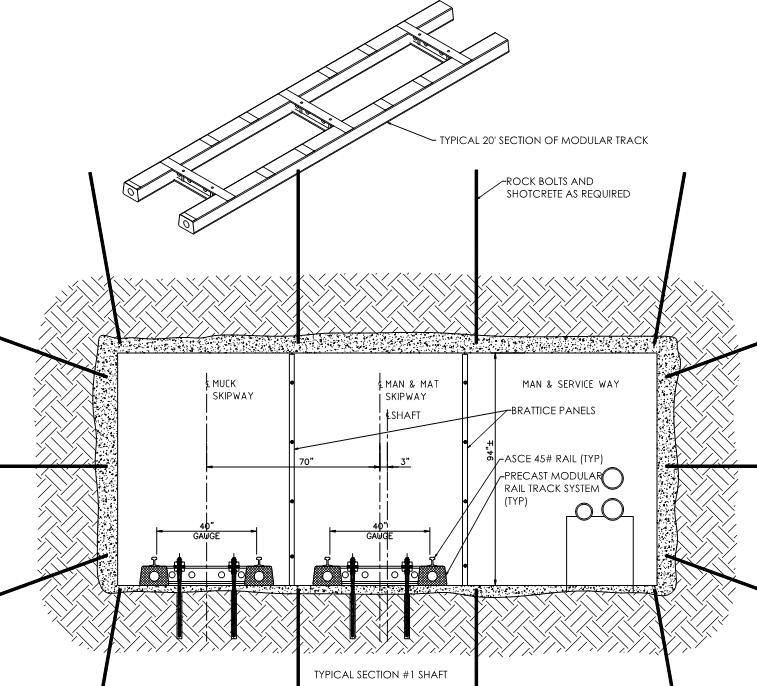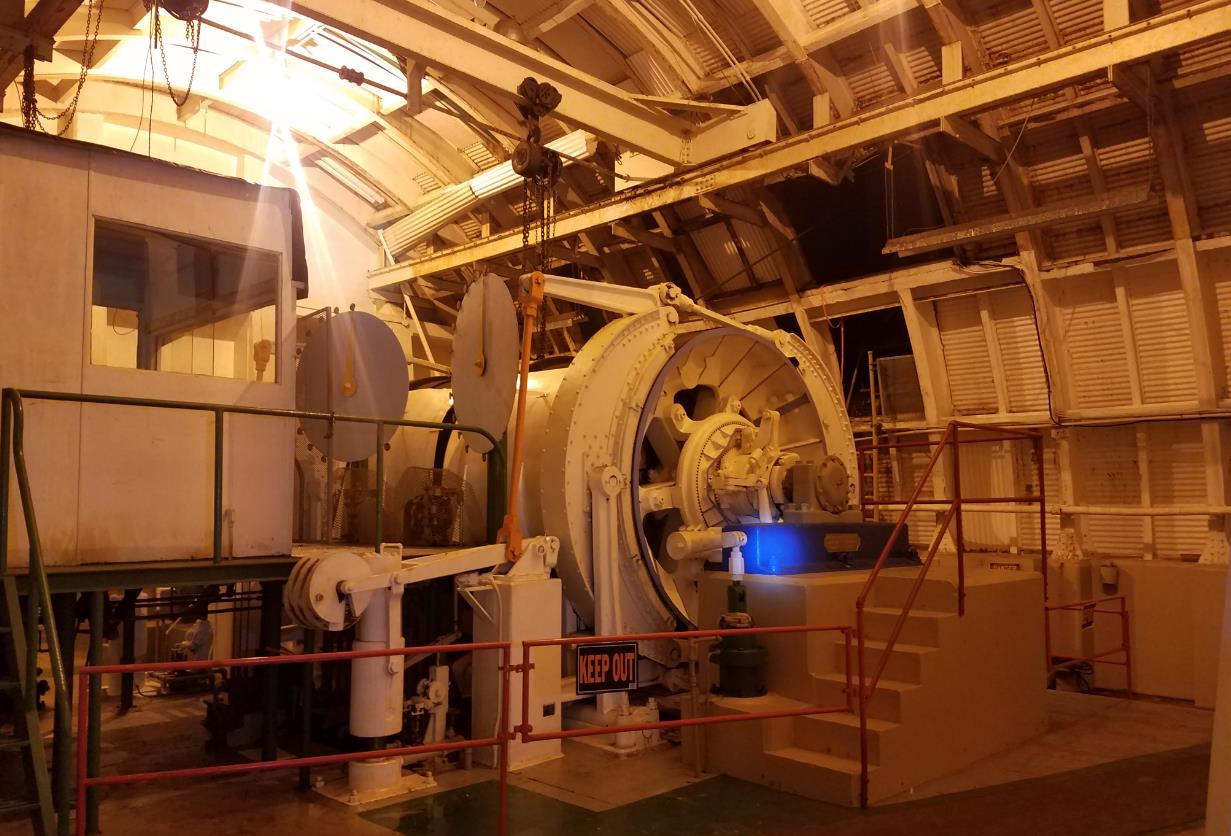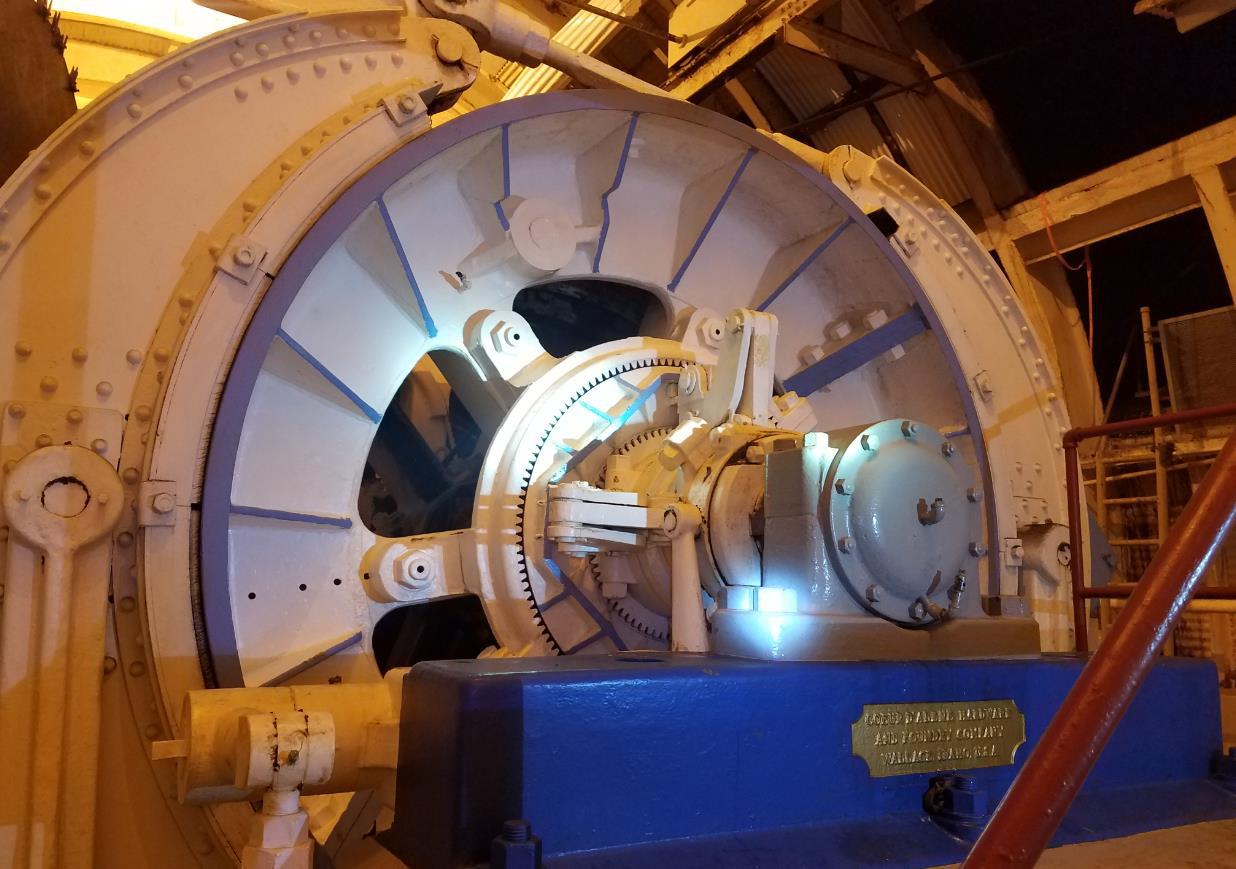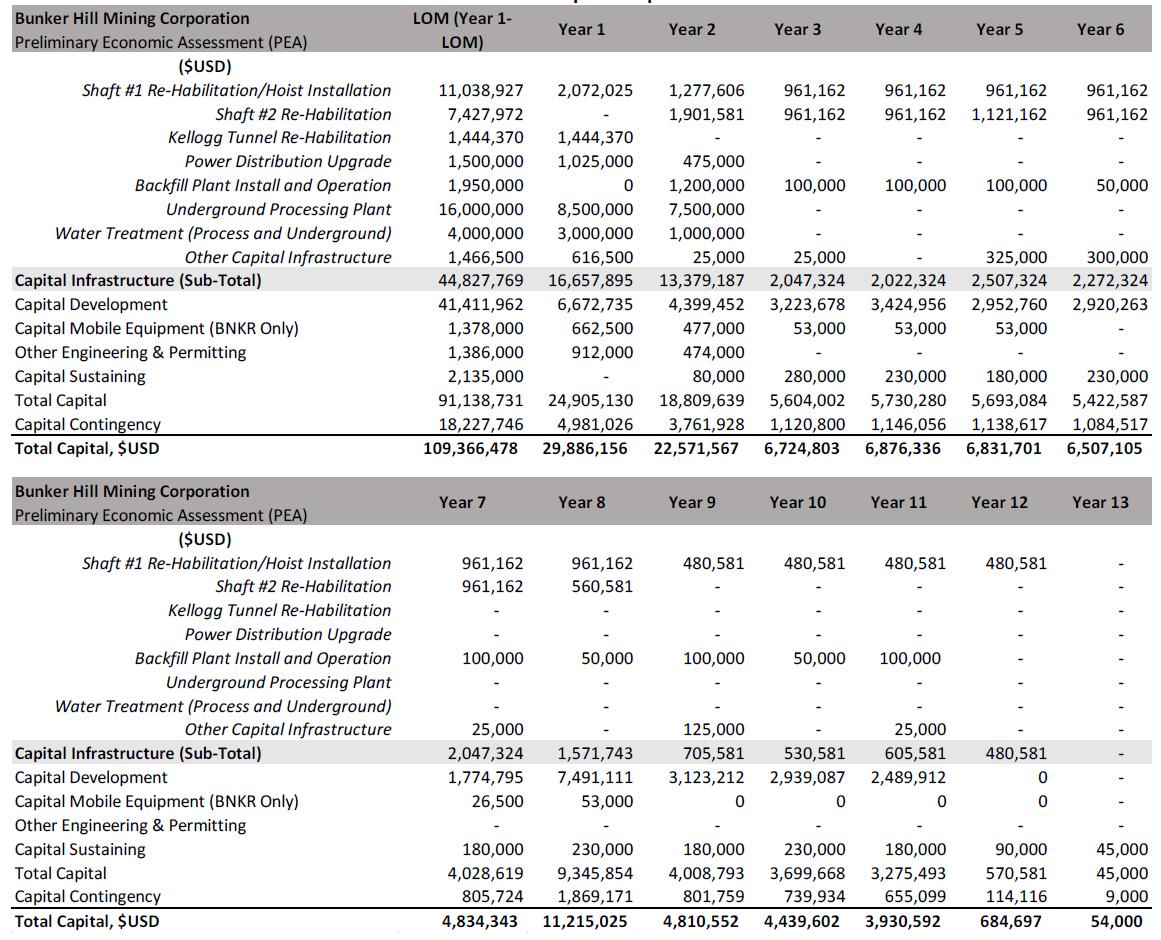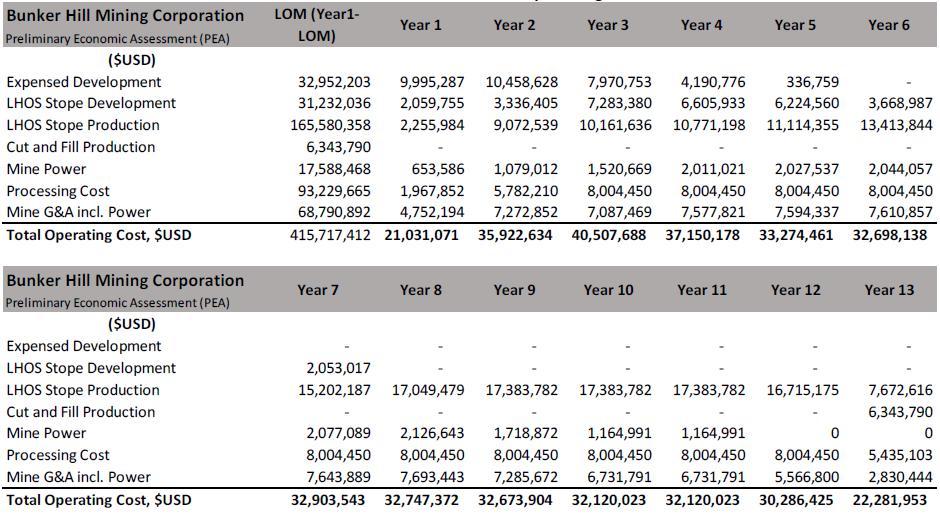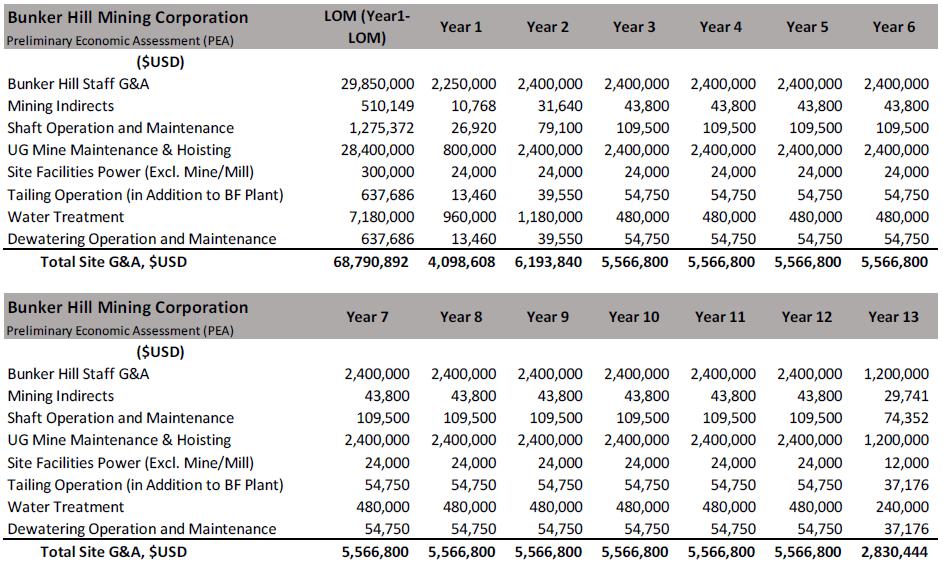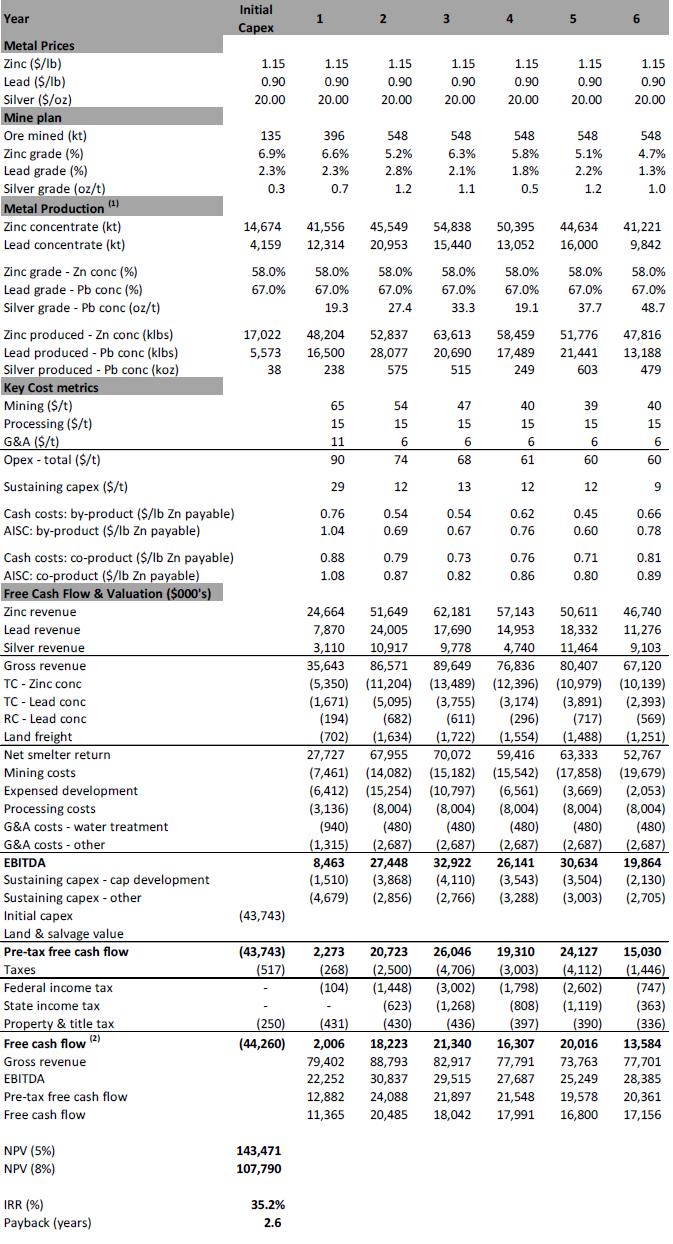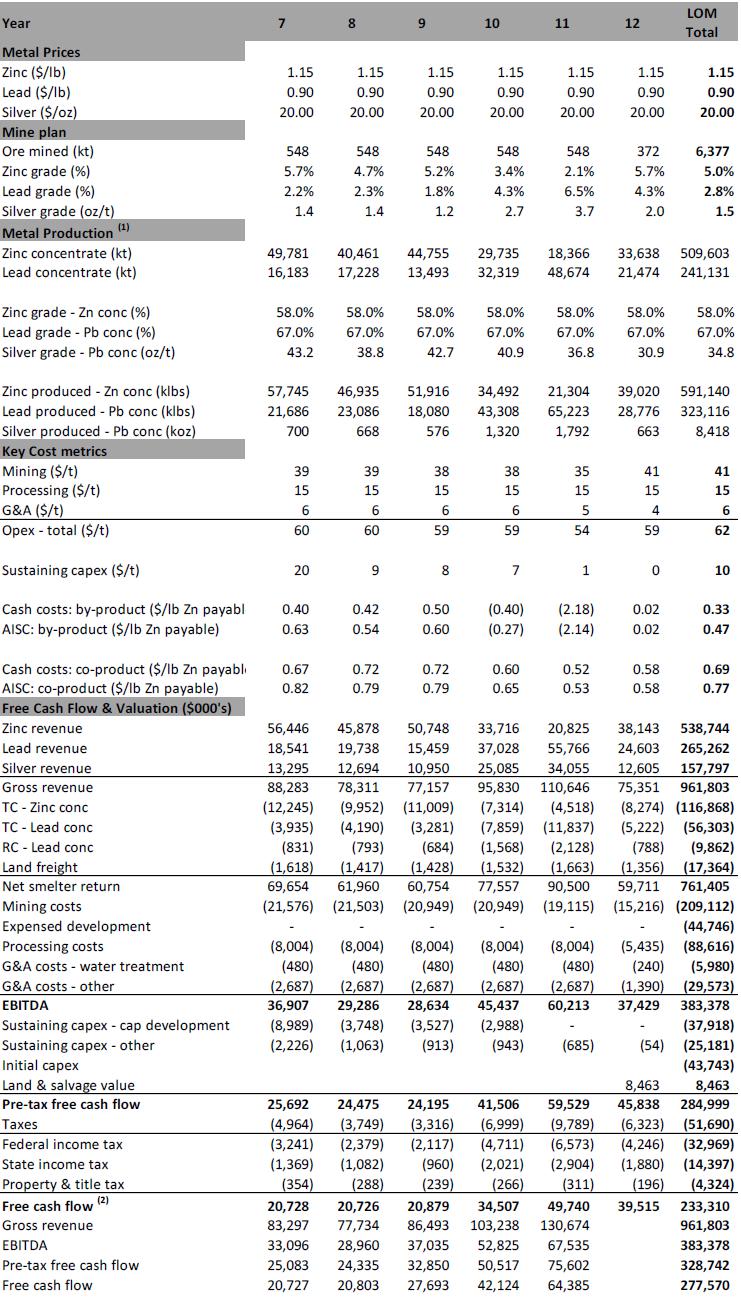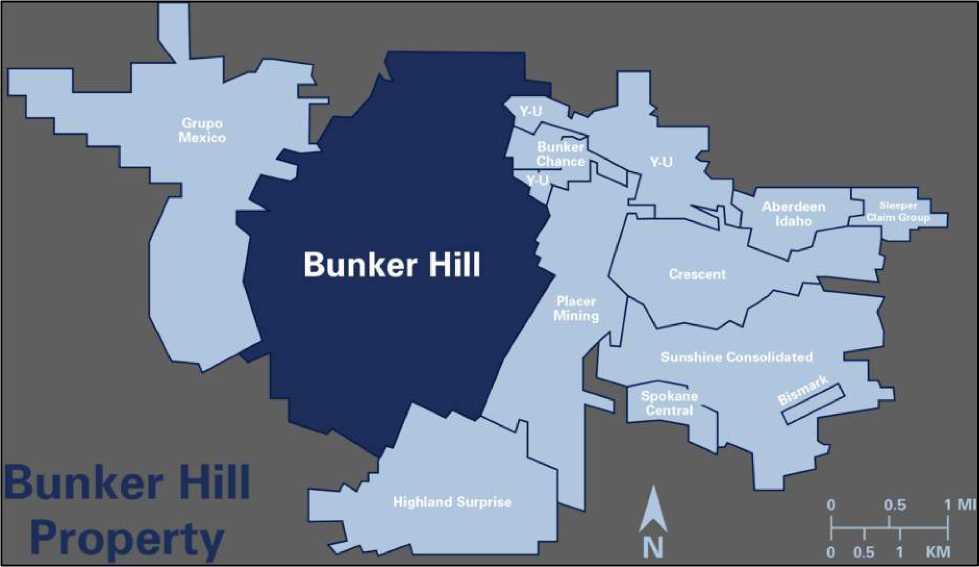UNITED STATES
SECURITIES AND EXCHANGE COMMISSION
Washington, D.C. 20549
FORM
For
the fiscal year ended
OR
For the transition period from to
Commission
file number:
(Exact name of registrant as specified in its charter)
| (State of other jurisdiction of incorporation or organization) | (I.R.S. Employer Identification No.) | |
| (Address of principal executive offices) | (Zip Code) |
(Registrant’s Telephone Number, including area code)
SECURITIES REGISTERED PURSUANT TO SECTION 12(b) OF THE ACT: None
SECURITIES REGISTERED PURSUANT TO SECTION 12(g) OF THE ACT: None
Indicate
by check mark if the Registrant is a well-known seasoned issuer, as defined in Rule 405 of the Securities Act. Yes ☐
Indicate
by check mark if the Registrant is not required to file reports pursuant to Section 13 or 15(d) of the Exchange Act.
Indicate
by check mark whether the Registrant (1) has filed all reports required by Section 13 or 15(d) of the Securities Exchange Act of 1934
(“Exchange Act”) during the preceding 12 months (or for such shorter period that the Registrant was required to file such
reports), and (2) has been subject to such filing requirements for the past 90 days.
Indicate
by check mark whether the Registrant has submitted electronically and posted on its corporate Web site, if any, every Interactive Data
File required to be submitted and posted pursuant to Rule 405 of Regulation S-T (§ 232.405 of this chapter) during the preceding
12 months (or for such shorter period that the registrant was required to submit and post such files).
Indicate by check mark if disclosure of delinquent filers pursuant to Item 405 of Regulation S-K is not contained herein, and will not be contained, to the best of the Registrant’s knowledge, in definitive proxy or information statements incorporated by reference in Part III of this Form 10-K or any amendment to this Form 10-K. ☒
Indicate by check mark whether the registrant is a large accelerated filer, an accelerated filer, a non-accelerated filer, a smaller reporting company or an emerging growth company. See definition of “large accelerated filer,” “accelerated filer,” “smaller reporting company” and “emerging growth company in Rule 12b-2 of the Exchange Act.
| Large accelerated filer ☐ | Accelerated filer ☐ | |||
Smaller
reporting company Emerging
Growth Company |
If an emerging growth company, indicate by check mark if the registrant has elected not to use the extended transition period for complying with any new or revised financial accounting standards provided pursuant to Section 13(a) of the Exchange Act. ☐
Indicate
by check mark whether the Registrant is a shell company, as defined in Rule 12b-2 of the Exchange Act. Yes ☐
As
of June 30, 2021, the aggregate market value of the voting and non-voting shares of common stock of the registrant issued and outstanding
on such date, excluding shares held by affiliates of the registrant as a group, was $
Number of shares of Common Stock outstanding as of March 31, 2022:
TABLE OF CONTENTS
| 2 |
PART I
ITEM 1. BUSINESS
Change in Fiscal Year End
On February 12, 2021, the Company’s Board of Directors (the “Board”) approved a change in our fiscal year end from the last day of June to a calendar fiscal year ending on the last day of December of each year, effective January 1, 2021. In this report, references to “fiscal year” refer to years ending December 31, 2021 and June 30, 2020. References in this report to the “transition period” refer to the six-month period ended December 31, 2020.
Our Business
The Company was incorporated for the purpose of engaging in mineral exploration and development activities. The Company’s sole focus is the Bunker Hill mine (the “Mine”), as described below.
On August 28, 2017, the Company announced that it signed a definitive agreement with Placer Mining Corporation (“Placer Mining”), the current owner of the Mine, for the lease and option to purchase the Mine in Idaho (the “Lease and Option Agreement”).
The Mine remains the largest single producing mine by tonnage in the Coeur d’Alene lead, zinc and silver mining district in Northern Idaho. Historically and according to the Bunker Hill Mines Annual Report 1980, the Mine produced over 35,000,000 tonnes of ore grading on average 8.76% lead, 3.67% zinc, and 155 g/t silver. The Mine is the Company’s only focus, with a view to raising capital to rehabilitate the mine and put it back into production.
On November 1, 2019, the Lease and Option Agreement was amended (the “Amended Agreement”). Under the terms of the Amended Agreement, the Company has an option to purchase the marketable assets of the Mine for a purchase price of $11,000,000 at any time prior to the expiration of the Amended Agreement, payable $6,200,000 in cash, and $4,800,000 in unregistered Common Shares of the Company (calculated using the market price at the time of exercise of the purchase option). Upon signing the Amended Agreement, the Company paid a one-time, non-refundable cash payment of $300,000 to Placer Mining. This payment will be applied to the cash portion of the purchase price upon execution of the purchase option. In the event the Company elects not to exercise the purchase option, the payment shall be treated as an additional care and maintenance payment. An additional term of the Amended Agreement provides for the elimination of all royalty payments that were to be paid to Placer Mining.
Under the terms of the Amended Agreement, during the term of the lease, the Company must make care and maintenance payments in the amount of $60,000 monthly plus other expenses, i.e. taxes, utilities and mine rescue payments.
On July 27, 2020, the Company announced that it secured, for a $150,000 cash payment, a further extension to the Lease and Option, Amended and Extension Agreements to purchase the Mine from Placer Mining (the “Second Extension”). The Second Extension is for a further 18 months and is in addition to the 6-month extension. This Second Extension expires on August 1, 2022. This Second Extension provides the Company with more time to invest the proceeds of the ongoing financing in ways that compile and digitize fully over 95 years of historical and geological data, verify the historical reserves, and explore the high-grade silver targets within the Mine complex.
| 3 |
On November 20, 2020 the Company successfully renegotiated the Amended Agreement. Under the new terms, the purchase price has been decreased from $11,000,000 to $7,700,000, with $5,700,000 payable in cash (with an aggregate of $300,000 to be credited toward the purchase price of the Mine as having been previously paid by the Company and an aggregate of $5,400,000 payable in cash outstanding) and $2,000,000 in Common Shares of the Company. The reference price for the payment in Common Shares will be based on the share price of the last equity raise before the option is exercised. The Company will continue to make a monthly care and maintenance payment of $60,000 to the Lessor in return for on-going technical support to the Company. Under this amendment to the Amended Agreement, the Company’s contingent obligation to settle $1,787,300 of accrued payments due to the Lessor has been waived. Further, under the amendment to the Amended Agreement, the Company is to make an advance payment of $2,000,000 to Placer Mining, which shall be credited toward the purchase price of the Mine when the Company elects to exercise its purchase right. In the event that the Company irrevocably elects not to exercise its purchase right, the advance payment of $2,000,000 will be repaid to the Company within twelve months from the date of such election. The Company made this advance payment, which had the effect of decreasing the remaining amount payable to purchase the Mine to an aggregate of $3,400,000 payable in cash and $2,000,000 in Common Shares of the Company.
As a part of the purchase price, the Amended Agreement also requires payments pursuant to an agreement with the U.S. Environmental Protection Agency (“EPA”) whereby for so long as the Company leases, owns and/or occupies the Mine, the Company will make payments to the EPA on behalf of Placer Mining in satisfaction of the EPA’s claim for cost recovery. These payments, if all are made, will total $20,000,000. The agreement calls for payments starting with $1,000,000 30 days after a fully ratified agreement was signed (which payment was made) followed by $2,000,000 on November 1, 2018 and $3,000,000 on each of the next 5 anniversaries with a final $2,000,000 payment on November 1, 2024. In addition to these payments, the Company is to make semi-annual payments of $480,000 on June 1 and December 1 of each year, to cover the EPA’s estimated costs of maintaining and treating water at the water treatment facility with a true-up to be paid by the Company once the actual costs are determined. The November 1, 2018, December 1, 2018, June 1, 2019, November 1, 2019, November 1, 2020, and November 1, 2021 payments were not made, and the Company engaged in discussions with the EPA in an effort to reschedule these payments in ways that enable the sustainable operation of the Mine as a viable long-term business.
| 4 |
On December 20, 2021, the Company announced the execution of a non-binding term sheet outlining a $50,000,000 non-dilutive project finance package, the execution of a settlement agreement amendment with the EPA, and the execution of an agreement to purchase of the Bunker Hill Mine.
The non-binding term sheet with Sprott Private Resource Streaming and Royalty Corp. (“SRSR”) and other investors outlined a $50,000,000 project financing package that the Company expects to fulfill the majority of its funding requirements to restart the Bunker Hill Mine. The financing package consisted of a $8,000,000 royalty convertible debenture (the “Royalty Convertible Debenture”), a $5,000,000 (increased to $6,000,000) convertible debenture (the “Convertible Debenture”), and a multi-metals stream of up to $37,000,000 (the “Stream”, together with the Royalty Convertible Debenture and the Convertible Debenture, the “Project Financing Package”). The closing for Royalty Convertible Debenture, the Convertible Debenture and the Stream are conditional on a number of matters, including the finalization of definitive documentation, regulatory and stock exchange approvals, and closing of the purchase of Bunker Hill Mine.
The Company consummated the $8,000,000 the Royalty Convertible Debenture in January 2022. The Royalty Convertible Debenture will initially bear interest at an annual rate of 9.0% payable in cash or Common Shares at the Company’s option, until such time that SRSR elects to convert a royalty, with such conversion option expiring at the earlier of advancement of the Stream or 18 months. In the event of conversion, the Royalty Convertible Debenture will cease to exist and the Company will grant a royalty for 1.85% of life-of-mine gross revenue from mining claims considered to be historically worked, contiguous to current accessible underground development, and covered by the Company’s 2021 ground geophysical survey (the “SRSR Royalty”). A 1.35% rate will apply to claims outside of these areas. The Royalty Convertible Debenture will initially be secured by a share pledge of the Company’s operating subsidiary, Silver Valley, until such time that a full security package is put in place. In the event of non-conversion, the principal of the Royalty Convertible Debenture will be repayable in cash.
The Company also consummated the $6,000,000 Convertible Debenture in January 2022, which was increased from a previously-announced $5,000,000. The Convertible Debenture will initially bear interest at an annual rate of 7.5%, payable in cash or shares at the Company’s option, and a maturity of 18 months from the closing of the Royalty Convertible Debenture. Until the closing of the Stream, the Convertible Debenture is convertible into Common Shares at a price of C$0.30 per Common Share, subject to stock exchange approval. Alternatively, SRSR may elect to retire the Convertible Debenture with the cash proceeds from the Stream. The Company may elect to repay the Convertible Debenture early; if SRSR elects not to exercise its conversion option at such time, a minimum of 12 months of interest would apply.
Subject to SRSR internal approvals, further technical and other diligence, and satisfactory definitive documentation, the Company expects to close the Stream concurrent with a formal construction decision being made by the end of Q2 2022. A minimum of $27,000,000 and a maximum of $37,000,000 (the “Stream Amount”) will be made available under the Stream, at the Company’s option, once the conditions of availability of the Stream have been satisfied. Assuming the maximum funding of $37,000,000 is drawn, the Stream would apply to 10% of payable metals sold until a minimum quantity of metal is delivered consisting of, individually, 55 million pounds of zinc, 35 million pounds of lead, and 1 million ounces of silver. Thereafter, the Stream would apply to 2% of payable metals sold. If the Company elects to draw less than $37,000,000 under the Stream, the percentage and quantities of payable metals streamed will adjust pro-rata. The delivery price of streamed metals will be 20% of the applicable spot price.
The Company may buy back 50% of the Stream Amount at a 1.40x multiple of the Stream Amount between the second and third anniversary of the date of funding, and at a 1.65x multiple of the Stream Amount between the third and fourth anniversary of the date of funding. The Company will be permitted to incur additional indebtedness of $15,000,000 and a cost over-run facility of $13,000,000 from other financing counterparties.
Effective December 19, 2021, the Company entered into an amended Settlement Agreement between the Company, Idaho Department of Environmental Quality, US Department of Justice and the EPA (the “Amended Settlement”). Upon entering the Amended Settlement, the Company is now fully compliant with its payment obligations to these parties. The Amended Settlement modifies the payment schedule and payment terms for recovery of historical environmental response costs at Bunker Hill Mine by the EPA. A total of $19,000,000 remains to be paid by the Company. The new payment schedule includes a $2,000,000 payment to the EPA within 30 days of the execution of this Amended Settlement. The remaining $17,000,000 will be paid on the following dates:
| Date | Amount | |||
| November 1, 2024 | $ | 3,000,000 | ||
| November 1, 2025 | $ | 3,000,000 | ||
| November 1, 2026 | $ | 3,000,000 | ||
| November 1, 2027 | $ | 3,000,000 | ||
| November 1, 2028 | $ | 3,000,000 | ||
| November 1, 2029 | $2,000,000 plus accrued interest | |||
| 5 |
The Amended Settlement includes additional payment for outstanding water treatment costs that have been incurred over the period from 2018 through 2020. This $2,900,000 payment will be made within 90 days of execution of this Amended Settlement.
In addition to the changes in payment terms and schedule, the Company has committed to securing financial assurance in the form of performance bonds or letters of credit deemed acceptable to the EPA. The financial assurance will total $17,000,000, corresponding to the Company’s obligations to be paid in the 2024-2029 period as outlined above, that can be drawn on by the EPA in the event of non-performance by the Company (the “Financial Assurance”). The amount of the bonds will decrease over time as individual payments are made. If the Company does not post the Financial Assurance within 90 days of execution of the Amended Settlement, it must issue an irrevocable letter of credit for $9,000,000. The EPA may draw on this letter of credit after an additional 90 days if the Company is unable to either put the Financial Assurance in place or make payment for the full $17,000,000 of remaining historical cost recovery sums. In the event neither occurs, the terms of the initial Settlement Agreement will be reinstated. On March 22, 2022, the Company reported that in consultation with the EPA, it has committed to meet the $2,900,000 payment and Financial Assurance obligations by 180 days from the effective date of the Amended Settlement Agreement.
On January 10, 2022, the Company announced that following the approval of the transaction by Placer Mining Corp. shareholders and satisfaction of other closing conditions, the purchase of the Bunker Hill Mine closed on January 7, 2022. The terms of the purchase were modified to $5,400,000 in cash, from $3,400,000 of cash and $2,000,000 of Common Shares. Concurrently, the Royalty Convertible Debenture in the amount of $8,000,000 also closed as definitive documentation and all closing conditions were met.
On January 31, 2022, the Company announced that following the satisfaction of all closing conditions, including completion of definitive documentation and a full security package, the Convertible Debenture closed on January 28, 2022. The parties agreed to amend the funding to $6,000,000, an increase of $1,000,000 from the previously envisaged amount of $5,000,000, reflecting increased demand from Sprott and other investors. The terms of the Convertible Debenture are unchanged from the Company’s news release of December 20, 2021 as described above.
On March 9, 2022, the Company announced a private placement of up to C$15,000,000 of special warrants of the Company (the “Special Warrants”). The Company intends to use the net proceeds of the offering to fund the restart and development of the Mine, outstanding obligations to the EPA, and for general corporate purposes.
In support of plans to rapidly restart the Mine, the Company worked systematically through 2020 and 2021 to delineate mineral resources and conduct various technical studies. If successful in closing the Stream, together with securing additional financing requirements, which may include additional indebtedness of $15,000,000 and a cost over-run facility of $13,000,000, management believes that it is well positioned to execute this strategy.
Between April and July 2020, the Company worked to validate in accordance with National Instrument 43-101 – Standards of Disclosure for Mineral Projects (“NI 43-101”) standards up to 9 million tons of primarily zinc ore contained within the UTZ, Quill and Newgard Ore Bodies. This involved over 9,000 feet of drilling from Underground and extensive sampling from the many open stopes above the water-level. These zones could provide the majority of the early feed if the Company were to achieve a restart of the Mine.
On September 28, 2020, the Company announced its maiden mineral resources estimate consisting of a total of 8.9 million tons in the Inferred category, containing 11 million ounces of silver, 880 million pounds of zinc, and 410 million pounds of lead, which represented the result of the Company’s extensive drilling and sampling efforts conducted between April and July 2020.
On November 12, 2020, the Company announced the launch of a Preliminary Economic Assessment (“PEA”) to assess the potential for a rapid restart of the Mine for minimal capital by focusing on the de-watered upper areas of the Mine, utilizing existing infrastructure, and based on truck haulage and toll milling methods.
On January 26, 2021, the Company reported continued progress towards completing the previously announced PEA, and further detail regarding the potential parameters of the restart, including: i) low up-front capital costs through utilization of existing infrastructure, potentially enabling a rapid production restart; ii) a staged approach to mining, potentially supporting a long-life operation; iii) underground processing and tailings deposition with potential for high recovery rates; iv) development of a sustainable operation with minimal environmental footprint; and v) potential increase in the existing resource base.
| 6 |
On March 19, 2021, the Company announced a mineral resource estimate consisting of a total of: 4.4 million tons in the Indicated category, containing 3.0 million ounces of silver, 487 million pounds of zinc, and 176 million pounds of lead; 5.6 million tons in the Inferred category, containing 8.3 million ounces of silver, 548 million pounds of zinc, and 312 million pounds of lead.
On April 20, 2021, the Company announced the results of its PEA for the Mine. The PEA contemplates a $42,000,000 initial capital cost (including 20% contingency) to rapidly restart the Mine, generating approximately $20,000,000 of annual average free cash flow over a 10-year mine life, and producing over 550 million pounds of zinc, 290 million pounds of lead, and 7 million ounces of silver at all-in sustaining costs of $0.65 per payable pound of zinc (net of by-products). The PEA contemplates a low environmental footprint, long-term water management solution, and significant positive economic impact for the Shoshone County, Idaho community. The PEA is based on the Mineral Resource Estimate described above and published on May 3, 2021, following the drilling program conducted in 2020 and early 2021 to validate the historical reserves. The PEA includes a mining inventory of 5.5Mt, which represents a portion of the 4.4Mt Indicated mineral resource and 5.6Mt Inferred mineral resource that comprise the Mineral Resource Estimate. The PEA is preliminary in nature and includes Inferred mineral resources that are considered too speculative geologically to have the economic considerations applied to them that would enable them to be categorized as mineral reserves. There is no certainty that the project described in the PEA will be realized. Mineral resources that are not mineral reserves do not have demonstrated economic viability.
On May 3, 2021, the Company filed a technical report with further detail regarding the mineral resource estimate announced on March 19, 2021, entitled “Technical Report for the Bunker Hill Mine, Coeur d’Alene Mining District, Shoshone County, Idaho, USA” with an effective date of March 22, 2021. This technical report was prepared in accordance with the requirements of subpart 1300 of Regulation S-K (the “SEC Mining Modernization Rules”) and Canadian National Instrument 43-101 — Standards of Disclosure for Mineral Projects (“NI 43-101”).
On June 4, 2021, the Company filed a technical report entitled “Technical Report And Preliminary Economic Assessment For Underground Milling And Concentration Of Lead, Silver And Zinc At The Bunker Hill Mine, Bunker Hill Mine, Coeur d’Alene Mining District, Shoshone County, Idaho, USA” in support of the PEA that it announced on April 20, 2021 (as described above). This technical report was prepared in accordance with the requirements of the SEC Mining Modernization Rules and NI 43-101
On September 20, 2021, the Company announced the results of an updated PEA for the Mine. The updated PEA contemplates a $44,000,000 initial capital cost (including 20% contingency) to rapidly restart the Mine, generating approximately $25,000,000 of annual average free cash flow over an 11-year mine life, and producing over 590 million pounds of zinc, 320 million pounds of lead, and 8 million ounces of silver at all-in sustaining costs of $0.47 per payable pound of zinc (net of by-products). As with the PEA published on June 4, 2021, the updated PEA is based on the Mineral Resource Estimate described above and published on May 3, 2021, following the drilling program conducted in 2020 and early 2021 to validate the historical reserves. The PEA includes a mining inventory of 6.4Mt, which represents a portion of the 4.4Mt Indicated mineral resource and 5.6Mt Inferred mineral resource that comprise the Mineral Resource Estimate.
On November 3, 2021, the Company filed a technical report entitled “Technical Report And Preliminary Economic Assessment For Underground Milling And Concentration Of Lead, Silver And Zinc At The Bunker Hill Mine, Bunker Hill Mine, Coeur d’Alene Mining District, Shoshone County, Idaho, USA” in support of the updated PEA that it announced on September 20, 2021 (as described above).
On November 30, 2021, the Company announced the completion of an updated mineral resource estimate (the “Mineral Resource Estimate” or “MRE”) for the Bunker Hill Mine consisting of a total of: 6.6 million tons in the Measured and Indicated category, containing 6.8 million ounces of silver, 740 million pounds of zinc, and 324 million pounds of lead; 6.7 million tons in the Inferred category, containing 10.4 million ounces of silver, 669 million pounds of zinc, and 392 million pounds of lead.
On December 29, 2021, the Company filed a technical report entitled “Technical Report And Preliminary Economic Assessment For Underground Milling And Concentration Of Lead, Silver And Zinc At The Bunker Hill Mine, Bunker Hill Mine, Coeur d’Alene Mining District, Shoshone County, Idaho, USA” (the “Technical Report” or “Bunker Hill Technical Report”) in support of the updated MRE that it announced on November 30, 2021 (as described above). This technical report was prepared in accordance with the requirements of the SEC Mining Modernization Rules and NI-43-101 and is filed as an exhibit to the Registration Statement of which this prospectus is a part.
On January 31, 2022, the Company announced the signing of a non-binding Memorandum of Understanding (“MOU”) with Teck Resources Limited (“Teck”) for the purchase of a comprehensive package of equipment and parts inventory from its Pend Oreille site (the “Pend Oreille Process Plant”) in eastern Washington State, approximately 145 miles from the Bunker Hill Mine by road. The package comprises substantially all processing equipment of value located at the site, including complete crushing, grinding and flotation circuits suitable for a planned ~1,500 ton-per-day operation at Bunker Hill, and total inventory of nearly 10,000 components and parts for mill, assay lab, conveyer, field instruments, and electrical spares. The MOU outlines a purchase price under two scenarios, at Teck’s option: an all-cash $2,750,000 purchase price, or a $3,000,000 purchase price comprised of cash and Bunker Hill shares. Each option includes a $500,000 non-refundable deposit, which has been paid by the Company subsequent to the end of the year. On March 7, 2022, the Company announced the signing of an Asset Purchase agreement for the purchase of the Pend Oreille Process Plant. Closing of the transaction remains subject to certain conditions, including payment of the remaining purchase price by May 15, 2022.
| 7 |
On March 3, 2022, the Company announced the purchase of a 225-acre surface land parcel for approximately $200,000. The Company intends this to serve as a strategic asset for the rapid restart of the Mine, optimizing construction efficiency and costs while providing improved access to prospective areas identified by our recent geophysics survey.
Water Management Optimization
In September 2020, the Company began its water management program with the goal of improving the understanding of the Mine’s water system and enacting immediate improvement in the water quality of effluent leaving the Mine for treatment at the Central Treatment Plant (“CTP”). Informed by historical research provided by the EPA, the Company initiated a study of the water system of the Mine to: i) identify of the areas where sulphuric acid (Acid Mine Drainage, or “AMD”) is generated in the greatest and most concentrated quantities, and ii) understand the general flow paths of AMD on its way through and out of the mine as it travels to the CTP.
Leveraging its improved understanding through this study, on February 11, 2021 the Company announced the successful commissioning of a water pre-treatment plant located within the Mine, designed to significantly improve the quality of Mine water discharge, which in turn would support a rapid restart of the Mine. Specifically, the water pre-treatment plant achieves this goal by reducing significantly the amount of treatment required at the CTP, and the associated costs, before the Mine water is discharged into the south fork of the Coeur D’Alene River, removing over 70% of the metals from water before it leaves the Mine, with the potential for further improvements.
In an effort to improve transparency to all stakeholders with regard to the results of this system, the Company launched a water quality tracking platform on its website on March 15, 2021, which uploads real-time data every five minutes and provides an interactive database to allow detailed historical analysis.
Business Operations
The Mine is a lead-silver-zinc Mine. When back in production, the Company intends to mill mineralized material on-site or at a local third-party mill to produce both lead-silver and zinc concentrates which will then be shipped to third party smelters for processing.
Infrastructure
The Mine includes all mining rights and claims, surface rights, fee parcels, mineral interests, easements, existing infrastructure at Milo Gulch, and the majority of machinery and buildings at the Kellogg Tunnel portal level, as well as all equipment and infrastructure anywhere underground at the Bunker Hill Mine Complex. It also includes all current and historic data relating to the Bunker Hill Mine Complex, such as drill logs, reports, maps, and similar information located at the Mine site or any other location.
Government Regulation and Approval
The current exploration activities and any future mining operations are subject to extensive laws and regulations governing the protection of the environment, waste disposal, worker safety, mine construction, and protection of endangered and protected species. The Company has made, and expects to make in the future, significant expenditures to comply with such laws and regulations. Future changes in applicable laws, regulations and permits or changes in their enforcement or regulatory interpretation could have an adverse impact on the Company’s financial condition or results of operations.
| 8 |
It is anticipated that it may be necessary to obtain the following environmental permits or approved plans prior to commencement of mine operations:
| ● | Reclamation and Closure Plan | |
| ● | Water Discharge Permit | |
| ● | Air Quality Operating Permit | |
| ● | Industrial Artificial (tailings) pond permit | |
| ● | Obtaining Water Rights for Operations |
Property Description
The Company has mineral rights to approximately 440 patented mining claims covering over 5700 acres. Of these claims, 35 include surface ownership of approximately 259 acres. It also has certain parcels of fee property which includes mineral and surface rights but not patented mining claims. Mining claims and fee properties are located in Townships 47, 48 North, Range 2 East, Townships 47, 48 North, Range 3 East, Boise Meridian, Shoshone County, Idaho.
Surface rights were originally owned by various previous owners of the claims until the acquisition of the properties by Bunker Limited Partners (“BLP”). BLP sold off surface rights to various parties over the years while maintaining access to conduct mining operations and exploration activities as well as easements to a cross over and access other of its properties containing mineral rights. Said rights were reserved to its assigns and successors in continuous perpetuity. Idaho Law also allows mineral right holders access to mine and explore for minerals on properties to which they hold minerals rights.
Title to all patented mining claims included in the transaction was transferred from Bunker Hill Mining Co. (U.S.) Inc. by Warranty Deed in 1992. The sale of the property was approved of by the U.S. Trustee and U.S. Bankruptcy Court.
Over 90% of surface ownership of patented mining claims not owned by Placer Mining is owned by different landowners. These include: Stimpson Lumber Co.; Riley Creek Lumber Co.; Powder LLC.; Golf LLC.; C & E Tree Farms; and Northern Lands LLC.
Patented mining claims in the State of Idaho do not require permits for underground mining activities to commence on private lands. Other permits associated with underground mining may be required, such as water discharge and site disturbance permits. The water discharge is being handled by the EPA at the existing CTP. The Company expects to take on the water treatment responsibility in the future and obtain an appropriate discharge permit.
Competition
The Company competes with other mining and exploration companies in connection with the acquisition of mining claims and leases on zinc and other base and precious metals prospects as well as in connection with the recruitment and retention of qualified employees. Many of these companies are much larger than the Company, have greater financial resources and have been in the mining business for much longer than it has. As such, these competitors may be in a better position through size, finances and experience to acquire suitable exploration and development properties. The Company may not be able to compete against these companies in acquiring new properties and/or qualified people to work on its current project, or any other properties that may be acquired in the future.
Given the size of the world market for base precious metals such as silver, lead and zinc, relative to the number of individual producers and consumers, it is believed that no single company has sufficient market influence to significantly affect the price or supply of these metals in the world market.
Employees
The Company has four employees. The balance of the Company’s operations is contracted for as consultants.
Reports to Security Holders
The Company files reports with the SEC under section 15d of the Securities Exchange Act of 1934 (the “Exchange Act”). The reports will be filed electronically. All copies of any materials filed with the SEC may be read at the SEC’s Public Reference Room at 100 F Street, NE, Room 1580, Washington, D.C. 20549. Information on the operation of the Public Reference Room may be obtained by calling the SEC at 1-800-SEC-0330. The SEC also maintains an Internet site that will contain copies of the reports that are filed electronically. The address for the SEC Internet site is http://www.sec.gov.
ITEM 1A. RISK FACTORS
As a Smaller Reporting Company, this item is not required under SEC rules. However, the Company believes that it is important to have an understanding of the risks associated with an investment in the Company. In addition, these risk factors are incorporated by reference in press releases and other Company publications for purposes of the Private Securities Reform Act of 1995.
| 9 |
General Risk Factors
The Company’s ability to operate as a going concern is in doubt.
The audit opinion and notes that accompany the Company’s Financial Statements disclose a going concern qualification to its ability to continue in business. The accompanying Financial Statements have been prepared under the assumption that the Company will continue as a going concern. The Company is an exploration and development stage company and has incurred losses since its inception. The Company has incurred losses resulting in an accumulated deficit of $72,491,150 as of December 31, 2021 and further losses are anticipated in the development of its business.
The Company currently has no historical recurring source of revenue and its ability to continue as a going concern is dependent on its ability to raise capital to fund its future exploration and working capital requirements or its ability to profitably execute its business plan. The Company’s plans for the long-term return to and continuation as a going concern include financing its future operations through sales of its Common Shares and/or debt and the eventual profitable exploitation of the Mine. Additionally, the volatility in capital markets and general economic conditions in the U.S. and elsewhere can pose significant challenges to raising the required funds. These factors raise substantial doubt about the Company’s ability to continue as a going concern.
The Company’s consolidated financial statements do not give effect to any adjustments required to realize its assets and discharge its liabilities in other than the normal course of business and at amounts different from those reflected in the accompanying Financial Statements.
The Company will require significant additional capital to fund its business plan.
The Company will be required to expend significant funds to determine whether proven and probable mineral reserves exist at its properties, to continue exploration and, if warranted, to develop its existing properties, and to identify and acquire additional properties to diversify its property portfolio. The Company anticipates that it will be required to make substantial capital expenditures for the continued exploration and, if warranted, development of the Mine. The Company has spent and will be required to continue to expend significant amounts of capital for drilling, geological, and geochemical analysis, assaying, and feasibility studies with regard to the results of its exploration at the Mine. The Company may not benefit from some of these investments if it is unable to identify commercially exploitable mineral reserves.
Neither the Company nor any of the directors of the Company nor any other party can provide any guarantee or assurance, that the Company will be able to raise sufficient capital to satisfy the Company’s short-term obligations. The Company does not have sufficient funds to satisfy its short-term financial obligations, as at December 31, 2021, the Company has $486,063 in cash and total current liabilities of $22,795,277 and total liabilities of $38,314,164.
If the Company cannot raise additional capital, the Company will be in breach of its debt obligations, including under the Royalty Convertible Debenture and the Convertible Debenture. Further, pursuant to the terms of the Company’s agreement with the EPA, the Company is required to make certain payments to the EPA on behalf of Placer Mining in the amount of $20,000,000 for cost recovery. If the Company is unable to raise sufficient capital, the Company may be unable to pay the cost of recovery resulting in a breach of its obligations and the failure to pay may be considered a default under the terms of the Amended Settlement with the EPA and the Amended Agreement with Placer Mining.
Neither the Company nor any of the directors of the Company nor any other party can provide any guarantee or assurance that the full $50,000,000 project financing package will be finalized or close, as the Project Financing Package remains subject to SRSR internal approvals, further technical and other due diligence and satisfactory documentation. Approximately $14,000,000 of the project financing closed in January 2022, subsequent to the close of the year. If the full Project Financing Package does not close there is no guarantee that capital can be raised on terms favorable to the Company, or at all. Any additional equity funding will dilute existing shareholders.
In support of plans to rapidly restart the Mine, the Company worked systematically through 2020 and 2021 to delineate mineral resources and conduct various technical studies. Executing this strategy may require securing additional financing, which may include additional indebtedness of $15,000,000 and a cost over-run facility of $13,000,000.
The Company’s ability to obtain necessary funding for these purposes, in turn, depends upon a number of factors, including the status of the national and worldwide economy and the price of metals. Capital markets worldwide were adversely affected by substantial losses by financial institutions, caused by investments in asset-backed securities and remnants from those losses continue to impact the ability for the Company to raise capital. The Company may not be successful in obtaining the required financing or, if it can obtain such financing, such financing may not be on terms that are favorable to us.
The Company’s inability to access sufficient capital for its operations could have a material adverse effect on its financial condition, results of operations, or prospects. Sales of substantial amounts of securities may have a highly dilutive effect on the Company’s ownership or share structure. Sales of a large number of shares of the Company’s Common Shares in the public markets, or the potential for such sales, could decrease the trading price of the Common Shares and could impair the Company’s ability to raise capital through future sales of Common Shares. The Company has not yet commenced commercial production at any of its properties and, therefore, has not generated positive cash flows to date and has no reasonable prospects of doing so unless successful commercial production can be achieved at the Mine. The Company expects to continue to incur negative investing and operating cash flows until such time as it enters into successful commercial production. This will require the Company to deploy its working capital to fund such negative cash flow and to seek additional sources of financing. There is no assurance that any such financing sources will be available or sufficient to meet the Company’s requirements, or if available, available upon terms acceptable to the Company. There is no assurance that the Company will be able to continue to raise equity capital or to secure additional debt financing, or that the Company will not continue to incur losses.
| 10 |
The Company has a limited operating history on which to base an evaluation of its business and prospects.
Since its inception, the Company has had no revenue from operations. The Company has no history of producing products from the Bunker Hill property. The Mine is a historic, past producing mine with very little recent exploration work. Advancing the Mine into the development stage will require significant capital and time, and successful commercial production from the Mine will be subject to completing feasibility studies, permitting and re-commissioning of the Mine, constructing processing plants, and other related works and infrastructure. As a result, the Company is subject to all of the risks associated with developing and establishing new mining operations and business enterprises, including:
| ● | completion of feasibility studies to verify reserves and commercial viability, including the ability to find sufficient ore reserves to support a commercial mining operation; | |
| ● | the timing and cost, which can be considerable, of further exploration, preparing feasibility studies, permitting and construction of infrastructure, mining and processing facilities; | |
| ● | the availability and costs of drill equipment, exploration personnel, skilled labor, and mining and processing equipment, if required; | |
| ● | the availability and cost of appropriate smelting and/or refining arrangements, if required; | |
| ● | compliance with stringent environmental and other governmental approval and permit requirements; | |
| ● | the availability of funds to finance exploration, development, and construction activities, as warranted; | |
| ● | potential opposition from non-governmental organizations, local groups or local inhabitants that may delay or prevent development activities; | |
| ● | potential increases in exploration, construction, and operating costs due to changes in the cost of fuel, power, materials, and supplies; and | |
| ● | potential shortages of mineral processing, construction, and other facilities related supplies. |
The costs, timing, and complexities of exploration, development, and construction activities may be increased by the location of its properties and demand by other mineral exploration and mining companies. It is common in exploration programs to experience unexpected problems and delays during drill programs and, if commenced, development, construction, and mine start-up. In addition, the Company’s management and workforce will need to be expanded, and sufficient housing and other support systems for its workforce will have to be established. This could result in delays in the commencement of mineral production and increased costs of production. Accordingly, the Company’s activities may not result in profitable mining operations and it may not succeed in establishing mining operations or profitably producing metals at any of its current or future properties, including the Mine.
The Company has a history of losses and expects to continue to incur losses in the future.
The Company has incurred losses since inception, has had negative cash flow from operating activities, and expects to continue to incur losses in the future. The Company has incurred the following losses from operations during each of the following periods:
| ● | $18,752,504 for the year ended December 31, 2021; and | |
| ● | $9,454,396 for the transition period ended December 31, 2020 | |
| ● | $10,793,823 for the year ended June 30, 2020 |
The Company expects to continue to incur losses unless and until such time as the Mine enters into commercial production and generates sufficient revenues to fund continuing operations. The Company recognizes that if it is unable to generate significant revenues from mining operations and dispositions of its properties, the Company will not be able to earn profits or continue operations. At this early stage of its operation, the Company also expects to face the risks, uncertainties, expenses, and difficulties frequently encountered by smaller reporting companies. The Company cannot be sure that it will be successful in addressing these risks and uncertainties and its failure to do so could have a materially adverse effect on its financial condition.
Epidemics, pandemics or other public health crises, including COVID-19, could adversely affect the Company’s business.
The Company’s operations could be significantly adversely affected by the effects of a widespread outbreak of epidemics, pandemics or other health crises, including the recent outbreak of respiratory illness caused by the novel coronavirus (“COVID-19”), which was declared a pandemic by the World Health Organization on March 12, 2020. The Company cannot accurately predict the impact COVID-19 will have on its operations and the ability of others to meet their obligations with the Company, including uncertainties relating to the ultimate geographic spread of the virus, the severity of the disease, the duration of the outbreak, and the length of travel and quarantine restrictions imposed by governments of affected countries. In addition, a significant outbreak of contagious diseases in the human population could result in a widespread health crisis that could adversely affect the economies and financial markets of many countries, resulting in an economic downturn that could further affect the Company’s operations and ability to finance its operations.
| 11 |
The Russia/Ukraine crisis, including the impact of sanctions or retributions thereto, could adversely affect the Company’s business.
The Company’s operations could be adversely affected by the effects of the escalating Russia/Ukraine crisis and the effects of sanctions imposed against Russia or that country’s retributions against those sanctions, embargos or further-reaching impacts upon energy prices, food prices and market disruptions. The Company cannot accurately predict the impact the crisis will have on its operations and the ability of contractors to meet their obligations with the Company, including uncertainties relating the severity of its effects, the duration of the conflict, and the length and magnitude of energy bans, embargos and restrictions imposed by governments. In addition, the crisis could adversely affect the economies and financial markets of the United States in general, resulting in an economic downturn that could further affect the Company’s operations and ability to finance its operations. Additionally, the Company cannot predict changes in precious metals pricing or changes in commodities pricing which may alternately affect the Company either positively or negatively.
Risks Related to Mining and Exploration
The Mine is in the exploration stage. There is no assurance that the Company can establish the existence of any mineral reserve on the Mine or any other properties the Company may acquire in commercially exploitable quantities. Unless and until the Company does so, the Company cannot earn any revenues from these properties and if the Company does not do so, the Company will lose all of the funds that it expends on exploration. If the Company does not discover any mineral reserve in a commercially exploitable quantity, the exploration component of its business could fail.
The Company has not established that any of its mineral properties contain any mineral reserve according to recognized reserve guidelines, nor can there be any assurance that the Company will be able to do so.
The Company has not established that any of its mineral properties contain any mineral reserve according to recognized reserve guidelines, nor can there be any assurance that the Company will be able to do so. In general, the probability of any individual prospect having a “reserve” that meets the requirements of the SEC is small, and the Mine may not contain any “reserves” and any funds that the Company spends on exploration could be lost. Even if the Company does eventually discover a mineral reserve on the Mine, there can be no assurance that it can be developed into a producing mine and that the Company can extract those minerals. Both mineral exploration and development involve a high degree of risk, and few mineral properties that are explored are ultimately developed into producing mines.
The commercial viability of an established mineral deposit will depend on a number of factors including, by way of example, the size, grade, and other attributes of the mineral deposit, the proximity of the mineral deposit to infrastructure such as processing facilities, roads, rail, power, and a point for shipping, government regulation, and market prices. Most of these factors will be beyond its control, and any of them could increase costs and make extraction of any identified mineral deposit unprofitable.
The nature of mineral exploration and production activities involves a high degree of risk and the possibility of uninsured losses.
Exploration for and the production of minerals is highly speculative and involves much greater risk than many other businesses. Most exploration programs do not result in the discovery of mineralization, and any mineralization discovered may not be of sufficient quantity or quality to be profitably mined. The Company’s operations are, and any future development or mining operations the Company may conduct will be, subject to all of the operating hazards and risks normally incidental to exploring for and development of mineral properties, including, but not limited to:
| ● | economically insufficient mineralized material; | |
| ● | fluctuation in production costs that make mining uneconomical; | |
| ● | labor disputes; | |
| ● | unanticipated variations in grade and other geologic problems; | |
| ● | environmental hazards; | |
| ● | water conditions; | |
| ● | difficult surface or underground conditions; | |
| ● | industrial accidents; | |
| ● | metallurgic and other processing problems; | |
| ● | mechanical and equipment performance problems; | |
| ● | failure of dams, stockpiles, wastewater transportation systems, or impoundments; | |
| ● | unusual or unexpected rock formations; and | |
| ● | personal injury, fire, flooding, cave-ins and landslides. |
Any of these risks can materially and adversely affect, among other things, the development of properties, production quantities and rates, costs and expenditures, potential revenues, and production dates. If the Company determines that capitalized costs associated with any of its mineral interests are not likely to be recovered, the Company would incur a write-down of its investment in these interests. All of these factors may result in losses in relation to amounts spent that are not recoverable, or that result in additional expenses.
Commodity price volatility could have dramatic effects on the results of operations and the Company’s ability to execute its business plan.
The price of commodities varies on a daily basis. The Company’s future revenues, if any, will likely be derived from the extraction and sale of base and precious metals. The price of those commodities has fluctuated widely, particularly in recent years, and is affected by numerous factors beyond its control including economic and political trends, expectations of inflation, currency exchange fluctuations, interest rates, global and regional consumptive patterns, speculative activities and increased production due to new extraction developments and improved extraction and production methods. The effect of these factors on the price of base and precious metals, and therefore the economic viability of the Company’s business, could negatively affect its ability to secure financing or its results of operations.
| 12 |
The Company’s production, development plans and cost estimates in the PEA may vary and/or not be achieved.
The PEA is preliminary in nature and will include Inferred mineral resources that are considered too speculative geologically to have the economic considerations applied to them that would enable them to be categorized as mineral reserves. Consequently, there is no certainty that the PEA will be realized. The decision to implement the Mine restart scenario to be included in the PEA will not be based on a feasibility study of mineral reserves demonstrating economic and technical viability, and therefore there is increased risk that the PEA results will not be realized. If the Company is unable to achieve the results in the PEA, it may have a material negative impact on the Company and its capital investment to implement the restart scenario may be lost.
Costs charged to the Company by the Idaho Department of Environmental Quality (“IDEQ”) for treatment of waste water fluctuate a great deal and are not within the Company’s control.
The Company is billed annually for water treatment activities performed by the IDEQ for the EPA. The water treatment costs that Bunker Hill is billed for are partially related to the EPA’s direct cost of treating the water emanating from the Bunker Hill Mine, which are comprised of lime and flocculant usage, electricity consumption, maintenance and repair, labor and some overhead. Rate of discharge of effluent from the Bunker Hill Mine is largely dependent on the level of precipitation within a given year and how close in the calendar year the Company is to the spring run-off. Increases in water infiltrations and gravity flows within the mine generally increase after winter and result in a peak discharge rate in May. Increases in gravity flow and consequently the rate of water discharged by the mine have a highly robust correlation with metal concentrations and consequently metals loads of effluent.
Hydraulic loads (quantities of water per unit of time) and metal loads (quantities of metals per unit of volume of effluent per unit of time) are the two main determinants of cost of water treatment by the EPA in the relationship with the Bunker Hill Mine because greater metal loads consume more lime and more flocculent and more electricity to remove the increased levels of metals and make the water clean. The scale of the treatment plant is determined by how much total water can be processed (hydraulic load) at any one point in time. This determines how much labor is required to operate the plant and generally determine the amount of overhead required to run the EPA business.
The EPA has completed significant upgrades to the water treatment capabilities of the CTP and is now capable of producing treated water than can meet a much higher discharge standard (which Bunker Hill will be forced to meet beyond May 2023). While it was understood that improved performance capability would increase the cost of operating the plant, it was unclear to EPA, and consequently to Bunker Hill, how much the costs would increase by.
These elements described above, and others, impact the direct costs of water treatment. A significant portion of the total amount invoiced by EPA each year is indirect cost that is determined as a percentage of the direct cost. Each year the indirect costs percentage changes within each region of the EPA. Bunker Hill has no ability to impact the percentage of indirect cost that is set by the EPA regional office. Bunker Hill also has no advanced notice of what the percentage of indirect cost will be until it receives its invoice in June of the year following the billing period. The Company remains unable to estimate EPA billings to a high degree of accuracy.
Estimates of mineralized material and resources are subject to evaluation uncertainties that could result in project failure.
Its exploration and future mining operations, if any, are and would be faced with risks associated with being able to accurately predict the quantity and quality of mineralized material and resources/reserves within the earth using statistical sampling techniques. Estimates of any mineralized material or resource/reserve on the Mine would be made using samples obtained from appropriately placed trenches, test pits, underground workings, and intelligently designed drilling. There is an inherent variability of assays between check and duplicate samples taken adjacent to each other and between sampling points that cannot be reasonably eliminated. Additionally, there also may be unknown geologic details that have not been identified or correctly appreciated at the current level of accumulated knowledge about the Mine. This could result in uncertainties that cannot be reasonably eliminated from the process of estimating mineralized material and resources/reserves. If these estimates were to prove to be unreliable, the Company could implement an exploitation plan that may not lead to commercially viable operations in the future.
Any material changes in mineral resource/reserve estimates and grades of mineralization will affect the economic viability of placing a property into production and a property’s return on capital.
As the Company has not commenced actual production, mineralization resource estimates may require adjustments or downward revisions. In addition, the grade of ore ultimately mined, if any, may differ from that indicated by future feasibility studies and drill results. Minerals recovered in small scale tests may not be duplicated in large scale tests under on-site conditions or in production scale.
The Company’s exploration activities may not be commercially successful, which could lead the Company to abandon its plans to develop the Mine and its investments in exploration.
The Company’s long-term success depends on its ability to identify mineral deposits on the Mine and other properties the Company may acquire, if any, that the Company can then develop into commercially viable mining operations. Mineral exploration is highly speculative in nature, involves many risks, and is frequently non-productive. These risks include unusual or unexpected geologic formations, and the inability to obtain suitable or adequate machinery, equipment, or labor. The success of commodity exploration is determined in part by the following factors:
| ● | the identification of potential mineralization based on surficial analysis; | |
| ● | availability of government-granted exploration permits; | |
| ● | the quality of its management and its geological and technical expertise; and | |
| ● | the capital available for exploration and development work. |
Substantial expenditures are required to establish proven and probable reserves through drilling and analysis, to develop metallurgical processes to extract metal, and to develop the mining and processing facilities and infrastructure at any site chosen for mining. Whether a mineral deposit will be commercially viable depends on a number of factors that include, without limitation, the particular attributes of the deposit, such as size, grade, and proximity to infrastructure; commodity prices, which can fluctuate widely; and government regulations, including, without limitation, regulations relating to prices, taxes, royalties, land tenure, land use, importing and exporting of minerals, and environmental protection. The Company may invest significant capital and resources in exploration activities and may abandon such investments if the Company is unable to identify commercially exploitable mineral reserves. The decision to abandon a project may have an adverse effect on the market value of the Company’s securities and the ability to raise future financing.
| 13 |
The Company is subject to significant governmental regulations that affect its operations and costs of conducting its business and may not be able to obtain all required permits and licenses to place its properties into production.
The Company’s current and future operations, including exploration and, if warranted, development of the Mine, do and will require permits from governmental authorities and will be governed by laws and regulations, including:
| ● | laws and regulations governing mineral concession acquisition, prospecting, development, mining, and production; | |
| ● | laws and regulations related to exports, taxes, and fees; | |
| ● | labor standards and regulations related to occupational health and mine safety; and | |
| ● | environmental standards and regulations related to waste disposal, toxic substances, land use reclamation, and environmental protection. |
Companies engaged in exploration activities often experience increased costs and delays in production and other schedules as a result of the need to comply with applicable laws, regulations, and permits. Failure to comply with applicable laws, regulations, and permits may result in enforcement actions, including the forfeiture of mineral claims or other mineral tenures, orders issued by regulatory or judicial authorities requiring operations to cease or be curtailed, and may include corrective measures requiring capital expenditures, installation of additional equipment, or costly remedial actions. The Company cannot predict if all permits that it may require for continued exploration, development, or construction of mining facilities and conduct of mining operations will be obtainable on reasonable terms, if at all. Costs related to applying for and obtaining permits and licenses may be prohibitive and could delay its planned exploration and development activities. The Company may be required to compensate those suffering loss or damage by reason of the mineral exploration or its mining activities, if any, and may have civil or criminal fines or penalties imposed for violations of, or its failure to comply with, such laws, regulations, and permits.
Existing and possible future laws, regulations, and permits governing operations and activities of exploration companies, or more stringent implementation of such laws, regulations and permits, could have a material adverse impact on the Company’s business and cause increases in capital expenditures or require abandonment or delays in exploration. The Mine is located in Northern Idaho and has numerous clearly defined regulations with respect to permitting mines, which could potentially impact the total time to market for the project.
The Company’s activities are subject to environmental laws and regulations that may increase its costs of doing business and restrict its operations.
Both mineral exploration and extraction require permits from various federal, state, and local governmental authorities and are governed by laws and regulations, including those with respect to prospecting, mine development, mineral production, transport, export, taxation, labor standards, occupational health, waste disposal, toxic substances, land use, environmental protection, mine safety and other matters. There can be no assurance that the Company will be able to obtain or maintain any of the permits required for the exploration of the mineral properties or for the construction and operation of the Mine at economically viable costs. If the Company cannot accomplish these objectives, its business could fail. The Company believes that it is in compliance with all material laws and regulations that currently apply to its activities but there can be no assurance that the Company can continue to remain in compliance. Current laws and regulations could be amended, and the Company might not be able to comply with them, as amended. Further, there can be no assurance that the Company will be able to obtain or maintain all permits necessary for its future operations, or that it will be able to obtain them on reasonable terms. To the extent such approvals are required and are not obtained, the Company may be delayed or prohibited from proceeding with planned exploration or development of the mineral properties.
The Company’s activities are subject to extensive laws and regulations governing environment protection. The Company is also subject to various reclamation related conditions. Although the Company closely follows and believes it is operating in compliance with all applicable environmental regulations, there can be no assurance that all future requirements will be obtainable on reasonable terms. Failure to comply may result in enforcement actions causing operations to cease or be curtailed and may include corrective measures requiring capital expenditures. Intense lobbying over environmental concerns by non-governmental organizations has caused some governments to cancel or restrict development of mining projects. Current publicized concern over climate change may lead to carbon taxes, requirements for carbon offset purchases or new regulation. The costs or likelihood of such potential issues to the Company cannot be estimated at this time.
The legal framework governing this area is constantly developing, therefore the Company is unable to fully ascertain any future liability that may arise from the implementation of any new laws or regulations, although such laws and regulations are typically strict and may impose severe penalties (financial or otherwise). The proposed activities of the Company, as with any exploration company, may have an environmental impact which may result in unbudgeted delays, damage, loss and other costs and obligations including, without limitation, rehabilitation and/or compensation. There is also a risk that the Company’s operations and financial position may be adversely affected by the actions of environmental groups or any other group or person opposed in general to the Company’s activities and, in particular, the proposed exploration and mining by the Company within the state of Idaho and the United States.
Environmental hazards unknown to the Company, which have been caused by previous or existing owners or operators of the Mine, may exist on the properties in which the Company holds an interest. Many of its properties in which the Company has ownership rights are located within the Coeur d’Alene Mining District, which is currently the site of a Federal Superfund cleanup project. It is possible that environmental cleanup or other environmental restoration procedures could remain to be completed or mandated by law, causing unpredictable and unexpected liabilities to arise.
Regulations and pending legislation governing issues involving climate change could result in increased operating costs, which could have a material adverse effect on the Company’s business.
A number of governments or governmental bodies have introduced or are contemplating legislative and/or regulatory changes in response to concerns about the potential impact of climate change. Legislation and increased regulation regarding climate change could impose significant costs on the Company, on its future venture partners, if any, and on its suppliers, including costs related to increased energy requirements, capital equipment, environmental monitoring and reporting, and other costs necessary to comply with such regulations. Any adopted future climate change regulations could also negatively impact the Company’s ability to compete with companies situated in areas not subject to such limitations. Given the emotional and political significance and uncertainty surrounding the impact of climate change and how it should be dealt with, the Company cannot predict how legislation and regulation will ultimately affect its financial condition, operating performance, and ability to compete. Furthermore, even without such regulation, increased awareness and any adverse publicity in the global marketplace about potential impacts on climate change by the Company or other companies in its industry could harm the Company’s reputation. The potential physical impacts of climate change on its operations are highly uncertain, could be particular to the geographic circumstances in areas in which the Company operates and may include changes in rainfall and storm patterns and intensities, water shortages, changing sea levels, and changing temperatures. These impacts may adversely impact the cost, production, and financial performance of the Company’s operations.
| 14 |
There are several governmental regulations that materially restrict mineral exploration. The Company will be subject to the federal regulations (environmental) and the laws of the State of Idaho as the Company carries out its exploration program. The Company may be required to obtain additional work permits, post bonds and perform remediation work for any physical disturbance to the land in order to comply with these laws. While the Company’s planned exploration program budgets for regulatory compliance, there is a risk that new regulations could increase its costs of doing business and prevent it from carrying out its exploration program.
Land reclamation requirements for the Company’s properties may be burdensome and expensive.
Although variable depending on location and the governing authority, land reclamation requirements are generally imposed on mineral exploration companies (as well as companies with mining operations) in order to minimize long term effects of land disturbance.
Reclamation may include requirements to:
| ● | control dispersion of potentially deleterious effluents; | |
| ● | treat ground and surface water to drinking water standards; and | |
| ● | reasonably re-establish pre-disturbance landforms and vegetation. |
In order to carry out reclamation obligations imposed on the Company in connection with its potential development activities, the Company must allocate financial resources that might otherwise be spent on further exploration and development programs. The Company plans to set up a provision for its reclamation obligations on its properties, as appropriate, but this provision may not be adequate. If the Company is required to carry out unanticipated reclamation work, its financial position could be adversely affected.
Social and environmental activism may have an adverse effect on the reputation and financial condition of the Company or its relationship with the communities in which it operates.
There is an increasing level of public concern relating to the effects of mining on the nature landscape, in communities and on the environment. Certain non-governmental organizations, public interest groups and reporting organizations (“NGOs”) who oppose resource development can be vocal critics of the mining industry. In addition, there have been many instances in which local community groups have opposed resource extraction activities, which have resulted in disruption and delays to the relevant operation. While the Company seeks to operate in a socially responsible manner and believes it has good relationships with local communities in the regions in which it operates, NGOs or local community organizations could direct adverse publicity against and/or disrupt the operations of the Company in respect to one or more of its properties, regardless of its successful compliance with social and environmental best practices, due to political factors, activities of unrelated third parties on lands in which the Company has an interest or the Company’s operations specifically. Any such actions and the resulting media coverage could have an adverse effect on the reputation and financial condition of the Company or its relationships with the communities in which it operates, which could have a material adverse effect on the Company’s business, financial condition, results of operations, cash flows or prospects.
The mineral exploration and mining industry is highly competitive.
The mining industry is intensely competitive in all of its phases. As a result of this competition, some of which is with large established mining companies with substantial capabilities and with greater financial and technical resources than the Company’s, the Company may be unable to acquire additional properties, if any, or financing on terms it considers acceptable. The Company also competes with other mining companies in the recruitment and retention of qualified managerial and technical employees. If the Company is unable to successfully compete for qualified employees, its exploration and development programs may be slowed down or suspended. The Company competes with other companies that produce its planned commercial products for capital. If the Company is unable to raise sufficient capital, its exploration and development programs may be jeopardized or it may not be able to acquire, develop, or operate additional mining projects.
The silver industry is highly competitive, and the Company is required to compete with other corporations and business entities, many of which have greater resources than it does. Such corporations and other business entities could outbid the Company for potential projects or produce minerals at lower costs, which would have a negative effect on the Company’s operations.
Metal prices are highly volatile. If a profitable market for its metals does not exist, the Company may have to cease operations.
Mineral prices have been highly volatile and are affected by numerous international economic and political factors over which the Company has no control. The Company’s long-term success is highly dependent upon the price of silver, as the economic feasibility of any ore body discovered on its current property, or on other properties the Company may acquire in the future, would, in large part, be determined by the prevailing market price of the minerals. If a profitable market does not exist, the Company may have to cease operations.
A shortage of equipment and supplies could adversely affect the Company’s ability to operate its business.
The Company is dependent on various supplies and equipment to carry out its mining exploration and, if warranted, development operations. Any shortage of such supplies, equipment, and parts could have a material adverse effect on the Company’s ability to carry out its operations and could therefore limit, or increase the cost of, production.
| 15 |
Joint ventures and other partnerships, including offtake arrangements, may expose the Company to risks.
The Company may enter into joint ventures, partnership arrangements, or offtake agreements, with other parties in relation to the exploration, development, and production of the properties in which the Company has an interest. Any failure of such other companies to meet their obligations to the Company or to third parties, or any disputes with respect to the parties’ respective rights and obligations, could have a material adverse effect on the Company, the development and production at its properties, including the Mine, and on future joint ventures, if any, or their properties, and therefore could have a material adverse effect on its results of operations, financial performance, cash flows and the price of its Common Shares.
The Company may experience difficulty attracting and retaining qualified management to meet the needs of its anticipated growth, and the failure to manage its growth effectively could have a material adverse effect on its business and financial condition.
The success of the Company is currently largely dependent on the performance of its directors and officers. The loss of the services of any of these persons could have a materially adverse effect on the Company’s business and prospects. There is no assurance the Company can maintain the services of its directors, officers or other qualified personnel required to operate its business. As the Company’s business activity grows, the Company will require additional key financial, administrative and mining personnel as well as additional operations staff. There can be no assurance that these efforts will be successful in attracting, training and retaining qualified personnel as competition for persons with these skill sets increase. If the Company is not successful in attracting, training and retaining qualified personnel, the efficiency of its operations could be impaired, which could have an adverse impact on the Company’s operations and financial condition. In addition, the COVID-19 pandemic may cause the Company to have inadequate access to an available skilled workforce and qualified personnel, which could have an adverse impact on the Company’s financial performance and financial condition.
The Company is dependent on a relatively small number of key employees, including its Chief Executive Officer (the “CEO”) and Chief Financial Officer (the “CFO”). The loss of any officer could have an adverse effect on the Company. The Company has no life insurance on any individual, and the Company may be unable to hire a suitable replacement for them on favorable terms, should that become necessary.
The Company may be subject to potential conflicts of interest with its directors and/or officers.
Certain directors and officers of the Company are or may become associated with other mining and/or mineral exploration and development companies which may give rise to conflicts of interest. Directors who have a material interest in any person who is a party to a material contract or a proposed material contract with the Company are required, subject to certain exceptions, to disclose that interest and generally abstain from voting on any resolution to approve such a contract. In addition, directors and officers are required to act honestly and in good faith with a view to the best interests of the Company. Some of the directors and officers of the Company have either other full-time employment or other business or time restrictions placed on them and accordingly, the Company will not be the only business enterprise of these directors and officers. Further, any failure of the directors or officers of the Company to address these conflicts in an appropriate manner or to allocate opportunities that they become aware of to the Company could have a material adverse effect on the Company’s business, financial condition, results of operations, cash flows or prospects.
The Company’s results of operations could be affected by currency fluctuations.
The Company’s properties are currently all located in the U.S. and while most costs associated with these properties are paid in U.S. dollars, a significant amount of its administrative expenses are payable in Canadian dollars. There can be significant swings in the exchange rate between the U.S. dollar and the Canadian dollar. There are no plans at this time to hedge against any exchange rate fluctuations in currencies.
Title to the Company’s properties may be subject to other claims that could affect its property rights and claims.
There are risks that title to the Company’s properties may be challenged or impugned. The Mine is located in Northern Idaho and may be subject to prior unrecorded agreements or transfers and title may be affected by undetected defects.
The Company may be unable to secure surface access or purchase required surface rights.
Although the Company obtains the rights to some or all of the minerals in the ground subject to the mineral tenures that the Company acquires, or has the right to acquire, in some cases the Company may not acquire any rights to, or ownership of, the surface to the areas covered by such mineral tenures. In such cases, applicable mining laws usually provide for rights of access to the surface for the purpose of carrying on mining activities; however, the enforcement of such rights through the courts can be costly and time consuming. It is necessary to negotiate surface access or to purchase the surface rights if long-term access is required. There can be no guarantee that, despite having the right at law to access the surface and carry on mining activities, the Company will be able to negotiate satisfactory agreements with any such existing landowners/occupiers for such access or purchase of such surface rights, and therefore the Company may be unable to carry out planned mining activities. In addition, in circumstances where such access is denied, or no agreement can be reached, the Company may need to rely on the assistance of local officials or the courts in such jurisdiction, the outcomes of which cannot be predicted with any certainty. The Company’s inability to secure surface access or purchase required surface rights could materially and adversely affect its timing, cost, or overall ability to develop any mineral deposits the Company may locate.
The Company’s properties and operations may be subject to litigation or other claims.
From time to time the Company’s properties or operations may be subject to disputes that may result in litigation or other legal claims. The Company may be required to take countermeasures or defend against these claims, which will divert resources and management time from operations. The costs of these claims or adverse filings may have a material effect on its business and results of operations.
There are amounts due and owing under the Company’s agreement with the EPA that have not been paid in accordance with the agreed upon payment schedule. In the event that the EPA or Placer Mining assert default under the terms of the agreement or the Amended Agreement, respectively, the Company may lose its ability to exercise its right to purchase the Mine, which would have a material adverse impact on the Company.
Pursuant to the terms of the Company’s agreement with the EPA, the Company is required to make certain payments to the EPA on behalf of Placer Mining in the amount of $20,000,000 for cost recovery. The Company has made one payment of $1,000,000 but has not paid the other payments as they have become due.
The Company entered into an amended Settlement Agreement between the Company, Idaho Department of Environmental Quality, US Department of Justice and the EPA. Upon entering the Amended Settlement, the Company is now fully compliant with its payment obligations to these parties. The Amended Settlement modifies the payment schedule and payment terms for recovery of historical environmental response costs at Bunker Hill Mine by the EPA. A total of $19,000,000 remains to be paid by the Company. The new payment schedule includes at $2,000,000 payment to the EPA within 30 days of the execution of this Amended Settlement, which was paid subsequent to December 31, 2021. The remaining $17,000,000 should be paid in annual instalments until November 1, 2029.
| 16 |
Failure to pay could be considered a default under the terms of the Amended Settlement with the EPA and the Amended Agreement with Placer Mining.
Mineral exploration and development is subject to extraordinary operating risks. The Company currently insures against these risks on a limited basis. In the event of a cave-in or similar occurrence, the Company’s liability may exceed its resources and insurance coverage, which would have an adverse impact on the Company.
Mineral exploration, development and production involve many risks. The Company’s operations will be subject to all the hazards and risks inherent in the exploration for mineral resources and, if the Company discovers a mineral resource in commercially exploitable quantity, its operations could be subject to all of the hazards and risks inherent in the development and production of resources, including liability for pollution, cave-ins or similar hazards against which the Company cannot insure or against which the Company may elect not to insure. Any such event could result in work stoppages and damage to property, including damage to the environment. As of the date hereof, the Company currently maintains commercial general liability insurance and umbrella liability insurance against these operating hazards, in connection with its exploration program. The payment of any liabilities that arise from any such occurrence that would not otherwise be covered under the current insurance policies would have a material adverse impact on the Company.
Mineral exploration and development are depended on adequate infrastructure.
Exploration, development and processing activities depend, to one degree or another, on adequate infrastructure. Reliable roads, bridges, power sources and water supply are important elements of infrastructure, which affect access, capital and operating costs. The lack of availability on acceptable terms or the delay in the availability of any one or more of these items could prevent or delay exploration or development of the Company’s mineral properties. If adequate infrastructure is not available in a timely manner, there can be no assurance that the exploration or development of the Company’s mineral properties will be commenced or completed on a timely basis, if at all. Furthermore, unusual or infrequent weather phenomena, sabotage, government or other interference in the maintenance or provision of necessary infrastructure could adversely affect its operations.
Exploration operations depend on adequate infrastructure. In particular, reliable power sources, water supply, transportation and surface facilities are necessary to explore and develop mineral projects. Failure to adequately meet these infrastructure requirements or changes in the cost of such requirements could affect the Company’s ability to carry out exploration and future development operations and could have a material adverse effect on the Company’s business, financial condition, results of operations, cash flows or prospects
The Company may purchase additional mining properties.
If the Company loses or abandons its interests in its mineral properties, there is no assurance that it will be able to acquire another mineral property of merit or that such an acquisition would be approved by the CSE, OTCQB or any other applicable security exchanges. There is also no guarantee that the CSE, OTCQB or any other applicable security exchanges, will approve the acquisition of any additional properties by the Company, whether by way of an option or otherwise, should the Company wish to acquire any additional properties.
The Company’s operations are dependent on information technology systems that may be subject to network disruptions
The Company’s operations depend on information technology (“IT”) systems. These IT systems could be subject to network disruptions caused by a variety of sources, including computer viruses, security breaches and cyber-attacks, as well as disruptions resulting from incidents such as cable cuts, damage to physical plants, natural disasters, terrorism, fire, power loss, vandalism and theft. The Company’s operations also depend on the timely maintenance, upgrade and replacement of networks, equipment, IT systems and software, as well as pre-emptive expenses to mitigate the risks of failures. Any of these and other events could result in information system failures, delays and/or increase in capital expenses. The failure of information systems or a component of information systems could, depending on the nature of any such failure, adversely impact the Company’s reputation and results of operations.
Although to date the Company has not experienced any material losses relating to cyber-attacks or other information security breaches, there can be no assurance that the Company will not incur such losses in the future. The Company’s risk and exposure to these matters cannot be fully mitigated because of, among other things, the evolving nature of these threats. As a result, cyber security and the continued development and enhancement of controls, processes and practices designed to protect systems, computers, software, data and networks from attack, damage or unauthorized access remain a priority. As cyber threats continue to evolve, the Company may be required to expend additional resources to continue to modify or enhance protective measures or to investigate and remediate any security vulnerabilities.
The Company is a reporting issuer and reporting requirements under applicable securities laws may increase legal and financial compliance costs
The Company is subject to reporting requirements under applicable securities law, the listing requirements of the CSE, the OTCQB, the SEC and other applicable securities rules and regulations. Compliance with these requirements can increase legal and financial compliance costs, make some activities more difficult, time consuming or costly, and increase demand on existing systems and resources. Among other things, the Company is required to file annual, quarterly and current reports with respect to its business and results of operations and maintain effective disclosure controls and procedures and internal controls over financial reporting. In order to maintain and, if required, improve disclosure controls and procedures and internal controls over financial reporting to meet this standard, significant resources and management oversight is required. As a result, management’s attention may be diverted from other business concerns, which could harm the Company’s business and results of operations. The Company may need to hire additional employees to comply with these requirements in the future, which would increase its costs and expenses.
Risks Related to the Common Shares
The Company’s Common Share price may be volatile and as a result, investors could lose all or part of their investment.
In addition to volatility associated with equity securities in general, the value of an investor’s investment could decline due to the impact of any of the following factors upon the market price of the Common Shares:
| ● | disappointing results from the Company’s exploration efforts; | |
| ● | decline in demand for its Common Shares; | |
| ● | downward revisions in securities analysts’ estimates or changes in general market conditions; | |
| ● | technological innovations by competitors or in competing technologies; | |
| ● | investor perception of the Company’s industry or its prospects; and | |
| ● | general economic trends. |
The Company’s Common Share price on the CSE has experienced significant price and volume fluctuations. Stock markets in general have experienced extreme price and volume fluctuations, and the market prices of securities have been highly volatile. These fluctuations are often unrelated to operating performance and may adversely affect the market price of the Common Shares. As a result, an investor may be unable to sell any Common Shares such investor acquires at a desired price.
| 17 |
Potential future sales under Rule 144 may depress the market price for the Company’s Common Shares.
In general, under Rule 144, a person who has satisfied a minimum holding period of between 6 months and one-year and any other applicable requirements of Rule 144, may thereafter sell such shares publicly. A significant number of the Company’s currently issued and outstanding Common Shares held by existing shareholders, including officers and directors and other principal shareholders, are currently eligible for resale pursuant to and in accordance with the provisions of Rule 144. The possible future sale of the Company’s Common Shares by its existing shareholders, pursuant to and in accordance with the provisions of Rule 144, may have a depressive effect on the price of its Common Shares in the over-the-counter market.
The Company’s Common Shares currently deemed a “penny stock”, which may make it more difficult for investors to sell their Common Shares.
The SEC has adopted regulations which generally define “penny stock” to be any equity security that has a market price less than $5.00 per Common Share or an exercise price of less than $5.00 per Common Share, subject to certain exceptions. The Company’s s securities are covered by the penny stock rules, which impose additional sales practice requirements on broker-dealers who sell to persons other than established customers and “accredited investors”. The term “accredited investor” refers generally to institutions with assets in excess of $5,000,000 or individuals with a net worth in excess of $1,000,000, exclusive of their principal residence, or annual income exceeding $200,000 or $300,000 jointly with their spouse. The penny stock rules require a broker-dealer, prior to a transaction in a penny stock not otherwise exempt from the rules, to deliver a standardized risk disclosure document in a form prepared by the SEC which provides information about penny stocks and the nature and level of risks in the penny stock market. The broker-dealer also must provide the customer with current bid and offer quotations for the penny stock, the compensation of the broker-dealer and its salesperson in the transaction and monthly account statements showing the market value of each penny stock held in the customer’s account. The bid and offer quotations, and the broker-dealer and salesperson compensation information, must be given to the customer orally or in writing prior to effecting the transaction and must be given to the customer in writing before or with the customer’s confirmation. In addition, the penny stock rules require that prior to a transaction in a penny stock not otherwise exempt from these rules, the broker-dealer must make a special written determination that the penny stock is a suitable investment for the purchaser and receive the purchaser’s written agreement to the transaction. These disclosure requirements may have the effect of reducing the level of trading activity in the secondary market for the stock that is subject to these penny stock rules. Consequently, these penny stock rules may affect the ability of broker-dealers to trade its securities. The Company believes that the penny stock rules may discourage investor interest in and limit the marketability of its Common Shares.
The Company has never paid dividends on its Common Shares.
The Company has not paid dividends on its Common Shares to date, and it does not expect to pay dividends for the foreseeable future. The Company intends to retain its initial earnings, if any, to finance its operations. Any future dividends on Common Shares will depend upon the Company’s earnings, its then-existing financial requirements, and other factors, and will be at the discretion of the Board.
FINRA has adopted sales practice requirements, which may also limit an investor’s ability to buy and sell the Company’s Common Shares.
In addition to the “penny stock” rules described above, FINRA has adopted rules that require that in recommending an investment to a customer, a broker-dealer must have reasonable grounds for believing that the investment is suitable for that customer. Prior to recommending speculative low-priced securities to their non-institutional customers, broker-dealers must make reasonable efforts to obtain information about the customer’s financial status, tax status, investment objectives and other information. Under interpretations of these rules, FINRA believes that there is a high probability that speculative low-priced securities will not be suitable for at least some customers. FINRA requirements make it more difficult for broker-dealers to recommend that their customers buy the Company’s Common Shares, which may limit an investor’s ability to buy and sell its stock and have an adverse effect on the market for the Common Shares.
Investors’ interests in the Company will be diluted and investors may suffer dilution in their net book value per share of Common Shares if the Company issues additional employee/director/consultant options or if the Company sells additional Common Shares and/or warrants to finance its operations.
In order to further expand the Company’s operations and meet its objectives, any additional growth and/or expanded exploration activity will likely need to be financed through sale of and issuance of additional Common Shares, including, but not limited to, raising funds to explore the Mine. Furthermore, to finance any acquisition activity, should that activity be properly approved, and depending on the outcome of its exploration programs, the Company likely will also need to issue additional Common Shares to finance future acquisitions, growth, and/or additional exploration programs of any or all of its projects or to acquire additional properties. The Company will also in the future grant to some or all of its directors, officers, and key employees and/or consultants options to purchase Common Shares as non-cash incentives. The issuance of any equity securities could, and the issuance of any additional Common Shares will, cause the Company’s existing shareholders to experience dilution of their ownership interests.
If the Company issues additional Common Shares or decides to enter into joint ventures with other parties in order to raise financing through the sale of equity securities, investors’ interests in the Company will be diluted and investors may suffer dilution in their net book value per share of Common Shares depending on the price at which such securities are sold.
The issuance of additional shares of Common Shares may negatively impact the trading price of the Company’s securities.
The Company has issued Common Shares in the past and will continue to issue Common Shares to finance its activities in the future. In addition, newly issued or outstanding options, warrants, and broker warrants to purchase Common Shares may be exercised, resulting in the issuance of additional Common Shares. Any such issuance of additional Common Shares would result in dilution to the Company’s shareholders, and even the perception that such an issuance may occur could have a negative impact on the trading price of the Common Shares.
The Common Shares could be influenced by research and reports that industry or securities analyst may be published.
The trading market for the Common Shares could be influenced by research and reports that industry and/or securities analysts may publish about the Company, its business, the market or its competitors. The Company does not have any control over these analysts and cannot assure that such analysts will cover the Company or provide favorable coverage. If any of the analysts who may cover the Company’s business change their recommendation regarding the Company’s stock adversely, or provide more favorable relative recommendations about its competitors, the stock price would likely decline. If any analysts who may cover the Company’s business were to cease coverage or fail to regularly publish reports on the Company, it could lose visibility in the financial markets, which in turn could cause the stock price or trading volume to decline.
The Company is subject to the continued listing criteria of the CSE and the OTCQB, and its failure to satisfy these criteria may result in delisting of its Common Shares from the CSE and the OTCQB.
The Company’s Common Shares are currently listed for trading on the CSE and quoted on the OTCQB. In order to maintain the listing on the CSE and the quotation on the OTCQB or any other securities exchange the Company may trade on, the Company must maintain certain financial and share distribution targets, including maintaining a minimum number of public shareholders. In addition to objective standards, these exchanges may delist the securities of any issuer if, in the exchange’s opinion: its financial condition and/or operating results appear unsatisfactory; if it appears that the extent of public distribution or the aggregate market value of the security has become so reduced as to make continued listing inadvisable; if the Company sells or disposes of its principal operating assets or ceases to be an operating company; if the Company fails to comply with the listing requirements; or if any other event occurs or any condition exists which, in their opinion, makes continued listing on the exchange inadvisable.
| 18 |
If the CSE, the OTCQB or any other exchange or quotation service were to delist the Common Shares, investors may face material adverse consequences, including, but not limited to, a lack of trading market for the Common Shares, reduced liquidity, decreased analyst coverage, and/or an inability for the Company to obtain additional financing to fund its operations.
The Company faces risks related to compliance with corporate governance laws and financial reporting standards.
The Sarbanes-Oxley Act of 2002, as well as related new rules and regulations implemented by the SEC and the Public Company Accounting Oversight Board, require changes in the corporate governance practices and financial reporting standards for public companies. These laws, rules and regulations, including compliance with Section 404 of the Sarbanes-Oxley Act of 2002 relating to internal control over financial reporting, referred to as Section 404, materially increase the Company’s legal and financial compliance costs and make certain activities more time-consuming and burdensome.
ITEM 1B. UNRESOLVED STAFF COMMENTS
Not Applicable.
ITEM 2. PROPERTIES
Office Space
Effective June 1, 2017, the Company has a lease agreement for office space at 401 Bay Street, Suite 2702, Toronto, Ontario, Canada, M5H 2Y4. The 5-year lease provides for a monthly base rent of CDN$12,964 for the first two years, increasing to CDN$13,504 per month for years three through five. The Company has signed sub-leases with other companies that cover 100% of the monthly lease amount.
The Bunker Hill Mine
The Mine is one of the most well-known base metal and silver mines in American history. Initial discovery and development of the Mine property began in 1885, and from that time until the Mine closed in 1981, it produced over 35.8 million tons of ore at an average mined grade of 8.76% lead, 4.52 ounces per ton silver, and 3.67% zinc, which represented 162Moz of silver, 3.16M lbs. of lead and 1.35M lbs. of zinc (Bunker Limited Partnership, 1985). Throughout the 95-year operating history of the mine, there were over 40 different orebodies discovered and mined, consisting of lead-silver-zinc mineralization. Although known for its significant lead and zinc production, 45-50% of the Net Smelter Value of its historical production came from its silver. The Company and Sullivan Mining Company had a strong history of regular dividend payments to shareholders from the time the Company went public in 1905 until it was acquired in a hostile takeover by Gulf Resources in 1968.
When the Mine first closed in 1981, it was estimated to still contain significant resources (Bunker Limited Partnership, 1985). The Mine and Smelter Complex were closed in 1981 when Gulf Resources was not able to continue to comply with new regulatory structures brought on by the passage of environmental statutes and as then enforced by the EPA. The Bunker Hill Lead Smelter, Electrolytic Zinc Plant and historic milling facilities were demolished about 25 years ago, and the area became part of the “National Priority List” for cleanup under EPA regulations, thereby pausing development of the Mine for over 30 years.
The cleanup of the old smelter, zinc plant, and associated sites has now been completed and the Mine is now poised for development and an eventual return to production. The Company has been in contact with government officials and other local stakeholders who have expressed strong support and cooperation for the Company in its efforts to return the mine to a productive, modern and sustainable mining asset.
| 19 |
Geology and Mineralization
Geology
The Coeur d’Alene Mining District is one of the most prolific mining districts in North America. It has been in constant production since its discovery in the 1880s, historically is the second largest silver-producing area in the world, and is one of the largest zinc and lead producers, as well. Over 100 mines historically have reached commercial production in the District, which currently hosts two major mines, the Lucky Friday/Gold Hunter owned by Hecla Mining Company, and the Galena Mine, owned by America’s Silver. A number of other mines including the Sunshine, the Crescent, and the Coeur Mine have the potential to be re-started should silver prices rise sufficiently to justify reactivation.
The geology of the Silver Valley district occurs within the Precambrian meta-sedimentary rocks of the Belt-Purcell Supergroup, a Middle Proterozoic sedimentary basin occurring primarily in western Montana, Idaho and Southeastern British Columbia. In the Coeur d’Alene region these comprise a 21,000’ thick sequence of clastic, (argillites, siltites, and quartzites) and carbonate sedimentary rocks.
These rocks have been metamorphosed and strongly deformed by compressional tectonics during the Sevier Orogenic event of the cretaceous age. Following this, later in the cretaceous age, the Bitterroot Lobe of the Idaho Batholith was emplaced to the south of the Coeur d’Alene district which was accompanied by dike emplacement.
The mining district lies within the west-central part of a regional tectonic lineament known as the Lewis and Clark line, a major fault system, consisting of numerous faults that display strike slip, normal and reverse movements over a protracted geological history.
The Bunker Hill deposit occurs within the Revett and St Regis formations of the Ravalli Group, with the quartzites and siltites of the Middle Revett formation dominating. Most significant, and the common host to the larger Bunker Hill ore bodies is the M2 Unit of the Middle Revett formation, which is the thickest and most continuous quartzite package in the formation.
The Mine area lies on the north limb of an anticline fold in these rocks, which establishes a west-northwest to northeast trend for bedding planes. With the axis of this anticline inclined southwesterly, the formations on the north limb dip steeply upright to the northwest or are overturned steeply to the south or southwest.
The structural features that dominate the broad framework in which the Mine is located are the Osburn Fault to the North, which has a right-lateral offset of several miles bringing the older Prichard formation rocks opposite the mine formations, the Alhambra Fault to the east, and the large Anticline to the west and south.
The structure of the Bunker Hill deposits is associated with this anticline and are hosted by the fold-generated fractures and brecciation in the quartzite beds created in the hinge and near-hinge limbs of the broad flexure.
Fold-associated elements include sphalerite-pyrite-siderite filled reverse shears, replacement mineralization of stratiform-like fabric composed of both sphalerite and galena, and principally sphalerite replacement as fine “crackle breccia” and irregular dense soaking. The development of these various fabrics appears to be dependent on location relative to the hinge, lithology of the host unit, and the stratigraphic horizon in the Revett formation
Mineralization
Mineralization is hosted by parallel mesothermal veins related to metamorphic/hydrothermal events that sourced metals from the Belt sediments. This consists of wide veins with variable proportions of sphalerite, galena and tetrahedrite in either a quartz or siderite gangue.
The individual deposits that form the Mine are numerous and relatively large with strike lengths up to 900 ft (274 m) with plunge lengths up to 3,000 ft (914 m) with many open at depth. Wall rock alteration associated with veining consists of changes in carbonate mineralogy plus sulfidation and silicification. Pyritization of wall rocks is locally strong. Bleached halos resulting from destruction of hematite by hydrothermal fluids are also characteristic. The mineralization is partly oxidized to a depth of approximately 1,800 ft (549 m). There are three distinct types of mineralization at the Mine:
| ● | The NW trending Bluebird mineral zones are zinc rich and consist of sphalerite in excess of galena with variable amount of pyrite in a gangue of greyish quartz and minor siderite. This mineralized material is commonly localized in smaller parasitic folds, broken by reverse shears (Meyer, 1982). | |
| ● | The Jersey type mineral bodies consist principally of veins containing galena with lesser amounts of sphalerite, chalcopyrite and tetrahedrite (Meyer, 1981). These NE to N trending veins are referred to as “link” veins as they extend between the NW trending Cate and Dull faults, or other faults in the mine. Gangue minerals are primarily white quartz with lesser siderite. | |
| ● | “Hybrid” mineral bodies comprise the third type and are associated with zones of brecciation located at the junctions of major faults. These are multi-stage systems where “Bluebird” type fracture zones were reopened and brecciated prior to flooding by galena from the newly opened “link” veins. The galena penetrated and partially replaced the previous minerals and filled remaining open spaces (Meyer, 1981). |
| 20 |
Many of the deposits, and especially those of the Bluebird system, may have originally comprised a parallel set of only four or five persistent fracture sets. However, extremely complex post-mineralization shearing has segmented and displaced the deposits.
Mine and Mill Operations
Starting with the original Bunker Hill and Sullivan claims, the Mine eventually encompassed 620 patented mining claims totaling 6,200 acres. From the discovery cuts some 3600 feet above sea level, over 20 major ore zones were mined to nearly 1600 feet below sea level, a vertical distance of about one mile.
Four major mining methods were historically employed in the Mine. The oldest is square set or cut and fill. These methods employ support of the stope where the vein is mined with sets of timbers and/or rock bolts, and then sand-fill is pumped from the surface as the mining activity moves to a higher elevation. The broken ore was scraped into chutes by compressed air powered slushers and dropped into ore pockets on the level below.
The second method called shrink stoping is similar to the above, but no ground support is required. Instead, the broken ore is used as both ground support and a mining floor and the full mining cut is completed prior to withdrawing the ore from the stope. Air powered slushers or compressed air operated mucking machines on rubber tires were historically used.
A third mining method is known as room and pillar mining. In this operation, no timber is required but pillars of ore are left in place as supports until the stoping moves to a higher elevation, at which time sand fill is pumped in to provide the floor for the next cut. As the ore is broken, rubber tired, compressed air operated mucking machines picked it up putting it into a box on the back of the loader. It was then transported to a chute in the stope where it dropped into the ore pocket on a lower level.
The fourth method is sublevel blasthole stoping. Diesel powered equipment cuts horizontal slices every forty feet in the ore zones. Then long holes are drilled in the pillars between horizontal slices. The holes are blasted allowing the ore to fall to the bottom slice and scooped up by diesel powered loaders and transported to ore passes. This method was used above the Kellogg Tunnel, and ore was transported by gravity to the tunnel and hauled out by train to the surface.
From the ore pockets on the various levels of the mine below the Kellogg Tunnel, ore trains powered by battery driven locomotives transported the ore to ore pockets located at the shaft. In the shaft, large steel buckets, called skips, were loaded and hoisted to the Kellogg Tunnel level where the ore was dumped into two large concrete bins. Drawn from these storage areas by gravity, the ore was next transported two miles to the surface in 22-car ore trains pulled by trolley and diesel locomotives.
Blasthole stoping, cut and fill, and shrinkage stoping methods are likely to be employed in the re-start of the Mine. The main improvement and productivity gain over historic operations will be the widespread use of rubber-tired equipment, which will be used for mucking and transport of the broken mineralized material. The upper part of the Mine is largely already developed with ramps, which will be used by the Company for rubber-tired access. Most of these ramps were completed by the Bunker Hill Company and ramp expansion also occurred during the BLP mine reopening.
Company engineers have already inspected many portions of the ramp system in the upper part of the Mine and the ramps are generally in very good shape and will only require minor repair and clean-up.
Historically, the Mine ore was milled in the milling facility located approximately 2,000 yards from the main Kellogg Tunnel portal and the concentrate was treated at the nearby smelting and refining complex, which was located approximately one mile to the west of the mill. The milling facility and smelting complex have all been razed and remediation of these sites has been largely completed.
An existing water treatment plant, the CTP, which was originally built by the Bunker Hill Company remains in operation and is operated by the EPA through a local contractor. This plant has received numerous upgrades and capacity improvements in the last twenty-five years. All mine water which is discharged from the Mine has been treated by the EPA during the ownership of the mine by Placer Mining.
| 21 |
Index of Geologic and Mining Terms
| TERM | DEFINITION | |
| Argillite | A fine-grained sedimentary rock composed predominantly of indurated muds and oozes. | |
| Breccia | A rock composed of broken fragments of minerals or rock cemented together by a fine-grained matrix, which can be either similar to or different from the composition of the fragments. | |
| Chalcopyrite | A major ore mineral containing copper, iron, and sulfur. | |
| Cretaceous | A geologic period from 145 to 65 million years ago. | |
| Dikes | A type of sheet intrusion referring to any geologic body that cuts discordantly across rock structures. | |
| Galena | The natural mineral form of lead sulfide. | |
| Hydrothermal | Relating to or produced by hot water, especially water heated underground by the Earth’s internal heat. | |
| Mineral | A mineral is a naturally occurring solid chemical substance having characteristic chemical composition, highly ordered atomic structure, and specific | |
| Mineralization | The act or process of mineralizing. | |
| Ore | Mineralized material that can be mined and processed at a positive cash flow. | |
| Oxidized | A process whereby the sulfur in a mineral has been removed and replaced by oxygen. | |
| Pyrite | A very common sulfide mineral consisting of iron and sulfur found in a wide variety of geological occurrences. Commonly known as “Fools Gold” | |
| Quartzite | A hard metamorphic rock which was originally sandstone | |
| Silicification | A hydrothermal or metamorphic process involving the introduction of, alteration to, or replacement by silica. | |
| Sphalerite | A mineral containing zinc and sulfur. | |
| Sulfides | Sulfide minerals are a class of minerals containing sulfur with sulfide (S2−) as the major anion. | |
| Tetrahedrite | A sulfosalt mineral containing copper, antimony, and sulfur. |
Completed Work and Future Development Plans
Mineral Resources and Exploration
Concurrent with the digitization work, and since March 2020, the Company has been working systematically to bring a number of mineralized zones into accordance with NI 43-101 through drilling and channel sampling of the open stopes. This work focused upon the mineralization that is closest to the existing infrastructure and above the current water-level.
In doing so, the Company’s first objective was to validate in accordance with NI 43-101 standards up to 9 million tons of primarily zinc ore contained within the UTZ, Quill and Newgard Ore Bodies. This was conducted between April and July 2020, and involved over 9,000 feet of drilling from Underground and extensive sampling from the many open stopes above the water-level. These zones could provide the majority of the early feed if the Company were to achieve a re-start of the Mine.
On September 28, 2020, the Company announced its maiden mineral resources estimate consisting of a total of 8.9 million tons in the Inferred category, containing 11 million ounces of silver, 880 million pounds of zinc, and 410 million pounds of lead, which represented the result of the Company’s extensive drilling and sampling efforts conducted between April and July 2020.
Following the program as described above, through February 2021 the Company conducted approximately 10,000 feet of additional drilling, primarily focused on expanding and upgrading its maiden mineral resources estimate in support of its intention to target a rapid re-start of the Mine, as announced on November 12, 2020.
On March 19, 2021, the Company announced an updated mineral resources estimate consisting of a total of 4.4 million tons in the Indicated category, containing 3.0 million ounces of silver, 487 million pounds of zinc, and 176 million pounds of lead; and a total of 5.6 million tons in the Inferred category, containing 8.3 million ounces of silver, 548 million pounds of zinc, and 312 million pounds of lead.
Further details regarding the Company’s mineral resources as noted above, including estimation methodologies, can be found in the news releases dated September 28, 2020, and March 19, 2021 on EDGAR, SEDAR and the Company’s website www.bunkerhillmining.com.
It should be noted that mineral resources as stated above, including those delineated in the Inferred, Measured and Indicated categories, are not mineral reserves as defined by SEC guidelines, and do now show demonstrated economic viability. Due to the uncertainty that may be attached to Inferred mineral resources, it cannot be assumed that all or any part of an Inferred mineral resource will be upgraded to an Indicated or Measured mineral resource as a result of continued exploration.
Exploration activities will focus on high-grade lead-silver mineralization targets, in the upper levels of the mine and identified by the data review and digitization process. Consistent with that strategy, on March 19, 2021, the Company announced the identification of a new silver exploration opportunity in the hanging wall of the Cate Fault which it intends to include in its ongoing drilling campaign.
| 22 |
On March 29, 2021, the Company announced multiple high-grade silver mineralization results through chip-channel sampling of newly accessible areas of the Mine identified through the Company’s proprietary 3D digitization program, and as part of its ongoing silver-focused drilling program. An area was identified on the 9-level that resulted in ten separate chip samples greater than 900 g/t AgEq(1), each with minimum 0.6m length. Mineralization remains open up dip, down dip and along strike from the sampling location. The Company also reported drill results including a 3.8m intercept with a grade of 996.6 g/t AgEq(1), intersected at the down-dip extension of the UTZ zone at the 5-level. The Company will continue to report mineralized drill intercepts concurrent with its ongoing exploration program that is currently envisaged to comprise 10,000 to 12,000 feet in 2021.
| (1) | Prices used to calculate Ag Eq are as follows: Zn=$1.16/lb; Pb=$0.92/lb; and Ag=$20/oz, which are the prices used in the March 2021 technical report |
On December 29, 2021, the Company filed a technical report entitled “Technical Report And Preliminary Economic Assessment For Underground Milling And Concentration Of Lead, Silver And Zinc At The Bunker Hill Mine, Bunker Hill Mine, Coeur d’Alene Mining District, Shoshone County, Idaho, USA” (the “Technical Report” or “Bunker Hill Technical Report”) in support of the updated MRE that it announced on November 30, 2021 (as described above). This technical report was prepared in accordance with the requirements of the SEC Mining Modernization Rules and NI-43-101 and is filed as an exhibit to the Registration Statement of which this prospectus is a part.
On February 25, 2022, the Company announced the filing of an amended technical report for the Bunker Hill Mine to address comments from the Ontario Securities Commission (the “OSC Staff”) as a result of a voluntary application by the Company for a review of its technical disclosure by the OSC Staff. The Amended Technical Report addresses comments requesting clarification, formatting and additional disclosure in a number of areas, including the property description, treatment of historical estimates, and sampling and verification methods. It also includes updated disclosure reflecting the Company’s ownership of the Bunker Hill Mine, which did not become effective until after the December 2021 Technical Report had been published. The Mineral Resource Estimate and financial assumptions in the Preliminary Economic Assessment are unchanged from the December 2021 Technical Report. The Amended Technical Report is titled “Technical Report and Preliminary Economic Assessment For Underground Milling and Concentration of Lead, Silver and Zinc at the Bunker Hill Mine, Coeur d’Alene Mining District, Shoshone County, Idaho, USA”, with an effective date of January 7, 2022.
Technical Report Summary
The following summary is extracted from the Technical Report filed on February 25, 2022. The following information does not purport to be a complete summary of the Bunker Hill Technical Report, is subject to all the assumptions, qualifications and procedures set out in the Bunker Hill Technical Report and is qualified in its entirety with reference to the full text of the Bunker Hill Technical Report. Each of the authors of the Bunker Hill Technical Report is independent qualified person under NI 43-101 (each a “Qualified Person”, and together the “Qualified Persons”) and have approved the summary of the Bunker Hill Technical Report below. The effective date of the technical report was January 7, 2022.
Summary
The Bunker Hill Technical Report describes the mining and processing operations at the Bunker Hill Mine located near the town of Kellogg Idaho, for the Company. The Company has the exclusive rights to acquire 100% ownership of the Bunker Hill Mine.
The Bunker Hill Technical Report considers a processing approach at Bunker Hill Mine where lead (“Pb”), silver (“Ag”) and zinc (“Zn”) mineralization is mined and processed entirely underground. Mineralized material would be conventionally milled and then concentrated by flotation of PbAg followed by flotation of ZnAg. Metal rich concentrates could then be sold to smelters in North America or overseas. Mill tailings will be deposited underground in the historic mining voids located throughout the Bunker Hill Mine. The only envisioned surface facilities would be offices, warehouses and loading docks.
Highlights of the Bunker Hill Technical Report, including the preliminary economic assessment (“Technical Report PEA”), are listed in Table 1-2 and Table 1-3. Table 1-1 lists the Mineral Resource estimate for the Bunker Hill Mine. Mineral Resources are reported according to the CIM Definition Standards of May 10, 2014 (“CIM”). The guidance and definitions of CIM are incorporated by reference in NI 43-101. Mineral Resources are geologically constrained and defined at economic cutoff grades that demonstrate reasonable prospects of eventual economic extraction. Mineral Resources are not Mineral Reserves and do not have demonstrated economic viability. There is no certainty that all or any part of the Mineral Resources will be converted into Mineral Reserves.
| 23 |
Resource Estimate
Geostatistics and estimates of mineralization were prepared by Mr. Scott Wilson, C.P.G., SME. Industry accepted grade estimation techniques were used to develop global mineralization block models for the Newgard, Quill and UTZ zones. The Mineral Resource estimate considers underground mining and mill processing as a basis for reasonable prospects of eventual economic extraction. The total Mineral Resource estimate for the Bunker Hill Mine is listed in Table 1-1 at a cutoff grade of NSR 70 $/ton.
Table 1-1 Bunker Hill Mine Mineral Resource Estimate – NSR $70/ton cut off – Ag selling price of $20/oz (troy), Lead selling price of $0.90/lb, Zn selling price of $1.15/lb. Effective date of November 29, 2021)

| (1) | The Qualified Person for the above estimate is Scott Wilson, C.P.G., SME; effective November 29, 2021 | |
| (2) | Measured, Indicated and Inferred classifications are based on the 2014 CIM Definition Standards. The Company has chosen to no longer classify Mineral Resources as “ZnAg Resources” or “PbAg Resources”, as was done for the Mineral Resource Update effective March 22, 2021 | |
| (3) | Mineral Resources that are not Mineral Reserves do not have demonstrated economic viability | |
| (4) | Net smelter return (NSR) is defined as the return from sales of concentrates, expressed in US$/t, ie: NSR = (Contained metal) * (Metallurgical recoveries) * (Metal Payability %) * (Metal prices) – (Treatment, refining, transport and other selling costs). For the Mineral Resource Estimate, NSR values were calculated using updated open-cycle metallurgical results including recoveries of 92%, 82% and 88% for Zn, Ag and Pb respectively, and concentrate grades of 54.7% Zn in zinc concentrate, and 59.7% Pb and 14.18 oz/ton Ag in lead concentrate. All other relevant assumptions are as described in Table 16-1 of the Company’s Updated PEA filed on SEDAR on November 3, 2021 | |
| (5) | The Qualified Person for the above metallurgical data is Deepak Malhotra, SME of Pro Solv LLC Mineral Resources are estimated using a zinc price of $1.15 per pound, silver price of $20.00 per ounce, and lead price of $0.90 per pound. | |
| (6) | Historic mining voids, stopes and development drifting have been accounted for in the mineral resource estimate | |
| (7) | Columns may not add up due to rounding |
Preliminary Economic Assessment
The summary of the current projected financial performance of the Bunker Hill Mine is listed in Table 1-2. Sensitivities are summarized in Table 1-3.
The preliminary economic assessment is preliminary in nature, and there is no certainty that the reported results will be realized. The Mineral Resource estimate used for the Technical Report PEA includes Inferred Mineral Resources which are considered too speculative geologically to have the economic considerations applied to them that would enable them to be categorized as Mineral Reserves, and there is no certainty that the projected economic performance will be realized. The purpose of the Technical Report PEA is to demonstrate the economic viability of the Bunker Hill Mine, and the results are only intended as an initial, first-pass review of the Bunker Hill Mine economics based on preliminary information. Mineral Resources are not Mineral Reserves and do not have demonstrated economic viability.
Estimated Bunker Hill production for Life of Mine
| Metal Pr’ | ||||||
| Zinc ($/lb) | 1.15 | |||||
| Lead ($/lb) | 0.90 | |||||
| Silver ($/oz) | 20.00 | |||||
| Mine Plan | ||||||
| Ore mined (kt) | 6,377 | |||||
| Average annual mineralized material mined (kt)Ill | 580 | |||||
| Zinc grade (%) | 5.0 | % | ||||
| Lead grade (%) | 2.8 | % | ||||
| Silver grade (oz/t) | 1.5 | |||||
| Zinc eq grade (%)(2i | 8.7 | % | ||||
| Silver eq grade (oz/t)j3i | 10.0 | |||||
| Zinc produced - Zn conc (klbs) | 591,140 | |||||
| Lead produced - Pb conc (klbs) | 323,116 | |||||
| Silver produced - Pb conc (koz) | 8,418 | |||||
| Zinc eq produced (klbs)t21 | 990,416 | |||||
| Silver eq produced (koz)43) | 56,949 | |||||
| Key Cost Met | ||||||
| Opex - total ($/t) | 62 | |||||
| Sustaining capex ($/t) | 10 | |||||
| Cash costs: by-product ($/lb Zn payable) | 0.33 | |||||
| AISC: by-product ($/lb Zn payable) | 0.47 | |||||
| Cash costs: co-product ($/lb Zn payable) | 0.69 | |||||
| AISC: co-product ($/lb Zn payable) | 0.77 | |||||
| EBITDA | $’000 | 383,378 | ||||
| Pre-tax free cash flowlsi | $’000 | 284,999 | ||||
| Free cash flowisl | $’000 | 233,310 | ||||
| NPV (5%) | 143,471 | |||||
| NPV (8%) | 107,790 | |||||
| IRR (%) | 35.2 | % | ||||
| Payback (years) | 2.6 |
| (1) | Annualize averages excluded the first and last years of mine life | |
| (2) | Zinc equivalency calculated using metal prices shown above. | |
| (3) | Silver equivalency calculated using metal prices shown above. | |
| (4) | Includes zinc produced in zinc concentrate, lead and silver produced in lead concentrate | |
| (5) | Life of mine (“LOM”) includes initial capital expenditure Note: Cash Cost Includes mining, processing, G&A, smelter charges and freight. |
| 24 |
Table 1-3 Economic Sensitivity to Zinc Price, Opex and Capex

Property Description and Ownership
The Bunker Hill Mine is located in the cities of Kellogg and Wardner of Shoshone County, Idaho. On August 17, 2017, Bunker Hill and Placer Mining, entered into a two-year Mining Lease with Option to Purchase (together, the “Lease”). The Lease became effective on November 1, 2017. The lease provides that Bunker Hill will operate the Bunker Hill Mine and make certain improvements on the Mine along with making monthly $60,000 payments to Placer Mining over the term of the lease.
On November 1, 2019, Bunker Hill and the current owner signed an amendment to its Lease for the Bunker Hill Mine. Under the new amended agreement, the lease period has been extended for an additional period of nine months through August 1, 2020.
On July 27, 2020, this Lease was further extended until August 1, 2022.
On November 20, 2020, the parties amended the Lease. Under the amended terms, the purchase price was decreased to $7,700,000, with $5,700,000 payable in cash (with an aggregate of $300,000 to be credited toward the purchase price of the Mine as having been previously paid by Bunker Hill and an aggregate of $5,400,000 payable in cash outstanding) and $2,000,000 in common shares of Bunker Hill. Further, under the amendment to the Lease, Bunker Hill was to make an advance payment of $2,000,000 to Placer Mining, which shall be credited toward the purchase price of the Bunker Hill Mine when Bunker Hill elects to exercise its purchase right. Bunker Hill made this advance payment, which had the effect of decreasing the remaining amount payable to purchase the Mine to an aggregate of $3,400,000 payable in cash and $2,000,000 in common shares of Bunker Hill.
On January 7, 2022, the Company closed the purchase of the Bunker Hill Mine. Mine assets were purchased for $7,700,000, with $300,000 of previous lease payments and a deposit of $2,000,000 applied to the purchase, resulting in cash paid at closing of approximately $5,400,000. The EPA obligation of $19,000,000 was assumed by Bunker Hill as part of the acquisition.
Geology and Mineralization
The Northern Idaho Panhandle Region in which the Bunker Hill Mine is located is underlain by the Middle Proterozoic-aged Belt-Purcell Supergroup of fine-grained, dominantly siliciclastic sedimentary rocks which extends from western Montana (locally named the Belt Supergroup) to southern British Columbia (locally named the Purcell Supergroup) and is collectively over 23,000 feet in total stratigraphic thickness.
Mineralization at the Bunker Hill Mine is hosted almost exclusively in the Upper Revett formation of the Ravalli Group, a part of the Belt Supergroup of Middle Proterozoic-aged, fine-grained sediments. Geologic mapping and interpretation progressed by leaps and bounds following the recognition of a predictable stratigraphic section at the Bunker Hill Mine and enabled the measurement of specific offsets across major faults, discussed in the following section. From an exploration and mining perspective, there were two critical conclusions from this research: all significant mineralized shoots are hosted in quartzite units where they are cut by vein structures, and the location of the quartzite units can be projected up and down section, and across fault offsets, to target extensions and offsets of known mineralized shoots and veins.
Mineralization at Bunker Hill Mine falls in four categories, described below from oldest to youngest events:
Bluebird Veins (BB): W—NW striking, SW-dipping (Fig. 7-11), variable ratio of sphalerite-pyrite-siderite mineralization. Thick, tabular cores with gradational margins bleeding out along bedding and fractures. Detailed description in Section 7.2.2.
Stringer/Disseminated Zones: Disseminated, fracture controlled and bedding controlled blebs and stringer mineralization associated with Bluebird Structures, commonly as halos to vein-like bodies or as isolated areas where brecciated quartzite beds are intersected by the W-NW structure and fold fabrics.
Galena-Quartz Veins (GQ): E to NE striking, S to SE dipping (Fig. 7-11), quartz-argentiferous galena +/-siderite-sphalerite-chalcopyrite-tetrahedrite veins, sinuous-planar with sharp margins, cross-cut Bluebird Veins. Detailed description in Section 7.2.2.
Hybrid Zones: Formed at intersections where GQ veins cut BB veins (Fig. 7-11), with open space deposition of sulfides and quartz in the vein refraction in quartzite beds, and replacement of siderite in the BB vein structure by argentiferous galena from the GQ Vein.
Environmental Studies and Permitting
Because the mine is on patented mining claims (privately-owned land), only a limited number of permits are required for mining and milling operations. These relate to: (1) air quality and emissions from crushing, milling and processing and (2) any refurbishment of surface buildings that may require construction permits.
The Bunker Hill Mine is located within the Bunker Hill Superfund site (EPA National Priorities Listing IDD048340921). Cleanup activities have been completed in Operable Unit 2 of the Bunker Hill Superfund Site where the mine is located though water treatment continues at the Central Treatment Plant (the “CTP”) located near Bunker Hill Mine. The CTP is owned by the EPA and is operated by its contractors.
| 25 |
Bunker Hill entered into a Settlement Agreement and Order on Consent with the EPA on May 15, 2018. This agreement limits the Company’s exposure to the Comprehensive Environmental Response, Compensation, and Liability Act (“CERCLA”) liability for past environmental damage to the mine site and surrounding area to obligations that include:
| ● | Payment of $20,000,000 for historical water treatment cost recovery for amount paid by the EPA from 1995 to 2017. | |
| ● | Payment of for water treatment services provided by the EPA at the CTP in Kellogg, Idaho until such time that Bunker Hill either purchases or leases the CTP or builds a separate EPA-approved water treatment facility. | |
| ● | Conducting a work program as described in the Ongoing Environmental Activities section of this study |
In December 2021, in conjunction with its intention to purchase the mine complex, the Company entered into an amended Settlement Agreement (the “Amendment”) between the Company, Idaho Department of Environmental Quality, US Department of Justice and the EPA modifying the payment schedule and payment terms for recovery of historical environmental response costs at Bunker Hill Mine incurred by the EPA. With the purchase of the mine subsequent to the end of the period, the remaining payments of the EPA cost recovery liability would be assumed by the Company, resulting in a total of $19,000,000 liability to the Company, an increase of $8,000,000. The new payment schedule included a $2,000,000 payment to the EPA within 30 days of execution of this amendment, which was made. The remaining $17,000,000 will be paid on the following dates:
| Date | Amount | |||
| November 1, 2024 | $ | 3,000,000 | ||
| November 1, 2025 | $ | 3,000,000 | ||
| November 1, 2026 | $ | 3,000,000 | ||
| November 1, 2027 | $ | 3,000,000 | ||
| November 1, 2028 | $ | 3,000,000 | ||
| November 1, 2029 | $ | 2,000,000 plus accrued interest | ||
The resumption of payments in 2024 were agreed in order to allow the Company to generate sufficient revenue from mining activities at the Bunker Hill Mine to address remaining payment obligations from free cash flow.
In addition to the cost recovery payments outlined above, the Amendment includes an inital payment for outstanding water treatment costs that have been incurred over the period from 2018 through 2021. This approximately $2,900,000 settlement payment would be made within 90 days of the execution of the Amendment.
The changes in payment terms and schedule, are contingent upon the Company securing Financial Assurance in the form of performance bonds or letters of credit deemed acceptable to the EPA totaling $17,000,000. These assurances correspond to the Company’s cost recovery obligations to be paid in 2024 through 2029 as outlined above. Should the Company fail to make its scheduled payment, the EPA can draw against this financial assurance. The amount of the bonds or letters of credit will decrease over time as individual payments are made. If the Company does not post an Interim Financial Assurance within 90 days of execution of the Amendment, or fail to post the Final Financial Assurance within 180 days of the execution of the Amendment, the terms of the original agreement will be reinstated.
As at December 31, 2021, the Company had not secured the interim financial assurance, and therefore the contingency had not been removed or satisfied. Further, as of the date of this filing, the financial assurance has not been secured, and as a result, the liability to the EPA is accounted for with no effectivity of the Amendment, with the liabilities each reflected as current liabilities. On March 22, 2022, the Company reported that in consultation with the EPA, it has committed to meet the $2,900,000 payment and Financial Assurance obligations by 180 days from the effective date of the Amended Settlement Agreement.
Bunker Hill will initiate a full Environmental, Social and Health Impact Assessment for the activities described in this Technical Report PEA and for its business model as a whole in 2021. This study is projected for completion in 2022.
Metallurgical Testing
RDi initiated metallurgical test work on three samples designated Newgard, Quill and Utz with the primary objective of determining the process flowsheet and the metal recoveries and concentrate grades. The test work is on-going, and the highlights of the results so far indicate the following:
| ● | The composite samples assayed 2.9% to 8.6% Zn, 1.6% to 4.9% Pb and 21 g/mt to 69 g/mt Ag | |
| ● | The sample had ±66% of sulfur present as sulfide sulfur | |
| ● | Bond’s ball mill work index for the composite samples ranged from 13.73 to 15.58 thereby indicating the rock to be relatively hard | |
| ● | Rougher flotation tests indicated that P80 of 150 mesh to 200 mesh was optimum for flotation of desired minerals | |
| ● | The sequential flotation scheme employed historically is amenable for production of Pb/Ag and Zn concentrates |
Mining Method
Long-hole stoping with fill (LHOS), cut-and-fill and possibly room-and-pillar mining with fill are the only methods viable for sustained operations today. LHOS is the preferred mining method with limited cut-and-fill mining at Bunker Hill Mine. Room-and-pillar mining is not in the current plan. Timbered ground support has been replaced with newer ground support technology of rock bolts, mesh, shotcrete and steel sets as required. Ground conditions are generally good to excellent at Bunker Hill Mine and the rest of the mines in the Silver Valley. Bunker Hill Mine does not have a history of rock burst events that are frequent in the deeper mines to the east.
Recovery Methods
Historical and on-going current test work at RDi indicates that sequential flotation process can produce marketable-grade Pb/Ag and Zn concentrates. A conceptual process flowsheet was developed based on limited test work, historical plant flowsheet and plants processing similar polymetallic mineralized material. Process flowsheets consist of two-stage crushing to produce a feed of P80 of 0.5 inch for the milling circuit. Material will be ground in a ball mill to P80 of 270 mesh with sodium cyanide and zinc sulfate. Resulting ground slurry will be subjected to rougher flotation of lead and silver minerals using xanthate and MIBC. Concentrates could be reground and cleaned up to three times to produce a lead/silver concentrate.
Lead rougher- and first-cleaner tailings will be combined and conditioned with copper sulfate and then pH adjusted, and zinc minerals floated with xanthate and MIBC. Zinc rougher concentrates could be reground and cleaned up to three times to produce marketable zinc concentrate.
Current Exploration and Development
Bunker Hill has a rare exploration opportunity available at the Bunker Hill Mine and has embarked on a new path to fully maximize the potential. A treasure trove of geologic and production data has been organized and preserved in good condition in the mine office since the shutdown of major mine operations in the early 1980s. This data represents 70+ years of proper scientific data and sample collection, with high standards of accuracy and precision that were generally at or above industry standards at the time.
The Company saw the wealth of information that was available but not readily usable and embarked on a scanning and digitizing program. From this they were able to build a 3D digital model of the mine workings and 3D surfaces and solids of important geologic features. To add to this, all of the historic drill core lithology logs and assay data (>2900 holes) was entered into a database and imported with the other data into Maptek Vulcan 3D software.
Exploration activities at the Bunker Hill Mine are focused on core drilling to confirm presence of siler-rich mineralization and wide bluebird style mineralization, as well as finding un-mined offset segments of known mineralized structures.
| 26 |
Conclusions
Bunker Hill continues investment in the advancement of the Bunker Hill Mine through drilling, tunnel refurbishment and technical evaluations both internally and with the assistance of reputable consulting firms. RDA is of the opinion that the current Mineral Resources at Bunker Hill Mine are sufficient to warrant continued planning and effort to explore, permit and develop the Bunker Hill Mine, and that it supports the conclusions herein.
RDA is of the opinion that with a historic silver production of over 160 million ounces, silver mineralization should be investigated with vigorous exploration programs. While base metals are a very important component of the Bunker Hill Mine and drilling resources are recommended to be allocated to the further delineation and addition of base metal dominant resource, the recent selling price of silver demands attention. The confirmation drilling program identified intercepts of 10 to 20 ounces per ton of silver. The J vein and Francis stopes hosted high grade silver mineralization and the near-surface historic Caledonia and Sierra Nevada Mines were bonanza grade silver producers in the past. These and other known occurrences of silver must be followed up on to determine that economic silver occurrences exist on the Bunker Hill Mine land package
Recommendations
Exploration programs should focus on the definition of silver resources. Silver resources that demonstrate the reasonable prospects of eventual economic extraction have been identified within the current mineral resource estimate. Significant silver mineralization encountered through exploration and past production suggests that these zones should be given as much weight as past Pb and Zn exploration and resource definition programs.
Metallurgical test work should be completed and the results thoroughly analyzed in order to further refine metallurgical recovery and concentrate grade assumptions, and optimize flowsheet characteristics.
Digitization of nearly 100 years of paper maps is nearing completion. In addition to unlocking the understanding of the geometry of the mineral deposit much of the information describes the mined-out portion of the Bunker Hill Mine. This will be critical for future mineral resource estimates as mined out voids need to be accurately defined.
Results from the Technical Report PEA indicate that the Bunker Hill Mine may support a Preliminary Feasibility Study. Plant and backfill engineering and metallurgical testing are recommended. Used equipment estimates should also be procured.
The Newgard, Quill and UTZ block model portion of the mine was initially scheduled based on a 5.0% zinc cutoff grade (not zinc equivalent) for the June 2021 Restart PEA in the upper majority zinc mineralization. The lower majority lead and silver mineralization used a 5.0% zinc equivalent. This lower section is not included in the block model and represents Bunker Hill Mine records at the time of closure. It is classified as inferred resource. The Newgard, Quill and UTZ block model has been updated with NSR values to better represent actual zinc, lead and silver revenues. The block model NSR valuation change and the majority use of longhole stoping methods are the subject of this report.
Additional drilling and mine block modeling should continue to increase the conversion of Inferred to Indicated Resources.
Based on the aforementioned, the authors are not recommending successive phases of the work for the advancement of the project.
Table 1-4 Proposed Budget for Project Advancement
| Activity | Amount | |||
| Exploration Drilling (includes labor and assaying) | $ | 0.50M | ||
| Metallurgical definition characteristics | $ | 0.50M | ||
| Surface Geophysics | $ | 0.40M | ||
| Ongoing Digital compilation of historical information | $ | 0.25M | ||
| Environmental Studies as part of care and maintenance | $ | 0.80M | ||
| Rehabilitation and Infrastructure Improvements | $ | 1.30M | ||
| Plant Engineering | $ | 0.50M | ||
| Hydraulic Backfill and Tailing Placement Engineering | $ | 0.25M | ||
| Mine Rehabilitation, Care and Maintenance | $ | 0.75M | ||
Further details regarding the MRE, including estimation methodologies, can be found in the technical report which is filed as an exhibit to the Registration Statement of which this prospectus is a part.
| 27 |
Infrastructure Review
The Mine main level is termed the nine level and is the largest level in the Mine. It is connected to the surface by the approximately 12,000-foot-long Kellogg Tunnel. Three major inclined shafts with associated hoists and hoistrooms are located on the nine level. These are the No. 1 shaft, which is used for primary muck hoisting in the main part of the Mine; the No. 2 shaft, which is a primary shaft for men and materials in the main part of the Mine; and the No. 3 Shaft, which is used for personnel, materials and muck hoisting for development in the northwest part of the Mine.
The top stations of these shafts and the associated hoistrooms and equipment have all been examined by Company personnel and are in moderately good condition. The Company believes that all three shafts remain in a condition that they are repairable and can be bought back into good working order over the next few years.
The water level in the Mine is held at approximately the ten level of the Mine, roughly 200 feet below the nine level. The Mine was historically developed to the 27 level, although the 25 level was the last major level that underwent significant development and past mining. Each level is approximately 200 feet vertically apart.
The south-eastern part of the Mine was historically serviced by the Cherry Raise, which consisted of a two-compartment shaft with double drum hoisting capability that ran at an incline up from the nine level to the four level. The central part of the Mine was serviced upward by the Last Chance Shaft from the nine level to the historic three or four level. Neither the Cherry Raise or the Last Chance shaft are serviceable at this time. However, the upper part of the Mine from eight level up to the four level has been developed by past operators by a thorough-going rubber tire ramp system, which is judged to be about 65% complete.
The Company has repaired the first several thousand feet of the Russell Tunnel, which is a large rubber-tire capable tunnel with an entry point at the head of Milo Gulch. This tunnel will provide early access to the UTZ Zone, and Quill and Newgard Zones, following ramp and access development. The Company has made development plans to provide interconnectivity of the ramp system from the Russell Tunnel at the four level down to the eight level, with further plans to extend the ramp down to the nine level. Thus rubber-tired equipment will be used for mining and haulage throughout the upper Mine mineral zones, which have already been identified, and for newly found zones.
The Kellogg Tunnel will be used as a tracked rail haulage tunnel for supply of personnel and materials into the Mine and for haulage of mined material out of the Mine. Historically, the Kellogg Tunnel was used in this manner when the Mine was producing upwards of 3,000 tons per day of mined material. The Company has inspected the Kellogg Tunnel for its entire length and has determined that significant timbered sections of the tunnel will need extensive repairs. These are areas that intersect various faults passing through the Kellogg Tunnel at normal to oblique angles and create unstable ground.
| 28 |
The Company has determined that all of the track, as well as spikes, plates and ties holding the track will need to be replaced, and has started that process in support of the on-going exploration program. Additionally, the water ditch that runs parallel to the track will need to be thoroughly cleaned out and new timber supports and boards that keep the water contained in its path will need to be installed. All new water lines, compressed air lines and electric power feeds will also need to be installed. The total cost estimate for this Kellogg Tunnel work is still in process as of the date hereof, but the time estimate for these repairs is approximately twelve months.
Restart Project Update:
On March 22, 2022, the Company announced its plans to continue to advance technical studies to a level that will enable a construction decision to be made and a Pre-Feasibility Study (“PFS”) to be published during Q2 2022. The PFS will focus upon mining of Measured and Indicated Resources that maximize cash flow and returns on initial capital invested, leveraging existing infrastructure and the Pend Oreille process plant once it has been relocated to the Bunker Hill site. The Company aims to have the mine in commercial production by the end of 2023, in accordance with the summary timetable shown below.
| 29 |
Figure 1: Bunker Hill Planned Development Timeline

The technical studies to support both a PFS and a Construction Decision remain on track, with updates to some of the key and supporting activities detailed below:
Figure 2: Technical Studies Update
| Project | Work Currently In-Progress | Completion % (To PFS) | |||
| Process Plant Engineering | ● | GA drawings for processing plant and crushing gallery complete. Multiple simulation exercises have indicated reduced initial construction capital expenditures from PEA estimates. | |||
| ● | Trade-off studies complete. These affirm preference for an underground location for the primary crushing circuit on Level 9, with milling and flotation circuits on surface within existing building. | 80 | |||
| ● | Final cost analysis, detailed construction planning and construction contractor negotiations on-going. | ||||
| Tailings and Backfill Plant Engineering | ● | Final paste plant design and location trade-offs on-going. | |||
| ● | Opex trade-off analysis and mine scheduling on-going. | 85 | |||
| ● | Geotechnical analysis of back-fill requirements indicates significant cost savings from PEA estimates. | ||||
| Metallurgy | ● | Metallurgical studies continue to further optimize the mill and process flow sheet used in the PEA. | 80 | ||
| ● | Final Lock-Cycle Testing (LCT) on-going. | ||||
| Geotechnical Study | ● | Golder and Associates study complete, supporting geotechnical assumptions made within the PEA. | 100 | ||
| Mine Planning | ● | Detailed stope sequencing and optimization on-going. | 85 | ||
| ● | Ore haulage trade-off studies complete. Crushed ore to be moved from UG crushing gallery to surface processing circuits via conveyor within the Kellogg Tunnel. | ||||
| Pend Oreille Plant Demobilization | ● | Project/process plant manager appointed. | 85 | ||
| ● | Final demobilization planning on-going, set to meet timelines agreed with Teck, with cost estimates in line with PEA. | ||||
| Current Mining and Rehabilitation Activities | ● | CMC (mining contractor) building organic capacity on site. This includes adding local staff and acquiring mining equipment including LHDs. | N/A | ||
| ● | Rehabilitation of UTZ drift on 5-Level completed on schedule. | ||||
| ● | Initiating construction of decline ramp to connect 5-Level with existing 6-level spiral ramp for rubber-tired equipment. | N/A | |||
| Bunker Hill Surface Upgrades | ● | Mine yard and surface facilities now cleared to accept Pend Oreille plant equipment. | |||
| ● | Finalizing plans to upgrade electrical infrastructure to both Kellogg and Wardner Portal yards. |
ITEM 3. LEGAL PROCEEDINGS
Other than as described below, neither the Company nor its property is the subject of any current, pending, or threatened legal proceedings. The Company is not aware of any other legal proceedings in which any director, officer or affiliate of the Company, any owner of record or beneficially of more than 5% of any class of the Company’s voting securities, or any associate of any such director, officer, affiliate or security holder of the Company, is a party adverse to the Company or any of its subsidiaries or has a material interest adverse to the Company or any of its subsidiaries.
On or about June 14, 2021, a lawsuit was filed in the US District Court for the District of Idaho brought by a purported personal representative of the estate of a minority shareholder of Placer Mining. The named defendants include Placer Mining, certain of Placer Mining’s shareholders, the Company, and certain of the Company’s shareholders. The lawsuit was dismissed with prejudice on February 8, 2022 by Chief US District Court Judge, David C. Nye.
On July 28, 2021, a lawsuit was filed in the US District Court for the District of Idaho brought by Crescent Mining, LLC (“Crescent”). The named defendants include Placer Mining, Robert Hopper Jr., and the Company. The lawsuit alleges that Placer Mining and Robert Hopper Jr. intentionally flooded the Crescent Mine during the period from 1991 and 1994, and that the Company is jointly and severally liable with the other defendants for unspecified past and future costs associated with the presence of AMD in the Crescent Mine. The plaintiff has requested unspecified damages. On September 20, 2021, the Company filed a motion to dismiss Crescent’s claims against it, contending that such claims are facially deficient. On March 2, 2022, Chief US District Court Judge, David C. Nye granted in part and denied in part the Company’s motion to dismiss. The court granted the Company’s motion to dismiss Crescent’s Cost Recovery claim under CERCLA Section 107(a), Declaratory Judgment, Tortious Interference, Trespass, Nuisance and Negligence claims. These claims were dismissed without prejudice. The court denied the motion to dismiss filed by Placer Mining Corp. for Crescent’s trespass, nuisance and negligence claims. If Crescent seeks to amend its complaint, it must do so within 30 days of the court’s judgement on March 2, 2022. The Company believes Crescent Mining LLC’s lawsuit against Placer Mining Corp. is without merit and intends to defend Placer Mining Corp. vigorously pursuant to the Company’s indemnification of Placer Mining Corp in the Sale and Purchase agreement executed between the companies for Bunker Hill Mine on December 15, 2021.
On October 26, 2021, the Company asserted claims against Crescent in a separate lawsuit. Bunker Hill Mining Corporation v. Venzee Technologies Inc. et al, Case No. 2:21-cv-209-REP, filed in the same court on May 14, 2021. The Company has subsequently executed a tolling agreement with Venzee in exchange for dropping its lawsuit. The Company originally filed this lawsuit on May 14, 2021 against other parties but has since filed an amended complaint to include its claims against Crescent.
ITEM 4. MINE SAFETY DISCLOSURES
The enacted Dodd-Frank Wall Street Reform and Consumer Protection Act (“the Act”) requires the operators of mines to include in each periodic report filed with the SEC certain specified disclosures regarding the Company’s history of mine safety. The Company currently does not operate any mines and, as such, is not subject to disclosure requirements regarding mine safety that were imposed by the Act.
| 30 |
PART II
ITEM 5. MARKET FOR REGISTRANT’S COMMON EQUITY, RELATED STOCKHOLDER MATTERS AND ISSUER PURCHASES OF EQUITY SECURITIES
Market Information
Our common shares are traded on Canadian Securities Exchange under the symbol “BNKR.”
Stockholders
As of March 30, 2022, there were approximately 102 stockholders of record of our common shares and, according to our estimates, approximately 500 beneficial owners of our common shares.
Unregistered Sales of Securities
All unregistered sales of securities have been previously reported on Form 8-K
Issuer Purchases of Equity Securities
None.
ITEM 6. SELECTED FINANCIAL DATA
Not Applicable.
ITEM 7. MANAGEMENT’S DISCUSSION AND ANALYSIS OF FINANCIAL CONDITION AND RESULTS OF OPERATIONS
SPECIAL NOTE OF CAUTION REGARDING FORWARD-LOOKING STATEMENTS
Certain statements in this report, including statements in the following discussion, are what are known as “forward looking statements”, which are basically statements about the future. For that reason, these statements involve risk and uncertainty since no one can accurately predict the future. Words such as “plans,” “intends,” “will,” “hopes,” “seeks,” “anticipates,” “expects “and the like often identify such forward looking statements, but are not the only indication that a statement is a forward-looking statement. Such forward looking statements include statements concerning the company’s plans and objectives with respect to the present and future operations of the company, and statements which express or imply that such present and future operations will or may produce revenues, income or profits. Numerous factors and future events could cause the company to change such plans and objectives or fail to successfully implement such plans or achieve such objectives, or cause such present and future operations to fail to produce revenues, income or profits. Therefore, the reader is advised that the following discussion should be considered in light of the discussion of risks and other factors contained in this report and in the company’s other filings with the sec. No statements contained in the following discussion should be construed as a guarantee or assurance of future performance or future results.
Background and Overview
On August 28, 2017, the Company announced that it signed the Lease and Option Agreement for the lease and option to purchase the Mine in Idaho. The Lease and Option Agreement is between the Company and Placer Mining, the current owner of the Mine.
Highlights of the Agreement are as follows:
| ● | Effective date: November 1, 2017; | |
| ● | Initial lease term: 24 months; | |
| ● | The Company shall pay Placer Mining US$100,000 monthly mining lease payments, which shall be paid quarterly; | |
| ● | The lease can be extended for another 12 months at any time by the Company by paying Placer Mining a US$600,000 bonus payment and by continuing to pay the monthly US$100,000 lease payments; | |
| ● | The option to purchase is exercisable at the Company’s discretion; and | |
| ● | Purchase by the Company can be made at any time during lease period and any extension thereto. |
| 31 |
On October 2, 2018, the Company announced that it was in default of the Lease and Option Agreement. The default arose as a result of missed lease and operating cost payments, totaling $400,000, which were due at the end of September and on October 1, 2018. As per the Lease and Option Agreement, the Company had 15 days, from the date the notice of default was provided (September 28, 2018), to remediate the default by making the outstanding payment. While management worked with urgency to resolve this matter, management was ultimately unsuccessful in remedying the default, resulting in the Lease and Option Agreement being terminated.
On November 13, 2018, the Company announced that it was successful in renewing the Lease and Option Agreement, effectively with the original Lease and Option Agreement intact, except monthly payments were reduced to $60,000 per month for 12 months, with the accumulated reduction in payments of $140,000 per month added to the purchase price of the Mine should the Company choose to exercise its option.
On November 1, 2019, the Amended Agreement became effective. The key terms of the Amended Agreement are as follows:
| ● | The lease period was extended for an additional period of nine months to August 1, 2020, with the option to extend for a further 6 months based upon payment of a one-time $60,000 extension fee; | |
| ● | The Company will continue to make monthly care and maintenance payments to Placer Mining of $60,000 until exercising the option to purchase; and | |
| ● | The purchase price is set at $11,000,000 for 100% of the marketable assets of the Mine to be paid with $6,200,000 in cash, and $4,800,000 in Common Shares. The purchase price also includes the negotiable EPA costs of $20,000,000. The Amended Agreement provides for the elimination of all royalty payments that were to be paid to the mine owner. Upon signing the amended agreement, the Company paid a one-time, non-refundable cash payment of $300,000 to the mine owner. This payment will be applied to the purchase price upon execution of the purchase option. In the event the Company elects not to exercise the purchase option, the payment shall be treated as an additional care and maintenance payment. |
On November 20, 2020, the Company signed a further amendment to the Amended Agreement. Under the terms of the amendment:
| ● | The Company will continue to make monthly care and maintenance payments to Placer Mining of $60,000 until exercising the option to purchase; | |
| ● | The purchase price was reduced to $7,700,000, with $5,700,000 in cash (with an aggregate of $300,000 to be credited toward the purchase price of the Mine as having been previously paid by the Company and an aggregate of $5,400,000 payable in cash outstanding) and $2,000,000 in Common Shares. The reference price for the payment in Common Shares will be based on the Common Share price of the Company’s last equity raise before the option is exercised; | |
| ● | The Company’s contingent obligation to settle $1,787,300 of accrued payments due to Placer Mining has been waived; and | |
| ● | The Company is to make an advance payment of $2,000,000 (paid) to Placer Mining, which shall be credited toward the purchase price if and when the Company elects to exercise its purchase right. In the event that the Company irrevocably elects not to exercise its purchase right, the advance payment of $2,000,000 will be repaid to the Company within twelve months from the date of such election. This payment had the effect of decreasing the remaining amount payable to purchase the Mine to an aggregate of $3,400,000 payable in cash and $2,000,000 in Common Shares of the Company. |
On December 20, 2021, the Company announced its intention purchase of the mine complex, which was consummated subsequent to the close of the period. With the execution of the EPA settlement agreement amendment and the expected receipt of $8,000,000 proceeds from the Royalty Convertible Debenture, the Company contracted to purchase the Bunker Hill Mine from Placer Mining Corp. and a definitive agreement was signed by both parties. The terms of the purchase were modified to $5,400,000 in cash, from $3,400,000 of cash and $2,000,000 of common shares in the Company. Purchase of the mine consists of over 400 patented mining claims and 5,800 acres of private land.
Closing of the transaction occurred on January 7, 2022, concurrent with funding of the Royalty Convertible Debenture, approval of the transaction by Placer Mining Corp. shareholders, and satisfaction of other closing conditions. See Subsequent Events.
Results of Operations
The following discussion and analysis provide information that is believed to be relevant to an assessment and understanding of the results of operation and financial condition of the Company for the year ended December 31, 2021, the six-month period ended December 31, 2020, and the fiscal year ended June 30, 2020. Unless otherwise stated, all figures herein are expressed in U.S. dollars, which is the Company’s functional currency.
| 32 |
Comparison of the year ended December 31, 2021 and the six months ended December 31, 2020
Revenue
During the year ended December 31, 2021 the Company generated no revenue (six months ended December 31, 2020 - $nil).
Expenses
During the year ended December 31, 2021, the Company reported total operating expenses of $18,752,504 (six months ended December 31, 2020 - $9,454,396).
The increase in total operating expenses is due to an increase in operation and administration expenses, exploration expenses, legal and accounting expenses and consulting expenses when compared to the six-month period ended December 31, 2020.
For financial accounting purposes, the Company reports all direct exploration expenses under the exploration expense line item of the statement of operations. Certain indirect expenses may be reported as operation and administration expense or consulting expense on the statement of operations.
Net Loss and Comprehensive Loss
The Company had a net loss and comprehensive loss of $6,402,277 for the year ended December 31, 2021 (six months ended December 31, 2020 - $2,164,454). The increase in net loss compared to the six-month period ended December 31, 2020 was a result of increased operating expenses during the twelve-month period when compared to the six-month period. Additionally, there was accretion and interest from debt and a loss on debt settlement during the year ended June 30, 2020.
Special note should be made of the fact that the period ended December 31, 2021 was a twelve-month year, while the comparative transition period ended December 31, 2020 was a six-month period, with variations in all categories of expense varying as a natural function of the differences in length of time periods.
Comparison of the six months ended December 31, 2020 and the year ended June 30, 2020
Revenue
During the six months ended December 31, 2020 and June 30, 2020, the Company generated no revenue.
Expenses
During the six months ended December 31, 2020, the Company reported total operating expenses of $9,454,396 as compared to $10,793,823 during the year ended June 30, 2020. Increases in operation and admin expenses, legal and accounting expenses and consulting expenses for the six-month period was offset by a decrease in exploration expenses and recognition of a gain on settlement of accounts payable.
Net Loss and Comprehensive Loss
The Company had a net loss and comprehensive loss of $2,164,454 for the six months ended December 31, 2020, as compared to a net loss and comprehensive loss of $31,321,791 for the year ended June 30, 2020. The change in net loss between the two periods was largely affected by the change in derivative liabilities. A gain related to the change in derivative liability for the six-month period ended December 31, 2020 was $10,503,941 compared to a loss related to the change in derivative liability for the year ended June 30, 2020 of $18,843,947, a total change of $29,347,888 between the two comparative periods.
Special note should be made of the fact that the transition period ended December 31, 2020 was a six-month period, while the comparative period ended June 30, 2020 was a twelve-month year, with variations in all categories of expense varying as a natural function of the differences in length of time periods.
| 33 |
Liquidity and Capital Resources
At December 31, 2021, the Company had total assets of $4,071,796 and total liabilities of $38,314,164. This compares to total assets of $6,709,016 and total liabilities of $38,246,613 at December 31, 2020. The decrease in current assets is primarily related to a $3,082,598 net decrease in cash in 2021 which was the result of an $11,372,153 cash use for operating activities, which was partially offset by the proceeds from the issuance of common stock and warrants for net proceeds of $6,013,439 in February 2021 and $2,500,000 of proceeds from a promissory note in September 2021.
As of December 31, 2021, the Company had negative working capital of $19,172,729 compared to negative working capital of $10,132,935 as of December 31, 2020. This increase is primarily the result of the $3,082,598 net decrease in cash and an increase in the amount due to the EPA of $5,945,280.
In December 2021, the Company executed a non-binding term sheet with Sprott Resource Streaming and Royalty (“SRSR”) and other investors outlining a $50,000,000 project finance package that the Company expects to fulfill the majority of its funding requirements to restart the mine and reach commercial production in mid-2023. The package consists of an $8,000,000 Royalty Convertible Debenture, a $5,000,000 Convertible Debenture, and a multi-metals stream of up to $37,000,000 (the “Stream”). In January 2022, subject to settlement of definitive documentation with SRSR, the $8,000,000 was advanced under the Royalty Convertible Debenture and $6,000,000 was advanced under the Convertible Debenture, which was increased from $5,000,000.
Subject to SRSR internal approvals, further technical and other diligence (including confirmation of full project funding by an independent engineer appointed by SRSR), and satisfactory definitive documentation, the Company expects to close the Stream concurrent with a formal construction decision being made by Q2 2022. A minimum of $27,000,000 and a maximum of $37,000,000 (the “Stream Amount”) will be made available under the Stream, at the Company’s option, once the conditions for availability of the Stream have been satisfied. There can be no assurance that the Stream will close as anticipated. See Notes 8 and 16 to the consolidated financial statements for further information regarding this project finance package.
In December 2021, in conjunction with its intention to purchase the Bunker Hill mine complex, the Company entered into an amended Settlement Agreement (the “Amendment”) between the Company, Idaho Department of Environmental Quality, US Department of Justice and the EPA, modifying the payment schedule and payment terms for recovery of historical environmental response costs at Bunker Hill Mine incurred by the EPA. Upon the purchase of the Bunker Hill mine complex, the remaining payments of the EPA cost recovery liability would be assumed by the Company, resulting in a total of $19,000,000 liability to the Company, an increase of $8,000,000. The new payment schedule includes a $2,000,000 payment to the EPA within 30 days of execution of this amendment, which was paid subsequent to December 31, 2021. The remaining $17,000,000 will be paid on the following dates:
| Date | Amount | |||
| November 1, 2024 | $ | 3,000,000 | ||
| November 1, 2025 | $ | 3,000,000 | ||
| November 1, 2026 | $ | 3,000,000 | ||
| November 1, 2027 | $ | 3,000,000 | ||
| November 1, 2028 | $ | 3,000,000 | ||
| November 1, 2029 | $ | 2,000,000 plus accrued interest | ||
The resumption of payments in 2024 were agreed in order to allow the Company to generate sufficient revenue from mining activities at the Bunker Hill Mine to address remaining payment obligations from free cash flow.
In addition to the cost recovery payments outlined above, the Amendment includes an initial payment of $2,900,000 of outstanding water treatment costs that have been incurred over the period from 2018 through 2021, to be made within 90 days of the execution of the Amendment. On March 22, 2022, the Company reported that in consultation with the EPA, it has committed to meet the $2,900,000 payment and Financial Assurance obligations by 180 days from the effective date of the Amended Settlement Agreement.
| 34 |
The changes in payment terms and schedule, are contingent upon the Company securing Financial Assurance in the form of performance bonds or letters of credit deemed acceptable to the EPA totaling $17,000,000. These assurances correspond to the Company’s cost recovery obligations to be paid in 2024 through 2029 as outlined above. Should the Company fail to make its scheduled payment, the EPA can draw against this financial assurance. The amount of the bonds or letters of credit will decrease over time as individual payments are made. If the Company fails to post the Final Financial Assurance within 180 days of the execution of the Amendment, the terms of the original agreement as described above will be reinstated (see Note 6 to the consolidated financial statements).
Following the approval of the transaction by Placer Mining Corp. shareholders and satisfaction of other closing conditions, the purchase of the Bunker Hill Mine closed on January 7, 2022. Mine assets were purchased for $7,700,000, with $300,000 of previous lease payments and a deposit of $2,000,000 applied to the purchase, resulting in cash paid at closing of approximately $5,400,000. Concurrently, definitive documentation and all closing conditions were met for the $8,000,000 Royalty Convertible Debenture. The Royalty Convertible Debenture funded the purchase of the Bunker Hill Mine, the $2,000,000 payment to the EPA, and near-term working capital requirements. In January 2022, the Company also closed the $6,000,000 Convertible Debenture, which will fund near-term working capital requirements, mine development, and the advancement of its Prefeasibility Study, including engineering studies for the demobilization and construction of the Pend Oreille Process Plant at Bunker Hill. See Note 16 to the consolidated financial statements for further detail regarding these two financings and the purchase of the Bunker Hill Mine.
On March 9, 2022, the Company entered into an agreement with a syndicate of agents led by Echelon Wealth Partners Inc. (collectively, the “Agents”), which have agreed to act as agents for and on behalf of the Company, on a commercially reasonable “best efforts” agency basis, without underwriter liability, in connection with a proposed private placement (the “Offering”) of up to C$15,000,000 of special warrants of the Company (the “Special Warrants”) which will entitle the holders to receive up to 50,000,000 units of the Company at a price of C$0.30 (the “Issue Price”) per Special Warrant, subject to adjustment in certain events.
Each Special Warrant shall be exercisable, for no additional consideration and with no further action on the part of the holder thereof, into one unit (each, a “Unit”) of the Company, subject to adjustment described below, on the earlier of: (i) the third business day after the date upon which both (A) a receipt for a (final) prospectus (the “Qualification Prospectus”) qualifying the distribution of the Units issuable upon exercise of the Special Warrants has been issued by the applicable securities regulatory authorities in the Canadian jurisdictions in which purchasers of the Special Warrants are resident (the “Canadian Jurisdictions”), and (B) the registration statement (the “Registration Statement”) of the Company filed with the Securities and Exchange Commission (the “SEC”) registering the Units issuable upon exercise of the Special Warrants has been declared effective by the SEC; and (ii) the date that is six months following the Closing Date (as defined below).
Each Unit will consist of one common share of the Company (a “Common Share”) and one common share purchase warrant (each whole common share purchase warrant, a “Warrant”). Each Warrant will entitle the holder to acquire one Common Share for C$0.37 for a period of 36 months following the Closing Date. The Warrants shall also be exercisable on a cashless basis in the event the Registration Statement has not been made effective by the SEC prior to the date of exercise. In the event that a receipt for the Qualification Prospectus has not been obtained and the Registration Statement has not been deemed effective on or before 5:00 p.m. (EST) on the date that is 60 days following the Closing Date, each unexercised Special Warrant will thereafter entitle the holder thereof to receive, upon the exercise thereof, at no additional cost 1.1 Units (instead of one Unit).
This financing is expected to close on March 31, 2022, after which public disclosure will be made as soon as practicable thereafter by means of a news release and Form 8-K filed with the Securities and Exchange Commission. See Note 16 to the consolidated financial statements for further information.
In support of plans to rapidly restart the Mine, the Company worked systematically through 2020 and 2021 to delineate mineral resources and conduct various technical studies. Executing this strategy may require securing additional financing, which may include additional indebtedness of $15,000,000 and a cost over-run facility of $13,000,000.
| 35 |
The Company has incurred losses since inception resulting in an accumulated deficit of $72,491,150 and further losses are anticipated in the development of its business. Additionally, as of December 31, 2021, the Company owes a total of $16,417,208 to the EPA that is classified as current liability unless the Company can consummate financial assurances that would reclassify $11,000,000 of this liability to long-term debt. Additionally, the Company expects to close the Stream in 2022 in order to fulfill the majority of its remaining funding requirements to restart the mine and reach commercial production, but there can be no assurance that this financing transaction will close as expected. In order to continue to meet its fiscal obligations in the current fiscal year and beyond, the Company must consummate these transactions as anticipated to meet its financial obligations over the next twelve months. This raises substantial doubt about the Company’s ability to continue as a going concern. Its ability to continue as a going concern is dependent upon the ability of the Company to generate profitable operations in the future and/or to obtain the necessary financing to meet its obligations and repay its liabilities arising from normal business operations when they come due. The accompanying consolidated financial statements do not include any adjustments relating to the recoverability and classification of recorded assets, or the amounts of and classification of liabilities that might be necessary in the event the Company cannot continue in existence.
Subsequent Events
Events occurring subsequent to December 31, 2021 as disclosed above in the Liquidity and Capital Resources section. In addition, the Company had the following subsequent events.
On January 7, 2022, the Company closed the purchase of the Bunker Hill Mine. See Note 6 Mining Interests. Mine assets were purchased for $7,700,000, with $300,000 of previous lease payments and a deposit of $2,000,000 applied to the purchase, resulting in cash paid at closing of approximately $5,400,000. The EPA obligation of $19,000,000 was assumed by Bunker Hill as part of the acquisition. The restructuring of the EPA Settlement payment stream under the Amendment does not occur unless and until the Company puts the financial assurances in place. On March 22, 2022, the Company reported that in consultation with the EPA, it has committed to meet the approximately $2,900,000 and Financial Assurance obligations by 180 days from the effective date of the Amended Settlement Agreement.
On January 31, 2022, the Company entered into a non-binding Memorandum of Understanding (“MOU”) with Teck Resources Limited (“Teck”) for the purchase of a comprehensive package of equipment and parts inventory from its Pend Oreille site (the “Pend Oreille Process Plant”) in eastern Washington State, approximately 145 miles from the Bunker Hill Mine by road. The package comprises substantially all processing equipment of value located at the site, including complete crushing, grinding and flotation circuits suitable for a planned ~1,500 ton-per-day operation at Bunker Hill, and total inventory of nearly 10,000 components and parts for mill, assay lab, conveyer, field instruments, and electrical spares. The MOU outlines a purchase price under two scenarios, at Teck’s option: an all-cash $2,750,000 purchase price, or a $3,000,000 purchase price comprised of cash and Bunker Hill shares. Each option includes a $500,000 non-refundable deposit, which has been paid by the Company subsequent to the end of the year. On March 7, 2022, the Company announced the signing of an Asset Purchase agreement for the purchase of the Pend Oreille Process Plant. Closing of the transaction remains subject to certain conditions, including payment of the remaining purchase price by May 15, 2022.
On March 3, 2022, the Company closed the purchase of a 225-acre surface land parcel for a cash payment of approximately $200,000.
Critical accounting estimates
The preparation of the interim condensed consolidated financial statements in conformity with U.S. GAAP requires management to make estimates and assumptions that affect the reported amounts of assets, liabilities and contingent liabilities at the date of the financial statements and reported amounts of expenses during the reporting period. Estimates and judgments are continuously evaluated and are based on management’s experience and other factors, including expectations of future events that are believed to be reasonable under the circumstances. Actual outcomes can differ from these estimates. The key sources of estimation uncertainty that have a significant risk of causing material adjustment to the amounts recognized in the financial statements are:
Share-based payments
Management
determines costs for share-based payments using market-based valuation techniques. The fair value of the share awards and warrant liabilities are determined at the date of grant using generally accepted valuation techniques and for warrant liabilities at each balance sheet date thereafter. Assumptions are made and judgment used in applying valuation techniques. These assumptions and judgments include estimating the future volatility of the stock price and expected dividend yield. Such judgments and assumptions are inherently uncertain. Changes in these assumptions affect the fair value estimates.
Warrants and accrued liabilities
Estimating the fair value of derivative warrant liability requires determining the most appropriate valuation model, which is dependent on the terms and conditions of the issuance. This estimate also requires determining the most appropriate inputs to the valuation model including the expected life of the warrants and conversion feature derivative liability, volatility and dividend yield and making assumptions about them.
The Company has to make estimates to accrue for certain expenditures due to delay in receipt of third-party vendor invoices. These accruals are made based on trends, history and knowledge of activities. Actual results may be different.
The Company makes monthly estimates of its water treatment costs, with a true-up to the annual invoice received from the IDEQ. Using the actual costs in the annual invoice, the Company will then reassess its estimate for future periods. Given the nature, complexity and variability of the various actual cost items included in the invoice, the Company has used the most recent invoice as its estimate of the water treatment costs for future periods.
Off-Balance Sheet Arrangements
The Company has no off-balance sheet arrangements.
ITEM 7A. QUANTITATIVE AND QUALITATIVE DISCLOSURES ABOUT MARKET RISK
Not Applicable.
| 36 |
ITEM 8. FINANCIAL STATEMENTS AND SUPPLEMENTARY DATA
| 37 |

REPORT OF INDEPENDENT REGISTERED PUBLIC ACCOUNTING FIRM
To the Board of Directors and Shareholders of Bunker Hill Mining Corp.
Opinion on the Consolidated Financial Statements
We have audited the accompanying consolidated balance sheets of Bunker Hill Mining Corp. (the Company) as at December 31, 2021 and 2020, and the related consolidated statements of loss and comprehensive loss, cash flows, and changes in shareholders’ deficiency for the year ended December 31, 2021, six-month period ended December 31, 2020 and for the year ended June 30, 2020, and the related notes (collectively referred to as the consolidated financial statements).
In our opinion, the consolidated financial statements present fairly, in all material respects, the consolidated financial position of the Company as at December 31, 2021 and 2020, and the results of its consolidated operations and its consolidated cash flows for the year ended December 31, 2021, six-month period ended December 31, 2020 and for the year ended June 30, 2020, in conformity with accounting principles generally accepted in the United States of America.
Material Uncertainty Related to Going Concern – See also Critical Audit Matter section below
The accompanying consolidated financial statements have been prepared assuming that the Company will continue as a going concern. As discussed in Note 1 to the consolidated financial statements, the Company has suffered an accumulated deficit and recurring net losses and does not have sufficient working capital which raises substantial doubt about its ability to continue as a going concern. Management’s plans in regard to these matters are also described in Note 1. The consolidated financial statements do not include any adjustments that might result from the outcome of this uncertainty.
Basis for Opinion
These consolidated financial statements are the responsibility of the Company’s management. Our responsibility is to express an opinion on the Company’s consolidated financial statements based on our audits. We are a public accounting firm registered with the Public Company Accounting Oversight Board (United States) (PCAOB) and are required to be independent with respect to the Company in accordance with the U.S. federal securities laws and the applicable rules and regulations of the Securities and Exchange Commission and the PCAOB.
We conducted our audits in accordance with the standards of the PCAOB. Those standards require that we plan and perform the audits to obtain reasonable assurance about whether the consolidated financial statements are free of material misstatement, whether due to error or fraud. The Company is not required to have, nor were we engaged to perform, an audit of its internal control over financial reporting. As part of our audits, we are required to obtain an understanding of internal control over financial reporting, but not for the purpose of expressing an opinion on the effectiveness of the Company’s internal control over financial reporting. Accordingly, we express no such opinion.
Our audits included performing procedures to assess the risks of material misstatement of the consolidated financial statements, whether due to error or fraud, and performing procedures that respond to those risks. Such procedures included examining, on a test basis, evidence regarding the amounts and disclosures in the consolidated financial statements. Our audits also included evaluating the accounting principles used and significant estimates made by management, as well as evaluating the overall presentation of the consolidated financial statements. We believe that our audits provide a reasonable basis for our opinion.
Critical Audit Matters
The critical audit matters communicated below are matters arising from the current period audit of the consolidated financial statements that were communicated or required to be communicated to the audit committee and that: (1) relate to accounts or disclosures that are material to the consolidated financial statements and (2) involved our especially challenging, subjective, or complex judgments. The communication of critical audit matters does not alter in any way our opinion on the consolidated financial statements, taken as a whole, and we are not, by communicating the critical audit matters below, providing separate opinions on the critical audit matters or on the accounts or disclosures to which they relate.
| 38 |
| Critical Audit Matter Description | Audit Response | |
Going Concern – see also Material Uncertainty Related to Going Concern above
As described in Note 1 of the consolidated financial statements, the Company has been incurring losses and does not have sufficient working capital needed to meet its current obligations and commitments. In order to continue as a going concern, the Company must seek additional financing.
Significant assumptions and judgements on cash flow projections were made by management in estimating future cash flows, which are subject to high degree of uncertainty.
Refer to Note 1 Nature and Continuance of Operations and Going Concern. |
We responded to this matter by performing audit procedures in relation to the assessment of the ability of the Company to continue as a going concern. Our audit work in relation to this included, but was not restricted to, the following:
● Evaluated the impact of the Company’s existing financial arrangements and conditions in relation to the ability to continue as a going concern.
● Obtained an understanding from management on the Company’s future plans on the operations including financing arrangements.
● Evaluated the assumptions and estimates on cashflow projections used in the forecast incorporating information established from our understanding above and any materialized arrangements subsequent to the period end.
● Assessed the appropriateness of the related disclosures.
| |
Completeness of Accounts Payables and Accrued Liabilities The Company had significant exploration expenditures during the year ended December 31, 2021.
Invoices and reconciliation from vendors are not received on a timely basis. Estimates may be required to accrue for liabilities.
Due to the uncertainty of completeness of accounts payable and accrued liabilities we consider this to be a critical audit matter.
Refer to Note 3 Significant Account Policies – Use of Estimates and Assumptions. |
We responded to this matter by performing audit procedures in relation to completeness of accounts payable and accrued liabilities. Our audit work in relation to this included, but was not restricted to, the following:
● Obtained an understanding from management of the Company’s significant vendors. Obtained confirmations from these vendors of payables outstanding at year end and reconciled any discrepancies from these confirmations.
● Examined selective invoices and payments of expenditures subsequent to the year end to determine if they pertain to current year expenditures.
● Obtained management’s assessment and estimates of accounts payable and accruals and assessed the reasonableness of assumptions made in determining the accruals.
● Assessed the appropriateness of the related disclosures.
|
| 39 |
| Critical Audit Matter Description | Audit Response | |
Environmental Protection Agency (EPA) Agreement and Accrual
The Company signed an amended settlement agreement with the EPA to modify the terms to settle outstanding amounts under the original agreement and payment amounts related to cost recovery and water treatment costs (the “EPA Costs”). The effectiveness of the amended settlement agreement is subject to the Company obtaining financial assurance within a certain period.
Invoices from the EPA are not received on a timely basis and estimates are required to accrue for liabilities.
Due to the uncertainty of completeness of the EPA accrual we consider this to be a critical audit matter.
Refer to Note 3 Significant Account Policies – Use of Estimates and Assumptions, Note 6 Mining Interests and Note 13 Commitments and contingencies. |
We responded to this matter by performing audit procedures in relation to accounting for the amended settlement agreement and completeness of the EPA accrual. Our audit work in relation to this included, but was not restricted to, the following:
● Obtained and reviewed the amended settlement agreement with the EPA.
● Obtained management’s assessment of the accounting treatment of the EPA Costs in relation to the amended settlement agreement and assessed evidence obtained and the reasonableness of the assumptions made.
● Examined invoices received during the year to ensure the appropriateness of the amount of expenditures being recorded.
● Examined selective invoices and payments of expenditures subsequent to the year end to determine if they pertain to current year EPA Costs.
● Obtained management’s estimate of the EPA accrual for ongoing EPA Costs and assessed the reasonableness of assumptions made in determining the accrued amount, including additional fees that may be charged by the EPA.
● Assessed the appropriateness of the related disclosures.
|
Derivative Liability
The Company had a warrant derivative liability of $15,518,887 as at December 31, 2021 which was required to be fair valued at each period end.
The calculation of the fair value of the warrant liability requires management to use an appropriate valuation model and assumptions on volatility rate and life of the warrants as inputs into the model.
Due to the estimates and assumptions involved in the determination of fair value we consider this to be a critical audit matter.
Refer to Note 3 Significant Accounting Policies – Use of Estimates and Assumptions, Note 8 Promissory Notes Payable and Note 10 Capital Stock, Warrants and Stock Options. |
We responded to this matter by performing audit procedures in relation to the derivative liability. Our audit work in relation to this included, but was not restricted to, the following:
● Obtained evidence of the issuance including financing documents, warrant certificates and the terms of the warrants.
● Assessed the classification of the warrants issued.
● Assessed the appropriateness of the model used by management, the mathematical accuracy of management’s valuation models and the appropriateness of the assumptions, including volatility rate and life of the warrants, used in the models.
● Assessed the appropriateness of the related disclosures. |

Chartered Professional Accountants Licensed Public Accountants |
| We have served as the Company’s auditor since 2014. |
| March 30, 2022 |
| 40 |
Bunker Hill Mining Corp.
Consolidated Balance Sheets
(Expressed in United States Dollars)
| December 31, | December 31, | |||||||
| 2021 | 2020 | |||||||
| ASSETS | ||||||||
| Current assets | ||||||||
| Cash | $ | $ | ||||||
| Accounts receivable | ||||||||
| Prepaid expenses | ||||||||
| Short-term deposit | - | |||||||
| Prepaid mine deposit and acquisition costs (note 6) | - | |||||||
| Prepaid finance costs | - | |||||||
| Total current assets | ||||||||
| Non-current assets | ||||||||
| Equipment (note 4) | ||||||||
| Right-of-use assets (note 5) | ||||||||
| Long-term deposit (note 6) | - | |||||||
| Mining interests (note 6) | ||||||||
| Total assets | $ | $ | ||||||
| EQUITY AND LIABILITIES | ||||||||
| Current liabilities | ||||||||
| Accounts payable (notes 6 and 15) | $ | $ | ||||||
| Accrued liabilities (notes 6 and 13) | ||||||||
| EPA water treatment payable (note 6) | ||||||||
| Interest payable (notes 6 and 8) | ||||||||
| DSU liability (note 12) | ||||||||
| Promissory notes payable (note 8) | - | |||||||
| EPA cost recovery payable (note 6) | ||||||||
| Current portion of lease liability (note 9) | ||||||||
| Total current liabilities | ||||||||
| Non-current liabilities | ||||||||
| Lease liability (note 9) | - | |||||||
| Derivative warrant liability (notes 8 and 10) | ||||||||
| Total liabilities | ||||||||
| Shareholders’ Deficiency | ||||||||
| Preferred shares, $ par value, preferred shares authorized; preferred shares issued and outstanding (note 10) | - | - | ||||||
| Common shares, $ par value, common shares authorized; and common shares issued and outstanding, respectively (note 10) | ||||||||
| Additional paid-in-capital (note 10) | ||||||||
| Shares to be issued | - | - | ||||||
| Deficit accumulated during the exploration stage | ( | ) | ( | ) | ||||
| Total shareholders’ deficiency | ( | ) | ( | ) | ||||
| Total shareholders’ deficiency and liabilities | $ | $ | ||||||
The accompanying notes are an integral part of these consolidated financial statements.
| 41 |
Bunker Hill Mining Corp.
Consolidated Statements of Loss and Comprehensive Loss
(Expressed in United States Dollars)
| Year | Six Months | Year | ||||||||||
| Ended | Ended | Ended | ||||||||||
| December 31, | December 31, | June 30, | ||||||||||
| 2021 | 2020 | 2020 | ||||||||||
| Operating expenses | ||||||||||||
| Operation and administration (notes 10, 11 and 12) | $ | $ | $ | |||||||||
| Exploration | ||||||||||||
| Legal and accounting | ||||||||||||
| Consulting (note 15) | ||||||||||||
| Gain on settlement of accounts payable (note 6) | - | ( | ) | - | ||||||||
| Loss from operations | ( | ) | ( | ) | ( | ) | ||||||
| Other income or gain (expense or loss) | ||||||||||||
| Change in derivative liability (notes 8 and 10) | ( | ) | ||||||||||
| Gain (loss) on foreign exchange | ( | ) | ||||||||||
| Accretion expense (notes 7 and 8) | - | ( | ) | ( | ) | |||||||
| Interest expense (notes 7 and 8) | ( | ) | ( | ) | ( | ) | ||||||
| Financing costs (note 8) | - | ( | ) | ( | ) | |||||||
| Loss on debt settlement (notes 8 and 10) | ( | ) | ( | ) | ( | ) | ||||||
| Loss on private placement (note 10) | - | ( | ) | - | ||||||||
| Share issuance costs (note 10) | - | ( | ) | - | ||||||||
| Loss on loan extinguishment (note 7) | - | - | ( | ) | ||||||||
| Net loss and comprehensive | ||||||||||||
| loss for the year | $ | ( | ) | $ | ( | ) | $ | ( | ) | |||
| Net loss per common share | ||||||||||||
| - basic and fully diluted | $ | ( | ) | $ | ( | ) | $ | ( | ) | |||
| Weighted average number of common shares | ||||||||||||
| - basic and fully diluted | ||||||||||||
The accompanying notes are an integral part of these consolidated financial statements.
| 42 |
Bunker Hill Mining Corp.
Consolidated Statements of Cash Flows
(Expressed in United States Dollars)
| Year | Six Months | Year | ||||||||||
| Ended | Ended | Ended | ||||||||||
| December 31, | December 31, | June 30, | ||||||||||
| 2021 | 2020 | 2020 | ||||||||||
| Operating activities | ||||||||||||
| Net loss for the year | $ | ( | ) | $ | ( | ) | $ | ( | ) | |||
| Adjustments to reconcile net loss to net cash used in operating activities: | ||||||||||||
| Stock-based compensation | ||||||||||||
| Depreciation expense | ||||||||||||
| Change in fair value of warrant liability | ( | ) | ( | ) | ||||||||
| Accretion expense | - | |||||||||||
| Financing costs | - | |||||||||||
| Loss on loan extinguishment | - | - | ||||||||||
| Imputed interest expense on lease liability (note 9) | ||||||||||||
| Foreign exchange loss (gain) on re-translation of lease (Note 9) | ( | ) | ||||||||||
| Loss on debt settlement | ||||||||||||
| Loss on private placement | - | - | ||||||||||
| Share issuance costs | - | - | ||||||||||
| Changes in operating assets and liabilities: | ||||||||||||
| Accounts receivable | ( | ) | ( | ) | ( | ) | ||||||
| Prepaid mine acquisition costs | ( | ) | - | - | ||||||||
| Prepaid finance costs | ( | ) | - | - | ||||||||
| Prepaid expenses | ( | ) | ( | ) | ||||||||
| Accounts payable | ( | ) | ( | ) | ||||||||
| Accrued liabilities | ( | ) | ||||||||||
| EPA water treatment payable | ||||||||||||
| EPA cost recovery payable | ||||||||||||
| Other liabilities | - | - | ( | ) | ||||||||
| Interest payable | ||||||||||||
| Net cash used in operating activities | ( | ) | ( | ) | ( | ) | ||||||
| Investing activities | ||||||||||||
| Deposit on mining interest | - | ( | ) | - | ||||||||
| Purchase of machinery and equipment | ( | ) | ( | ) | ( | ) | ||||||
| Net cash used in investing activities | ( | ) | ( | ) | ( | ) | ||||||
| Financing activities | ||||||||||||
| Proceeds from issuance of common stock, net | ||||||||||||
| Proceeds from warrants exercised | - | - | ||||||||||
| Shares to be issued | - | - | ||||||||||
| Lease payments | ( | ) | ( | ) | ( | ) | ||||||
| Proceeds from promissory note | ||||||||||||
| Repayment of promissory note | - | ( | ) | ( | ) | |||||||
| Net cash provided by financing activities | ||||||||||||
| Net change in cash | ( | ) | ||||||||||
| Cash, beginning of year | ||||||||||||
| Cash, end of year | $ | $ | $ | |||||||||
| Supplemental disclosures | ||||||||||||
| Non-cash activities: | ||||||||||||
| Common stock issued to settle accounts payable, accrued liabilities, interest payable, and promissory notes | $ | $ | $ | |||||||||
| Common stock issued to settle convertible loan | - | |||||||||||
The accompanying notes are an integral part of these consolidated financial statements.
| 43 |
Bunker Hill Mining Corp.
Consolidated Statements of Changes in Shareholders’ Deficiency
(Expressed in United States Dollars)
| Deficit | ||||||||||||||||||||||||
| accumulated | ||||||||||||||||||||||||
| Additional | during the | |||||||||||||||||||||||
| Common stock | paid-in- | Shares to | exploration | |||||||||||||||||||||
| Shares | Amount | capital | be issued | stage | Total | |||||||||||||||||||
| Balance, June 30, 2019 | $ | $ | $ | $ | ( | ) | $ | ( | ) | |||||||||||||||
| Stock-based compensation | - | - | - | - | ||||||||||||||||||||
| Shares and units issued at $ per share (i) | ( | ) | - | |||||||||||||||||||||
| Units issued for debt settlement at $ | - | - | ||||||||||||||||||||||
| Shares issued for debt settlement at $ per share | - | - | ||||||||||||||||||||||
| Shares issued at $ per share (ii) | - | - | ||||||||||||||||||||||
| Shares issued for debt settlement at $ per share (ii) | - | - | ||||||||||||||||||||||
| Finder’s units issued | - | - | ||||||||||||||||||||||
| Finder’s warrants issued | - | - | - | - | ||||||||||||||||||||
| Warrants exercised at $ | - | - | ||||||||||||||||||||||
| Issue costs | - | - | ( | ) | - | - | ( | ) | ||||||||||||||||
| Warrant valuation | - | - | ( | ) | - | - | ( | ) | ||||||||||||||||
| Shares to be issued | - | - | - | - | ||||||||||||||||||||
| Net loss for the year | - | - | - | - | ( | ) | ( | ) | ||||||||||||||||
| Balance, June 30, 2020 | $ | $ | $ | $ | ( | ) | $ | ( | ) | |||||||||||||||
| Stock-based compensation | - | - | - | - | ||||||||||||||||||||
| Units issued at $ per unit (iv) | ( | ) | - | |||||||||||||||||||||
| Units issued for debt settlement at $ | - | - | ||||||||||||||||||||||
| Shares issued for debt settlement at $ per share (v) | - | - | ||||||||||||||||||||||
| Warrant valuation | - | - | ( | ) | - | - | ( | ) | ||||||||||||||||
| Net loss for the period | - | - | - | - | ( | ) | ( | ) | ||||||||||||||||
| Balance, December 31, 2020 | $ | $ | $ | $ | ( | ) | $ | ( | ) | |||||||||||||||
| Stock-based compensation | - | - | - | - | ||||||||||||||||||||
| Shares issued at $ per share (vi) | - | - | ||||||||||||||||||||||
| Shares issued for debt settlement at $ per share (vii) | - | - | - | |||||||||||||||||||||
| Shares issued for RSUs vested | ( | ) | - | - | - | |||||||||||||||||||
| Issue costs | - | - | ( | ) | - | - | ( | ) | ||||||||||||||||
| Warrant valuation | - | - | ( | ) | - | - | ( | ) | ||||||||||||||||
| Net loss for the year | - | - | - | - | ( | ) | ( | ) | ||||||||||||||||
| Balance, December 31, 2021 | $ | $ | $ | $ | ( | ) | $ | ( | ) | |||||||||||||||
| (i) | ||
| (ii) | ||
| (iii) | ||
| (iv) | ||
| (v) | ||
| (vi) | ||
| (vii) |
The accompanying notes are an integral part of these consolidated financial statements.
| 44 |
Bunker Hill Mining Corp.
Notes to Consolidated Financial Statements
Year Ended December 31, 2021, Six Months Ended December 31, 2020 and Year Ended June 30, 2020
(Expressed in United States Dollars)
1. Nature and continuance of operations and going concern
Bunker
Hill Mining Corp. (the “Company”) was incorporated under the laws of the state of
The Company was incorporated for the purpose of engaging in mineral exploration activities. It continues to work at developing its project with a view towards putting it into production.
Going Concern:
These
consolidated financial statements have been prepared on a going concern basis. The Company has incurred losses since inception resulting
in an accumulated deficit of $
Management is considering various financing alternatives including, but not limited to, raising capital through the capital markets and debt financing. These consolidated financial statements do not include any adjustments relating to the recoverability and classification of recorded assets, or the amounts of and classification of liabilities that might be necessary in the event the Company cannot continue in existence.
The ability of the Company to emerge from the exploration stage is dependent upon, among other things, obtaining additional financing to continue operations, explore and develop the mineral properties and the discovery, development, and sale of reserves.
COVID-19:
The Company’s operations could be significantly adversely affected by the effects of a widespread global outbreak of epidemics, pandemics, or other health crises, including the recent outbreak of respiratory illness caused by the novel coronavirus (“COVID-19”). The Company cannot accurately predict the impact COVID-19 will have on its operations and the ability of others to meet their obligations with the Company, including uncertainties relating to the ultimate geographic spread of the virus, the severity of the disease, the duration of the outbreak, and the length of travel and quarantine restrictions imposed by governments of affected countries. In addition, a significant outbreak of contagious diseases in the human population could result in a widespread health crisis that could adversely affect the economies and financial markets of many countries, resulting in an economic downturn that could further affect the Company’s operations and ability to finance its operations.
The Russia/Ukraine Crisis:
The Company’s operations could be adversely affected by the effects of the escalating Russia/Ukraine crisis and the effects of sanctions imposed against Russia or that country’s retributions against those sanctions, embargos or further-reaching impacts upon energy prices, food prices and market disruptions. The Company cannot accurately predict the impact the crisis will have on its operations and the ability of contractors to meet their obligations with the Company, including uncertainties relating the severity of its effects, the duration of the conflict, and the length and magnitude of energy bans, embargos and restrictions imposed by governments. In addition, the crisis could adversely affect the economies and financial markets of the United States in general, resulting in an economic downturn that could further affect the Company’s operations and ability to finance its operations. Additionally, the Company cannot predict changes in precious metals pricing or changes in commodities pricing which may alternately affect the Company either positively or negatively.
2. Basis of presentation
The consolidated financial statements of the Company have been prepared in accordance with accounting principles generally accepted in the United States of America applicable to exploration stage enterprises. The consolidated financial statements are expressed in U.S. dollars, the Company’s functional currency.
In February 2021, the Company changed its fiscal year from June 30 to December 31. As a result, in addition to the full calendar year ended December 31, 2021, the Company is reporting financial information for the transition period from July 1, 2020 to December 31, 2020, and the preceding full fiscal year of July 1, 2019 to June 30, 2020.
| 45 |
Bunker Hill Mining Corp.
Notes to Consolidated Financial Statements
Year Ended December 31, 2021, Six Months Ended December 31, 2020 and Year Ended June 30, 2020
(Expressed in United States Dollars)
3. Significant accounting policies
The following is a summary of significant accounting policies used in the preparation of these consolidated financial statements.
Basis of consolidation
These consolidated financial statements include the assets, liabilities and expenses of the Company and its wholly owned subsidiary, Silver Valley Metals Corp. (formerly American Zinc Corp.). All intercompany transactions and balances have been eliminated on consolidation.
Cash and cash equivalents
Cash and cash equivalents may include highly liquid investments with original maturities of three months or less.
Mineral rights, property and acquisition costs
The Company has been in the exploration stage since its formation on February 20, 2007 and has not yet realized any revenues from its planned operations. It is primarily engaged in the acquisition and exploration of mining properties.
The Company capitalizes acquisition and option costs of mineral rights as intangible assets when there is sufficient evidence to support probability of generating positive economic returns in the future. Upon commencement of commercial production, the mineral rights will be amortized using the unit-of-production method over the life of the mineral rights. If the Company does not continue with exploration after the completion of the feasibility study, the mineral rights will be expensed at that time.
The costs of acquiring mining properties are capitalized upon acquisition. Mine development costs incurred to develop and expand the capacity of mines, or to develop mine areas in advance of production, are also capitalized once proven and probable reserves exist and the property is a commercially mineable property. Costs incurred to maintain current exploration or to maintain assets on a standby basis are charged to operations. Costs of abandoned projects are charged to operations upon abandonment. The Company evaluates the carrying value of capitalized mining costs and related property and equipment costs, to determine if these costs are in excess of their recoverable amount whenever events or changes in circumstances indicate that their carrying amounts may not be recoverable. Evaluation of the carrying value of capitalized costs and any related property and equipment costs are based upon expected future cash flows and/or estimated salvage value in accordance with Accounting Standards Codification (FASB ASC) 360-10-35, Impairment or Disposal of Long-Lived Assets.
Equipment
Equipment
is stated at cost less accumulated depreciation. Depreciation is provided principally on the straight-line method over the estimated
useful lives of the assets, which range from
The Company periodically evaluates whether events and circumstances have occurred that may warrant revision of the estimated useful lives of equipment or whether the remaining balance of the equipment should be evaluated for possible impairment. If events and circumstances warrant evaluation, the Company uses an estimate of the related undiscounted cash flows over the remaining life of the equipment in measuring their recoverability.
Leases
Operating lease right of use (“ROU”) assets represent the right to use the leased asset for the lease term and operating lease liabilities are recognized based on the present value of the future minimum lease payments over the lease term at commencement date. As most leases do not provide an implicit rate, the Company uses an incremental borrowing rate based on the information available at the adoption date in determining the present value of future payments. Lease expense for minimum lease payments is amortized on a straight-line basis over the lease term and is included in operation and administration expenses in the consolidated statements of loss and comprehensive loss.
| 46 |
Bunker Hill Mining Corp.
Notes to Consolidated Financial Statements
Year Ended December 31, 2021, Six Months Ended December 31, 2020 and Year Ended June 30, 2020
(Expressed in United States Dollars)
The Company is required to make additional payments for certain variable costs. These costs are expensed and included in operation and administration expenses in the consolidated statements of loss and comprehensive loss. Rental income obtained through subleases is recorded as income over the lease term and is offset against operation and administration expenses.
Impairment of long-lived assets
The Company reviews and evaluates long-lived assets for impairment when events or changes in circumstances indicate the related carrying amounts may not be recoverable. The assets are subject to impairment consideration under FASB ASC 360, Property, Plant and Equipment, if events or circumstances indicate that their carrying amount might not be recoverable. When the Company determines that an impairment analysis should be done, the analysis is performed using the rules of FASB ASC 930-360-35, Extractive Activities – Mining, and 360-10-15-3 through 15-5, Impairment or Disposal of Long-Lived Assets.
Various factors could impact the Company’s ability to achieve forecasted production schedules. Additionally, commodity prices, capital expenditure requirements and reclamation costs could differ from the assumptions the Company may use in cash flow models used to assess impairment. The ability to achieve the estimated quantities of recoverable minerals from exploration stage mineral interests involves further risks in addition to those factors applicable to mineral interests where proven and probable reserves have been identified, due to the lower level of confidence that the identified mineralized material can ultimately be mined economically.
Fair value of financial instruments
The Company adopted FASB ASC 820-10, Fair Value Measurement. This guidance defines fair value, establishes a three-level valuation hierarchy for disclosures of fair value measurement and enhances disclosure requirements for fair value measures. The three levels are defined as follows:
| ● | Level 1 inputs to the valuation methodology are quoted prices (unadjusted) for identical assets or liabilities in active markets. |
| ● | Level 2 inputs to the valuation methodology include quoted prices for similar assets and liabilities in active markets, and inputs that are observable for the asset or liability, either directly or indirectly, for substantially the full term of the financial instrument. |
| ● | Level 3 inputs to valuation methodology are unobservable and significant to the fair measurement. |
The carrying amounts reported in the consolidated balance sheets for cash, accounts receivable excluding HST, accounts payable, accrued liabilities, interest payable, convertible loan payable, promissory notes payable, lease liability, and other liabilities, all of which qualify as financial instruments, are a reasonable estimate of fair value because of the short period of time between the origination of such instruments and their expected realization and current market rate of interest. The Company measured its DSU liability at fair value on recurring basis using level 1 inputs and derivative warrant liabilities at fair value on recurring basis using level 3 inputs.
Environmental expenditures
The operations of the Company have been, and may in the future be, affected from time to time, in varying degrees, by changes in environmental regulations, including those for future reclamation and site restoration costs. Both the likelihood of new regulations and their overall effect upon the Company vary greatly and are not predictable. The Company’s policy is to meet, or if possible, surpass standards set by relevant legislation, by application of technically proven and economically feasible measures.
Environmental expenditures that relate to ongoing environmental and reclamation programs are expensed as incurred or capitalized and amortized depending on their future economic benefits. Estimated future reclamation and site restoration costs, when the ultimate liability is reasonably determinable, are charged against earnings over the estimated remaining life of the related business operation, net of expected recoveries.
Income taxes
The Company accounts for income taxes in accordance with Accounting Standard Codification 740, Income Taxes (“FASB ASC 740”), on a tax jurisdictional basis. The Company files income tax returns in the United States.
Deferred tax assets and liabilities are recognized for the expected future tax consequences of temporary differences between the tax bases of assets and liabilities and the consolidated financial statements reported amounts using enacted tax rates and laws in effect in the year in which the differences are expected to reverse. A valuation allowance is provided against deferred tax assets when it is determined to be more likely than not that the deferred tax asset will not be realized.
| 47 |
Bunker Hill Mining Corp.
Notes to Consolidated Financial Statements
Year Ended December 31, 2021, Six Months Ended December 31, 2020 and Year Ended June 30, 2020
(Expressed in United States Dollars)
The Company assesses the likelihood of the consolidated financial statements effect of a tax position that should be recognized when it is more likely than not that the position will be sustained upon examination by a taxing authority based on the technical merits of the tax position, circumstances, and information available as of the reporting date. The Company is subject to examination by taxing authorities in jurisdictions such as the United States. Management does not believe that there are any uncertain tax positions that would result in an asset or liability for taxes being recognized in the accompanying consolidated financial statements. The Company recognizes tax-related interest and penalties, if any, as a component of income tax expense.
FSAB ASC 740 prescribes recognition threshold and measurement attributes for the consolidated financial statements recognition and measurement of a tax position taken, or expected to be taken, in a tax return. FASB ASC 740 also provides guidance on de-recognition, classification, interest and penalties, accounting in periods, disclosure and transition. At December 31, 2021, December 31, 2020, and June 30, 2020, the Company has not taken any tax positions that would require disclosure under FASB ASC 740.
The Company computes net loss per share in accordance with FASB ASC 260, Earnings per Share (“FASB ASC 260”). Under the provisions of FASB ASC 260, basic net loss per share is computed using the weighted average number of common shares outstanding during the period. Diluted net loss per share is computed using the weighted average number of common shares and, if dilutive, potential common shares outstanding during the period. Potential common shares consist of the incremental common shares issuable upon the exercise of stock options and warrants and the conversion of convertible loan payable. As of December 31, 2021, stock options, warrants, and broker options were considered in the calculation but not included, as they were anti-dilutive (December 31, 2020 – stock options, warrants, and broker options).
In December 2004, FASB issued FASB ASC 718, Compensation – Stock Compensation (“FASB ASC 718”), which establishes standards for the accounting for transactions in which an entity exchanges its equity instruments for goods or services. It also addresses transactions in which an entity incurs liabilities in exchange for goods or services that are based on the fair value of the entity’s equity instruments or that may be settled by the issuance of those equity instruments. FASB ASC 718 focuses primarily on accounting for transactions in which an entity obtains employee services in share-based payment transactions. FASB ASC 718 requires that the compensation cost relating to share-based payment transactions be recognized in the consolidated financial statements. That cost will be measured based on the fair value of the equity or liability instruments issued.
The Company accounts for stock-based compensation arrangements with non-employees in accordance with ASU 505-50, Equity-Based Payments to Non-Employees, which requires that such equity instruments are recorded at the value on the grant date based on fair value of the equity or goods and services whichever is more reliable.
The Company estimates the grant date fair value of RSUs using the Company’s common shares at the grant date. The Company records the value of the RSUs in paid-in capital.
The Company estimates the grant date fair value of the DSUs using the trading price of the Company’s common shares on the day of grant. The Company records the value of the DSUs owing to its directors as DSU liability and measures the DSU liability at fair value at each reporting date, with changes in fair value recognized as stock-based compensation in profit (loss).
Use of estimates and assumptions
Many of the amounts included in the consolidated financial statements require management to make judgments and/or estimates. These judgments and estimates are continuously evaluated and are based on management’s experience and knowledge of the relevant facts and circumstances. Actual results may differ from the amounts included in the consolidated financial statements.
| 48 |
Bunker Hill Mining Corp.
Notes to Consolidated Financial Statements
Year Ended December 31, 2021, Six Months Ended December 31, 2020 and Year Ended June 30, 2020
(Expressed in United States Dollars)
Areas of significant judgment and estimates affecting the amounts recognized in the consolidated financial statements include:
Going concern
The assessment of the Company’s ability to continue as a going concern involves judgment regarding future funding available for its operations and working capital requirements as discussed in note 1.
Accrued liabilities
The Company has to make estimates to accrue for certain expenditures due to delay in receipt of third-party vendor invoices. These accruals are made based on trends, history and knowledge of activities. Actual results may be different.
The Company makes monthly estimates of its water treatment costs, with a true-up to the annual invoice received from the Idaho Department of Environmental Quality (“IDEQ”). Using the actual costs in the annual invoice, the Company then reassesses its estimate for future periods. Given the nature, complexity and variability of the various actual cost items included in the invoice, the Company has used the most recent invoice as its estimate of the water treatment costs for future periods.
Convertible loans, promissory notes and warrants
Estimating the fair value of derivative warrant liability and conversion feature derivative liability requires determining the most appropriate valuation model, which is dependent on the terms and conditions of the issuance. This estimate also requires determining the most appropriate inputs to the valuation model including the expected life of the warrants and conversion feature derivative liability, volatility and dividend yield and making assumptions about them. The assumptions and models used for estimating fair value of warrants and conversion feature derivative liability are disclosed in notes 8 and 10.
The fair value estimates may differ from actual fair values and these differences may be significant and could have a material impact on the Company’s balance sheets and the consolidated statements of operations. Assets are reviewed for an indication of impairment at each reporting date. This determination requires significant judgment. Factors that could trigger an impairment review include, but are not limited to, significant negative industry or economic trends, interruptions in exploration activities or a significant drop in precious metal prices.
Reclassifications
Certain reclassifications have been made to conform prior year’s data to the current presentation. The reclassifications have no effect on the results of reported operations or stockholders’ deficit or cash flows.
Concentrations of credit risk
The Company’s financial instruments that are exposed to concentrations of credit risk primarily consist of its cash. The Company places its cash with financial institutions of high credit worthiness. At times, its cash equivalents with a particular financial institution may exceed any applicable government insurance limits. The Company’s management also routinely assesses the financial strength and credit worthiness of any parties to which it extends funds and as such, it believes that any associated credit risk exposures are limited.
Risks and uncertainties
The Company operates in the mineralized material exploration industry that is subject to significant risks and uncertainties, including financial, operational, and other risks associated with operating a mineralized material exploration business, including the potential risk of business failure.
Foreign currency transactions
The Company from time to time will receive invoices from service providers that are presenting their invoices using the Canadian dollar. The Company will use its U.S. dollars to settle the Canadian dollar liabilities and any differences resulting from the exchange transaction are reported as gain or loss on foreign exchange.
Convertible loans and promissory notes payable
The Company reviews the terms of its convertible loans and promissory notes payable to determine whether there are embedded derivatives, including the embedded conversion option, that are required to be bifurcated and accounted for as individual derivative financial instruments. In circumstances where the convertible debt or the promissory note contains embedded derivatives that are to be separated from the host contracts, the total proceeds received are first allocated to the fair value of the derivative financial instruments determined using the binomial model. The remaining proceeds, if any, are then allocated to the debenture cost contracts, usually resulting in those instruments being recorded at a discount from their principal amount. This discount is accreted over the expected life of the instruments to profit (loss) using the effective interest method.
The debenture host contracts are subsequently recorded at amortized cost at each reporting date, using the effective interest method. The embedded derivatives are subsequently recorded at fair value at each reporting date, with changes in fair value recognized in profit (loss).
The Company presents its embedded derivatives and related debenture host contracts as separate instruments on the consolidated balance sheets.
| 49 |
Bunker Hill Mining Corp.
Notes to Consolidated Financial Statements
Year Ended December 31, 2021, Six Months Ended December 31, 2020 and Year Ended June 30, 2020
(Expressed in United States Dollars)
4. Equipment
Equipment consists of the following:
December 31, 2021 | December 31, 2020 | |||||||
| Equipment | $ | $ | ||||||
| Less accumulated depreciation | ( | ) | ( | ) | ||||
| Equipment, net | $ | $ | ||||||
The
total depreciation expense during the year ended December 31, 2021 was $
5. Right-of-use asset
Right-of-use asset consists of the following:
December 31, 2021 | December 31, 2020 | |||||||
| Office lease | $ | |||||||
| Less accumulated depreciation | ( | ) | ( | ) | ||||
| Right-of-use asset, net | $ | $ | ||||||
The
total depreciation expense during the year ended December 31, 2021 was $
6. Mining Interests
Bunker Hill Mine Complex
On November 27, 2016, the Company entered into a non-binding letter of intent with Placer Mining Corp. (“Placer Mining”), which letter of intent was further amended on March 29, 2017, to acquire the Bunker Hill Mine in Idaho and its associated milling facility located in Kellogg, Idaho, in the Coeur d’Alene Basin (as amended, the “Letter of Intent”). Pursuant to the terms and conditions of the Letter of Intent, the acquisition, which was subject to due diligence, would include all mining claims, surface rights, fee parcels, mineral interests, existing infrastructure, machinery and buildings at the Kellogg Tunnel portal in Milo Gulch, or anywhere underground at the Bunker Hill Mine Complex. The acquisition would also include all current and historic data relating to the Bunker Hill Mine Complex, such as drill logs, reports, maps, and similar information located at the mine site or any other location.
During
the year ended June 30, 2017, the Company made payments totaling $
On
August 28, 2017, the Company announced that it signed a definitive agreement (the “Agreement”) for the lease and option to
purchase the Bunker Hill Mine assets (the “Bunker Assets”). Under the terms of the Agreement, the Company was required to
make a $
| 50 |
Bunker Hill Mining Corp.
Notes to Consolidated Financial Statements
Year Ended December 31, 2021, Six Months Ended December 31, 2020 and Year Ended June 30, 2020
(Expressed in United States Dollars)
The
Company had an option to purchase the Bunker Assets at any time before the end of the lease and any extension for a purchase price of
$
On
October 2, 2018, the Company announced that it was in default of the Agreement. The default arose as a result of missed lease and operating
cost payments, totaling $
On
November 13, 2018, the Company announced that it was successful in renewing the Agreement, effectively with the original Agreement intact,
except monthly payments were reduced to $
On November 1, 2019, the Agreement was amended (the “Amended Agreement”). The key terms of the Amended Agreement are as follows:
| ● | The
lease period was extended for an additional period of nine months to August 1, 2020, with |
| ● | The
Company will make monthly care and maintenance payments to Placer Mining of $ |
| ● | The
purchase price is set at $ |
On
July 27, 2020,
On November 20, 2020, the Company signed a further amendment to the Amended Agreement. Under the terms of this amendment:
| ● | |
| ● | The
purchase price was reduced to $ |
| ● | The
Company’s contingent obligation to settle $ |
| ● | The
Company is to make an advance payment of $ |
As at December 31, 2021 and 2020, the Company
accrued for a total of $nil for each year (June 30, 2020 - $
| 51 |
Bunker Hill Mining Corp.
Notes to Consolidated Financial Statements
Year Ended December 31, 2021, Six Months Ended December 31, 2020 and Year Ended June 30, 2020
(Expressed in United States Dollars)
Purchase of the Bunker Hill Mine:
In
December 2021, the Company announced its intention to purchase the mine complex, which was consummated subsequent to the close
of the period. With the execution of the EPA settlement agreement amendment described below and the expected receipt of $
Closing of the transaction occurred in January 2022, concurrent with funding of the Royalty Convertible Debenture, approval of the transaction by Placer Mining Corp. shareholders, and satisfaction of other closing conditions. See Note 16, Subsequent Events.
Environmental Protection Agency Agreement:
In
addition to the payments to Placer Mining described above, and pursuant to an agreement with the EPA whereby for so long as Bunker leases,
owns and/or occupies the Bunker Hill Mine, the Company will make payments to the EPA on behalf of the current owner in satisfaction of
the EPA’s claim for cost recovery. These payments, if all are made, will total $
| Date | Amount | Action | ||||
| Within 30 days of the effective date | $ | |||||
| November 1, 2018 | $ | |||||
| November 1, 2019 | $ | |||||
| November 1, 2020 | $ | |||||
| November 1, 2021 | $ | |||||
| November 1, 2022 | $ | |||||
| November 1, 2023 | $ | |||||
| November 1, 2024 | $ | |||||
The
total unpaid EPA cost recovery payments under the agreement was $
In
addition to these cost recovery payments, the Company is to make semi-annual payments of $
During
the year ended December 31, 2021, the Company has accrued an estimate for additional water treatment charges based on an invoice received
covering the period of November 2019 to October 2020 and a further invoice covering the period of November 2020 to May 2021. The Company
believes that the charges in this latter invoice, of approximately $
EPA Settlement Agreement Amendment:
In
December 2021, in conjunction with its intention to purchase the mine complex, the Company entered into an amended Settlement Agreement
(the “Amendment”) between the Company, Idaho Department of Environmental Quality, US Department of Justice and the EPA,
modifying the payment schedule and payment terms for recovery of historical environmental response costs at Bunker Hill Mine incurred
by the EPA. With the purchase of the mine subsequent to the end of the period, the remaining payments of the EPA cost recovery liability
would be assumed by the Company, resulting in a total of $
| 52 |
Bunker Hill Mining Corp.
Notes to Consolidated Financial Statements
Year Ended December 31, 2021, Six Months Ended December 31, 2020 and Year Ended June 30, 2020
(Expressed in United States Dollars)
| Date | Amount | |||
| November 1, 2024 | $ | |||
| November 1, 2025 | $ | |||
| November 1, 2026 | $ | |||
| November 1, 2027 | $ | |||
| November 1, 2028 | $ | |||
| November 1, 2029 | $ | |||
The resumption of payments in 2024 were agreed in order to allow the Company to generate sufficient revenue from mining activities at the Bunker Hill Mine to address remaining payment obligations from free cash flow.
In
addition to the cost recovery payments outlined above, the Amendment includes payment for outstanding water treatment costs that have
been incurred over the period from 2018 through October 2020. This approximately $
The changes in payment
terms and schedule, are contingent upon the Company securing Financial Assurance in the form of performance bonds or letters of credit
deemed acceptable to the EPA totaling $
As at December 31, 2021, the Company had not secured the interim financial assurance, and therefore the contingency had not been removed or satisfied. Further, as of the date of this filing, the financial assurance has not been secured, and as a result, the liability to the EPA is accounted for with no effectivity of the Amendment, with the liabilities each reflected as current liabilities. See Note 16, Subsequent Events.
7. Convertible loan payable
On
June 13, 2018, the Company entered into a loan and warrant agreement with Hummingbird Resources PLC (“Hummingbird”), an arm’s
length investor, for an unsecured convertible loan in the aggregate sum of $
In
August 2018, the amount of the Hummingbird convertible loan payable was increased to $
| 53 |
Bunker Hill Mining Corp.
Notes to Consolidated Financial Statements
Year Ended December 31, 2021, Six Months Ended December 31, 2020 and Year Ended June 30, 2020
(Expressed in United States Dollars)
During
the year ended June 30, 2019, Hummingbird agreed to extend the scheduled maturity date of the loan to
In
June 2019, the Company settled $
In
February 2020, the Company settled $
In
June 2020, Hummingbird agreed to extend the scheduled maturity date of the loan to
In
October 2020, the Company settled the full amount of the outstanding loan by issuing common shares at a deemed price of C$
based on the fair value of the shares issued. As a result, the Company recorded a gain on debt settlement of $
The Company has accounted for the conversion features and warrants in accordance with ASC Topic 815. The conversion features and warrants are considered derivative financial liabilities as they are convertible into common shares at a conversion price denominated in a currency other than the Company’s functional currency of the U.S. dollar. The estimated fair value of the conversion features and warrants was determined on the date of issuance and marks to market at each financial reporting period. As at December 31, 2020, the fair values of the conversion feature and warrants were $nil (June 30, 2020 - $nil).
Accretion
expense for the six months ended December 31, 2020 was $ (year ended June 30, 2020 - $
Interest
expense for the six months ended December 31, 2020 was $
| Amount | ||||
| Balance, June 30, 2019 | $ | |||
| Accretion expense | ||||
| Loss on loan extinguishment | ||||
| Partial extinguishment | ( | ) | ||
| Balance, June 30, 2020 | $ | |||
| Loan extinguishment | ( | ) | ||
| Balance, December 31, 2020 | $ | |||
8. Promissory notes payable
(i)
On November 13, 2019, the Company issued a promissory note in the amount of $
On
April 24, 2020, the Company extended the maturity date of the promissory note payable to
During
the six months ended December 31, 2020, the Company repaid $
| 54 |
Bunker Hill Mining Corp.
Notes to Consolidated Financial Statements
Year Ended December 31, 2021, Six Months Ended December 31, 2020 and Year Ended June 30, 2020
(Expressed in United States Dollars)
The Company has accounted for the warrants in accordance with ASC Topic 815. The warrants are considered derivative financial liabilities as they are convertible into common shares at a conversion price denominated in a currency other than the Company’s functional currency of the US dollar. The estimated fair value of the warrants was determined on the date of issuance and marks to market at each financial reporting period.
| November 2019 issuance | December 31, 2020 | Maturity at November 13, 2021 | ||||||
| Expected life | ||||||||
| Volatility | % | % | ||||||
| Risk free interest rate | % | % | ||||||
| Dividend yield | % | % | ||||||
| Share price | $ | $ | ||||||
| Fair value | $ | Nil | ||||||
| Change in derivative liability | $ | ( | ) | |||||
| April 2020 issuance | December 31, 2020 | Maturity at November 13, 2021 | ||||||
| Expected life | ||||||||
| Volatility | % | % | ||||||
| Risk free interest rate | % | % | ||||||
| Dividend yield | % | % | ||||||
| Share price | $ | $ | ||||||
| Fair value | $ | Nil | ||||||
| Change in derivative liability | $ | ( | ) | |||||
Accretion
expense for the year ended December 31, 2021 was $nil compared to $
Interest
expense for the year ended December 31, 2021 was $nil compared to $
| Amount | ||||
| Balance, June 30, 2019 | $ | |||
| Proceeds on issuance | ||||
| Warrant valuation | ( | ) | ||
| Accretion expense | ||||
| Balance, June 30, 2020 | $ | |||
| Accretion expense | ||||
| Debt settlement | ( | ) | ||
| Repayment | ( | ) | ||
| Balance, December 31, 2020 | $ | |||
(ii)
On December 31, 2019, the Company issued a promissory note in the amount of $
(iii)
On January 29, 2020, the Company issued a promissory note in the amount of $
(iv)
On May 12, 2020, the Company issued a promissory note in the amount of $
| 55 |
Bunker Hill Mining Corp.
Notes to Consolidated Financial Statements
Year Ended December 31, 2021, Six Months Ended December 31, 2020 and Year Ended June 30, 2020
(Expressed in United States Dollars)
(v)
On May 12, 2020, the Company issued a promissory note in the amount of $
(vi)
On June 30, 2020, the Company issued a promissory note in the amount of $
(vii)
On June 30, 2020, the Company issued a promissory note in the amount of $
(viii)
On July 13, 2020, the Company issued a promissory note in the amount of $
(viii)
On September 22, 2021, the Company issued a non-convertible promissory note in the amount of $
$50,000,000 Project Finance Package
On
December 20, 2021, the Company executed a non-binding term sheet with Sprott Resource Streaming and Royalty (“SRSR”) and
other investors outlining a $
Subject
to settlement of definitive documentation with SRSR, the $
Subject
to settlement of definitive documentation with SRSR and other investors, the $
Subject
to SRSR internal approvals, further technical and other diligence (including confirmation of full project funding by an independent engineer
appointed by SRSR), and satisfactory definitive documentation, the Company expects to close the Stream concurrent with a formal construction
decision being made by Q2 2022. A minimum of $
| 56 |
Bunker Hill Mining Corp.
Notes to Consolidated Financial Statements
Year Ended December 31, 2021, Six Months Ended December 31, 2020 and Year Ended June 30, 2020
(Expressed in United States Dollars)
The
Company may buy back 50% of the Stream Amount at a 1.40x multiple of the Stream Amount between the second and third anniversary of
the date of funding, and at a 1.65x multiple of the Stream Amount between the third and fourth anniversary of the date of funding.
The Company will be permitted to incur additional indebtedness of $
The Royalty Convertible Debenture and Convertible Debenture closed subsequent to the end of the year. See Note 16 Subsequent Events.
In support of plans to rapidly restart the Mine,
the Company worked systematically through 2020 and 2021 to delineate mineral resources and conduct various technical studies. Executing
this strategy may require securing additional financing, which may include additional indebtedness of $
9. Lease liability
The Company has an operating lease for office space that expires in 2022. Below is a summary of the Company’s lease liability as of December 31, 2021:
| Office lease | ||||
| Balance, December 31, 2019 | $ | |||
| Addition | ||||
| Interest expense | ||||
| Lease payments | ( | ) | ||
| Foreign exchange gain | ||||
| Balance, December 31, 2020 | ||||
| Addition | ||||
| Interest expense | ||||
| Lease payments | ( | ) | ||
| Foreign exchange loss | ||||
| Balance, December 31, 2021 | ||||
In
addition to the minimum monthly lease payments of C$
| Less than 1 year | 1-2 years | 2-3 years | Total | |||||||||||||
| Base rent | $ | $ | $ | $ | ||||||||||||
| Additional rent | ||||||||||||||||
| $ | $ | $ | $ | |||||||||||||
The monthly rental expenses are offset by rental income obtained through a series of short-term subleases held by the Company.
10. Capital stock, warrants and stock options
Authorized
The total authorized capital is as follows:
| ● | common shares with a par value of $ per common share; and |
| ● | preferred shares with a par value of $ per preferred share |
On July 19, 2019, the Company amended its articles of incorporation to change the total authorized capital and the par values, which have been retrospectively applied in these consolidated financial statements.
| 57 |
Bunker Hill Mining Corp.
Notes to Consolidated Financial Statements
Year Ended December 31, 2021, Six Months Ended December 31, 2020 and Year Ended June 30, 2020
(Expressed in United States Dollars)
Issued and outstanding
On
February 26, 2020, the Company closed a non-brokered private placement, issuing common shares of the Company at C$ per
common share for gross proceeds of C$
On
May 12, 2020, the Company closed a non-brokered private placement, issuing common shares of the Company at C$ per common
share for gross proceeds of C$
On August 14, 2020, the Company closed the first tranche of a brokered private placement of units of the Company (the “August 2020 Offering”), issuing units of the Company (“August 2020 Units”) at C$ per August 2020 Unit for gross proceeds of $ (C$). Each August 2020 Unit consisted of one common share of the Company and one common share purchase warrant of the Company (each, an “August 2020 Warrant”), which entitles the holder to acquire a common share of the Company at C$ per common share until August 31, 2023. In connection with the first tranche of the August 2020 Offering, the Company incurred share issuance costs of $ (C$) and issued compensation options (the “August 2020 Compensation Options”). Each August 2020 Compensation Option is exercisable into one August 2020 Unit at an exercise price of C$ until August 31, 2023.
On August 25, 2020, the Company closed the second tranche of the August 2020 Offering, issuing August 2020 Units at C$ per August 2020 Unit for gross proceeds of $ (C$). In connection with the second tranche of the August 2020 Offering, the Company incurred share issuance costs of $ (C$) and issued August 2020 Compensation Options.
In the August 2020 Offering, the fair value of warrants, which are treated as a liability and fair value accounted for, were greater than gross proceeds. As a result, a loss of $ has been recognized in the consolidated statements of loss and $ of total share issue costs were also expensed.
The
Company also issued
On
October 9, 2020, the Company issued common shares at a deemed price of C$ based on the fair value of the common shares
issued to settle $
In
February 2021, the Company closed a non-brokered private placement of units of the Company (the “February 2021 Offering”),
issuing units of the Company (“February 2021 Units”) at C$ per February 2021 Unit for gross proceeds of $
The
Company also issued February 2021 Units to settle $
For each financing, the Company has accounted for the warrants in accordance with ASC Topic 815. The warrants are considered derivative instruments as they were issued in a currency other than the Company’s functional currency of the U.S. dollar. The estimated fair value of warrants accounted for as liabilities was determined on the date of issue and marks to market at each financial reporting period. The change in fair value of the warrant is recorded in the consolidated statement of operations and comprehensive loss as a gain or loss and is estimated using the Binomial model.
The fair value of the warrant liabilities related to the various tranches of warrants issued during the period were estimated using the Binomial model to determine the fair value using the following assumptions on the day of issuance and as at December 31, 2021:
| 58 |
Bunker Hill Mining Corp.
Notes to Consolidated Financial Statements
Year Ended December 31, 2021, Six Months Ended December 31, 2020 and Year Ended June 30, 2020
(Expressed in United States Dollars)
| February 2021 issuance | February 9 and 16 2021 | December 31, 2021 | ||||||
| Expected life | days | days | ||||||
| Volatility | % | % | ||||||
| Risk free interest rate | % | % | ||||||
| Dividend yield | % | % | ||||||
| Share price | $ | and $ | $ | |||||
| Fair value | $ | $ | ||||||
| Change in derivative liability | $ | ( | ) | |||||
The warrant liabilities as a result of the August 2018, November 2018, June 2019, August 2019, and August 2020 private placements were revalued as at December 31, 2021 and December 31, 2020 using the Binomial model and the following assumptions:
| August 2020 issuance | December 31, 2020 | December 31, 2021 | ||||||
| Expected life | ||||||||
| Volatility | % | % | ||||||
| Risk free interest rate | % | % | ||||||
| Dividend yield | % | % | ||||||
| Share price | $ | $ | ||||||
| Fair value | $ | $ | ||||||
| Change in derivative liability | $ | ( | ) | |||||
| August 2018 issuance | December 31, 2020 | December 31, 2021 | ||||||
| Expected life | expired | |||||||
| Volatility | % | Nil | % | |||||
| Risk free interest rate | % | Nil | % | |||||
| Dividend yield | % | Nil | % | |||||
| Share price | $ | $ | Nil | |||||
| Fair value | $ | $ | Nil | |||||
| Change in derivative liability | $ | Nil | ||||||
| November 2018 issuance | December 31, 2020 | December 31, 2021 | ||||||
| Expected life | expired | |||||||
| Volatility | % | Nil | % | |||||
| Risk free interest rate | % | Nil | % | |||||
| Dividend yield | % | Nil | % | |||||
| Share price | $ | $ | Nil | |||||
| Fair value | $ | $ | Nil | |||||
| Change in derivative liability | $ | ( | ) | |||||
| June 2019 issuance (i) | December 31, 2020 | December 31, 2021 | ||||||
| Expected life | days | days | ||||||
| Volatility | % | % | ||||||
| Risk free interest rate | % | % | ||||||
| Dividend yield | % | % | ||||||
| Share price | $ | $ | ||||||
| Fair value | $ | $ | ||||||
| Change in derivative liability | $ | ( | ) | |||||
| (i) |
| 59 |
Bunker Hill Mining Corp.
Notes to Consolidated Financial Statements
Year Ended December 31, 2021, Six Months Ended December 31, 2020 and Year Ended June 30, 2020
(Expressed in United States Dollars)
| August 2019 issuance (ii) | December 31, 2020 | December 31, 2021 | ||||||
| Expected life | days | |||||||
| Volatility | % | % | ||||||
| Risk free interest rate | % | % | ||||||
| Dividend yield | % | % | ||||||
| Share price | $ | $ | ||||||
| Fair value | $ | $ | ||||||
| Change in derivative liability | $ | ( | ) | |||||
| (ii) |
Warrants
| Weighted | Weighted | |||||||||||
| average | average | |||||||||||
| Number of | exercise price | grant date | ||||||||||
| warrants | (C$) | value ($) | ||||||||||
| Balance, June 30, 2019 | $ | $ | ||||||||||
| Issued | ||||||||||||
| Expired | ( | ) | ||||||||||
| Exercised (i) | ( | ) | ||||||||||
| Balance, June 30, 2020 | $ | $ | ||||||||||
| Issued | ||||||||||||
| Expired | ( | ) | ||||||||||
| Balance, December 31, 2020 | $ | $ | ||||||||||
| Issued | ||||||||||||
| Expired | ( | ) | ||||||||||
| Balance, December 31, 2021 | $ | $ | ||||||||||
| (i) |
| (ii) | During the six
months ended December 31, 2020, the Company amended the exercise price to C$ per share and extended the expiry date to |
At December 31, 2021, the following warrants were outstanding:
| Number of | ||||||||||||
| Exercise | Number of | warrants | ||||||||||
| Expiry date | price (C$) | warrants | exercisable | |||||||||
During the year ended December 31, 2021, August 2018 warrants expired, August 2019 warrants expired, November 2018 warrants expired, November 2019 warrants expired, and April 2020 loan extension warrants expired.
| 60 |
Bunker Hill Mining Corp.
Notes to Consolidated Financial Statements
Year Ended December 31, 2021, Six Months Ended December 31, 2020 and Year Ended June 30, 2020
(Expressed in United States Dollars)
Broker options
At December 31, 2021, the following broker options were outstanding:
| Weighted | ||||||||
| Number of | average | |||||||
| broker | exercise price | |||||||
| options | (C$) | |||||||
| Balance, June 30, 2020 | $ | |||||||
| Issued - August 2020 Compensation Options | ||||||||
| Balance, December 31, 2020 | $ | |||||||
| Issued – February 2021 Compensation Options | ||||||||
| Balance, December 31, 2021 | ||||||||
| (i) |
| Grant Date | Risk free interest rate | Dividend yield | Volatility | Stock price | Weighted average life | |||||||||||||||
| August 2020 | % | % | % | C$ | years | |||||||||||||||
| February 2021 | % | % | % | C$ | years | |||||||||||||||
| Exercise | Number of | |||||||||||
| Expiry date | price (C$) | broker options | Fair value ($) | |||||||||
| $ | $ | |||||||||||
| $ | $ | |||||||||||
| $ | ||||||||||||
| (i) |
| (ii) |
Stock options
| Weighted | ||||||||
| average | ||||||||
| Number of | exercise price | |||||||
| stock options | (C$) | |||||||
| Balance, June 30, 2019 | $ | |||||||
| Granted (i)(ii) | ||||||||
| Forfeited | ( | ) | ||||||
| Balance, June 30, 2020 | $ | |||||||
| Granted (iii)(iv) | ||||||||
| Balance, December 31, 2020 | $ | |||||||
| Granted (v) | ||||||||
| Balance, December 31, 2021 | $ | |||||||
| (i) |
| 61 |
Bunker Hill Mining Corp.
Notes to Consolidated Financial Statements
Year Ended December 31, 2021, Six Months Ended December 31, 2020 and Year Ended June 30, 2020
(Expressed in United States Dollars)
| (ii) |
| (iii) |
| (iv) |
| (v) |
| Risk free interest rate | Dividend yield | Volatility | Stock price | Weighted average life | ||||||||||||||
| (i) | % | % | % | C$ | years | |||||||||||||
| (ii) | % | % | % | C$ | years | |||||||||||||
| (iii) | % | % | % | C$ | years | |||||||||||||
| (iv) | % | % | % | C$ | years | |||||||||||||
| (v) | % | % | % | C$ | years | |||||||||||||
The following table reflects the actual stock options issued and outstanding as of December 31, 2021:
| Weighted average | Number of | |||||||||||||||||
| remaining | Number of | options | ||||||||||||||||
| Exercise | contractual | options | vested | Grant date | ||||||||||||||
| price (C$) | life (years) | outstanding | (exercisable) | fair value ($) | ||||||||||||||
| $ | $ | |||||||||||||||||
| $ | ||||||||||||||||||
| 62 |
Bunker Hill Mining Corp.
Notes to Consolidated Financial Statements
Year Ended December 31, 2021, Six Months Ended December 31, 2020 and Year Ended June 30, 2020
(Expressed in United States Dollars)
Effective March 25, 2020, the Board of Directors approved a Restricted Share Unit (“RSU”) Plan to grant RSUs to its officers, directors, key employees and consultants.
The following table summarizes the RSU activity during the year ended December 31, 2021, the six months ended December 31, 2020, and the year ended June 30, 2020:
| Weighted | ||||||||
| average | ||||||||
| grant date | ||||||||
| fair value | ||||||||
| Number of | per share | |||||||
| shares | (C$) | |||||||
| Unvested as at June 30, 2019 | $ | |||||||
| Granted (i)(ii) | ||||||||
| Unvested as at June 30, 2020 | $ | |||||||
| Granted (iii)(iv) | ||||||||
| Unvested as at December 31, 2020 | $ | |||||||
| Granted | ||||||||
| Vested | ( | ) | ||||||
| Forfeited | ( | ) | ||||||
| Unvested as at December 31, 2021 | $ | |||||||
| (i) |
| (ii) |
| (iii) |
| (iv) |
| (v) |
| 63 |
Bunker Hill Mining Corp.
Notes to Consolidated Financial Statements
Year Ended December 31, 2021, Six Months Ended December 31, 2020 and Year Ended June 30, 2020
(Expressed in United States Dollars)
| (vi) |
| (vii) |
Effective April 21, 2020, the Board of Directors approved a Deferred Share Unit (“DSU”) Plan to grant DSUs to its directors. The DSU Plan permits the eligible directors to defer receipt of all or a portion of their retainer or compensation until termination of their services and to receive such fees in the form of cash at that time.
Upon vesting of the DSUs or termination of service as a director, the director will be able to redeem DSUs based upon the then market price of the Company’s common share on the date of redemption in exchange for cash.
| Weighted | ||||||||
| average | ||||||||
| grant date | ||||||||
| fair value | ||||||||
| Number of | per share | |||||||
| shares | (C$) | |||||||
| Unvested as at June 30, 2019 | $ | |||||||
| Granted (i) | ||||||||
| Unvested as at June 30, 2020 and December 31, 2020 | $ | |||||||
| Vested | ( | ) | ||||||
| Unvested as at December 31, 2021 | $ | |||||||
| (i) |
13. Commitments and contingencies
As
stipulated by the agreements with Placer Mining as described in note 6, the Company is required to make a monthly payment of $
As
stipulated in the agreement with the EPA and as described in Note 6, the Company is required to make two types of payments to
the EPA, one for cost-recovery, and the other for water treatment. The EPA invoices the Company on an annual basis for the actual
water treatment costs, which may exceed the recognized estimated costs significantly. When the Company receives the water treatment invoices,
it records any liability for actual costs over and above any estimates made, and adjusts future estimates as required based on these
actual invoices received. The Company is required to pay for the actual costs regardless of the periodic required estimated accruals
and payments made each year. As at December 31, 2021, $
The
Company has entered into a lease agreement which
| 64 |
Bunker Hill Mining Corp.
Notes to Consolidated Financial Statements
Year Ended December 31, 2021, Six Months Ended December 31, 2020 and Year Ended June 30, 2020
(Expressed in United States Dollars)
On or about June 14, 2021, a lawsuit was filed in the US District Court for the District of Idaho brought by a purported personal representative of the estate of a minority shareholder of Placer Mining. The named defendants include Placer Mining, certain of Placer Mining’s shareholders, the Company, and certain of the Company’s shareholders. The lawsuit alleges that Placer Mining entered into a series of transactions, including amendments to the Company’s lease with Placer Mining, in breach of an agreement dated August 31, 2018, which allegedly restricted the sale of shares in Placer Mining by certain shareholders. On August 13, 2021, the Company filed a motion to dismiss the claim for lack of jurisdiction and standing. On September 3, 2021, the plaintiff responded to the motion to dismiss and agreed that Placer Mining should be dismissed for lack of jurisdiction. The Company, as well as other named defendants, filed replies in support of the motions to dismiss and argued that Placer Mining is an indispensable party and with dismissal of Placer Mining the lawsuit should be dismissed. The US District Court has not ruled on the motions to dismiss but the Company believes the motion to dismiss will be granted and the lawsuit dismissed.
On July 28, 2021, a lawsuit was filed in the US District Court for the District of Idaho brought by Crescent Mining, LLC (“Crescent”). The named defendants include Placer Mining, Robert Hopper Jr., and the Company. The lawsuit alleges that Placer Mining and Robert Hopper Jr. intentionally flooded the Crescent Mine during the period from 1991 and 1994, and that the Company is jointly and severally liable with the other defendants for unspecified past and future costs associated with the presence of acid mine drainage (“AMD”) in the Crescent Mine. The plaintiff has requested unspecified damages. On September 20, 2021, the Company filed a motion to dismiss Crescent’s claims against it, contending that such claims are facially deficient. On March 2, 2022, Chief US District Court Judge, David C. Nye granted in part and denied in part the Company’s motion to dismiss. The court granted the Company’s motion to dismiss Crescent’s Cost Recovery claim under CERCLA Section 107(a), Declaratory Judgment, Tortious Interference, Trespass, Nuisance and Negligence claims. These claims were dismissed without prejudice. The court demined the motion to dismiss filed by Placer Mining Corp. for Crescent’s trespass, nuisance and negligence claims. If Crescent seeks to amend its complaint, it must do so within 30 days of the court’s judgement on March 2, 2022. The Company believes Crescent Mining LLC’s lawsuit against Placer Mining Corp. is without merit and intends to defend Placer Mining Corp. vigorously pursuant to the Company’s indemnification of Placer Mining Corp in the Sale and Purchase agreement executed between the companies for Bunker Hill Mine on December 15, 2021.
The Company believes the claims in both lawsuits, as they relate to Bunker Hill, are without merit and intends to defend them vigorously.
14. Income taxes
As at December 31, 2021, December 31, 2020, and June 30, 2020, the Company had no accrued interest and penalties related to uncertain tax positions. The income tax provision differs from the amount of income tax determined by applying the U.S. federal tax rate of 21.0% (December 31, 2020 – 21.0%) to pretax loss from operations for the periods ended December 31, 2021 and December 31, 2020 and year ended June 30, 2020 due to the following:
| Year | Six Months | Year | ||||||||||
| Ended | Ended | Ended | ||||||||||
| December 31, | December 31, | June 30, | ||||||||||
| 2021 | 2020 | 2020 | ||||||||||
| Loss before income taxes | $ | $ | $ | |||||||||
| Expected income tax recovery | ( | ) | ( | ) | ( | ) | ||||||
| Change in estimates in respect of prior periods | - | - | ||||||||||
| Change in tax rate | - | |||||||||||
| Change in fair value of derivative liability | ( | ) | - | - | ||||||||
| State and local taxes, net of federal benefit | ( | ) | ( | ) | ||||||||
| Share issuance costs | - | - | ||||||||||
| Accretion | - | |||||||||||
| Stock based compensation | - | |||||||||||
| Loss on loan extinguishment | - | - | ||||||||||
| Other | ||||||||||||
| Change in valuation allowance | ( | ) | ||||||||||
| Total | $ | $ | $ | |||||||||
Deferred tax assets and the valuation account are as follows:
| December 31, | December 31, | June 30, | ||||||||||
| 2021 | 2020 | 2020 | ||||||||||
| Deferred tax asset: | ||||||||||||
| Net operating loss carry forwards | $ | $ | $ | |||||||||
| Mineral interest purchase option | ||||||||||||
| Other deferred tax assets | ||||||||||||
| Valuation allowance | ( | ) | ( | ) | ( | ) | ||||||
| Unrealized foreign exchange loss | - | |||||||||||
| Total | $ | $ | $ | |||||||||
| 65 |
Bunker Hill Mining Corp.
Notes to Consolidated Financial Statements
Year Ended December 31, 2021, Six Months Ended December 31, 2020 and Year Ended June 30, 2020
(Expressed in United States Dollars)
| December 31, | December 31, | June 30, | ||||||||||
| 2021 | 2020 | 2020 | ||||||||||
| Deferred tax asset: | ||||||||||||
| Net operating loss carryforwards | $ | $ | $ | |||||||||
| Lease liabilities | - | - | ||||||||||
| Deferred tax liabilities: | ||||||||||||
| Equipment | ( | ) | ( | ) | ( | ) | ||||||
| Unrealized foreign exchange gain | ( | ) | - | - | ||||||||
| Right of use assets and lease obligations | - | - | ( | ) | ||||||||
| Net deferred tax asset | $ | $ | $ | |||||||||
The potential income tax benefit of these losses has been offset by a full valuation allowance.
As
of December 31, 2021, December 31, 2020 and June 30, 2020, the Company has an unused net operating loss carryforward balance of $
The Company did not have any tax positions for which it is reasonably possible that the total amount of unrecognized tax benefits will significantly increase or decrease within the next 12 months.
The tax years that remain subject to examination by major taxing jurisdictions are those for the year ended December 31, 2021, period ended December 31, 2020 and years ended June 30, 2020, 2019, 2018, 2017, 2016, 2015, and 2014.
15. Related party transactions
(i)
During the year ended December 31, 2021, John Ryan (Director and former CEO) billed $ (six months ended December 31, 2020 - $
(ii)
During the year ended December 31, 2021, Wayne Parsons (Director and former CFO) billed $
(iii)
During the year ended December 31, 2021, Hugh Aird (former Director) billed $nil (six months ended December 31, 2020 - $
(iv)
During the year ended December 31, 2021, Richard Williams (Director and Executive Chairman) billed $
During
the six months ended December 31, 2020, the Company issued August 2020 Units at $
On
June 30, 2020, the Company issued a promissory note in the amount of $
(v)
During the year ended December 31, 2021, the Company incurred $
| 66 |
Bunker Hill Mining Corp.
Notes to Consolidated Financial Statements
Year Ended December 31, 2021, Six Months Ended December 31, 2020 and Year Ended June 30, 2020
(Expressed in United States Dollars)
During
the six months ended December 31, 2020, the Company issued August 2020 Units at a deemed price of $
(vi)
During the year ended December 31, 2021, Pam Saxton (Director) billed $
(vii)
During the year ended December 31, 2021, Cassandra Joseph (Director) billed $
(viii) During the six months ended December 31, 2020, the Company issued August 2020 Units at a deemed price of $ to settle $ (C$) of debt owed to a shareholder of the Company.
(ix) During the year ended December 31, 2021,
the Company incurred $
During the year ended December 31, 2021, stock options were issued to Mr. Wiens, of which stock options vested immediately and the balance of stock options vested on December 31, 2021. These options have a -year life and are exercisable at C$ per common share. The grant date fair value of the options was estimated at $. The vesting of these options resulted in stock-based compensation of $ for the year ended December 31, 2021.
16. Subsequent events
Following
the approval of the transaction by Placer Mining Corp. shareholders and satisfaction of other closing conditions, the purchase of the
Bunker Hill Mine closed on January 7, 2022. Concurrently, definitive documentation and all closing conditions were met for the $
The
$
In
January 2022, the Company also closed the
$
On January 7, 2022, the
Company closed the purchase of the Bunker Hill Mine. See Note 6 Mining Interests. Mine assets were purchased for $
On January 31, 2022, the Company entered into
a non-binding Memorandum of Understanding (“MOU”) with Teck Resources Limited (“Teck”) for the purchase of
a comprehensive package of equipment and parts inventory from its Pend Oreille site (the “Pend Oreille Process Plant”) in
eastern Washington State.
On March 3, 2022, the Company closed the purchase
of a 225-acre surface land parcel for a cash payment of approximately $
On
March 9, 2022, the Company entered into an agreement with a syndicate of agents led by Echelon Wealth Partners Inc. (collectively, the
“Agents”), which have agreed to act as agents for and on behalf of the Company, on a commercially reasonable “best
efforts” agency basis, without underwriter liability, in connection with a proposed private placement (the “Offering”)
of up to C$
Each Special Warrant shall be exercisable, for no additional consideration and with no further action on the part of the holder thereof, into one unit (each, a “Unit”) of the Company, subject to adjustment described below, on the earlier of: (i) the third business day after the date upon which both (A) a receipt for a (final) prospectus (the “Qualification Prospectus”) qualifying the distribution of the Units issuable upon exercise of the Special Warrants has been issued by the applicable securities regulatory authorities in the Canadian jurisdictions in which purchasers of the Special Warrants are resident (the “Canadian Jurisdictions”), and (B) the registration statement (the “Registration Statement”) of the Company filed with the Securities and Exchange Commission (the “SEC”) registering the Units issuable upon exercise of the Special Warrants has been declared effective by the SEC; and (ii) the date that is six months following the Closing Date , which is expected to close on March 31, 2022.
Each Unit will consist of one common share of the Company (a “Common Share”) and one common share purchase warrant (each whole common share purchase warrant, a “Warrant”). Each Warrant will entitle the holder to acquire one Common Share for C$ for a period of months following the Closing Date. The Warrants shall also be exercisable on a cashless basis in the event the Registration Statement has not been made effective by the SEC prior to the date of exercise. In the event that a receipt for the Qualification Prospectus has not been obtained and the Registration Statement has not been deemed effective on or before 5:00 p.m. (EST) on the date that is 60 days following the Closing Date, each unexercised Special Warrant will thereafter entitle the holder thereof to receive, upon the exercise thereof, at no additional cost, 1.1 Units (instead of one Unit).
The
Company has also granted to the Agents an option (the “Agents’ Option”) which shall allow the Agents to sell up to
an additional % of the Special Warrants sold pursuant to the Offering at the Issue Price. The Agent’s Option may be exercised
in whole or in part as determined by the Agents upon written notice to the Company at any time up to 48 hours prior to the Closing Date.
In consideration for their services, subject to the terms of the agreement with the Agents and adjustments in certain circumstances,
the Agents will receive a cash commission equal to
| 67 |
ITEM 9. CHANGES IN AND DISAGREEMENTS WITH ACCOUNTANTS ON ACCOUNTING AND FINANCIAL DISCLOSURE
Effective September 2, 2014, the Company appointed the firm of MNP, LLP, Chartered Professional Accountants, as the Company’s principal independent accountant to audit the Company’s financial statements. The Company has had no disagreements with its accountants that would require disclosure pursuant to Item 304 of Regulation S-K.
ITEM 9A. CONTROLS AND PROCEDURES
Disclosure Controls and Procedures
The SEC defines the term “disclosure controls and procedures” to mean a company’s controls and other procedures of an issuer that are designed to ensure that information required to be disclosed in the reports that it files or submits under the Exchange Act is recorded, processed, summarized and reported, within the time periods specified in the SEC’s rules and forms. Disclosure controls and procedures include, without limitation, controls and procedures designed to ensure that information required to be disclosed by an issuer in the reports that it files or submits under the Exchange Act is accumulated and communicated to the issuer’s management, including its principal executive and principal financial officers, or persons performing similar functions, as appropriate to allow timely decisions regarding required disclosure. The Company maintains such a system of controls and procedures in an effort to ensure that all information which it is required to disclose in the reports it files under the Exchange Act is recorded, processed, summarized and reported within the time periods specified under the SEC’s rules and forms and that information required to be disclosed is accumulated and communicated to principal executive and principal financial officers to allow timely decisions regarding disclosure.
As of the end of the period covered by this report, the Company made an evaluation of the effectiveness of the design and operation of the disclosure controls and procedures over financial reporting for the timely alert to material information required to be included in the Company’s periodic SEC reports and of ensuring that such information is recorded, processed, summarized and reported within the time periods specified. This evaluation resulted in the identification of significant deficiencies. Based on the context in which the individual deficiencies occurred, management has concluded that these significant deficiencies, in combination, represent a material weakness. The Company’s CEO and CFO also concluded that updates to the disclosure controls and procedures should be made to improve the effectiveness of the controls and procedures to provide reasonable assurance of the assurance of these objectives.
Internal Control Over Financial Reporting
The management of the Company is responsible for the preparation of the financial statements and related financial information appearing in this report. The financial statements and notes have been prepared in conformity with accounting principles generally accepted in the United States of America. The management of the Company also is responsible for establishing and maintaining adequate internal control over financial reporting, as defined in Rules 13a-15(f) and 15d-15(f) under the Exchange Act. A company’s internal control over financial reporting is defined as a process designed to provide reasonable assurance regarding the reliability of financial reporting and the preparation of financial statements for external purposes in accordance with generally accepted accounting principles. The Company’s internal control over financial reporting includes those policies and procedures that: i) pertain to the maintenance of records that in reasonable detail accurately and fairly reflect the transactions and dispositions of the assets of the Company; ii) provide reasonable assurance that transactions are recorded as necessary to permit preparation of financial statements in accordance with generally accepted accounting principles, and that receipts and expenditures of the issuer are being made only in accordance with authorizations of management and directors of the Company; and iii) provide reasonable assurance regarding prevention or timely detection of unauthorized acquisition, use or disposition of the Company’s assets that could have a material effect on the financial statements.
Management, including the CEO and CFO, does not expect that the Company’s disclosure controls and internal controls will prevent all error and all fraud. Because of its inherent limitations, a system of internal control over financial reporting can provide only reasonable, not absolute, assurance that the objectives of the control system are met and may not prevent or detect misstatements. Further, over time, control may become inadequate because of changes in conditions or the degree of compliance with the policies or procedures may deteriorate. The design of a control system must reflect the fact that there are resource constraints, and the benefits of controls must be considered relative to their costs. Because of the inherent limitations in all control systems, no evaluation of controls can provide absolute assurance that all control issues and instances of fraud, if any, within the Company have been detected. These inherent limitations include the realities that judgments in decision-making can be faulty, and that breakdowns can occur because of simple error or mistake. Additionally, controls can be circumvented if there exists in an individual a desire to do so. There can be no assurance that any design will succeed in achieving its stated goals under all potential future conditions.
| 68 |
With the participation of the CEO and CFO, the Company’s management evaluated the effectiveness of the Company’s internal control over financial reporting as of December 31, 2021 to ensure that information required to be disclosed by the Company in the reports filed or submitted by the Company under the Exchange Act is recorded, processed, summarized and reported within the time periods specified in the SEC’s rules and forms, including to ensure that information required to be disclosed by the Company in the reports filed or submitted by the Company under the Exchange Act is accumulated and communicated to the Company’s management, including the Company’s principal executive and principal financial officer, or persons performing similar functions, as appropriate to allow timely decisions regarding required disclosure. Based on that evaluation, the Company’s CEO and CFO have concluded that significant deficiencies exist over the Company’s internal control over financial reporting, as follows:
| ● | Appropriate segregation and assignment of duties between individuals and third-party firms engaged to perform the regular accounting and finance functions of the Company need to be evaluated and improved to assure that transactions occur timely and in a controlled manner. | |
| ● | The Company has also identified and is improving deficiencies in accounts payable transaction and reconciliation processes, particularly as it relates to vendor invoices in other than the Company’s functional currency. Continuation of newly-implemented processes are expected to prove out the remediation of this deficiency in future periods. | |
| ● | The Company has also identified improvements that need to be made relative to the timeliness of submission, review and payment of management expense reports to reduce or remove the risk of misstatements in the Company’s periodic financial statements. |
Based on the context in which the individual deficiencies occurred, management has concluded that these significant deficiencies do not represent a material weakness.
Mitigating these significant deficiencies, however, is that, commencing in December of 2021, the Company has replaced certain accounting resources by engaging qualified finance and accounting staff who are experienced in established and proven internal controls and accounting procedures with other companies in the same industry. As the work product of these qualified staff are reflected in Company transactions more fully in 2022, management will be able to address these remaining significant deficiencies.
As part of the afore-mentioned engagement, Management has engaged a third-party firm to assist in developing Disclosure Controls and Procedures and Internal Controls Over Financial Reporting. The Company intends to remedy these significant deficiencies dependent on having the financial resources available to complete them.
This report does not include an attestation report of the Company’s registered public accounting firm regarding internal control over financial reporting. Management’s report is not subject to attestation by the Company’s registered public accounting firm.
ITEM 9B. OTHER INFORMATION
None.
| 69 |
PART III
ITEM 10. DIRECTORS, EXECUTIVE OFFICERS, AND CORPORATE GOVERNANCE
Directors and Executive Officers
The following table sets forth the directors, executive officers, their ages, and all offices and positions held within the Company as of December 31, 2021. Directors are elected for a period of one year and thereafter serve until their successor is duly elected by the stockholders and qualified. Officers and other employees serve at the will of the Board.
| Name | Position Held with the Company | Age | Date First Elected or Appointed | |||
| Sam Ash | President, CEO and Director | 43 | April 14, 2020 | |||
| Richard Williams | Executive Chairman and Director | 55 | March 27, 2020 | |||
| David Wiens | CFO and Corporate Secretary | 42 | January 12 , 2021 | |||
| Wayne Parsons | Director | 59 | January 5, 2018 | |||
| Cassandra Joseph | Director | 50 | November 2, 2020 | |||
| Dickson Hall | Director | 69 | January 5, 2018 | |||
| Pamela Saxton | Director | 69 | October 30, 2020 |
Biographical Information
Sam Ash was a Partner from 2015 at Barrick Gold Corp. (“Barrick”) and held various roles over the nine years employed there. This includes three years as General Manager of the Lumwana Copper Mine in Zambia, Technical Support Manager to Barrick’s Copper Business Unit, General Support Manager on the Cortez Mine in Nevada and Chief Engineer leading the roll-out of new Underground Mining standards in the USA and Tanzania. Prior to his time at Barrick, Mr. Ash served as Manager of New Operations for Veris Gold Corp. (formerly, Yukon-Nevada Gold Corp.) primarily on the Jerritt Canyon Mine in Nevada, and also as an Underground Mine Supervisor with Drummond Company, Inc. He has recently completed his Masters’ Degree in Leadership and Strategy at the London Business School and has a BS in Mining Engineering from the University of Missouri Rolla.
Richard Williams is an executive with an established track-record of transformational leadership within the mining industry and other demanding environments. He is currently a Non-Executive Director of Trevali Mining Corporation and an advisor to companies facing complex operational, political or ESG challenges. Formerly the Chief Operating Officer of Barrick and the company’s Executive Envoy to Tanzania, he has also served as Chief Executive Officer of the Afghan Gold and Minerals Company and as a Non-Executive Director of Gem Diamonds Limited. Prior to his commercial mining experience, Mr. Williams served as the Commanding Officer of the British Army’s Special Forces Regiment, the SAS. He holds an MBA from Cranfield University, a BSc in Economics from University College London and an MA in Security Studies from Kings College London.
David Wiens is the Company’s Chief Financial Officer and Corporate Secretary. Mr. Wiens is an experienced mining executive with over 17 years’ experience in corporate finance, financial planning & analysis (“FP&A”), treasury and investor relations. Mr. Wiens spent the last eight years with Americas-focused precious metals companies, including over six years at SSR Mining Inc. where he was part of a team that transformed the company from a single asset silver producer with limited mine life to a diversified long-life precious metals company, while meeting production and cost guidance seven years in a row. As Director, Corporate Finance, he led a number of functions including corporate finance, FP&A, treasury, investor relations, concentrate marketing and gold dore sales. SSR Mining Inc. completed a $5 billion merger with Alacer Gold Corp. in September 2020. Prior to his corporate roles, he was an investment banker at a number of financial institutions, including Deutsche Bank AG in London, United Kingdom. Mr. Wiens earned his Bachelor of Commerce with a Finance specialization at the University of British Columbia in Canada, is a CFA® Charterholder, and is completing the CPA designation.
Wayne Parsons is a Director of the Company. Mr. Parsons has 30 years of investment industry experience, having served with numerous Canadian financial institutions, including Nesbitt Thomson Bongard, RBC Dominion Securities, and National Bank Financial Services. Previously Mr. Parsons served on boards of Intertainment Media Inc., American Paramount Gold Corp. and Yappn Corp. He is the owner and founder of Parsons Financial Consulting, a consulting company focused on the technology and mining sectors. Mr. Parsons has an HBA degree from University of Western Ontario.
Cassandra Joseph is an American lawyer with extensive experience managing the commercial relationship between mining companies and environmental regulators. She is currently Senior Vice President, General Counsel and Corporate Secretary for Nevada Copper Corp., having previously been Associate General Counsel for Tahoe Resources Inc. until it was acquired by Pan American Silver Corp. in 2019. Before this, she worked for the Attorney Generals of California and Nevada, as Deputy and Senior Deputy Attorney General, and as a partner in Watson Rounds PLC (now Brownstein Hyatt Farber Schreck LLP). Educated at Santa Clara University, and University of California at Berkeley, she was called to the State Bar of California in 1999; the US Court of Appeals, Ninth Circuit in 2001; State Bar of Nevada in 2005; and the US Supreme Court, US Court of Appeals and Federal Circuit in 2007.
| 70 |
Dickson Hall currently serves as a Director. He is a partner in Valuestone Advisory Limited and manager of Valuestone Global Resources Fund 1, a mining fund associated with Jiangxi Copper Corporation and China Construction Bank International. Mr. Hall has more than 40 years’ experience in the resource field, much of it in Asia. From 2005 to 2016 he directed corporate development efforts in Asia for Hunter Dickinson Inc. (HDI) raising capital, establishing strategic partnerships and broadening the Asian shareholder base for HDI public companies. He was Senior Vice President of Continental Minerals Corporation which developed the Xietongmen copper-gold project in Tibet, China before selling to China’s Jinchuan Group in 2011 for $446 million. Mr. Hall is also a director and Investment Committee member of Can-China Global Resources Fund, an energy and mining fund backed by the Export-Import Bank of China. He is or has been a director of various resource and non-resource companies. Mr. Hall is a graduate of the University of British Columbia (BA, MA) and has diplomas from Beijing University and Beijing Language Institute.
Pam Saxton is an experienced mining company executive and Director. She is currently on the Board and Audit Committee Chair of Timberline Resources Corporation and serving on a North American Advisory Board for Damstra Technology – Damstra Holdings Limited and was previously a Board Member for Aquila Resources Inc. and a Board Member and Audit Committee Chair at Pershing Gold Corporation. As an Executive, she has served as CFO for Thompson Creek Metals Company and NewWest Gold Corporation, both in Colorado. Having started her professional life working as an auditor for Arthur Anderson LLP in Denver, her career has included senior finance appointments in the American Natural Resources Industry including serving as VP Finance for Franco-Nevada Corporation’s U.S. Operations.
Family Relationships
There are no family relationships between any of the current directors or officers of the Company.
Involvement in Certain Legal Proceedings
Neither the Company nor its property is the subject of any other pending legal proceedings, and no other such proceeding is known to be contemplated by any governmental authority. The Company is not aware of any other legal proceedings in which any director, officer or affiliate of the Company, any owner of record or beneficially of more than 5% of any class of the Company’s voting securities, or any associate of any such director, officer, affiliate or security holder of the Company, is a party adverse to the Company or any of its subsidiaries or has a material interest adverse to the Company or any of its subsidiaries.
Directorships
None of the Company’s executive officers or directors is a director of any company with a class of equity securities registered pursuant to Section 12 of the Exchange Act or subject to the requirements of the Exchange Act or any company registered as an investment company under the Investment Company Act of 1940.
Code of Ethics
The Company’s Board has adopted a code of ethics that will apply to its principal executive officer, principal financial officer and principal accounting officer or controller and to persons performing similar functions. The code of ethics is designed to deter wrongdoing and to promote honest and ethical conduct, full, fair, accurate, timely and understandable disclosure, compliance with applicable laws, rules and regulations, prompt internal reporting of violations of the code and accountability for adherence to the code. The Company will provide a copy of its code of ethics, without charge, to any person upon receipt of written request for such, delivered to our corporate headquarters. All such requests should be sent care of Bunker Hill Mining Corp., Attn: Corporate Secretary, 82 Richmond Street East, Toronto, Ontario, Canada, M5C 1P1.
ITEM 11. EXECUTIVE COMPENSATION
Summary Compensation Table
The following table sets forth, for the years indicated, all compensation paid, distributed or accrued for services, including salary and bonus amounts, rendered in all capacities by the Company’s principal executive officer, chief financial officer and all other executive officers; the information contained below represents compensation paid, distributed or accrued to the Company’s officers for their work related to the Company.
| 71 |
Name and Principal Position |
Year(1) | Salary ($) | Bonus ($) | Stock Awards ($) | Option Awards (2)($) | Non-Equity Incentive Plan Compensation (#) | Non-qualified Deferred Compensation Earnings ($) | All other Compensation ($) | Total ($) | |||||||||||||||||||||||||
| David Wiens(3) | December 31, 2021 | 210,315 | 66,000 | (4) | - | 204,213 | - | - | - | 480,208 | ||||||||||||||||||||||||
| Chief Financial Officer | December 31, 2020 | - | - | - | - | - | - | - | - | |||||||||||||||||||||||||
| June 30, 2020 | - | - | - | - | - | - | - | - | ||||||||||||||||||||||||||
| John Ryan (5) | December 31, 2021 | - | - | - | - | - | - | - | - | |||||||||||||||||||||||||
| Former Chief Executive Officer | December 31, 2020 | 13,500 | - | - | - | - | - | - | 13,500 | |||||||||||||||||||||||||
| June 30, 2020 | 51,500 | - | - | - | - | - | - | 51,500 | ||||||||||||||||||||||||||
| Wayne Parsons (6) | December 31, 2021 | 120,000 | - | - | - | - | - | - | 120,000 | |||||||||||||||||||||||||
| Former Chief Financial Officer | December 31, 2020 | 71,390 | - | - | - | - | - | - | 71,390 | |||||||||||||||||||||||||
| June 30, 2020 | 136,045 | - | - | 630,532 | - | - | 1,144,163 | (9) | 1,910,740 | |||||||||||||||||||||||||
| Richard Williams | December 31, 2021 | 180,000 | - | - | - | - | - | - | 180,000 | |||||||||||||||||||||||||
| Executive Chairman | December 31, 2020 | 78,201 | - | - | - | - | - | - | 78,201 | |||||||||||||||||||||||||
| June 30, 2020 | 134,927 | - | - | 1,020,869 | - | - | 2,288,325 | (10) | 3,444,121 | |||||||||||||||||||||||||
| Sam Ash(7) | December 31, 2021 | 250,000 | - | - | - | - | - | - | 250,000 | |||||||||||||||||||||||||
| Chief Executive Officer | December 31, 2020 | 125,000 | - | - | - | - | - | - | 125,000 | |||||||||||||||||||||||||
| June 30, 2020 | 60,000 | - | - | - | - | - | 158,228 | (8) | 218,228 | |||||||||||||||||||||||||
| (1) | The period ended December 31, 2020 refers to the six-month period ended December 31, 2020. | |
| (2) | Option awards reflect the aggregate grant date fair value computed using the Black-Scholes model; for a discussion, please refer to Note 10 in the Notes to the Financial Statements herein. | |
| (3) | David Wiens appointed as the Company’s CFO on January 1, 2021. On February 19, 2021, 1,037,977 stock options were issued to David Wiens, of which 273,271 stock options vested immediately and the balance of 764,706 stock options vested on December 31, 2021. These options have a 5-year life and are exercisable at C$0.335 per common share. The grant date fair value of the options was estimated at $204,213. | |
| (4) | In February 2021, the Company issued 208,860 February 2021 Units at a deemed price of $0.45 to settle $66,000 (C$83,544) of bonus owed to David Wiens. Each February 2021 Unit consisted of one common share and one common share purchase warrant, which entitles the holder to acquire a common share of the Company at C$0.60 per common share for a period of five years until February 16, 2026. | |
| (5) | John Ryan was the Company’s CEO from October 12, 2018 to April 14, 2020. | |
| (6) | Wayne Parsons was the Company’s CFO from May 22, 2019 to December 31, 2020. | |
| (7) | Sam Ash became the Company’s CEO on April 14, 2020. | |
| (8) | Restricted share units (“RSUs”) granted to Mr. Ryan are calculated using a share price of C$0.50 on the applicable grant date. RSUs granted to Mr. Ash are calculated using a share price of C$0.73 on the applicable grant date. | |
| (9) | DSUs granted to Mr. Parsons are calculated as follows: 2,500,000 * C$0.65 * 0.7041 (the foreign exchange rate as of date of grant). | |
| (10) | DSUs granted to Mr. Williams are calculated as follows: 5,000,000 * C$0.65 * 0.7041 (the foreign exchange rate as of date of grant) |
Grant of Plan Based Awards
On October 24, 2019, 1,575,000 stock options were issued to directors and officers of the Company. These options have a 5-year life and are exercisable at C$0.60 per Common Share.
On April 20, 2020, 5,957,659 stock options were issued to certain directors of the Company. Each stock option entitles the holder to acquire one Common Share of the Company at an exercise price of C$0.55. The stock options vest in one fourth increments upon each anniversary of the grant date and expire in 5 years.
On September 30, 2020, 200,000 stock options were issued to a consultant of the Company. These options have a 3-year life and are exercisable at C$0.60 per Common Share.
On October 30, 2020, 235,000 stock options were issued to a consultant of the Company. These options expire on December 31, 2022 and are exercisable at C$0.50 per Common Share.
On February 19, 2021, 1,037,977 stock options were issued to an officer of the Company, of which 273,271 stock options vested immediately and the balance of 764,706 stock options vested on December 31, 2021. These options have a 5-year life and are exercisable at C$0.335 per Common Share.
| 72 |
Outstanding Stock Options Awards At Fiscal Year End
The following table provides a summary of equity awards outstanding at December 31, 2021, for each of the named executive officers.
| Option Awards | Stock Awards | |||||||||||||||||||||||||||||||||
| Name |
Number of Securities Underlying Unexercised Options (#) Exercisable | Number of Securities Underlying Unexercised Options (#) Unexercisable | Equity Incentive Plan Awards: Number of Securities Underlying Unexercised Unearned Options (#) | Option Exercise Price (C$) | Option Expiration Date | Number of Shares or Units of Stock That Have Not Vested (#) | Market Value of Shares or Units of Stock That Have Not Vested ($) | Equity Incentive Plan Awards: Number of Unearned Shares, Units or Other Rights That Have Not Vested (#) | Equity Incentive Plan Awards: Market or Payout Value of Unearned Shares, Units or Other Rights That Have Not Vested ($) | |||||||||||||||||||||||||
| John Ryan | 40,000 | — | — | 10.00 | May 2, 2022 | — | — | — | — | |||||||||||||||||||||||||
| 390,000 | — | — | 0.60 | October 24, 2024 | — | — | — | — | ||||||||||||||||||||||||||
| Wayne Parsons | 415,000 | — | — | 0.60 | October 24, 2024 | — | — | — | — | |||||||||||||||||||||||||
| 500,000 | 1,500,000 | — | 0.55 | April 20, 2025 | — | — | — | — | ||||||||||||||||||||||||||
| Richard Williams | 989,415 | 2,968244 | — | 0.55 | April 20, 2025 | — | — | — | — | |||||||||||||||||||||||||
| David Wiens | 1,037,977 | — | — | 0.335 | February 19, 2026 | — | — | — | — | |||||||||||||||||||||||||
Long-Term Incentive and Compensation Plans
In May 2020, and as part of its overall compensation planning, the Board introduced a long-term incentive plan (the “Long Term Incentive Plan” or “LTIP”) that provides for time-based RSUs, DSUs, options (“Options”) and performance-based share unit awards (“PSUs”, and collectively with RSUs, DSUs and Options, “Awards”) that may be granted to employees, officers and eligible consultants and directors of the Company and its affiliates. Recipients of Awards are defined as “Participants”.
The aim of the Company’s compensation program is to attract and retain highly qualified executives and to link compensation to performance and shareholder value. This must ensure that the compensation is sufficiently competitive to achieve this objective. The Board considers a number of factors in order to determine compensation, including the Company’s contractual obligations, the individual’s performance and other qualitative aspects of the individual’s performance and achievements, the amount of time and effort the individual will devote to the Company and the Company’s financial resources.
The Company’s compensation program is comprised of:
| (a) | A base salary or management fee arrangement and benefits. The base salaries or management fee arrangements and benefits paid to the key executives are not based on any specific formula and are set so as to be competitive with other companies of similar size and state of development in the mineral industry. This base salary also includes sign-on incentives, which may be issued in the form of cash, RSUs, DSUs or Options. | |
| (b) | A short-term incentive program in the form of bonuses. Bonuses are paid to key executives based on individual, team and Company performance and the executive’s position in the Company. Any bonus awards are at the sole discretion of the Board. | |
| (c) | Long Term Incentive Plan. The LTIP consists of DSUs, RSUs, PSUs, and Options which provide the Board with additional long term incentive mechanisms to align the interests of the directors, officers, employees or consultants of the Company with shareholder interests. The LTIP also provides for, among other things, an accelerated vesting of awards in the event of a change in control, thereby aligning the Company’s practices with current corporate governance best practices respecting a change in control. |
| 73 |
The Board believe that equity-based compensation plans are the most effective way to align the interests of management with those of shareholders. Long-term incentives must also be competitive and align with the Company’s compensation philosophy.
The Company does not have a pension plan that provides for payments or benefits to its executive officers.
Change of Control Agreements
The Company has provided change of control benefits to certain senior officers to encourage them to continue their employment in the event of a purchase, sale, reorganization, or other significant change in the business. These benefits have a “double trigger” meaning that an event of termination is also required in a change of control to trigger a severance payment.
If the employment agreement of the senior officer is terminated by the (a) Company without just cause, or (b) senior officer for good reason pursuant to the terms of the employment agreement, at any time within 12 months of a change of control, the Company is required to make a lump sum severance payment equal to 24 months of base salary. In addition, at such time all Awards shall be deemed to have vested, and all restrictions and conditions applicable to such Awards shall be deemed to have lapsed and the Awards shall be issued and delivered.
Employment Agreements
The Company has various employment agreements with certain executives, which provide for compensation and certain other benefits and for severance payments under certain circumstances. Certain employment agreements also contain clauses that become effective upon a change of control of the Company, as described above. The Company may be obligated to pay certain amounts to such employees upon the occurrence of any of the defined events in the various employment agreements.
Equity Compensation Plan Information
On April 19, 2011, subject to shareholder approval, which was obtained at the Company’s annual and special meeting of shareholders held on December 21, 2012, the Board approved the adoption of the Liberty Silver Corp. Incentive Share Plan (the “Plan”) under which Common Shares of the Company’s common stock have been reserved for purposes of possible future issuance of incentive stock options, non-qualified stock options, and stock grants to employees, directors and certain key individuals. Under the Plan, the maximum number of Common Shares reserved for issuance shall not exceed 10% of the Common Shares of the Company outstanding from time to time. The purpose of the Plan shall be to advance the interests of the Company by encouraging equity participation in the Company through the acquisition of Common Shares of the Company. In order to maintain flexibility in the award of stock benefits, the Plan constitutes a single plan, but is composed of two parts. The first part is the Share Option Plan which provides grants of both incentive stock options under Section 422A of the Internal Revenue Code of 1986, as amended, and nonqualified stock options. The second part is the Share Bonus Plan which provides grants of shares of Company common stock. The following is intended to be a summary of some of the material terms of the Plan, and is subject to, and qualified in its entirety, by the full text of the Plan.
The Plan
The Plan is a rolling plan, under which the maximum number of Common Shares reserved for issuance under the Share Option Plan, together with the Share Bonus Plan, shall not exceed 10% of the Common Shares outstanding (on a non-diluted basis) at any given time. The purpose of the Plan is to advance the interests of the Company by: (i) providing certain employees, senior officers, directors, or consultants of the Company (collectively, the “Optionees”) with additional performance incentives; (ii) encouraging share ownership by the Optionees; (iii) increasing the proprietary interest of the Optionees in the success of the Company; (iv) encouraging the Optionees to remain with the Company; and (v) attracting new employees, officers, directors and consultants to the Company.
Share Option Plan
The following information is intended to be a brief description and summary of the material features of the Share Option Plan:
| (a) | The aggregate maximum number of Common Shares available for issuance from treasury under the Share Option Plan, together with the Share Bonus Plan, at any given time is 10% of the outstanding Common Shares as at the date of grant of an option under the Plan, subject to adjustment or increase of such number pursuant to the terms of the Plan. Any Common Shares subject to an option which has been granted under the Share Option Plan and which has been surrendered, terminated, or expired without being exercised, in whole or in part, will again be available under the Plan. |
| 74 |
| (b) | The exercise price of an option shall be determined by the Board at the time each option is granted, provided that such price shall not be less than the closing price of the Common Shares on the principal stock exchange(s) upon which the Common Shares are listed and posted for trading on the trading day immediately preceding the day of the grant of the option. | |
| (c) | Options granted to persons conducting Investor Relations Activities (as defined in the Plan) for the Company must vest in stages over twelve months with no more than ¼ of the options vesting in any three-month period. | |
| (d) | In the event an Optionee ceases to be eligible for the grant of options under the Share Option Plan, options previously granted to such person will cease to be exercisable within a period of 12 months following the date such person ceases to be eligible under the Plan. | |
| (e) | In the event that a take-over bid or issuer bid is made for all or any of the issued and outstanding Shares, then the Board may, by resolution, permit all options outstanding to become immediately exercisable in order to permit Common Shares issuable under such options to be tendered to such bid. |
Share Bonus Plan
The following information is intended to be a brief description and summary of the material features of the Share Bonus Plan:
| (a) | Participants in the Share Bonus Plan shall be directors, officers, employees, or consultants of the Company who, by the nature of their positions are, in the opinion of the Board and upon the recommendation of the President of the Company, in a position to contribute to the success of the Company. | |
| (b) | The determination regarding the amount of bonus Common Shares issued pursuant to the Share Bonus Plan will take into consideration the Optionee’s present and potential contribution to the success of the Company and shall be determined from time to time by the Board. However, in no event shall the number of bonus Common Shares pursuant to the Share Bonus Plan, together with the Share Option Plan, exceed 10% of the issued and outstanding Common Shares in the aggregate. |
General Features of the Plan
In addition to the above summaries of the Share Option Plan and the Share Bonus Plan, the following is intended to be a brief description and summary of some of the general features of the Plan:
| (a) | The aggregate number of Common Shares reserved pursuant to the Plan for issuance to insiders of the Company within any twelve-month period, under all security-based compensation arrangements of the Company, shall not exceed 10% of the total number of Common Shares then outstanding. | |
| (b) | The aggregate number of Common Shares reserved for issuance pursuant to the Plan to any one person in any twelve-month period shall not exceed 5% of the total number of Common Shares outstanding from time to time, unless disinterested shareholder approval is obtained pursuant to the policies of the Company’s principal stock exchange(s) upon which the Common Shares are listed and posted for trading or any stock exchange or regulatory authority having jurisdiction over the securities of the Company. No more than 2% of the outstanding Common Shares may be granted to any one Consultant (as defined in the Plan) in any twelve-month period, or to persons conducting Investor Relations Activities (as defined in the Plan) in any twelve-month period. |
RSU Plan
On March 25, 2020, the Board of the Company approved the adoption of the Company’s Restricted Stock Unit Incentive Plan (the “RSU Plan”) under which RSUs of the Company, whereby each RSU represents the right to receive one Common Share, have been reserved for purposes of possible future issuances of RSUs. The RSU Plan is intended to enhance the Company’s ability to attract and retain highly qualified officers, directors, key employees, consultants and other persons, and to motivate such officers, directors, key employees, consultants and other persons to serve the Company and to expend maximum effort to improve the business results and earnings of the Company by providing to such persons an opportunity to acquire or increase a direct proprietary interest in the operations and future success of the Company. To this end, the RSU Plan provides for the grant of RSUs and any of these awards of RSUs (“RSU Awards”) may, but need not, be made as performance incentives to reward attainment of annual or long-term performance goals of the Company.
The following information is intended to be a brief description and summary of the material features of the RSU Plan:
| (a) | The maximum number of Common Shares available for issuance under the RSU Plan shall be 7,249,278, subject to adjustment or increase of such number pursuant to the terms of the RSU Plan. |
| 75 |
| (b) | The number of Common Shares to be issued under the RSU Plan shall not exceed 10% of the total number of the issued and outstanding Common Shares. | |
| (c) | In the event that an RSU Award is exercised for Common Shares, the Common Shares reserved for issuance in connection with such RSU Award will be returned to the pool of available Common Shares authorized for issuance under the RSU Plan and will be available for reservation pursuant to a new RSU Award grant. | |
| (d) | RSU Awards may be made under the RSU Plan to any employee, director or consultant of the Company, as the Board shall determine and designate from time to time. | |
| (e) | RSU Awards granted under the RSU Plan may, in the discretion of the Board, be granted either alone or in addition to, in tandem with, or in substitution or exchange for, any other RSU Award or any award granted under another plan of the Company. | |
| (f) | At the time a grant of RSUs is made, the Board may, in its sole discretion, establish a vesting period applicable to such RSUs, and each RSU Award may be subject to a different vesting period. |
DSU Plan
On April 21, 2020, the Board approved the adoption of the Company’s Deferred Share Unit Plan (the “DSU Plan”), pursuant to which the Board may grant DSUs to eligible persons under the DSU Plan. Each DSU entitles the grantee to receive on vesting an amount equal to: (A) the number of vested DSUs elected to be redeemed multiplied by (B) the fair market value of the Common Shares less (C) any applicable withholdings pursuant to the DSU Plan. The purposes of the DSU Plan are to: (i) align the interests of directors of the Company with the long term interests of shareholders of the Company; and (ii) allow the Company to attract and retain high quality directors.
The following information is intended to be a brief description and summary of the material features of the DSU Plan:
| (a) | A committee of directors of the Company appointed by the Board to administer the DSU Plan may grant DSUs to any director of the Company in its sole discretion. | |
| (b) | Awards may be made under the DSU Plan to any director of the Company, as the committee appointed by the Board shall determine and designate from time to time. | |
| (c) | Should the Common Shares no longer be publicly traded at the relevant time such that the fair market value of the Common Shares cannot be determined in accordance with the formula set out in the definition of that term pursuant to the DSU Plan, the fair market value of a Common Share shall be determined by the committee appointed by the Board in its sole discretion. | |
| (d) | At the time a grant of DSUs is made, the committee appointed by the Board may, in its sole discretion, establish a vesting period applicable to such DSUs. |
Director Compensation
The general policy of the Board is that compensation for independent directors should be a fair mix between cash and equity-based compensation. Additionally, the Company reimburses directors for reasonable expenses incurred during the course of their performance. There are no long-term incentive or medical reimbursement plans. The Company does not pay directors, who are part of management, for Board service in addition to their regular employee compensation. The Board determines the amount of director compensation. The board may appoint a compensation committee to take on this role.
The following table provides a summary of compensation paid to directors during the year ended December 31, 2021.
| Director | Fees Earned or Paid in Cash ($) | Stock Awards ($) | Option Awards ($) | Non-Equity Incentive Plan Compensation ($) | Nonqualified Deferred Compensation Earnings | All Other Compensation ($)(1) | Total ($) | |||||||||||||||||||||
| Dickson Hall | — | — | — | — | — | — | — | |||||||||||||||||||||
| Wayne Parsons | 120,000 | — | — | — | — | — | 120,000 | |||||||||||||||||||||
| Richard Williams | 180,000 | — | — | — | — | — | 180,000 | |||||||||||||||||||||
| Pam Saxton | 37,490 | — | — | — | — | 7,784 | 45,274 | |||||||||||||||||||||
| Cassandra Joseph | 37,490 | — | — | — | — | 7,784 | 45,274 | |||||||||||||||||||||
| (1) | DSUs granted to each of Mses. Saxton and Joseph are calculated using a share price of C$0.485 on the applicable grant date. |
| 76 |
ITEM 12. SECURITY OWNERSHIP OF CERTAIN BENEFICIAL OWNERS AND MANAGEMENT AND RELATED STOCKHOLDER MATTERS
Equity Compensation Plan
The following table gives information about the Company’s Equity Compensation Plan as of December 31, 2021:
| Number of securities to be issued upon exercise of outstanding options, warrants | Weighted average exercise price of outstanding options, warrants | Number of securities remaining available for future issuances under equity compensation plans, excluding securities reflected in column (a) | ||||||||||
| Plan category | ||||||||||||
| (a) | (b) | (c) | ||||||||||
| Equity compensation plans approved by security holders | 9,053,136 | $ | 0.58 | 7,390,408.20 | ||||||||
| Equity compensation plans not approved by security holders | - | - | - | |||||||||
| Total | 9,053,136 | $ | 0.58 | 7,390,408.20 | ||||||||
| Number of securities to be issued upon exercise of outstanding RSUs and DSUs | Weighted average grant date price of outstanding RSUs and DSUs | Number of securities remaining available for future issuances under equity compensation plans, excluding securities reflected in column (a) | ||||||||||
| Plan category | ||||||||||||
| (a) | (b) | (c) | ||||||||||
| RSU Plan | 618,000 | $ | 0.45 | 6,631,278 | ||||||||
| DSU Plan | 7,500,000 | $ | 0.65 | N/A | ||||||||
| Total | 8,188,000 | $ | 0.63 | 6,260,288 | ||||||||
| 77 |
ITEM 13. CERTAIN RELATIONSHIPS AND RELATED TRANSACTIONS, AND DIRECTOR INDEPENDENCE
Certain Relationships and Related Transactions
There were no material transactions, or series of similar transactions, during the Company’s last fiscal year, or any currently proposed transactions, or series of similar transactions, to which the Company was or is to be a party, in which the amount involved exceeded the lesser of $120,000 or one percent of the average of the small business issuer’s total assets at year-end for the last three completed fiscal years and in which any director, executive officer or any security holder who is known to the Company to own of record or beneficially more than five percent of any class of the Company’s common stock, or any member of the immediate family of any of the foregoing persons, had an interest.
Director Independence
The Company’s common stock is currently traded on the CSE, under the symbol BNKR, and as such, is not subject to the rules of any national securities exchange which requires that a majority of a listed company’s directors and specified committees of its board of directors meet independence standards prescribed by such rules. For the purpose of preparing the disclosures in this document with respect to director independence, the Company has used the definition of “independent director” within the meaning of National Instrument 52-110 – Audit Committees adopted by the Canadian Securities Administration and as set forth in the Marketplace Rules of the NASDAQ, which defines an “independent director” generally as being a person, other than an executive officer or employee of the company or any other individual having a relationship which, in the opinion of the company’s board of directors, would interfere with the exercise of independent judgment in carrying out the responsibilities of a director.
Pam Saxton, Cassandra Joseph, and Dickson Hall are currently the only “independent” directors of the Company.
| 78 |
ITEM 14. PRINCIPAL ACCOUNTING FEES AND SERVICES
Audit Fees
Effective September 2, 2014, the Company appointed the firm of MNP, LLP, Chartered Professional Accountants, as the Company’s independent audit firm.
MNP, LLP, Chartered Professional Accountants, 50 Burnhamthorpe Road West, Mississauga, ON L5B 3C2, served as the Company’s independent registered public accounting firm for the year ended December 31, 2021, the six months ended December 30, 2020 and year ended June 30, 2020, and is expected to serve in that capacity for the ensuing year 2022. Principal accounting fees for professional services rendered for the Company by MNP, LLP for the year ended December 31, 2021, the six months ended December 31, 2020 and year ended June 30, 2020 are summarized in the following table:
Year Ended December 31, 2021 |
Six Months Ended December 31, 2020 | Year Ended June 30, 2020 | ||||||||||
| Audit | $ | 107,129 | $ | 115,272 | 62,179 | |||||||
| Audit related | 36,449 | 28,432 | 22,180 | |||||||||
| Tax | - | 34,118 | — | |||||||||
| All other | 12,841 | 13,160 | 7,012 | |||||||||
| Total | $ | 156,419 | $ | 190,982 | 91,371 | |||||||
Audit Related Fees
The aggregate fees billed by MNP, LLP for assurance and related services that were related to its review of the Company’s quarterly financial statements.
Tax Fees
The aggregate fees billed by MNP, LLP for tax compliance, advice and planning.
All Other Fees
The aggregate fees billed by MNP, LLP for all other professional services.
Audit Committee’s Pre-approval Policies and Procedures
At the Company’s regularly scheduled and special meetings, the Board, or the Board-appointed audit committee, considers and pre-approves any audit and non-audit services to be performed by the Company’s independent registered public accounting firm. The audit committee has the authority to grant pre-approvals of non-audit services.
| 79 |
PART IV
ITEM 15. EXHIBITS, FINANCIAL STATEMENT SCHEDULES
(a)(1)(2) Financial Statements and Financial Statement Schedule.
The financial statements and financial statement schedules identified in Item 8 are filed as part of this report.
(a)(3) Exhibits.
The exhibits required by this item are set forth on the Exhibit Index below.
* Filed Herewith
| 80 |
SIGNATURES
Pursuant to the requirements of Section 13 or 15(d) of the Securities Exchange Act of 1934, the registrant caused this report to be signed on its behalf by the undersigned, thereunto duly authorized.
| By: | /s/ Sam Ash | |
| Sam Ash, Chief Executive Officer, Principal Executive Officer |
| By: | /s/ David Wiens | |
| David Wiens, Chief Financial Officer and Corporate Secretary, Principal Financial Officer, Principal Accounting Officer |
| Date: | March 31, 2022 |
Pursuant to the requirements of the Securities Exchange Act of 1934, this report has been signed below by the following persons on behalf of the registrant and in the capacities and on the dates indicated.
| Date: | March 31, 2022 | By: | /s/ Sam Ash |
| Name: | Sam Ash | ||
| Title: | Chief Executive Officer, Principal Executive Officer | ||
| Date: | March 31, 2022 |
By: | /s/ David Wiens |
| Name: | David Wiens | ||
| Title: | Chief Financial Officer and Corporate Secretary, Principal Financial Officer, Principal Accounting Officer | ||
| Date: | March 31, 2022 | By: | /s/ Richard Williams |
| Name: | Richard Williams | ||
| Title: | Executive Chairman and Director | ||
| Date: | March 31, 2022 | By: | /s/ Dickson Hall |
| Name: | Dickson Hall | ||
| Title: | Director | ||
| Date: | March 31, 2022 | By: | /s/ Wayne Parsons |
| Name: | Wayne Parsons | ||
| Title: | Director | ||
| Date: | March 31, 2022 | By: | /s/ Cassandra Joseph |
| Name: | Cassandra Joseph | ||
| Title: | Director | ||
| Date: | March 31, 2022 |
By: | /s/ Pamela Saxton |
| Name: | Pamela Saxton | ||
| Title: | Director |
| 81 |

